

Best time to visit Bolivia’s Salt Flats
When is the best time to visit Bolivia’s salt flats?
The Uyuni Salt Flats are one of those incredible sites that must be seen to really be believed.
Over 4000 square miles in area, you’ll see a sea of white in all directions further than the horizon , or even better a perfect mirror reflection (if visiting during the wet season).
There’s also many other incredible natural landscapes and phenomena to see in this region too! In this guide we’ll explore the best time to visit Bolivia’s Salt Flats, which includes whether this region is worth visiting as well as how long we recommend spending here.
As well as looking at 5 of the very best things you can do in the Salt Flats, we’ll also answer your most burning questions in our FAQ section.

What's in this guide?
You can visit any time of the year to see the incredible region, although it’s important to note certain months have advantages over others.
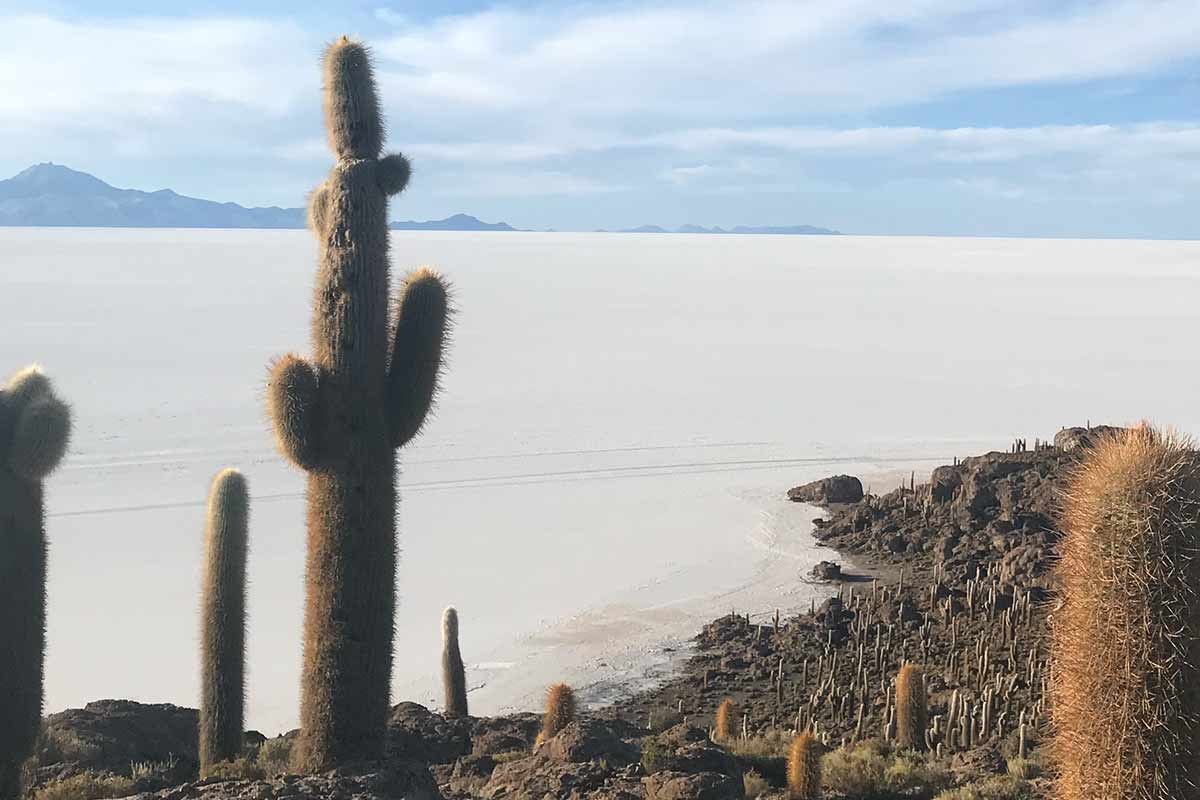
Those who want to see the massive white mass will want to visit in either May, September or October when temperatures are not so nail-bitingly freezing.
If you want to see the perfect sky reflection, then you’ll want to visit between November and February .
Are the Uyuni Salt Flats worth visiting?
Quick Answer: Yes! An absolute must in any backpacking trip through Bolivia (or South America in general), the Uyuni Salt Flats offer a truly surreal landscape to travelers that make it down here.
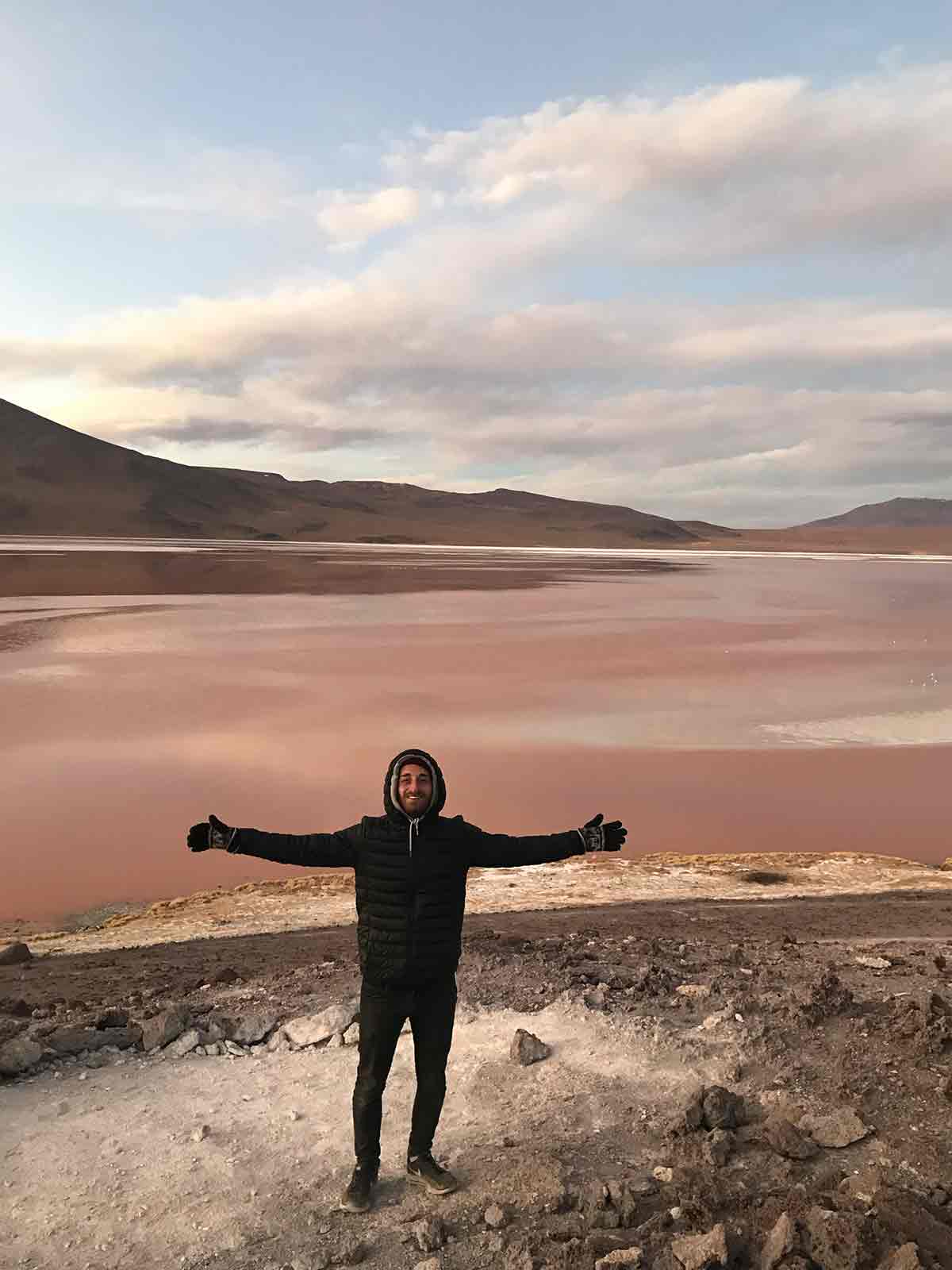
During the dry season you can whizz around the Salt Flats in a 4×4, get those infamous forced perspective shots and even visit the cacti-ridden island of Incahuasi.
During the wet season, you’ll think you’re in heaven as the tiny layer of water on the flats will perfectly reflect the sky on the land in all directions.
It’s not just about the Salt Flats, though. On This 3 Day Tour you can also visit some other incredible landscapes. I (George) have done this which I highly recommend for those who love both crazy landscapes and wildlife.
The lagoons are a highlight, and here you’ll visit both a bright green and blood red lagoon, along with many Pink Flamingos resting on the shores which you can get up and close with.
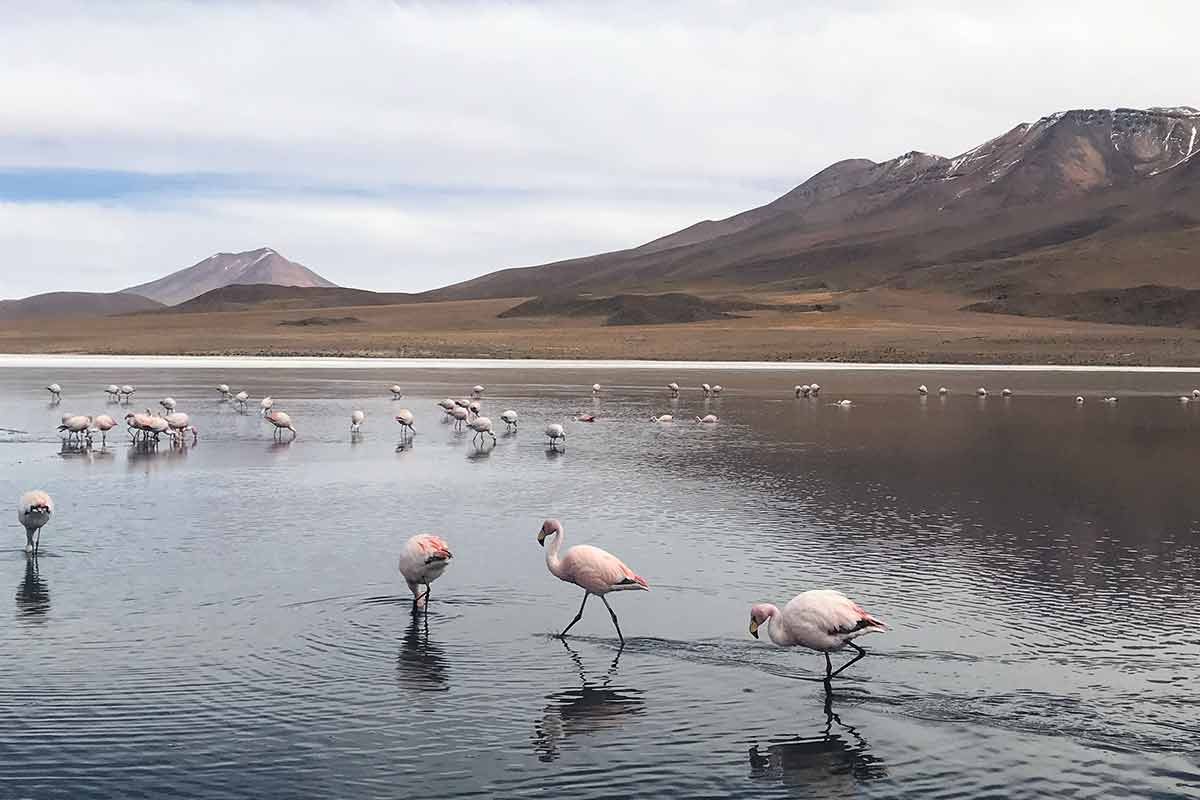
You’ll also get to see the hot, steaming geysers of Sol de Mañana, with the early morning visit met with an incredible sunrise. Other highlights include towering extinct volcanoes , vast deserts and many curious animals along the way (such as Vicuña, Viscacha (Desert Rabbits) and Alpaca.
What is the best month to visit Bolivia’s Salt Flats?
Different months are ideal for different travelers – both for the weather and the experiences you’ll have.
Those who want to see the giant white flats will want to visit between May and October (the Dry Season). Rainfall is virtually nonexistent during these times, which makes access around the region easy.
Temperatures are coldest this time of year, and keep in mind that they can get really cold between June and July (averages of 37°F, highs of 66°F and nighttime lows of down to 26°F).
Despite feeling seemingly cold during the day, you’ll still need to apply sunscreen since it’s really easy to burn at these higher altitudes. The overall best month to visit during the dry season is October .
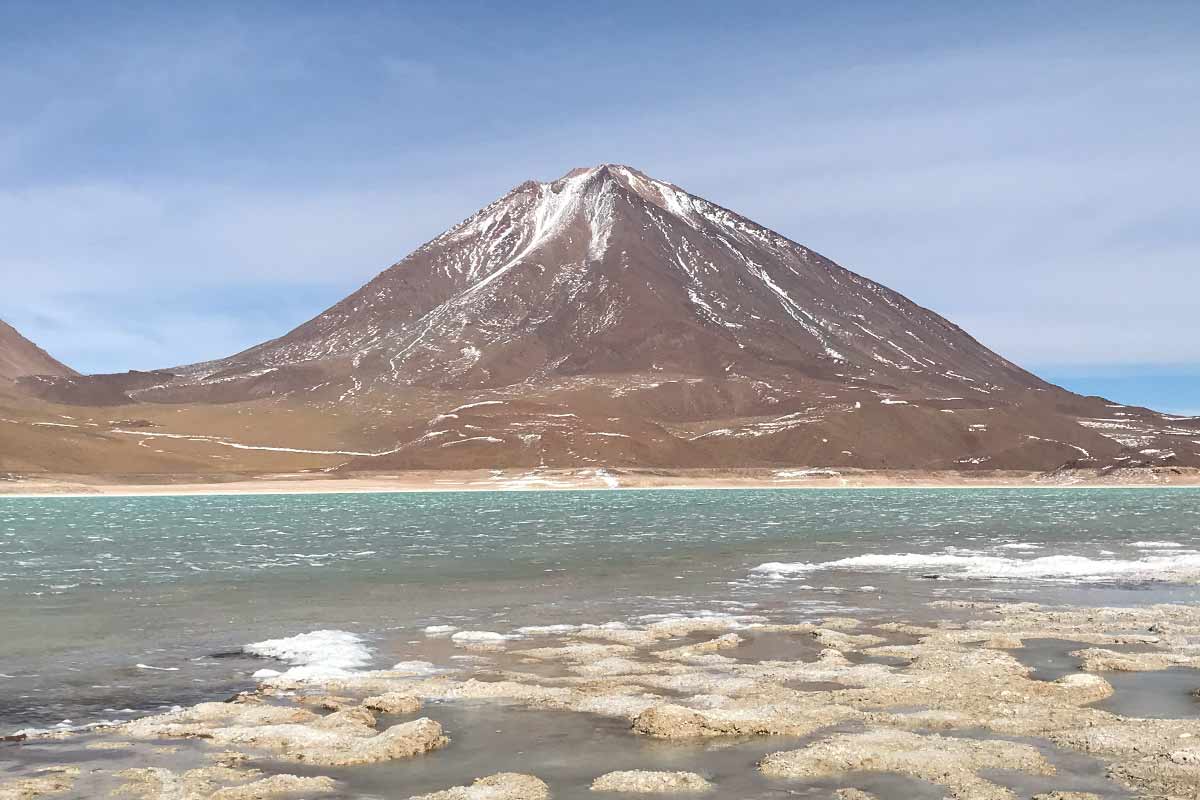
If you want to see the dramatic “heaven on earth” landscapes, then you’ll want to visit between November and April (the Wet Season). There will be some rainfall in the region which makes this phenomenon possible, with a maximum of 2 inches in any month.
It’s important to note that the heavier rains can make driving difficult and pose logistical issues.
The benefit of visiting during this time of year is that temperatures will be much warmer. Average daily temperatures range from 52-54°F, with highs of 69°F and lows of 36°F.
The overall best month to visit during the wet season is January (which is both the warmest and wettest – and also the best for seeing the otherworldly mirror phenomenon).
How many days do you need in Bolivia’s Salt Flats?
From our experience, we recommend travelers to spend around 2/3 days in the Uyuni Salt Flats . There’s multi-day tours for each option, and you’ll get to see many more incredible landscapes than if you just went on the usual day tour.
It’s important to note that you can’t drive around this region by yourself, and it’s mandatory to go with a tour. Not only are distances pretty big (you can take advantage by napping as a passenger), the terrains also require both a large 4×4 and expert driver to properly navigate.
If you’re adding the Salt Flats to a longer backpacking trip through Bolivia, then you can check out our Bolivia Itinerary for a better idea on how to plan a trip through this breathtaking country.
Got travel insurance for the Uyuni Salt Flats?

Top Things to do in Bolivia’s Salt Flats
Let’s now explore 5 of the very best things you can see and do when in the Uyuni Salt Flats (and surrounding region).
Get some incredible Salt Flat Photo Shots
The best thing about heading to the Uyuni Salt Flats is that regardless of when you’re visiting, you can take some truly incredible photos.
During the dry season you’ll have a massive blank white canvas to play with, which is perfect for a forced perspective shot (you can make objects or people much larger or smaller than other things in the shot).
When I (George) went, this meant a whole range of opportunities, and really the sky’s the limit. The car-chasing-down-people snap was a fun one to do, and you can also use other props to make your own fun experiments. The tour guides usually bring their own you can use, which is part of the package when heading on this Day Trip to the Salt Flats .
The wet season also brings its very own advantages too. Here you’ll be surrounded by a perfect reflection of the sky on the salt flats , which make for a really impressive mirror shot.
Whilst anytime of the day is great, the evening sky with its orange and red hues is something that you’ll never forget.
Visit various Stunning Lagoons
One of the main highlights of heading on a Multi-Day Uyuni Tour is the fact that you’ll head further into the remote region – which is where various colorful lagoons are waiting for you.
Hedionda Lagoon is the first you’ll visit, which is a sky-blue lagoon with an incredible backdrop of snow-capped peaks. The best thing of all is that crowds of Pink Flamingos strut around its shores, and you can get quite close too for a scenic wildlife shot.
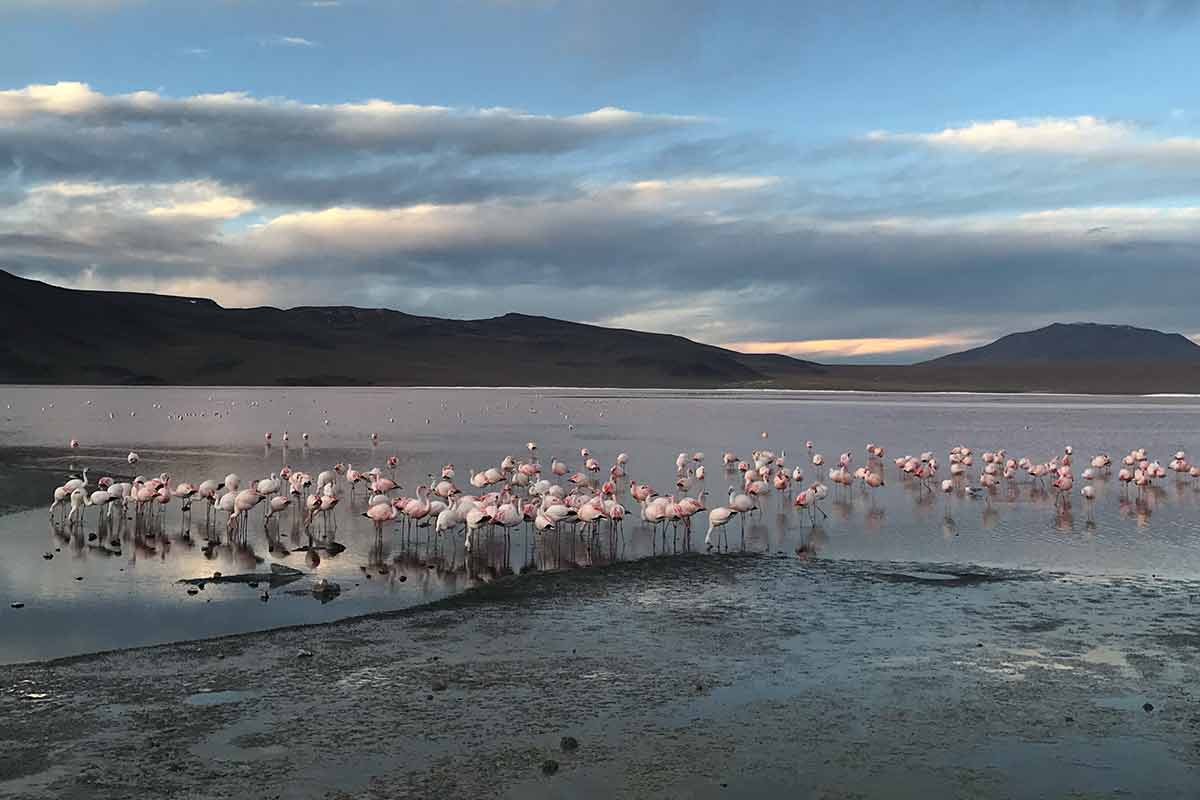
Another you’ll visit is Laguna Colorada, which has a deep red hue and well… is memorable for that reason alone! Along the banks of the mirador you’ll also see many friendly Alpacas and Llamas which are perfect for that selfie shot.
Laguna Verde is the final of these three incredible lagoons, which has a bright green color. It’s located way south near the border with Chile , with the impressive 6000 ft Licancabur Volcano setting the backdrop.
Explore Incahuasi Island
This island has plenty of history, and also some memorable landscapes too. If visiting during the dry season then you’ll easily be able to reach this unorthodox island.
It’s filled corner-to-corner with rows of cacti , with some reaching as high as 40ft! It’s pretty small, and you can walk around the rocky paths within an hour.
However, given the once-in-a-lifetime photo opportunities, it’s worth taking your time to find all kinds of incredible angles (or just to sit on top of the mirador enjoying the views of these cacti with a solid white backdrop).
Even if you are visiting Uyuni during the wet season, you can still see it from a distance which is still pretty awesome.
It’s thought that Incahuasi was an ancient site that was once settled by the Inca, and here you can see some remains of what looks like a small town that was built on the top. If you want to see larger ancient ruins, then be sure to visit Tiwanaku which is close to La Paz .
Marvel at all kinds of Rocky Formations
Whilst it’s easy to only get your hopes up for the more extraordinary sites (like the Salt Flats and Colorful Lagoons), on the longer tours you’ll also get to see some pretty beautiful and bizarre rocky landscapes too.
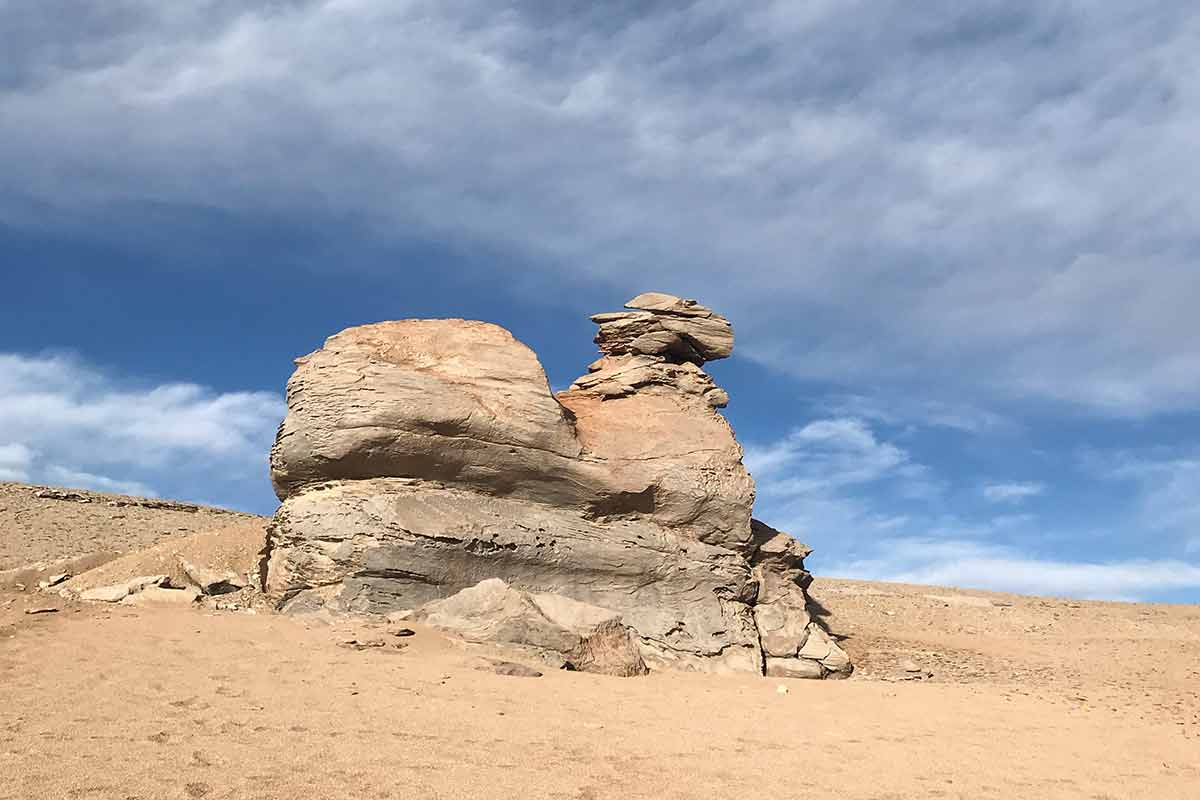
The most famous of all is the Piedra de Árbol (Tree of Rock) which is located in the middle of a desert. The surrounding area also has many kinds of eccentric shapes that look like human faces, mushrooms and even animals too.
Another worthwhile visit is the Bosque de Piedra, which is actually the last destination you’ll visit on your way back to Uyuni.
Here you’ll literally be in a rock labyrinth, with all kinds of unorthodox shapes and towering formations to discover. Be sure to stay close to your guide since it can be easy to get lost here.
As well as these two, be sure to keep your eye out and ask your driver to stop if you see anything interesting. You can sometimes find wild animals too such as Viscacha and Vicuña hanging out in the shade of these rocks too.
Get up and close with the Fiery Geysers of Sol de Mañana
One of my personal highlights (George) has to be the Sol de Mañana Geysers.
Located much further south towards Chile, this area has high tectonic activity which has led to various bubbling pools and steam shots penetrating the rocky surface.
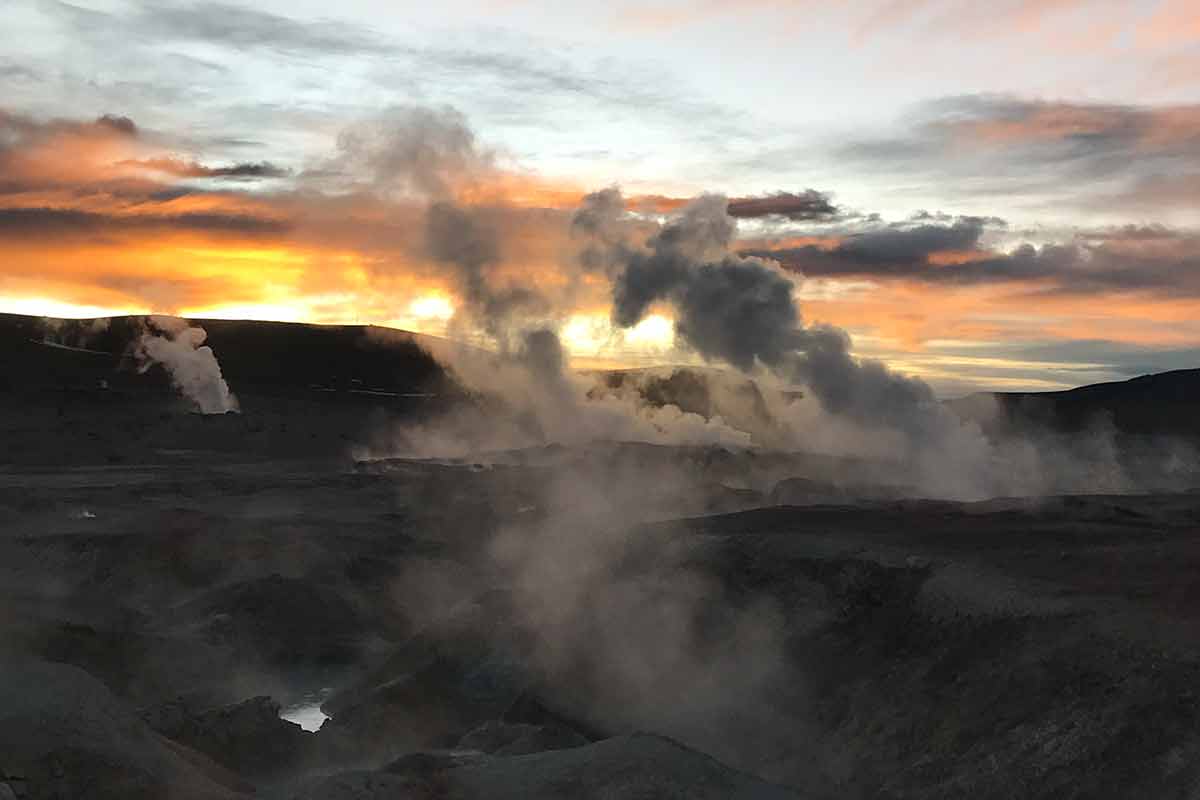
Whilst most travelers prefer visiting the more popular El Tatio Geysers near San Pedro de Atacama , this remote site is actually more impressive given it’s located closer to the volcanic heat source.
As a result temperatures can reach as high as 500°F (260°C), so you’ll need to be careful when walking the path and follow exactly where your local guide walks.
The most memorable part of a visit here is that, during the 3 Day Tour , you’ll head here around 4 or 5 in the morning. This means you’ll get to have an incredible sunrise in the background of these ever-burning geysers.
Salar de Uyuni FAQ’s
What is special about salar de uyuni.
This area is one of the most unique in all of South America. I mean how often can you see a bright white floor in all directions as far as the eye can see?! Not only that, but it also drastically transforms during the wet season too where you’ll feel like you’re walking on the clouds.
How to get to Bolivia’s Salt Flats?
You’ll first need to head to the town of Uyuni, which is a 9 hour bus ride from the capital of La Paz, or 8 hours from Sucre. Once here you can head on day tours to the salt flats, which includes all transport, a lunch and also time on Incahuasi Island. Also note that you can visit the flats with tours leaving from Tupiza further south.
How much does it cost to go to the Bolivia salt flats?
At this time of writing, Day Tours from Uyuni begin around $60 (although you can find them cheaper if heading to Uyuni on the day and looking around local companies). This Ultimate 3 Day Tour where you’ll visit literally everything in this region costs roughly $360, which includes all accommodation, food and transport. If you’re heading on a tour that drops you off in San Pedro (Chile) at the end, then you can expect to spend $400+ for the 4 day adventure.
Can you swim in Bolivia salt flats?
Thanks for reading this guide on the best time to visit Bolivia’s Salt Flats.
This epic destination is perfect for adventure seekers. Mostly known for its giant white mass, there’s also many other secrets to explore here.
From traversing its scorching deserts to chilling with Pink Flamingos on a red lagoon , you may even find the lesser-known gems to be more memorable than the Salt Flats themselves.
In this guide we’ve covered the best time to visit Bolivia’s Salt Flats, as well as our own personal recommendations for you to get the most out of a trip here. At the end we’ve also answered your most burning questions in our FAQ section.
Be sure to read our Bolivia Itinerary for more ideas on how to plan your trip in this impressive South American country.
👉🏽 P.S. If you’ve found this guide helpful, buy us a coffee here to say thanks! Or, support us by downloading our South America Travel Bible to get our best content.
“ Dear traveler! Some links in this post contain affiliate links. Meaning, if you click through and make a purchase, book a hostel or sign up for a tour, we may earn a small commission at no additional cost to you . Your support means a lot and helps us to carry on traveling and maintaining the quality of this site for you.”
Similar Posts
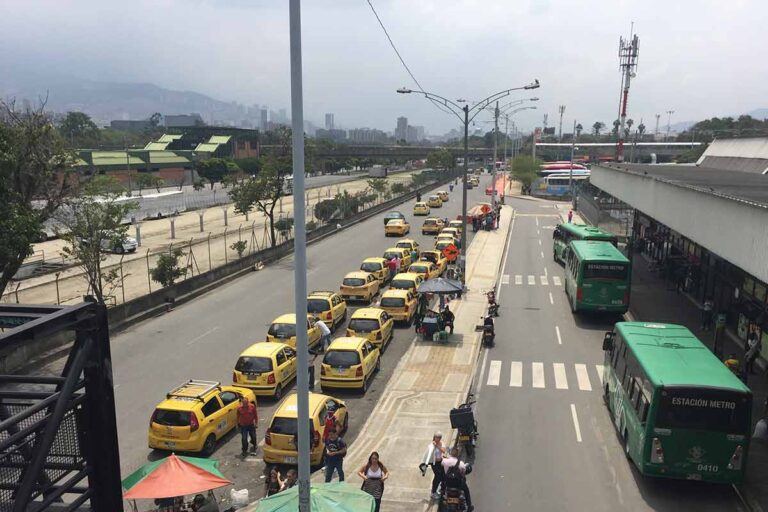
Is Medellín Safe?
Welcome to our Medellín safety guide. As one of the most popular cities to visit in Colombia, it is here we can have all kinds of awesome experiences. This includes visiting the infamous barrio of Comuna 13, which is an interesting way to learn about a different side of reality in the city of Medellín….
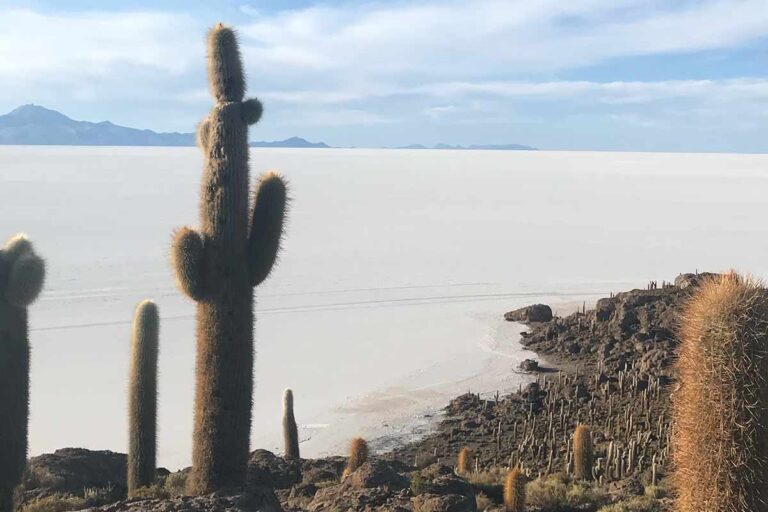
Best time to visit Bolivia 2024
Whilst starting to become more popular with tourists, Bolivia remains an off the beaten path country to visit in South America. And that’s exactly why you should visit now rather than later. From tasty unknown foods to breathtaking natural sceneries, in Bolivia we can experience all of these hidden gems. In this guide we’ll explore…
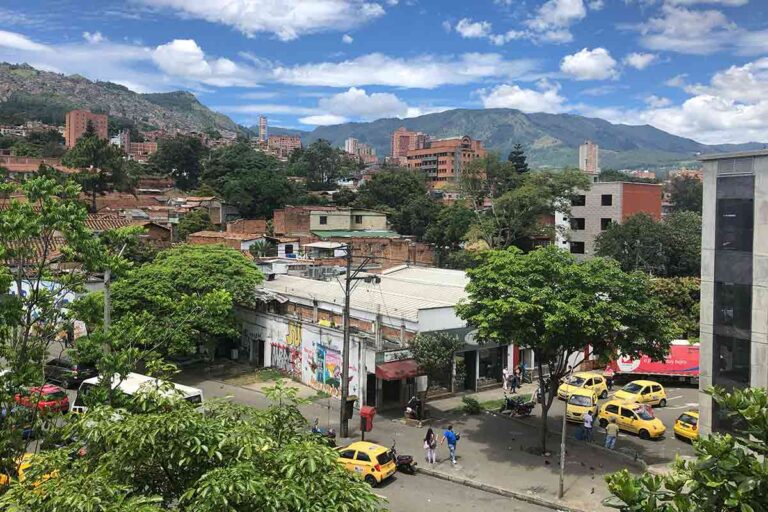
Is Medellin worth visiting?
Is Medellin worth visiting? As one of the most popular cities you can visit in Colombia, Medellin has pretty much everything going for it. From its lively plazas and upscale districts to day trips to both incredible (and bizarre) attractions, many travelers find themselves coming back to Medellin more than once! In this article we’ll…
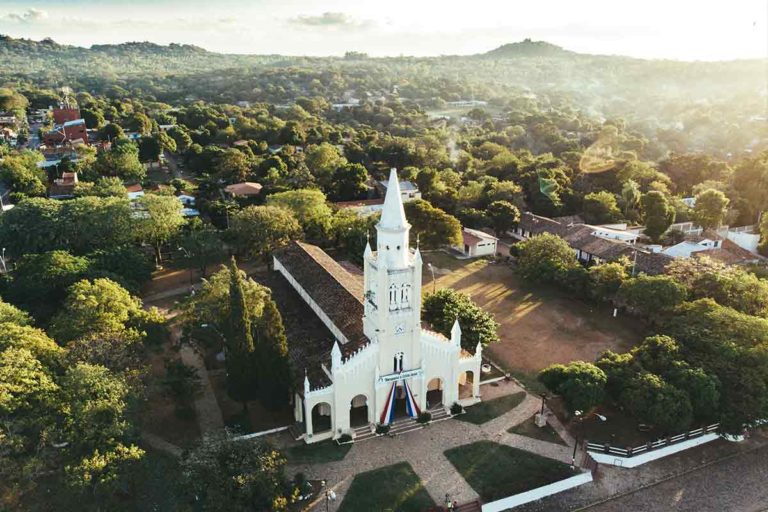
Backpacking Paraguay Itinerary
Welcome to this backpacking Paraguay itinerary. It’s difficult to sum up Paraguay effectively but it’s a lovely landlocked country that offers waterfalls, remote areas worth exploring, and exciting history. If you are already in South America and want to visit this beautiful country, this Paraguay travel itinerary will help you to organize a trip here!…
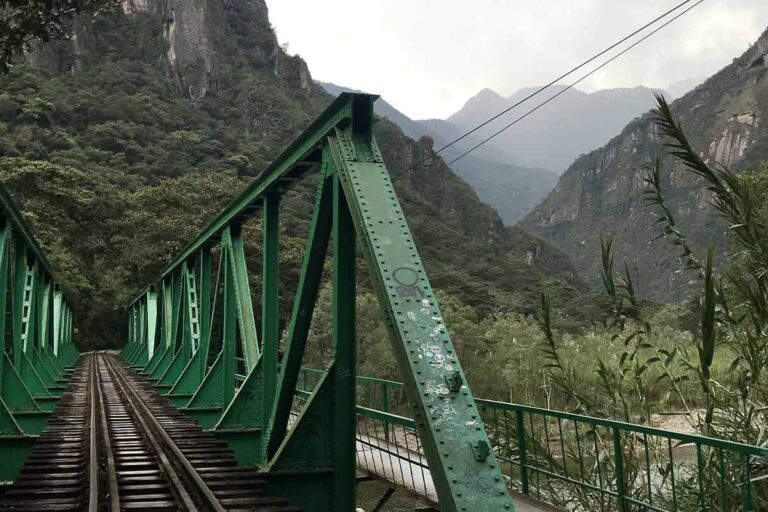
Is Machu Picchu safe?
Welcome to our Machu Picchu safety guide. This legendary ancient site is simply a must-visit when in Peru, and is a perfect way of kicking off a longer trip around South America. Not only is Machu Picchu an incredible site to behold with an ever-present mist and mountainous backdrop, however it’s also a good intro…
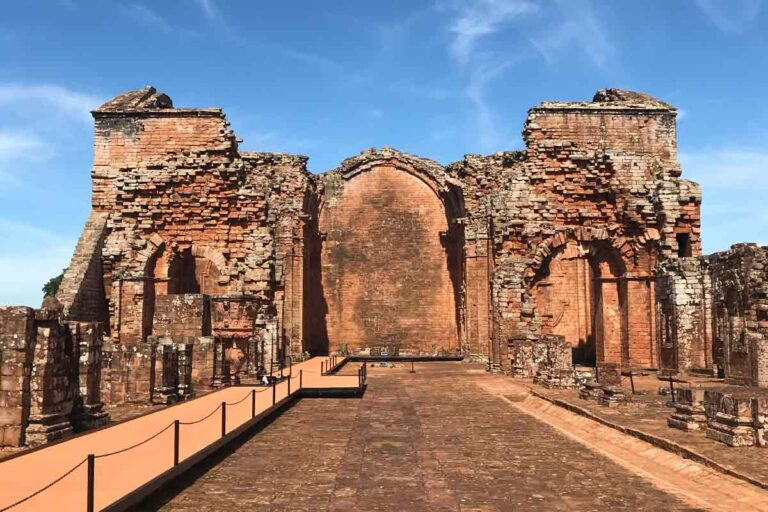
Is Paraguay Worth Visiting?
Paraguay continues to be one of the most mysterious and rarely visited countries in South America. Along with Venezuela, Guyana, French Guinea and Suriname, Paraguay seems to be on the “it’s alright to skip” list, despite the land-locked nation being more or less along the classic backpacking route. Is Paraguay worth visiting? Below, I’m going…
National Geographic content straight to your inbox—sign up for our popular newsletters here

A thin layer of water transforms Bolivia's Salar de Uyuni into a striking reflective canvas.
These Salt Flats Are One of the Most Remarkable Vistas on Earth
Bolivia's Salar de Uyuni can make for an incredible experience or a logistical nightmare. Plan your trip with these tips.
Bolivia ’s Salar de Uyuni is considered one of the most extreme and remarkable vistas in all of South America, if not Earth. Stretching more than 4,050 square miles of the Altiplano, it is the world’s largest salt flat, left behind by prehistoric lakes evaporated long ago. Here, a thick crust of salt extends to the horizon, covered by quilted, polygonal patterns of salt rising from the ground.
At certain times of the year, nearby lakes overflow and a thin layer of water transforms the flats into a stunning reflection of the sky. This beautiful and otherworldly terrain serves as a lucrative extraction site for salt and lithium—the element responsible for powering laptops, smart phones, and electric cars. In addition to local workers who harvest these minerals, the landscape is home to the world's first salt hotel and populated by road-tripping tourists. The harsh beauty and desolateness of Salar de Uyuni can make for an incredible experience or a logistical nightmare. Here’s a guide to help:
HOW TO GET THERE
Located at the crux of Bolivia, Chile , and Argentina , the logistics and length of your trip to Salar de Uyuni will depend where you’re coming from. Tours originate from three main places:
Uyuni, Bolivia : The most popular jumping-off point for salt flats tours, Uyuni is a small, dusty town packed with tourism agencies in Plaza Arce, its main square. Travelers can book tours in advance online, through tour offices in La Paz, or they can simply arrive in Uyuni and peruse the options in town. Since Uyuni is so close to the salt flats, tourists can easily book day trips. Flights from La Paz to Uyuni can be booked through Amaszonas and BoA (one hour, about $130 round-trip). Overnight buses from La Paz are available with Trans Omar and Todo Turismo (10-12 hours, $30 to $40 each way).
San Pedro de Atacama, Chile : Agencies drive travelers to the border before handing the tour over to a Bolivian operator. Due to the distance, this is a three-day tour.
Tupiza, Bolivia: This is the best starting point for travelers coming from Argentina. Tour operators recommend four-day tours from Tupiza, visiting Salar de Uyuni on the final day.

The star-studded night sky casts the salt flats shades of blue. During the dry season the ground hardens and polygonal patterns of salt rise from the ground.
Salar de Uyuni has two distinct seasons. The rainy season (December to April) is when visitors come to witness the Salar’s breathtaking mirror effect. Be wary of excessive rain in December and January, as it can cause tour cancelations. During the dry season (May to November) temperatures are colder, the ground has hardened, and travelers can drive across the stark white landscape to places that aren’t accessible in the rainy season. Tour operators consider June through August their high period, and rates may rise accordingly.
CHOOSING A TOUR
While the salt flats are one of Bolivia’s most popular attractions, it’s only a small part of the gorgeous Altiplano region. Many visitors indulge in a three-day tour (or longer) that includes the deserts, volcanos, geysers, hot springs, and high-altitude lakes to the south. Tours out of San Pedro de Atacama and Tupiza are already scheduled to drive through these sites.
Travelers can choose between a shared tour (cheaper and standardized) or private tour (higher-priced and custom-tailored). Shared tours generally provide Spanish-speaking guides who double as the driver and chef. These follow a rigid itinerary that will not likely accommodate individual requests and can hinder certain times of day, like sunrise or sunset. Private tours, by contrast, can be customized to a client’s liking, giving travelers more control over itinerary and the ability to go off the beaten path to volcanos or caves. Private tours also provide an English-speaking guide, chef, and a more comfortable vehicle.
Check online reviews and travel guides to carefully choose a reputable guide. Avoid companies that offer rock bottom prices—they may not provide an accredited guide or working car, which can endanger tourists. Also ask your agency whether they carry an emergency radio and first-aid kit.
HOW TO TAKE GREAT PHOTOS
One of the highlights of Salar de Uyuni is an endless horizon that allows photographers to play with perspective and depth of field. Stage battle scenes with toy dinosaurs, cook your friends in pots and pans, or crawl out of seemingly giant jars of peanut butter. The key to great photos is to get the camera low to the ground and close to your prop. This gives the perspective that the prop is larger than the human subjects, who stand farther away. Don’t let your subjects venture too far, though—the larger the distance between the prop and the subjects, the harder it will be to keep everything in focus. If your camera permits, make the aperture as narrow as possible.

Salar de Uyuni's seemingly endless horizon allows photographers to play with perspective and depth of field.
- Nat Geo Expeditions
ODDS AND ENDS
At nearly 12,000 feet above sea level, visitors may experience altitude sickness if they haven’t properly acclimatized. Symptoms include nausea, headaches, and insomnia among others. Discuss various options for preventing and treating altitude sickness with your doctor before your trip.
Bolivia requires a tourist visa ($160 for U.S. citizens) as well as a Yellow Fever Vaccination Certificate to enter the country.
Liz Unger is a National Geographic Young Explorer, photojournalist, and filmmaker from New York. Follow her on Twitter @ewu5191 and Instagram @ewu5191 , and explore her work at www.lizunger.com .
Related Topics
You may also like.

The ultimate Andes road trip, from Chile to Bolivia

Maasai Mara & beyond: 5 must-see safari parks in Kenya
For hungry minds.

Fun tastings, fancy tours: how Scottish whisky experiences are evolving

Want to see great white sharks? Consider Cape Cod.

10 best things to do in Switzerland

Free roam safari: a self-guided campervanning trip through South Africa & Eswatini

Some U.S. national parks are trying to go carbon-free. What does that mean for visitors?
- Environment
- Perpetual Planet
History & Culture
- History & Culture
- History Magazine
- Gory Details
- Mind, Body, Wonder
- Paid Content
- Terms of Use
- Privacy Policy
- Your US State Privacy Rights
- Children's Online Privacy Policy
- Interest-Based Ads
- About Nielsen Measurement
- Do Not Sell or Share My Personal Information
- Nat Geo Home
- Attend a Live Event
- Book a Trip
- Inspire Your Kids
- Shop Nat Geo
- Visit the D.C. Museum
- Learn About Our Impact
- Support Our Mission
- Advertise With Us
- Customer Service
- Renew Subscription
- Manage Your Subscription
- Work at Nat Geo
- Sign Up for Our Newsletters
- Contribute to Protect the Planet
Copyright © 1996-2015 National Geographic Society Copyright © 2015-2024 National Geographic Partners, LLC. All rights reserved
Travel Articles
When is the best time to visit the Uyuni Salt Flats?
Go to the accelerated mobile version
2020-03-05 Updated: 2020-03-05
Late April is the perfect time to visit Uyuni, as you can expect to see both the dry salt desert and the giant mirror effect. It is not as cold as in winter and rainfall is limited. The smaller number of tourists also means that you can get better deals for hotels and tours.

Salar de Uyuni, best time to go
Honestly, there is no good or bad time to visit the salt flats, it is simply a question of what you are looking for. Here are some tips to help you decide when to visit the Salar de Uyuni:
If you want the best climate, visit between September and November.
If you want to see the wet salt flats, visit between December and April.
Other than that, any time is good to visit the Salar de Uyuni. Each season offers a unique perspective and features.
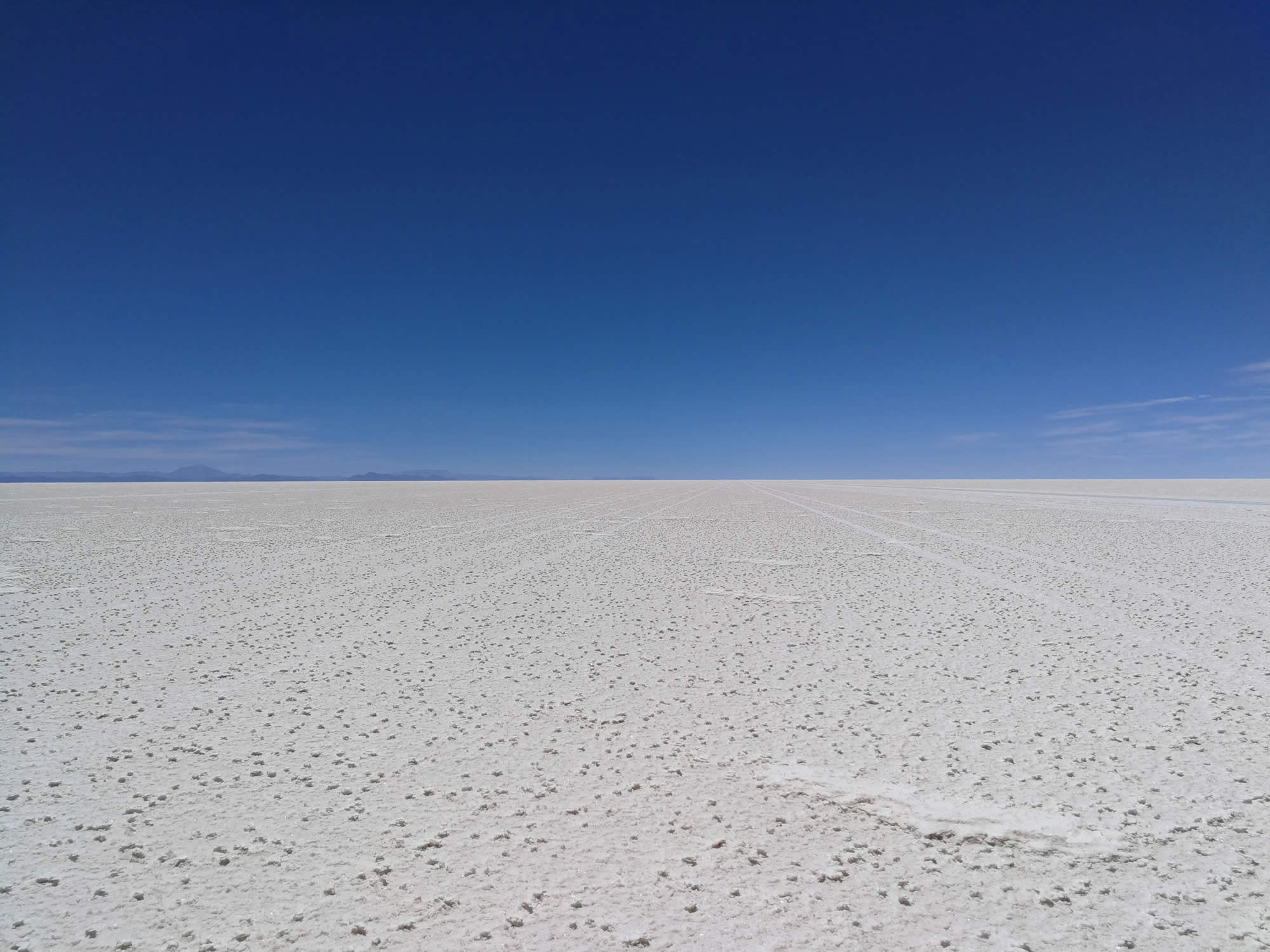
The Uyuni salt flat in the dry season (April - November)

Water covering the salar in the wet season (December - March)
December - January - February: The Great Mirror
As this giant desert of salt is covered by water during the rainy season, it reflects light creating almost impossible optical illusions. This time of the year is highly popular with tourists for visiting Uyuni.
It tends to rain the most in February, but this can be quite unpredictable. Also, be aware that too much rain will melt the salt and make large parts of the salt flat unaccessible for tours.
During and after New Year's Eve some tours don't leave. Be sure to check in advance if you plan to travel during these dates.
When can I see the mirror effect?
In summer, between January and March. Generous rains fall on the bolivian highlands, turning the Uyuni Salt Flats into something similar to a giant lake a few centimeters deep. In some years, depending on precipitation, you can still see this effect in the beginning of April.
Does the water cause difficulties for the travellers?
Depending on the amount of water that accumulates, access to Incahuasi and Fish islands can become restricted for safety reasons. During the rainy season the tours are often limited because the melted salt is dangerous to traverse.
Why the flooding?
Several rivers deposit their sediments in the Uyuni Salt Flats and the water accumulates on the nearly waterproof salty surface.
Another less-known attraction is the large number (around 25000) of flamingos that gather at the Red Lagoon in the Eduardo Avaroa Reserve during the rainy seeason for mating.
March - April - May
There are far fewer tourists during these months, so you can get better deals from tour operators. The weather is still warmer and with a good guide you can find some places with water to see the mirror effect.
June - July - August: Cold, dry, white
Winter. Dress warm. Take extra blankets. The Salt Flat is a huge white beach-like desert during this time. It almost never rains, but can get bitterly cold.
September - October - November
These months are less cold, still dry with occasional rains.
In general, you can expect sunny warm weather during the daytime, and freezing, bone chillingly cold winds at night. The air temperature during the day is usually at around 21°C between November and January and doesn't often get any lower than 13°C in June. This means you can't really feel how strong the sun actually is, and you can get a sunburn in minutes without sunscreen.
The best time for stargazing is either during the winter months when the sky is crystal clear or on a lucky night during the rainy season when you get the chance to see the starry sky reflected in the still, mirror-like surface of the Salar. Don't forget to check the moon cycle for the best experience!
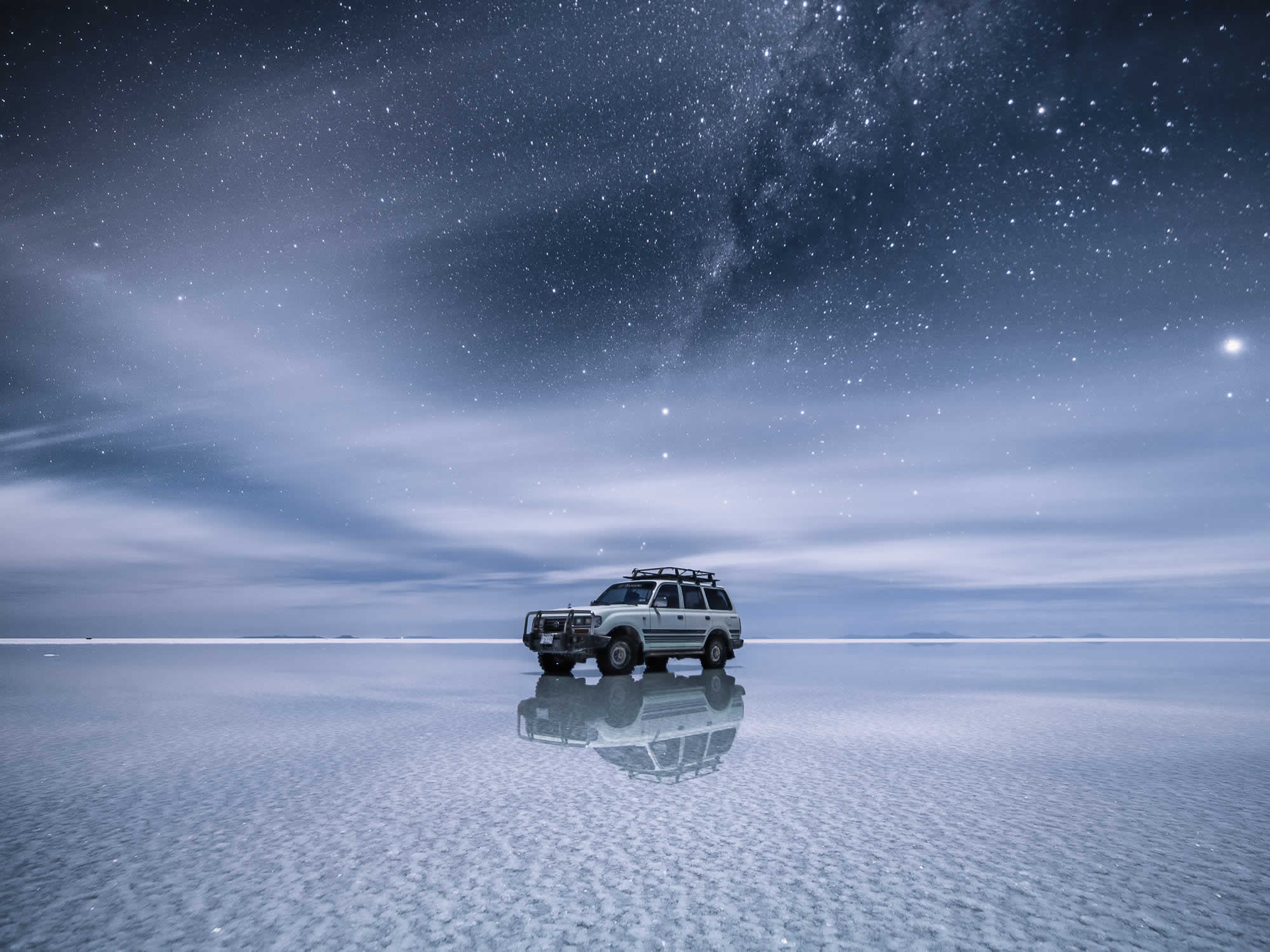
Stargazing during the wet season
Recent reviews of this article
Rating: 5.0
Add a review:
San Pedro de Atacama - Eduardo Avaroa National Park - San Pedro de Atacama Day Tour
Private tour San Pedro de Atacama - Eduardo Avaroa National Park - Uyuni Salt Flat
Uyuni Salt Flat and Thunupa Volcano Private Tour
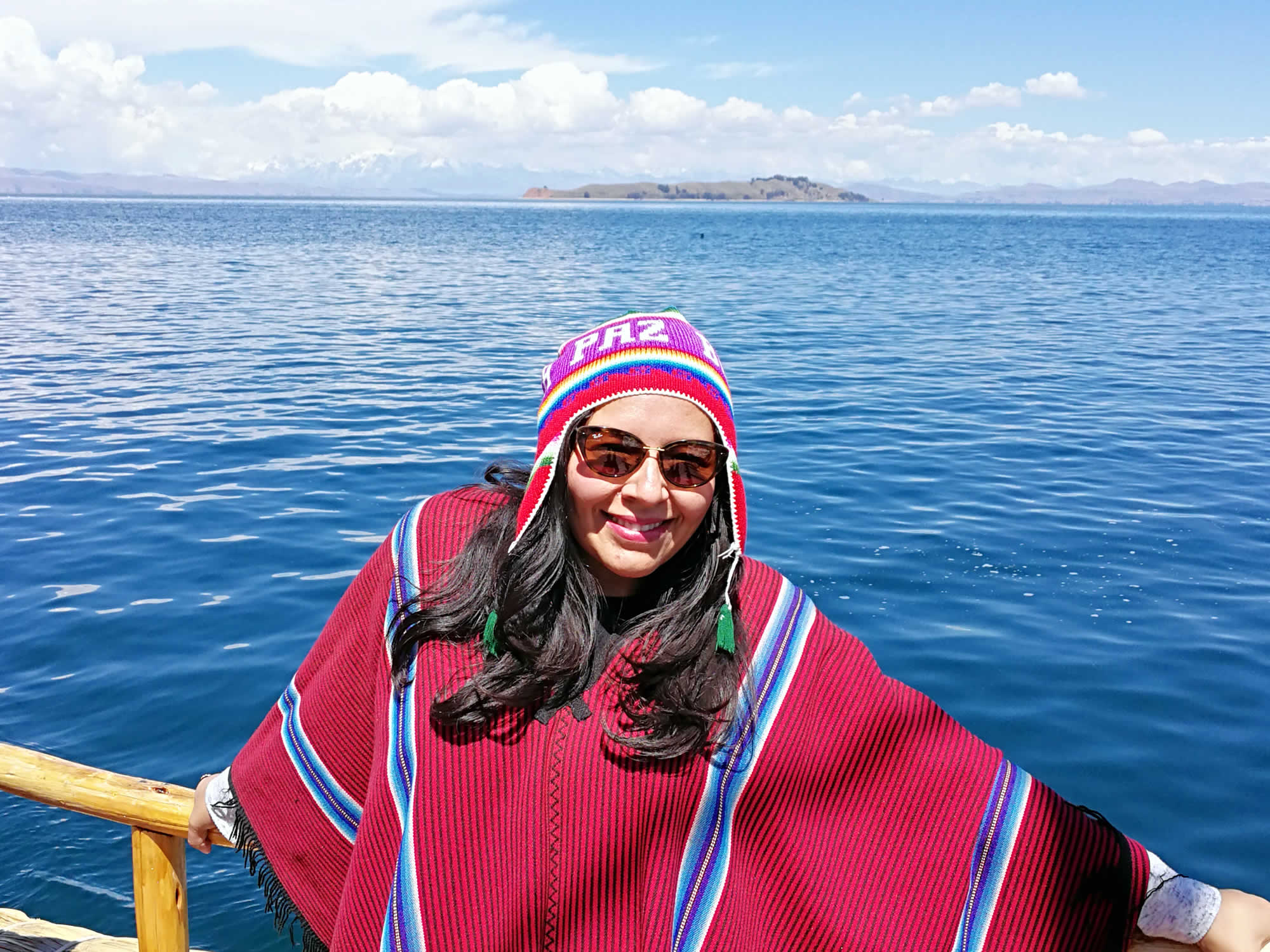
Bolivia Travel Expert
Related travel articles:.
How to get to Uyuni and when to go
The Great Salt Flat of Uyuni and its Surroundings
How to choose your tour in Uyuni?
Advantages of booking your Uyuni Shared Tour with us
All you need to know about the Salar de Uyuni
Follow us on
Bolivia travel information.
- Where to go ?
- Lake Titicaca
- What to do?
- How to get there?
- Bolivia travel articles
MOST WANTED
Contact vivian, our chief bolivia travel expert.
Send us some details so we can start creating your tailor-made trip. Or if you would like to speak to us directly, call us via Skype or Whatsapp.
- Departure date: Number of Participants:
- Tour Length (days): Type of Accomodation: Premium Basic
- Country: Afghanistan Albania Algeria American Samoa Andorra Angola Anguilla Antarctica Antigua and Barbuda Argentina Armenia Aruba Ashmore/Cartier Islands Australia Austria Azerbaijan Bahamas Bahrain Baker Island Bangladesh Barbados Bassas da India Belarus Belgium Belize Benin Bermuda Bhutan Bolivia Bosnia and Herzegovina Botswana Bouvet Island Brazil British Indian Ocean Territory British Virgin Islands Brunei Bulgaria Burkina Faso Myanmar Burundi Cambodia Cameroon Canada Cape Verde Cayman Islands Central African Republic Chad Chile China Christmas Island Clipperton Island Cocos (Keeling) Islands Colombia Comoros Democratic Republic of the Congo Congo, Republic of the Cook Islands Coral Sea Islands Costa Rica Cote d\'Ivoire Croatia Cuba Cyprus Czech Republic Denmark Djibouti Dominica Dominican Republic East Timor Ecuador Egypt El Salvador Equatorial Guinea Eritrea Estonia Ethiopia Europa Island Falkland Islands (Islas Malvinas) Faroe Islands Fiji Finland France French Guiana French Polynesia French Southern and Antarctic Lands Gabon Gambia Gaza Strip Georgia Germany Ghana Gibraltar Glorioso Islands Greece Greenland Grenada Guadeloupe Guam Guatemala Guernsey Guinea Guinea-Bissau Guyana Haiti Heard Island and McDonald Islands Holy See (Vatican City) Honduras Hong Kong Howland Island Hungary Iceland India Indonesia Iran Iraq Ireland Israel Italy Jamaica Jan Mayen Japan Jarvis Island Jersey Johnston Atoll Jordan Juan de Nova Island Kazakhstan Kenya Kingman Reef Kiribati North Korea South Korea Kuwait Kyrgyzstan Laos Latvia Lebanon Lesotho Liberia Libya Liechtenstein Lithuania Luxembourg Macau Macedonia Madagascar Malawi Malaysia Maldives Mali Malta Man, Isle of Marshall Islands Martinique Mauritania Mauritius Mayotte Mexico Micronesia Midway Islands Moldova Monaco Mongolia Montserrat Morocco Mozambique Namibia Nauru Navassa Island Nepal Netherlands Netherlands Antilles New Caledonia New Zealand Nicaragua Niger Nigeria Niue Norfolk Island Northern Mariana Islands Norway Oman Pakistan Palau Palmyra Atoll Panama Papua New Guinea Paracel Islands Paraguay Peru Philippines Pitcairn Islands Poland Portugal Puerto Rico Qatar Reunion Romania Russia Rwanda Saint Helena Saint Kitts and Nevis Saint Lucia Saint Pierre and Miquelon Saint Vincent and the Grenadines Samoa San Marino Sao Tome and Principe Saudi Arabia Senegal Serbia Seychelles Sierra Leone Singapore Slovakia Slovenia Solomon Islands Somalia South Africa South Georgia/South Sandwich Islands Spain Spratly Islands Sri Lanka Sudan Suriname Svalbard Swaziland Sweden Switzerland Syria Taiwan Tajikistan Tanzania Thailand Togo Tokelau Tonga Trinidad and Tobago Tromelin Island Tunisia Turkey Turkmenistan Turks and Caicos Islands Tuvalu Uganda Ukraine United Arab Emirates United Kingdom United States US Minor Outlying Islands Uruguay Uzbekistan Vanuatu Venezuela Vietnam Virgin Islands Wake Island Wallis and Futuna West Bank Western Sahara Yemen Zambia Zimbabwe Palestine Vatican City Montenegro
- *Please note that we are unable to respond to aol.com e-mail addresses due to restrictions by AOL's filters for Bolivia.
- Budget Estimate
- Send Inquiry
+591-68583553

Bolivia Salt Flats: The Ultimate Guide To Salar De Uyuni
One of my favorite trips I’ve ever taken was to the Salar de Uyuni, better known as the Bolivian Salt Flats . Located in southwestern Bolivia in the middle of the high plains, this natural wonder ( the largest salt flats in the world! ) is easily a bucket list destination for anyone who has ever seen a picture.
In this ultimate guide to Salar de Uyuni travel and the Uyuni Salt Flats, we’re covering everything you’ll need to know to plan for an incredible and unforgettable trip to this inspiring destination.
Don’t miss our recommendations for when to see the Salar de Uyuni reflection, known as the “World’s Largest Mirror” on the Bolivia Salt Flats.
Keep reading for everything you’ll need to know for your trip, including a complete guide to Uyuni town, including Salar de Uyuni hotels – like the famous Salt Hotel you can’t miss! – tour recommendations, and much more.
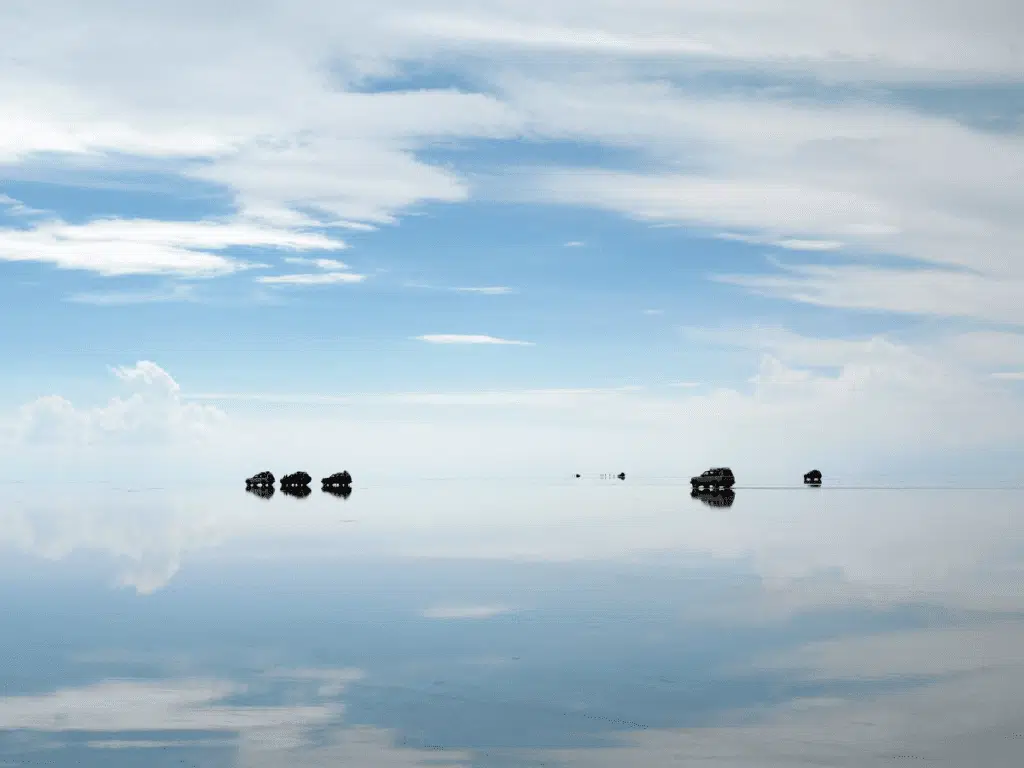
This post contains affiliate links that may reward me monetarily or otherwise when you use them to make qualifying purchases – at no cost to you. As an Amazon Associate, I earn from qualifying purchases. For more information, please read our disclosure policy .
Bolivian Salt Flats
Easily one of the most recognizable parts of Bolivia and one of the most unique and extreme landscapes on Earth, the Bolivian Salt Flats are well known for their beauty and mystery.
The Bolivian Salt Flats are the largest salt flats in the world and stretch on for miles and miles in every direction for nearly 4,050 square miles (nearly 10,500 square kilometers) .
These salt flats were created when an ancient salt lake dried up tens of thousands of years ago, leaving the salt behind . In some areas of the salt flats, the salt layer is several meters deep!
While there is SO MUCH to see in Bolivia ( it’s one of my favorite off-the-beaten-path travel destinations and one of the best countries in South America to visit ) the Uyuni Salt Flats is Bolivia’s number one destination for travelers.
There is so much to see and do here, even more than just visiting the Salt Flats themselves.
Most visitors spend a few days here exploring the Bolivia Salt Flats and the incredible surrounding countryside with a Jeep 4X4 tour – jump ahead to read more about our top Salar de Uyuni tour recommendations.
Find the Best Salar de Uyuni Tours
Check out our Ultimate Guide to Bolivia Salt Flats Tours for more information and recommendations for the best Salar de Uyuni tours.
In the drier months, you’ll see dry white salt crystals as far as the eye can see, but in the wetter months of the rainy season, waters pools on top of the salt flats .
Because the water doesn’t have anywhere to go, it will sit nearly perfectly still, creating a mirror effect with the sky above that looks like something out of a sci-fi movie .
No, truly, out of a sci-fi movie! There is a Salar de Uyuni Star Wars appearance in a Star Wars movie that was filmed here – jump ahead to read more about Star Wars on the Bolivia Salt Flats and other Salar de Uyuni facts.
Salar de Uyuni Reflection
The Bolivia Salt Flats are probably best known for their incredible reflective properties during the wet season. I’m sure you’ve seen the pictures – photos that look like the sky is perfectly mirrored on the ground, with a barely discernable horizon in the distance .
While a visit to the Salar de Uyuni is incredible at any time of the visit, visiting during the rainy season and seeing the Salar de Uyuni reflection, called the World’s Largest Mirror, is truly unforgettable.
When water pools on top of the Salt Flats after rain, it doesn’t easily have a way of escaping, meaning that it will sit quite still over the salt flats for a long time.
Looking at the ground from above, you’ll easily be able to see through the water to the salt below , but when looking toward the horizon, you’ll see this fantastic reflection.
When photographing the Uyuni Salt Flats reflection, shoot toward the horizon for the best effect . Shooting towards the sun and creating silhouettes of people in the morning and afternoon also do a great job of creating a nearly flawless reflection shot.
Best Hotels & Hostels in Uyuni
- Hotel Nido del Flamenco ($ – $$)
- Casa de Sal Salt Hotel ($$)
- Hotel Palacio de Sal ($$ – $$$)
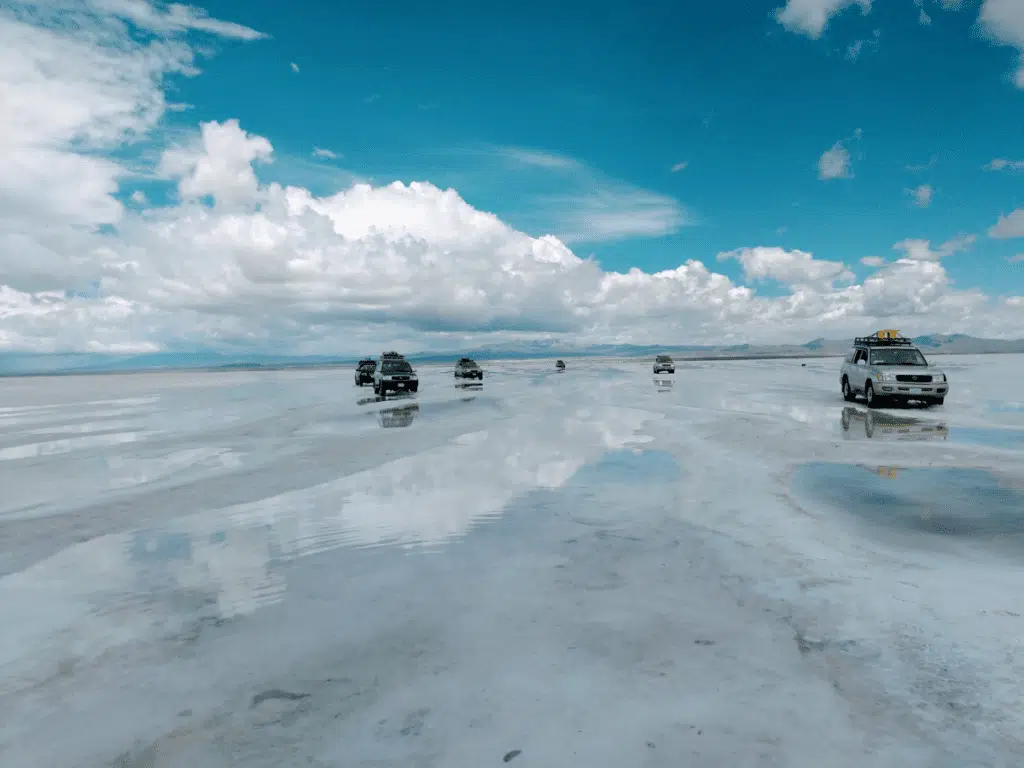
Remember, there are likely going to be areas of the Salt Flats that are more flooded than others during the rainy season, and your guide may have to travel a few kilometers to find a spot that can best show off the Salar de Uyuni reflection .
Because the reflection is dependent on the last rain, it’s never a guarantee to see it!
However, if you visit during the rainy season (December through April – with the best chance to see the reflection in January or February!) you’ll most likely see this effect on the Bolivia Salt Flats!
World’s Largest Mirror
The reflection of the sky at Salar de Uyuni during the rainy season is commonly referred to as the “World’s Largest Mirror” for the way it perfectly mirrors the sky.
The World’s Largest Mirror Salar de Uyuni reflection is actually so large during the rainy season that it can be seen from space! This is one of my favorite Salar de Uyuni facts!
Make sure when visiting that you have a chance to take tons of photos showing off the reflection – tour guides will know the best spots to take you on the Salt Flats for the best photography! Many tour participants also share that tour guides are generally helpful in directing how to take photos to maximize the effect – my guide was super helpful for photo ideas as well!
Salar de Uyuni Facts
Salar de uyuni appeared in star wars.
Salar de Uyuni appeared as a filming location in Star Wars: The Last Jedi, released in 2017. In this Star Wars franchise movie, Salar de Uyuni served as the backdrop for the planet Crait – with its flat, stark, white landscapes it makes a perfect backdrop for an alien planet!
Salar de Uyuni is the Flattest Place on Earth
The Bolivian Salt Flats at Uyuni is the flattest place on earth! The Bolivian Salt Flats are known for being extremely flat – one of the flattest places on earth.
There is almost no change in elevation when moving across them, due to the way they were created, with receding saltwater.
This extreme flatness combined with few points of reference – all you’ll see will be salt and sky at the horizon – leads to crazy optical illusions.
One fun part of any Bolivia Salt Flats tour is taking “fotos locos” as the local guides call them – “crazy photos” that demonstrate this insane loss of depth perspective. Guides will often bring things out on the salt flats to take these pictures with, or you can bring your own along with you or find some in town.
What to Pack for Salar de Uyuni
Check out our Ultimate Salar de Uyuni Packing List for our tried and tested packing list. Don’t repeat our mistakes on your Laguna Colorada and Salar de Uyuni adventure!
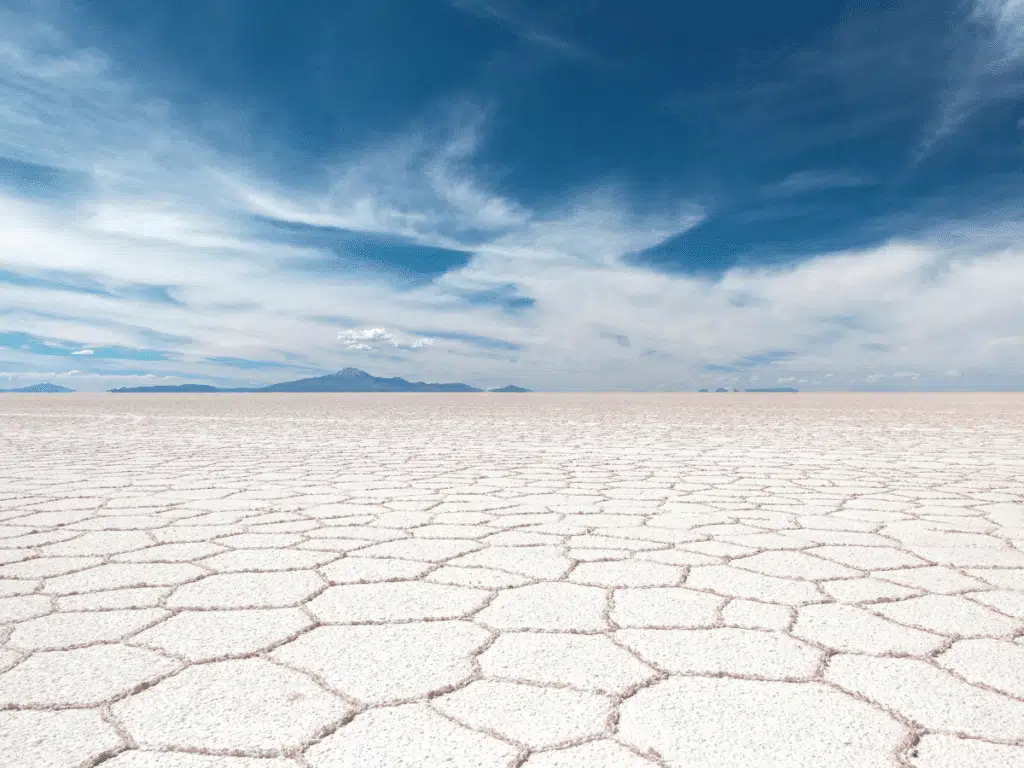
Salar de Uyuni’s Hotels are Famous
Salar de Uyuni is famous for the salt hotel – these are hotels built entirely out of blocks of salt carved from the Bolivian salt flats.
There are hotels at all price points in Uyuni and the surrounding communities built entirely from giant blocks of salt . Make sure to stay in one while you’re visiting – it is a once-in-a-lifetime experience, and definitely the best option for where to stay in Uyuni.
Uyuni has plenty of salt hotel options at all price points- check out these for an unforgettable stay:
- Hotel Casa de Sal – $$
- Hotel Sal Andina – $$
Often the Salar de Uyuni Jeep 4×4 tours will include a night in a salt hotel , but you’ll want to make sure to contact your tour company to verify this, as you don’t want to miss this unique accommodation experience!
What About the Uyuni Salt Flats Is So Special?
Salar de Uyuni, Bolivia is home to one of the world’s largest lithium deposits, found beneath the thick layer of salt. In a world increasingly reliant on lithium batteries and the countless other ways lithium powers us, Salar de Uyuni represents one of the world’s richest sources of this resource.
Geologists aren’t sure about the true size of the lithium deposits under the Salar de Uyuni, but this is thought to be one of the largest concentrated areas of lithium on Earth. Not much has yet been extracted, but Bolivia could become one of the world’s major lithium producers in the coming years.
Salar de Uyuni Map
I created this Salar de Uyuni map to help you get your bearings about what to see and where to visit when planning a Salar de Uyuni trip. While the Salt Flats are certainly the star of the show, there is so much more to see here!
Click and zoom on the Salar de Uyuni map to see the location of destinations mentioned throughout this article, as well as places you can’t miss when visiting the Bolivian Salt Flats and the surrounding region.
Salar de Uyuni Altitude
Salar de Uyuni is located in Bolivia’s altiplano, or, “high plains” region, and is located in some of the highest parts of the Andes mountains . Here you’ll definitely feel the altitude as soon as you arrive! The Salar de Uyuni altitude is often the highest that most visitors have ever experienced.
Keep reading to come prepared and knowledgeable about what to do to avoid the effects of altitude (drink water and coca tea… and more!) .
Uyuni Altitude
The town of Uyuni is located at an astonishing 12,139 feet (3,700 meters) above sea level , meaning that any visit here will likely be one of the highest altitudes that most visitors ever experience.
Within and around Uyuni there is not much change in elevation. The Salt Flats themselves are known for being extremely flat – one of the flattest places on earth – altitude doesn’t vary much.
However, if you’re headed out on one of the popular Jeep 4X4 tours of the Salt Flats and of the surrounding region, you will experience altitudes that are both slightly higher or lower than the altitude of Uyuni.
For example, the altitude at Laguna Colorada is much higher than the altitude at Salar de Uyuni , located at about 14,100 feet (4,300 meters) above sea level. This will be around one of the higher locations you’ll likely visit on a tour!
Read More for Bolivia Travel
- Ultimate Salar de Uyuni Packing List
- Visiting Laguna Colorada, Bolivia: A Complete Guide
- La Paz, Bolivia: Ultimate Traveler’s Guide
- Best South American Countries to Visit (On a Budget)
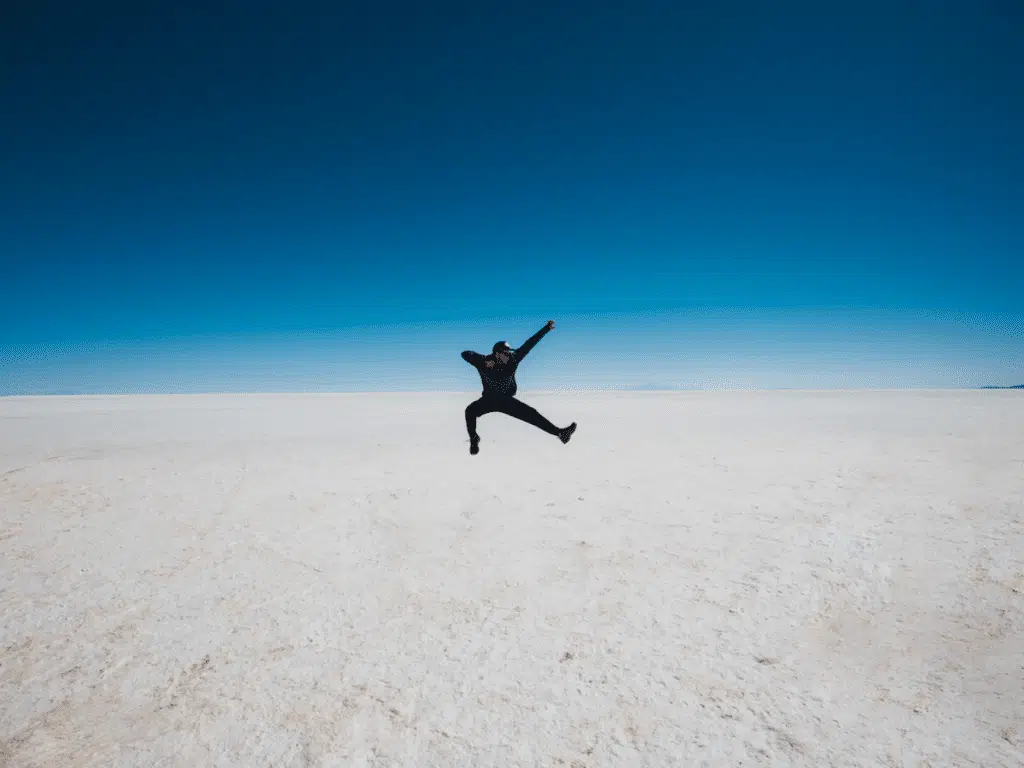
Salar de Uyuni Altitude Sickness
Given its extremely high altitude, be prepared to feel some effects of the altitude when you arrive in Uyuni – though you likely won’t notice much difference if you’ve already visited La Paz . Come prepared for the altitude by knowing to expect these symptoms:
- Lightheadedness
- Greater exertion required when walking or exercising
- Shortness of breath
Thankfully most travelers will only feel mild symptoms, and drinking plenty of water and getting extra rest should do the trick.
Plus, as most travelers to Uyuni come from La Paz to the Salt Flats, most don’t feel the change in altitude – the Salar de Uyuni is only about 200 feet (60 meters) higher in altitude than La Paz, so there isn’t much change.
Coca Tea in Bolivia
One local remedy to help ease altitude sickness is drinking tea made from coca leaves – you’ll find coca leaves and coca leaf tea everywhere in the mountainous regions of Bolivia and Peru.
I found drinking coca tea to be extremely beneficial for easing the symptoms of altitude sickness and energizing even when only experiencing minor symptoms.
Coca is notorious for being the plant used for the production of cocaine, but coca leaves have been used for centuries by locals to help ease the effects of altitude sickness and other ailments.
It is usually enjoyed by making tea directly from the leaves or sucking on the leaves. Don’t worry, it won’t unintentionally make you high!
You can get tea from coca leaves at plenty of cafes, in tea bags from supermarkets or corner stores, or buy the leaves directly from markets – don’t worry, you won’t have any trouble finding it in Uyuni or throughout Bolivia.
Salar de Uyuni Best Time to Go
Picking when to visit Salar de Uyuni, Bolivia is one of the most important decisions you’ll make about your trip! The experience you have here will be entirely different depending on the time of year of your trip.
Because the Salt Flats are only flooded during the rainy season, you’ll only have a few months out of the year where you’ll be able to see the reflection that Salar de Uyuni is known for.
However, no matter what time of year you visit, it is worth a trip – the landscape here is just that beautiful!
December – April
These months mark the wet season at the Uyuni Salt Flats . While you’ll also have cooler temperatures and a higher likelihood of cloudy skies, you’re most likely to see the reflection on the salt flats.
Generally, January or February are the months that are the rainiest and most likely to produce the reflection over the largest area of the Salt Flats . In March and April, you’ll start getting better rates from tour operators.
May – November
These months are mostly dry, and you likely will not see the reflection on the Salt Flats if you visit at this time. However, you’ll also enjoy blue skies, warmer weather, and smaller crowds in May, October, and November. You’ll also get some better rates for Salar de Uyuni tours.
Regardless of when you visit, even in the warmer and drier season, remember that you’ll still be at high altitudes, and it will be cold at night ! Come prepared with jackets, sweaters, and even a hat and gloves (you’ll need them at night) no matter when you plan to visit.
How to Get to Uyuni
Most visitors to Uyuni travel via La Paz, the capital of Bolivia and the nearest large city. The most cost-effective way to travel from La Paz to Uyuni is via overnight bus, lasting about 10-11 hours. Buses depart frequently from the Terminal de Buses – Lapaz bus terminal in central La Paz.
There are several bus companies that make the journey to the Uyuni Salt Flats, including Trans Titicaca, Cruz del Norte, and Panasur, but most prefer to take the Todo Turismo bus.
While all these bus companies have lie-flat seats for around $20-30 are and quite comfortable, the Todo Turismo is slightly nicer, provides dinner (and wine!), and is just a few dollars more .
Make sure to book ahead (tickets do sell out frequently on peak days!) . You’ll want to get your ticket at least one day in advance, or online. You can book tickets online with a pickup from your hotel for just a few dollars more at this link: La Paz – Uyuni Overnight Bus Tickets .
However, there are plenty of ways to access Uyuni – particularly by bus – that avoid passing through La Paz. You’ll find frequent buses to Uyuni from nearby towns like Tupiza in southern Bolivia and San Pedro de Atacama (or Calama) in northern Chile .
Consider taking a bus through these cities if you’re traveling through Argentina or Chile, respectively.
Or, why not start a Salar de Uyuni tour that ends in Uyuni? Check out these options for more details:
- San Pedro de Atacama to Uyuni Salar de Uyuni Tour
- Tupiza to Uyuni Salar de Uyuni Tour
Other large Bolivian cities with direct buses to Uyuni include Potosí and Sucre, which are relatively quick journeys . Longer direct routes from cities like Cochabamba are painfully long.
Uyuni Airport
Unless you’re traveling on a strict budget, I’d recommend checking out the flights into the Uyuni Airport – they generally are not too expensive and will save you an overnight bus ride.
The Joya Andina Uyuni Airport is small but modern and receives frequent flights from La Paz, Sucre, and Santa Cruz, Bolivia . Located close to everything in this small town, it costs less than $5 to get to and from the airport .
Check out our Ultimate Guide to Bolivia Salt Flats Tours for even more information and recommendations for the best Salar de Uyuni tours.
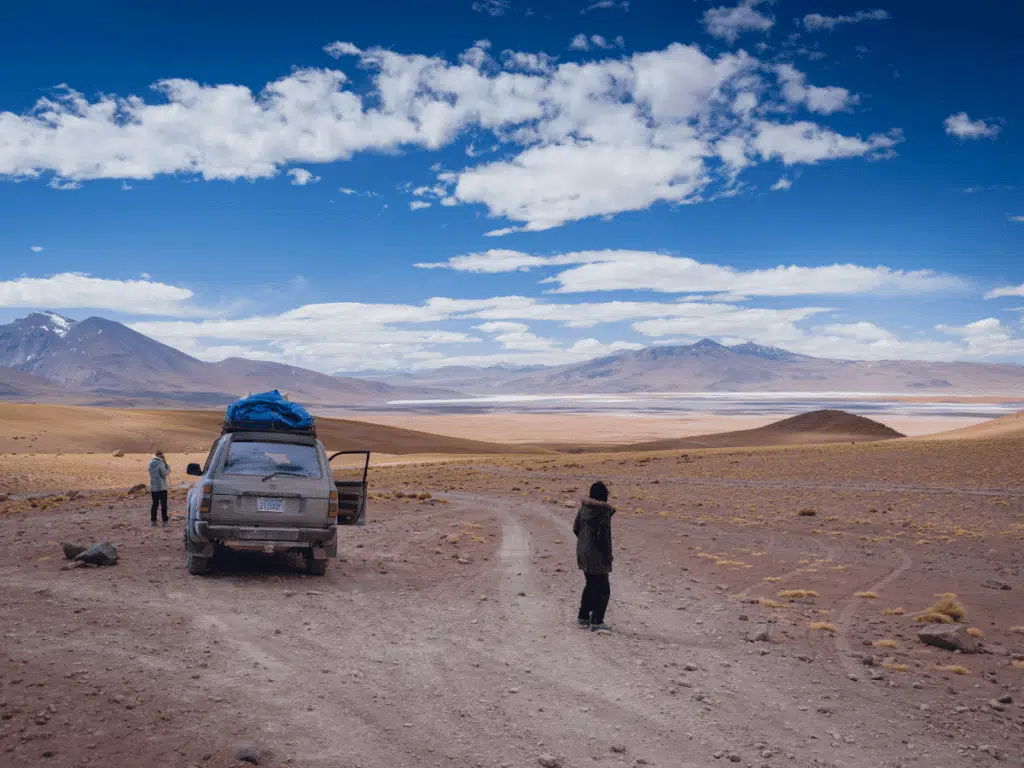
Salar de Uyuni Tours
The Salt Flats at Salar de Uyuni cover huge distances and are nearly empty, so they can’t really be visited on your own . Almost all visitors to the area book either a day trip around the Salt Flats or a multi-day tour of the entire region.
While full-day tours of the Salt Flats will give you an incredible experience visiting this unique destination, I recommend trying to make room in your itinerary for a multi-day tour.
Most multi-day Salar de Uyuni tours are three days and two nights, and are the perfect length of time to enjoy the entire area. These tours always include a full day at the Salt Flats and extra time to enjoy here .
Best Salar de Uyuni Tours:
- Full-Day Tour: Salar de Uyuni
- Two-Day Tour: Salar de Uyuni and Tunupa Volcano
- Three-Day Small Group Tour: Salar de Uyuni and the Lagunas Route
Multi-day tours are all-inclusive and will take you around the entire region, visiting destinations like the incredible Laguna Colorada , bubbling hot springs, deserts, volcanoes, and much more. This region has so much to offer, and you won’t regret taking the time to experience it.
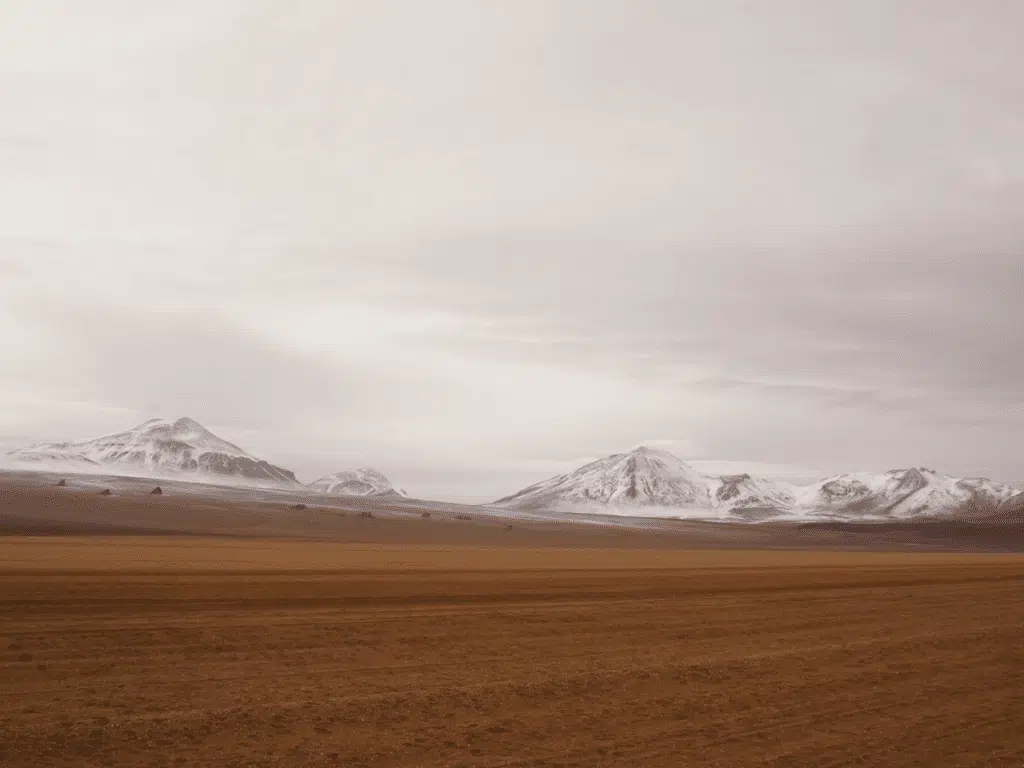
While most multi-day tours depart from Uyuni town, you can also find tours from San Pedro de Atacama, Chile, directly from La Paz, or Tupiza in southern Bolivia near the Argentina border.
- San Pedro de Atacama: Salar de Uyuni Salt Flats Tour from San Pedro
- La Paz: Salar de Uyuni Salt Flats Tour from La Paz
- Tupiza: Salar de Uyuni Salt Flats Tour from Tupiza
The small town of Uyuni on the edge of the Salt Flats isn’t much of a site to see itself – it really exists to support visitors and the infrastructure they need to visit the Salt Flats. It isn’t the most charming, but it has more than enough to support visitors.
Here you’ll find plenty of accommodation options, tour companies, restaurants , and everything else you could need as a traveler passing through.
Top Uyuni Tips
Looking for a complete guide to the ins and outs of Salar de Uyuni tours and recommendations for the best tour companies? Check out our Ultimate Guide to Bolivia Salt Flats Tours .
Where to Stay in Uyuni
There are plenty of accommodation options in Uyuni, and in recent years the options have really expanded to better accommodate travelers at all price points.
Of course, one of the major draws here are the unique salt hotels that you’ll find around the city . Created entirely out of blocks of salt carved from the Salt Flats (even bed frames and other furniture it all salt!), these hotels are definitely worth at least a one-night stay for the experience – add this to your ultimate “what to do in Uyuni” list!
Make sure to check out these options if you’re interested in staying the night in one of these unique accommodations!
- Hotel Palacio de Sal – $$ – $$$
If you’re planning to stay a night in Uyuni town before embarking on a multi-day tour of the Salar de Uyuni and the surrounding region, it’s worth checking ahead with your tour company to see if a night in a salt hotel is a part of your tour – many tours include this fun experience.
If so, you could consider normal accommodation while in Uyuni.
Look into these options if you’re looking for Salar de Uyuni hotels other than a salt hotel:
- Piedra Blanca Hostel – $ (the best hostel option in town!)
- Hotel Boutique Atipax – $ (super affordable but stylish and comfortable!)
- Hotel Jardines de Uyuni – $$
What to Do in Uyuni
There isn’t much to do in Uyuni besides visiting the Salt Flats – but there are some sites you won’t want to miss!
The town largely exists to provide the infrastructure to support visitors to the Salt Flats, so most of what you’ll find here centers around Salt Flat tours.
Depending on the tour you select of the Salt Flats, many of the highlights in Uyuni and around the town are included in the tour. However, make sure to visit these unmissable destinations .
Uyuni Train Cemetery
Just outside of Uyuni, there is an abandoned train depot , destined decades ago to make Uyuni a mining and transportation hub. When those plans failed, a train cemetery was left behind, now its own attraction.
This eerie yet beautiful site has hundreds of rusted-out old trains, relatively close to town. Set against the desert landscape here, they are fascinating to explore and photograph!
You can book a short private tour of the Train Cemetary for under $15 if it won’t be included on your longer Salt Flats tour to make sure that you don’t miss out on visiting.
Or, consider combining a visit to the Train Cemetary and a sunset and stargazing excursion on the Salt Flats , another must in Uyuni!
Bolivian Salt Flats At Night
One of the most incredible things to do in Salar de Uyuni, Bolivia is taking a tour of the salt flats at night! These nighttime starlight tours are often separate from a standard Salt Flats tour, so you’ll have to book them separately , but they are so worth it!
The guide will take you outside of the town to the best areas for stargazing, and you’ll be shocked at all you can see. Imagine seeing the reflection of thousands of stars on the mirror of the Salt Flats at once!
Plus, a lot of these nighttime stargazing tours include breakfast and sunrise over the Salt Flats , another unmissable moment at this wonder of the world.

Isla Incahuasi
You can not miss this “island” within the Salt Flats ! This is a must-visit destination in Uyuni, so make sure you plan to visit before traveling onward.
Isla Incahuasi “island” is home to centuries-old cacti that can tower as high as 35 feet (10 meters) high! Here you’ll learn more about how Salar de Uyuni was once an ancient, salty lake – you’ll see leftover corals and fossils of what was once a volcanic island.
Plus, Isla Incahuasi is one of the few places you’ll be able to see the Salt Flats from above – and one of the most beautiful places to photograph the Salt Flats. This is a totally unique perspective of this incredible site you can’t miss.
While relatively close to Uyuni, you’ll need to travel by Jeep 4X4 across the Salt Flats to get to Isla Incahuasi , so book a short but comprehensive visit here – South America Exploor has inexpensive day trips out to the “island”!
- La Paz Witches Market: Best Markets in Latin America

Carley Rojas Avila
Carley Rojas Avila is a bilingual New York-based travel writer, editor, content marketer, and the founder of the digital travel publications Explorers Away and Home to Havana. Carley is an expert on all things Latin America, the Caribbean, and Cuba, having lived and worked in four different countries in the region. Her writing has appeared on the Associated Press wires and in Travel + Leisure, Yahoo, MSN, Euronews, The Weather Channel, and more. When she's not writing about her travels, find her front row at a Bad Bunny concert, befriending street cats, and taste-testing every pizza in Havana.
- € EUR
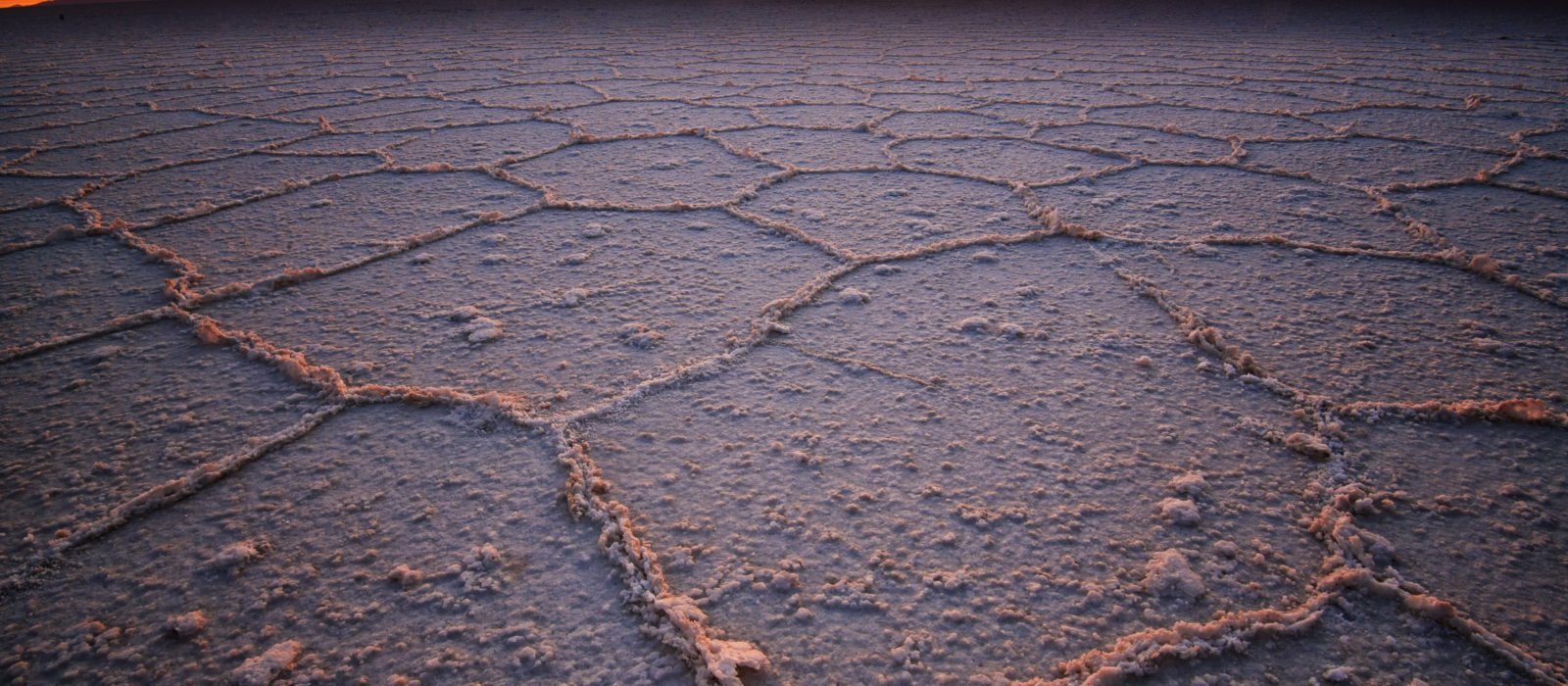
When is the Best Time to Visit the Uyuni Salt Flats in Bolivia?

Published on: May 31st, 2018
Last modified: March 8th, 2024
The best time to visit the Uyuni Salt Flats in Bolivia is between December and April when the wet season creates a vast mirror effect. The dry season, between May and November, is best for seeing the stunning crystallised salt patterns.
Arguably Bolivia’s most breath-taking experience, the over 10,000 square kilometres (4000 square miles) of the shimmering Salar de Uyuni are a must-see. Formed from the drying up of vast prehistoric lakes, the salt flats stretch as far as the eye can see. The salt flats can be visited throughout the year, although the dry season is recommended for those not looking to experience the mirror-effect, as the surrounding attractions will be flooded and unavailable to visit during the rainy season.
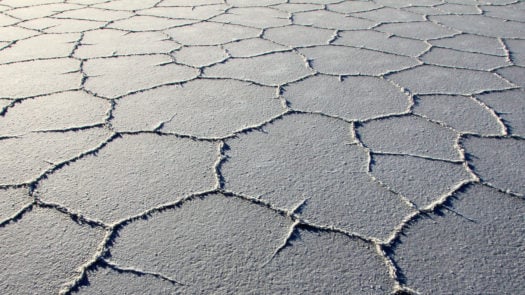
The wet season
During the wet season, these salt flats flood and they transform into a vast mirror which reflects the sky and seems to defy reality. The lack of wind and clear skies create the perfect conditions for achieving images that appear to lose all perspective. As the surroundings do flood, this can cause some issues for visiting other nearby attractions.
Jacada Tribe member Roy Lamsam took this fun photo with his wife Sarah during his trip with Jacada Travel to the salt flats
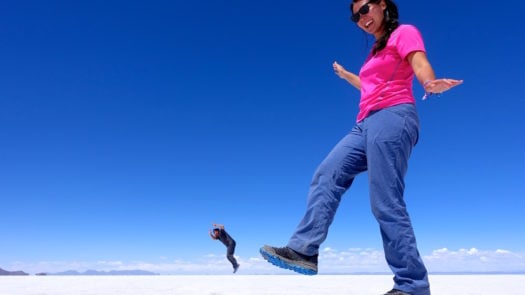
The dry season
The dry season is the optimal time to see salt crystallised into polygonal patterns stretching across the horizon, creating a magical and stunning vista. It is also perfect timing to enjoy a stay in the Airstream Deluxe Camper van – a stylish choice for those seeking an adventurous experience. Stay right on the edge of the salt flats and watch the sunrise from the comfort of your own bed from the van’s location on the edge of the salt flats. Your own private chef and guide will take care of your every need.
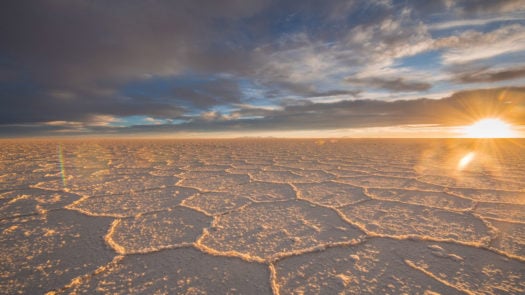
The salt flats are often visited as part of a tour of the surrounding volcanic region which includes visits to hot springs, geysers, lagoons and hotels constructed from salt. Spend the rest of your time admiring elegant pink flamingoes, visiting multi-coloured lagoons and taking a soak in restorative volcanic springs.
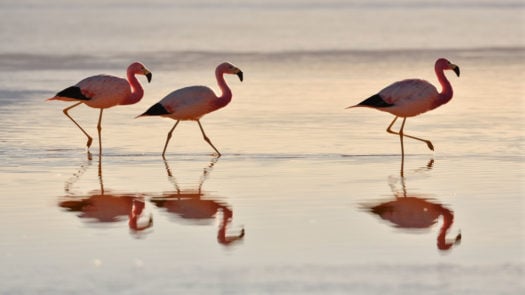
Head to the salt flats on these trips....
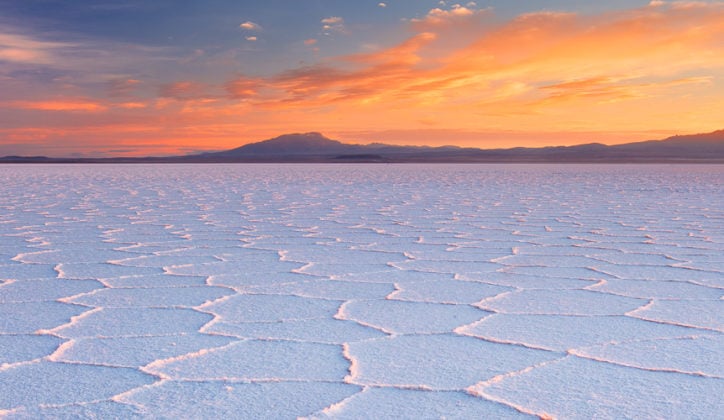
Want to take your own horizon-defying photos? Talk to one of our experts today to start planning your trip


Best Time To Visit Salt Flats Bolivia In 2024: Ultimate Guide!
Are you planning a trip to witness the breath-taking beauty of the Salt Flats Bolivia ? Then you have come to the right place! We’ve got everything you need to know in this ultimate guide to help you plan your adventure. From the best time to visit to what to expect, and how to make the most of your journey – we’ve got you covered.
The Bolivian Salt Flats , also known as Salar de Uyuni, is a picturesque natural wonder located in southwestern Bolivia. A stunning sight to behold, this destination is known for its awe-inspiring landscapes, bright-colored lakes, cactus islands, and more.
If you are wondering when the best time to visit Salt Flats Bolivia is, keep reading! The seasons vary drastically throughout the year, so you’ll want to plan your trip accordingly.
Table of Contents
Why Visit Salt Flats Bolivia?
If you’re looking for a unique, awe-inspiring destination, Salt Flats Bolivia should be at the top of your travel list.
Experience the wonders of nature on display at the Salar de Uyuni and immerse yourself in the captivating landscape of Bolivia’s salt flats. Our travel guide will help you explore and discover the hidden gems of this unforgettable destination.
Whether you’re a seasoned traveler or planning your first adventure, Salt Flats Bolivia offers endless opportunities to marvel at the raw beauty of the earth.
So, why visit Salt Flats Bolivia ? Simply put, it’s an experience unlike any other, where you can witness stunning landscapes, unique wildlife, and fascinating cultures.
Best Months to Visit Salt Flats Bolivia
At Salt Flats Bolivia, the ideal time to visit depends on various factors, including weather conditions and crowd levels. But generally, the best months to visit are from May to November, during the dry season.
During this period, the weather is dry, sunny, and mild, making it perfect for exploring the salt flats and capturing stunning photos. You’ll also be able to witness incredible natural phenomena like the mirror effect, where the salt flats reflect the sky perfectly.
Despite the cold nights, the dry season is the peak tourist season, so expect crowds and make your reservations in advance. On the other hand, if you prefer fewer crowds, the off-seasons from December to April may be ideal for you. This period experience some rainfall, creating a magical reflection on the flats, and fewer tourists mean you get to have the salt flats to yourself.
Weather and Climate in Salt Flats Bolivia
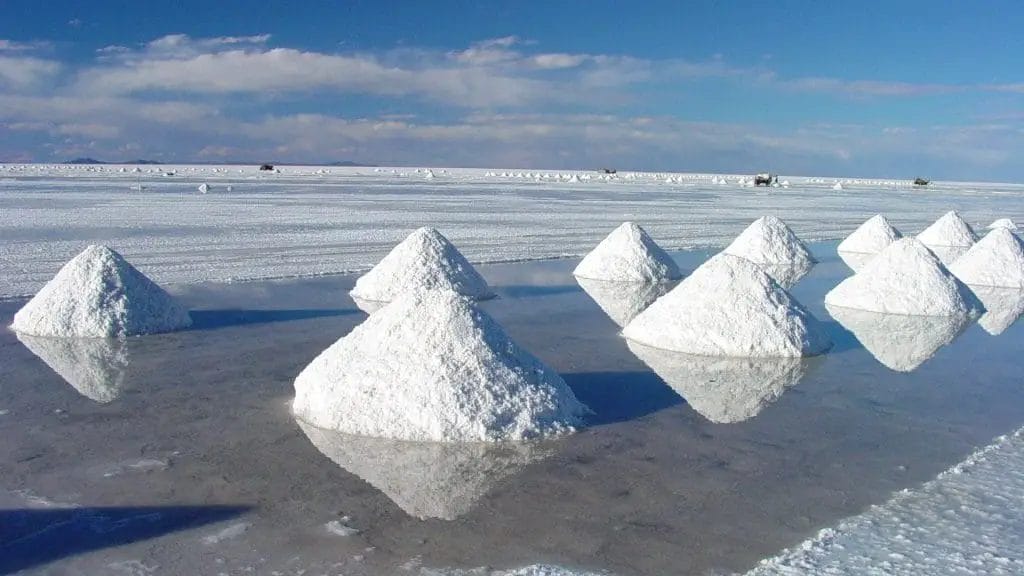
When planning your trip to the amazing Salt Flats Bolivia, it’s essential to understand the weather and climate. The Salar de Uyuni is located at an elevation of 3,656 meters above sea level and is subject to extreme temperature variations throughout the day.
The weather conditions in Salt Flats Bolivia can be unpredictable. During the wet season, which runs from December to March, rainfall is heavier, causing flooding on the salt flats. It’s possible to witness the reflection of the sky in the flooded areas, which adds to the magic of the experience. However, during this season, access to some areas of the salt flats can be restricted due to the high water level.
On the other hand, the dry season, which lasts from April to November, is characterized by clear skies and fewer crowds. It’s an ideal time for photography enthusiasts to capture mesmerizing shots of the salt flats. The daytime temperature can range from 10°C to 20°C, while nighttime temperatures can drop well below zero degrees Celsius.
It’s worth noting that the weather can change suddenly in Salt Flats Bolivia. Visitors are advised to pack warm clothing, a hat, sunglasses, and sunscreen to protect themselves from harsh sun rays. Additionally, staying hydrated is crucial for combating altitude sickness, which can be a potential risk for those not accustomed to high altitudes.
Capturing the Perfect Shots: Salt Flats Bolivia Photography Tips
At Salt Flats Bolivia, there are endless opportunities for photography enthusiasts to capture stunning images. Here are our expert tips to help you create unforgettable shots:
- Plan your shots: Before heading out, research images of Salar de Uyuni to inspire your photography ideas. Having a plan also ensures you make the most of your time and capture all the must-visit spots.
- Timing: The best time to shoot is during the sunrise or sunset when the light is soft and warm. Try to avoid shooting at midday when the light is harsh and unflattering.
- Play with perspective: Use the vastness of the salt flats to your advantage and experiment with different angles to create depth and scale in your shots.
- Use props: Bring some props such as a chair, balloons, or umbrellas to incorporate a playful element in your images.
- Exploring Salt Flats Bolivia: Take your time and explore the area to discover unique and hidden gems that can create stunning shots.
Remember that Salt Flats Bolivia is a natural wonder, so do your part to preserve it by staying on designated paths and not disturbing the environment. With these tips and a keen eye, you can capture breathtaking shots that will last a lifetime.
Planning Your Salt Flats Bolivia Trip
Planning a trip to Salt Flats Bolivia can be overwhelming, but with our comprehensive guide, you’ll have everything you need for a seamless adventure. Our team of experts has curated the best tips and recommendations to help you plan your journey and make the most of your visit. Here’s what you need to know:
Transportation
Getting to Salt Flats Bolivia can be a bit tricky, but once you’re there, transportation is relatively easy. Most visitors prefer to take a flight to La Paz or Santa Cruz, and from there, they can book a tour or take a bus to Uyuni. We recommend booking transportation in advance to ensure availability and avoid any headaches on arrival.
Accommodations
Accommodations in the area are limited, but there are still plenty of options to suit different budgets. From basic hostels to luxury hotels, you’re sure to find something that meets your needs. We recommend booking in advance, especially during peak season, to ensure availability and get the best rates.
Recommended Itineraries
There are a few different Salt Flats Bolivia itineraries to choose from, depending on your timeframe and interests. The most popular tours are 1-3 day trips that take you to the top attractions in the area, including the salt flats, lagoons, and hot springs. We recommend doing some research and choosing an itinerary that fits your budget and travel style.
Salt Flats Bolivia Tours
There are plenty of Salt Flats Bolivia tours to choose from, but it’s important to do your research and choose a reputable company. Look for tour operators that are licensed and have good reviews from past customers. Make sure to double-check the itinerary and ask any questions you have before booking.
Essential Tips
When planning your trip to Salt Flats Bolivia, it’s important to keep a few things in mind. First, be prepared for the weather, which can be unpredictable, especially during the rainy season. Second, pack lightly and bring only essentials, as you’ll be on the move quite a bit. Finally, be respectful of the local culture and customs, and try to learn a few basic Spanish phrases before you go.
With these tips in mind, you’re ready to plan your unforgettable trip to Salt Flats Bolivia. We hope this guide has been helpful, and we can’t wait for you to experience the breathtaking beauty of this iconic destination.
Must-See Attractions in Salt Flats Bolivia
When it comes to Salt Flats Bolivia tourism , there are plenty of exciting places to visit that will leave you awestruck. Let us take you on a journey through the must-see attractions in this unique part of the world.
1. Salar de Uyuni
Undoubtedly the centerpiece of any trip to Salt Flats Bolivia, Salar de Uyuni is the world’s largest salt flat. Take a tour to witness the breathtaking scenery, and discover how locals extract salt from the flats.
2. Train Cemetery
Are you a history buff? Visit the eerie and fascinating train cemetery, a collection of rusted-out locomotives that once ferried minerals across the region. It’s a must-see for anyone interested in the area’s industrial past.
3. Isla Incahuasi
Known as Cactus Island, this rocky outcrop located in the center of the salt flats is covered with towering cacti. It’s a great place to get panoramic views of the surrounding landscape.
4. Red and Green Lagoons
Ready to add some color to your itinerary? Visit the Red and Green Lagoons, located in the high-altitude Eduardo Avaroa Andean Fauna National Reserve. The lagoons are home to a variety of flamingos that can be seen wading in the shallow waters.
These are only a few of the many things to do in Salt Flats Bolivia . Whether you’re interested in wildlife, nature, or history, you’ll find something to pique your curiosity in this enchanting destination.
Ideal Time for Bolivian Salt Flats Tours
Planning a trip to the mesmerizing Salt Flats Bolivia? It’s essential to choose the best time to visit to make the most out of your tour.
When to Go to Salt Flats Bolivia:
Although you can visit the salt flats year-round, the best time to explore the Bolivian Salt Flats is during the dry season, from May to November, when the weather is pleasant, and the skies are clear. During this period, the salt fields take on an almost surreal beauty, reflecting and mirroring the sky above. It’s also an ideal time to take some incredible photos of the sunset, with rich hues of orange and pink splashed across the horizon.
However, keep in mind that the Salt Flats Bolivia attracts several tourists during this period, which can get crowded and oftentimes expensive. If you prefer to visit during offseason, note that the rainy season spans December to April. While this period may attract fewer crowds, it’s essential to note that the weather can be unpredictable, and wet and muddy conditions could hinder photography opportunities.
Top Months to See Salt Flats Bolivia:
The ideal time to travel to Salt Flats Bolivia is from June to September, when the weather is dry, and the temperature averages between 13° and 15° Celsius. During this period, you can witness some of the most extraordinary natural phenomena in the world, like the Laguna Colorada, glistening lakes, and towering volcanoes.
If you prefer more moderate temperatures, plan your trip during October and November when the climate is milder, with an average of 17°C.
So, whether you’re seeking bright blue skies or overcast weather conditions, the ideal time to visit Bolivia’s Salt Flats varies depending on your preferences. Plan your trip wisely, and brace yourself for an extraordinary journey.
Travel Tips for Exploring Salt Flats Bolivia
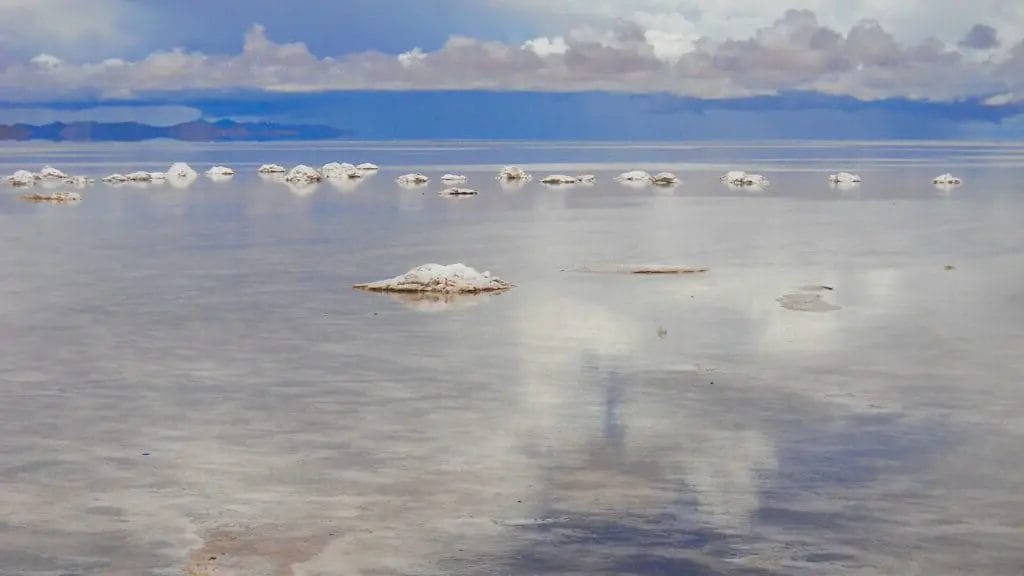
Are you planning to explore the mesmerizing Salt Flats Bolivia? Here are some essential travel tips to help you prepare for your adventure:
Be Prepared for Altitude Sickness
Salt Flats Bolivia is located at a high altitude, so it’s crucial to be prepared for altitude sickness. Take some days to acclimatize before visiting the salt flats to avoid any health issues. Drink lots of water, avoid smoking and alcohol, and take it easy for the first few days to prevent altitude sickness.
Ensure you pack light for your trip, as you’ll be traveling through various terrains and altitudes. Bring warm and comfortable clothing for the chilly nights, and sunscreen and sunglasses to protect your skin and eyes from the sun’s harsh rays. Essential items like a first aid kit, a map, and a portable charger are also useful to have on your trip.
Respect the Culture
As you explore Salt Flats Bolivia, it’s important to respect the local culture and customs. Learn a few phrases in Spanish or the local language to communicate with locals, and avoid disrespectful behavior. Don’t take anything from the salt flats or wildlife and leave everything as you found it. Remember, you’re a visitor in this beautiful place, so be responsible and respectful.
Book a Reputable Tour Guide
Visiting Salt Flats Bolivia can be challenging, as you’ll need a four-wheel-drive vehicle and a knowledgeable guide to navigate through the landscape. Hire a reputable tour guide or operator to ensure you get the most out of your Salt Flats Bolivia adventure. They’ll also provide you with essential information and tips that you may not find in travel guides.
Try Local Food
Exploring Salt Flats Bolivia gives you a chance to taste the local cuisine. Don’t miss out on trying Salteñas, a savory pastry filled with meat or chicken, or Llama meat, a local delicacy. You can also try some excellent Bolivian coffee or the national drink of Bolivia, Singani, made from distilled white Muscat grapes.
In conclusion, we hope this ultimate guide has helped you to plan your visit to the mesmerizing Salt Flats Bolivia. From the best time to visit to capturing the perfect shots, we have covered everything you need to know to make your trip unforgettable. Don’t forget to follow our travel tips and visit the must-see attractions to make the most of your adventure.
Exploring Salt Flats Bolivia is an experience that will leave you in awe of nature’s wonders. So pack your bags, plan your itinerary, and get ready for an adventure of a lifetime. We can’t wait for you to discover the beauty of Bolivia’s iconic salt flats!
What is the best time to visit Salt Flats Bolivia?
The best time to visit Salt Flats Bolivia is during the dry season, which typically runs from April to November. This period offers clear skies, minimal rainfall, and the opportunity to witness the mesmerizing mirror effect on the salt flats.
What should I expect when visiting Salt Flats Bolivia?
When visiting Salt Flats Bolivia, expect to be amazed by the vast expanse of white salt, unique geological formations, and stunning landscapes. You’ll have the chance to explore the iconic Salar de Uyuni, visit cactus islands, observe flamingos, and capture breathtaking photographs.
How can I make the most of my Salar de Uyuni adventure?
To make the most of your Salar de Uyuni adventure, it is recommended to book a tour with a reputable guide or agency. They will provide transportation, accommodation, meals, and knowledgeable insights about the salt flats. Additionally, bring warm clothing, sun protection, and a camera to capture the extraordinary beauty of the salt flats.
What are the best months to visit Salt Flats Bolivia?
The best months to visit Salt Flats Bolivia are from May to October. During this period, the weather is dry and the salt flats are at their most impressive. June and July are particularly popular months due to the lower chances of rainfall and the opportunity to witness the mirror effect.
What is the weather like in Salt Flats Bolivia?
The weather in Salt Flats Bolivia is characterized by two main seasons: the dry season and the rainy season. The dry season, from April to November, offers clear skies, sunny days, and chilly nights. The rainy season, from December to March, brings occasional showers and the possibility of road closures.
Are there any photography tips for capturing the perfect shots in Salt Flats Bolivia?
Yes! Here are some photography tips for capturing stunning shots in Salt Flats Bolivia: – Use a wide-angle lens to capture the vastness of the salt flats. – Experiment with different perspectives and angles. – Take advantage of the unique reflections on the salt flats. – Include props or people to add scale and interest to your photos. – Wake up early to capture the sunrise or stay for sunset shots. – Don’t forget spare batteries and memory cards to avoid missing out on incredible photo opportunities.
How should I plan my trip to Salt Flats Bolivia?
To plan your trip to Salt Flats Bolivia, consider the following: – Research and book a tour operator or guide. – Decide on the duration of your visit. – Arrange transportation to Uyuni or the starting point of your tour. – Pack appropriate clothing, including warm layers, sun protection, and sturdy footwear. – Bring essential items like a camera, extra batteries, and personal toiletries. – Make hotel or accommodation reservations in advance if needed.
What are the must-see attractions in Salt Flats Bolivia?
The must-see attractions in Salt Flats Bolivia include: – Salar de Uyuni: The iconic salt flats are the main highlight of the region. – Isla Incahuasi: A cactus-covered island in the middle of the salt flats. – Laguna Colorada: A mesmerizing red-colored lake inhabited by flamingos. – Train Cemetery: A unique place to explore vintage trains abandoned in the desert. – Eduardo Avaroa National Reserve: Home to stunning landscapes, geysers, and hot springs.
When is the ideal time for Bolivian Salt Flats tours?
The ideal time for Bolivian Salt Flats tours is during the dry season, from April to November. This period offers clear skies, minimal rainfall, and the best conditions to explore and appreciate the mesmerizing beauty of the salt flats.
What travel tips should I keep in mind for exploring Salt Flats Bolivia?
Here are some travel tips for exploring Salt Flats Bolivia: – Acclimatize to the altitude before beginning your tour. – Stay hydrated and protect yourself from the sun’s UV rays. – Respect the fragile environment and follow the guidelines set by your guide or tour operator. – Be prepared for basic accommodation and limited facilities during the tour. – Bring cash in small denominations for any purchases or additional expenses along the way.
Hi There! This is Taseen Alam. I am the founder of Nomad Footsteps and a full time online entrepreneur living my laptop lifestyle. I am a nomad myself as well as a traveler. On this blog, I share travel destinations, guides and itineraries etc. Join me on my journey of a nomad.
Similar Posts
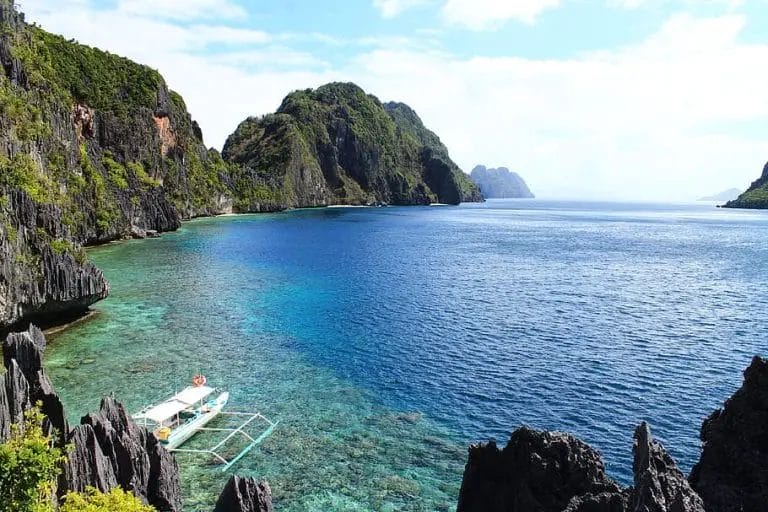
Worst Time to Visit Philippines In 2024: Know Before You Go!
If you’re planning a trip to the Philippines in 2024, it’s important to know when to go and when…
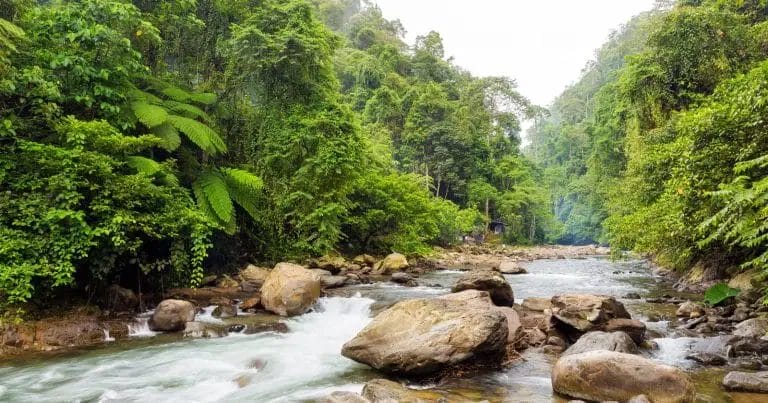
How To Get From Medan To Bukit Lawang? Find Out Here!
Are you ready for an adventure in Bukit Lawang? Located just a few hours away from Medan, this enchanting…

17 MOST FUN & EXCITING Things to Do in Wyoming
Wyoming is a state that offers a wide range of activities and attractions for visitors. From its captivating landscapes,…
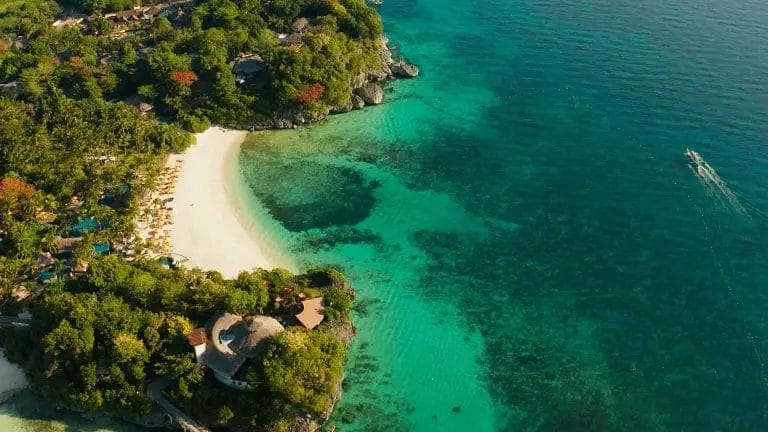
Best Time To Visit Boracay In 2024: The Ultimate Guide!
Are you planning a dream vacation to Boracay in the coming year? If so, you might be wondering what…

Are There Palm Trees in Atlanta Georgia?
Living in Atlanta, Georgia, I’ve always been fascinated by the city’s diverse plant life. One tree that stands out…

Worst Time To Visit Dubai In 2024: Don’t Make This Mistake!
If you’re planning a trip to Dubai in 2024, it’s crucial to be aware of the worst time to visit…
Leave a Reply Cancel reply
Your email address will not be published. Required fields are marked *
Save my name, email, and website in this browser for the next time I comment.

Salar de Uyuni: The Ultimate Guide to Bolivia’s Majestic Salt Flats
Nestled high in the Bolivian Andes, Salar de Uyuni stands as a testament to nature’s awe-inspiring wonders. Spanning over 10,000 square kilometers, it’s the world’s largest salt flat, appearing as a vast white expanse that stretches to the horizon and merges with the sky.
Often referred to as the ‘world’s largest mirror’ (during the rainy season), this surreal landscape becomes a shimmering reflective surface during the rainy season, creating a dream-like setting that captivates travelers from across the globe.
But Salar de Uyuni is not just a visual marvel; it’s a destination imbued with history, geology, and cultural significance, making it a must-visit on any Bolivian itinerary.
Salar de Uyuni – A Trip Away From Earth
The Uyuni Salt Flats is the kind of place that makes your jaw drop when you see it and leaves you awe-stricken for the rest of your life. When I am asked to name a place that really, really struck me, the Uyuni Salt Flats (and the landscapes of the Eduardo Avaroa Reserve further south) immediately come to my mind.
It seems that it’s not just me. I remember meeting during my travels three couples who were on a round-the-world trip. These guys had seen the world. I met each of these couples on different occasions, and of course, they had never met each other. I asked them that same question – can you name one place in this world that really, really struck you: all of them promptly answered with a big smile, Salar de Uyuni. Coincidence?
This place has won the heart of every traveler who walked on it. How could it be otherwise? The truth is, we would not be too surprised to find this kind of landscape on some other planet, but on Earth? The Bolivian Salt Flats have the power to wake up the explorer inside every traveler.
And I know what I’m talking about. In fact, I have visited the Uyuni Salt Flats twice, during the same trip! I first took a classic group tour just like everybody else, to later realize that I hadn’t had enough of it, and went back on the Salar on a private tour. Yep, I can be that obsessive sometimes.

GPS (Isla Incahuasi): 20°14’35.30″S, 67°37’31.48″W
How to go: Group tour or Private tour from Uyuni or Tupiza
Price: 700-750 Bolivianos ($100-110) for a 3-day group tour with Spanish-speaking driver + 30 BOB ($5) entrance to Isla Incahuasi + 150 BOB ($25) entrance for the Eduardo Avaroa Reserve
Duration of the tours: Can be full day, 3 days (most popular) or more.
When to go: Possible all year long. December to March for the mirror effect.
Good to know: ATMs in Uyuni are not always reliable, better have some cash with you.
Where is Salar de Uyuni Located?
Salar de Uyuni, often referred to as the world’s largest salt flat, is situated in the southwestern region of Bolivia, nestled high in the Andes at an elevation of approximately 3,656 meters (or around 11,995 feet) above sea level. Specifically, it can be found within the Daniel Campos Province in the Potosí Department.
This vast expanse stretches over 10,582 square kilometers (or about 4,086 square miles), making it not only the world’s largest salt flat but also one of the most unique natural landscapes on Earth.
Its location, high in the Andean plateau, or Altiplano, contributes to its unique climate and geological formations. The town of Uyuni serves as the primary gateway to the salt flats and is the starting point for most tours and expeditions into this otherworldly landscape. Uyuni is accessible via bus, train, or plane from major Bolivian cities like La Paz and Sucre.

How Was Salar de Uyuni Formed?
The tale of Salar de Uyuni’s formation is as mesmerizing as the destination itself. Millions of years ago, this region was submerged under a vast prehistoric lake named Lake Minchin. As time went on, the lake transformed into two other significant bodies of water: Lake Tauca and Lake Ballivián.
However, due to climatic changes over millennia, these lakes eventually dried up about 15,000 years ago, leaving behind two primary modern lakes – Poopó and Uru Uru – and two major salt flats, with Salar de Uyuni being the most expansive of them.
The salt crust, which is several meters thick in some areas, overlays a reserve of brine that is exceptionally rich in lithium. In fact, it is estimated that Salar de Uyuni contains about 70% of the world’s known lithium reserves, a critical element used in electronic batteries.
The Legend of The Uyuni Salt Flats
Beyond its geological and economic significance, Salar de Uyuni has been an essential part of local indigenous lore. Legends speak of mountains – Tunupa, Kusku, and Kusina – once being giants who walked the Earth. As the tale goes, Tunupa’s tears and breast milk, after being separated from her child, are said to have created the salt flats.
Today, while visitors marvel at its vast beauty, the salt flat continues to be a source of livelihood for many locals who harvest salt and extract minerals from this unique terrain.

8 Surprising Facts About The Uyuni Salt Flats
- It is the largest salt flat in the world . 10,582 square kilometers (4,086 sq mi) of pure white salt. That means that it is very roughly 100 km (62 mi) from east to west, and also 100 km from north to south. It is so big that sometimes, the remote mountains seem to float over the horizon, like a mirage.
- It lies at 3660 m (12,000 ft) of altitude . The Uyuni Salt Flats are part of a large region called the Altiplano, shared between Peru and Bolivia . The Altiplano is the second-highest plateau in the world after the one in Tibet, and it also includes Lake Titicaca.
- The Salar de Uyuni was formed by the disappearance of an immense lake called Lago Minchin , about 15,000 years ago. The remains of this lake that exist today are the Uyuni and Coipasa salt flats, and the Poopo and Uru-Uru lakes.
- It has islands . An amazing feature of the Uyuni salt flats is its “islands” showing coral and algae fossils dating back from the ancient lake. One of these islands, the 24-hectare Isla Incahuasi (“House of the Inca”), has been developed for tourism, with the construction of a hiking trail and a restaurant to welcome tourists. The Salar’s biggest “island” is Isla del Pescado (Fish Island), 22 km (14 mi) away from Isla Incahuasi.
- The islands are covered with giant cacti. The most iconic plants of the region, these cacti are particularly concentrated on Incahuasi Island and Isla del Pescado. Some of them are believed to be over a thousand years old. Do you realize how unique, bizarre, and incredible this place is? “Islands” made of fossil coral formations, covered with giant cacti, in the middle of an immense crust of salt!

- It is covered with mysterious hexagonal shapes. These amazing shapes have been a mystery for quite some time, but it is now thought to be the result of a convection phenomenon below the salt flat’s surface. Below the surface, there is an accumulation of rainwater. The action of the sun causes the evaporation of this water. During its migration toward the surface, the water is accumulating more and more salt. Because its salt concentration increased, this water became heavier, which leads it to sink back down. During this process, some of the water evaporates, revealing the shape of the convection cells: the hexagons. The salt crystallizes as the water evaporates, forming the ridges of the hexagons.
- A world of salt… and lithium. It is estimated that the Salar de Uyuni contains about 10 billion tons of salt, and in some areas its thickness can reach 10 metres (33 ft). The locals of the Colchani village harvest around 25,000 tons of salt a year. Uyuni is also a gigantic reservoir of lithium, an estimated 15% of the world’s reserves. It is now extracted as well, from a site in the south of the Salar.
- The Salar de Uyuni is useful for calibrating satellites. Scientists consider the Bolivian salt flat to be one of the best places on Earth to calibrate satellite altimeters (used to measure land elevation) because the skies are often clear, and unlike the ocean, it has no waves.

When to Visit Salar de Uyuni
Salar de Uyuni offers distinct experiences depending on when you choose to visit. The vast salt flat undergoes remarkable transformations with the seasons, making each visit unique.
Wet Season (December to April)
Unique Experiences : The rainy season transforms the salt flats into a vast mirror, reflecting the sky so perfectly that the horizon seems to disappear. This ethereal landscape provides an unparalleled opportunity for breathtaking photographs, where the sky and ground merge seamlessly.
Pros : The reflective properties of the wet salt flats are a photographer’s dream. The landscape is serene, and the atmosphere is surreal, especially during sunrise and sunset.
Cons : Some parts of the salt flats can be inaccessible due to excessive water, especially after heavy rains. Additionally, the chances of rain and cloud cover can sometimes obscure views of the sky and surrounding landscapes.
Dry Season (May to November)
Unique Experiences : The salt crystallizes and forms hexagonal patterns on the ground, creating a mosaic-like texture. It’s the best time to explore the entire expanse, including isolated spots and islands like Incahuasi.
Pros : Better accessibility across the salt flats, clearer skies, and cooler temperatures. The crystallized salt patterns offer unique photographic opportunities.
Cons : The absence of the reflective mirror effect. The landscape, while still stunning, is more consistent and doesn’t offer the dramatic visual contrasts of the wet season.

How to Get There
Getting to the gateway of Salar de Uyuni, the town of Uyuni, is relatively straightforward, and there are various means of transport available based on your preferences and budget.
Uyuni has an airport, Joya Andina Airport, which connects it with Bolivia’s major cities. Airlines like Boliviana de Aviación (BoA) and Amaszonas operate regular flights from La Paz, Bolivia’s administrative capital, to Uyuni.
The flight is short, roughly an hour, and offers aerial glimpses of the salt flats. Prices can of course vary but are generally between $60 and $200.
For budget travelers, several bus companies operate overnight routes from La Paz to Uyuni. The journey takes about 10 to 12 hours. While buses are cost-effective, be prepared for a bumpy ride on rough roads. It’s advisable to opt for semi-cama or cama services for more comfort.
- From La Paz: Night buses leave La Paz at around 8:30 or 9 pm, and arrive in Uyuni 9 hours later, at 5.30 or 6 am. The price is roughly between $15 and $25.
- From Cochabamba: There is a direct night bus leaving at 6 pm and arriving at 6 am. Other options all have a connection in Oruro. Price $10-$15.
- From Sucre: There are some direct buses as well as options with a connection in Potosi. The ride lasts about 8 hours and costs around $10-$15.
You can easily find and book buses from the TicketsBolivia website.
Want to read a crazy story? You can read about my arrival in Uyuni in the middle of the night when I was saved by a drunk guy.
Another scenic option is the train. Trains operated by Empresa Ferroviaria Andina run between Oruro and Uyuni. International travelers can first take a bus or train from La Paz to Oruro and then board the train to Uyuni. The train journey offers picturesque views of the Bolivian highlands and is more comfortable than the bus.
Tips for Travelers
- It’s a good idea to book your transport in advance, especially during peak tourist seasons.
- If flying, be sure to account for potential altitude sickness, as Uyuni is over 3,600 meters above sea level.
- For those taking ground transport, pack snacks and water, as the journey can be long, and services en route might be limited.

Tours and Exploration
Salar de Uyuni is a destination that invites exploration, and there are numerous ways to experience its vast beauty, from guided tours to private expeditions. Here’s a breakdown of the options available:
Types of Tours Available
The classic way of visiting the Uyuni Salt Flats is to sign up for a group tour, usually done with a 4WD Jeep.
Day Tours : The first option is a day tour from Uyuni, which will take you to a famous train cemetery, before going on the Salar and exploring its main attractions, such as the village of Colchani, the Salt Hotel, and of course the Incahuasi Island and its giant cacti. Some tours let you watch the sunset from the salt flat, before taking you back to Uyuni.
Multiday Tours : A popular option is to go for a 3-day tour combining the Salar de Uyuni and the mind-blowing Eduardo Avaroa National Reserve , in the Sur Lípez Province. I took such a tour when I saw Uyuni for the first time. But I can already tell you it was one of the most breathtaking regions I have ever seen in my entire life.
The 3-day tour takes you to the Uyuni Salt Flats of course, then heads south, crossing smaller salt flats, and passing by stunning colorful lagoons. There are the famous pink waters of the Laguna Colorada, but also a whole series of smaller lakes inhabited by flamingo colonies, high-altitude deserts, and geysers, all the way to the Laguna Verde, at the foot of the majestic Licancabur Volcano.
The price for such a 3-day tour is usually around $100-$115 in a local agency with a Spanish-speaking driver. But if you want an English-speaking driver, the price can easily go over $200.

Sunrise/Sunset Experiences : There’s nothing quite like watching the sun rise or set over the vast expanse of Salar de Uyuni. Many tours are timed to capture these mesmerizing moments.
Consider group size when choosing a tour. Smaller groups offer a more personalized experience. Ensure that the company respects local and environmental guidelines.
An alternative is to visit it from Tupiza , some 200 km (125 mi) south-east of Uyuni. Visiting it from Tupiza can make sense if you are arriving from Argentina via the border town of Villazon. Often, you will be offered the same 3-day tours, with a reverse itinerary, ending with the Salar de Uyuni. Thus, these tours can start in Tupiza and end in Uyuni.
If you are in Chile, you can also find tours from San Pedro de Atacama , going over the Eduardo Avaroa National Reserve and the Salar de Uyuni with a similar itinerary.
Private Car and Driver Option
For those seeking a bespoke experience, hiring a private car and driver can be the perfect choice. This allows for a flexible itinerary and access to lesser-visited spots.
I personally took this route during my second visit. It provided the freedom to explore hidden corners of the Salar, away from the usual tourist trails. This can be especially rewarding during sunrise or sunset, when you can find a quiet spot all to yourself.
What I did: In Tupiza, I got to know a local travel agent, and I went with him on a private 4-wheel drive tour on the Salar. It cost me $300 for 3 days. Alone in the Salar, where tourists usually don’t go, stopping wherever and whenever I want.
That’s how I got to hike on Isla del Pescado (Fish Island) and sleep in a salt hotel at the foot of Tunupa Volcano that I partially climbed the next day. When I go back to Bolivia someday, I will definitely do it again. I talk about this in greater detail further down this article.
Whether you are in Uyuni, Tupiza, or even San Pedro de Atacama in Chile, you can talk to a few travel agencies and they will most probably be able to offer you a private tour. Just talk to a few and compare prices.

Things to Do and Experience at Salar de Uyuni
Salar de Uyuni is replete with otherworldly sights and experiences. Whether you’re there for the landscapes, photography, or the sheer novelty of being in such a place, there’s something for everyone.
Mirror Effect During the Wet Season
Details: From December to April, the rainy season transforms the salt flats into an enormous natural mirror. Even a shallow layer of water reflects the sky perfectly, creating a dreamlike horizon.
Photography Tips: This optical wonder allows for stunning photography. Capturing sunrise or sunset during this time can result in awe-inspiring imagery where the horizon seems endless.
Experience: Walking on the flats during this time can feel like walking in the sky, a surreal experience that many describe as feeling like being on another planet.
Precautions: While the visuals are mesmerizing, travelers are advised to be cautious. Wet salt can be slippery, so ensure you’re wearing appropriate footwear. Make sure you are protected from the corrosion of the salt.
Perspective Photography Opportunities
Details: The vast and uniform backdrop of the Salar makes it an excellent canvas for playing with visual perspectives in photographs, where objects in the foreground seem disproportionately large compared to those in the background.
Props and Ideas: From creating scenes where it looks like you’re holding or kicking the sun, to using everyday items for exaggerated size comparisons, the possibilities are limitless. Some travelers bring small toys or props to make the photos more playful and memorable.
Tips: Ensure you have a camera with an adjustable lens or a smartphone with a wide-angle setting. Remember, the shadow can play a pivotal role in these shots, so mind the sun’s position. The best shots often require a low camera angle, so be prepared to get down on the ground!
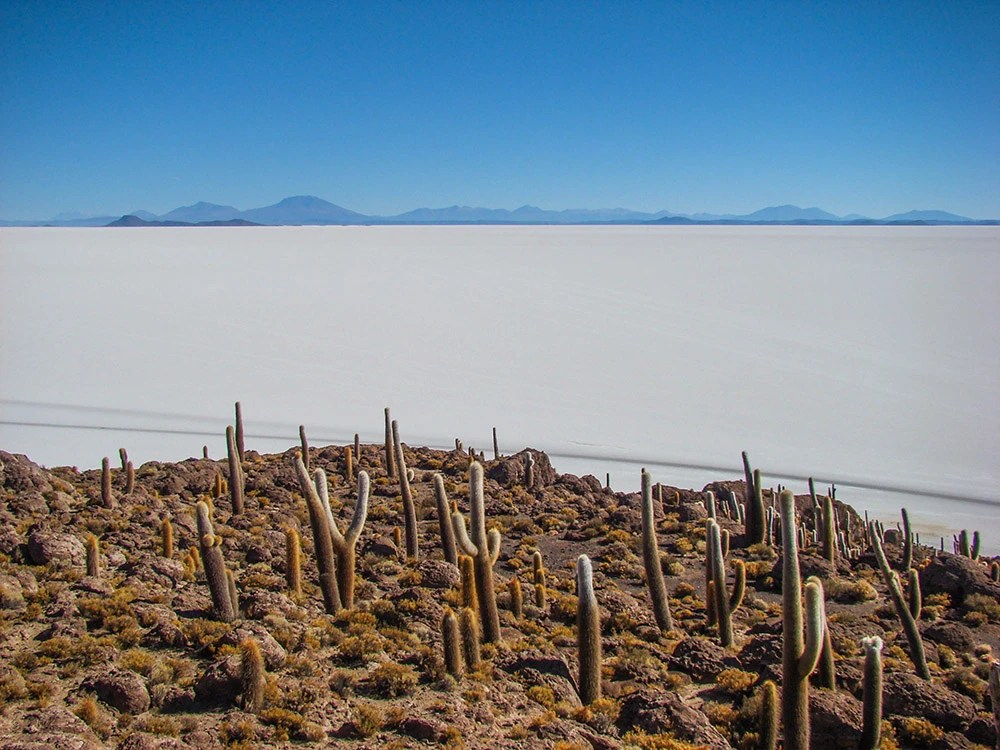
Incahuasi Island Visit
Details: Also known as the “Island of the Cactus,” Incahuasi Island is an ancient coral reef transformed into a hill, surrounded by a sea of salt. Rising from the salt flats, Incahuasi Island is a bizarre sight, dotted with giant cacti and offering panoramic views of the Salar. It’s a must-visit, both for the landscape and the unique ecosystem.
Flora and Fauna: This island is home to some of the world’s largest cacti, with some estimates suggesting they’re over 1,000 years old! Along with the cacti, you might also encounter native species like the viscacha (a type of rabbit-like rodent).
Viewpoint: There is a trail you can follow to explore a part of the island and its cacti. The hike to the island’s top is worth the effort as it provides panoramic vistas of the salt desert, especially enchanting during sunrise or sunset.
Entrance Fees: Note that there is usually a small fee to enter the island, which contributes to its maintenance.
Another Idea: If you are visiting Salar de Uyuni with a private driver and/or you happen to have some time to kill at Isla Incahuasi, I recommend going for a little hike all around the island. It takes around one hour, and you will have the immensity of the Salar all to yourself.

Venturing to Isla del Pescado
Details: Less frequented and less commercial than Incahuasi, Isla del Pescado offers similar breathtaking views but without the crowds. This island offers serene beauty and a sense of solitude, making it an ideal spot for those seeking tranquility.
Unique Landscape: Its distinctive fish-like shape can be appreciated when viewed from a distance or from an elevated position, which has earned it its name (‘Fish Island’ in Spanish).
Flora: Like Incahuasi, this island is populated with tall cacti and features unique rock formations, offering a mix of desert and oasis-like views.
Tips: Since it’s not on every tour itinerary, express your interest to your tour operator in advance or, as you’ve previously mentioned, hire a private driver to reach this hidden gem. That’s what I did, and it was amazing to scramble up the hill to the top of this pristine, wild island. Just be careful with the thorny bushes!
VIRTUAL TOUR – Salar de Uyuni
Hike on and around the famous Incahuasi Island, and discover the off-the-beaten-path Fish Island (3 panoramas).
The virtual tour opens in a lightbox. Use your mouse to move around the 360° panoramas.
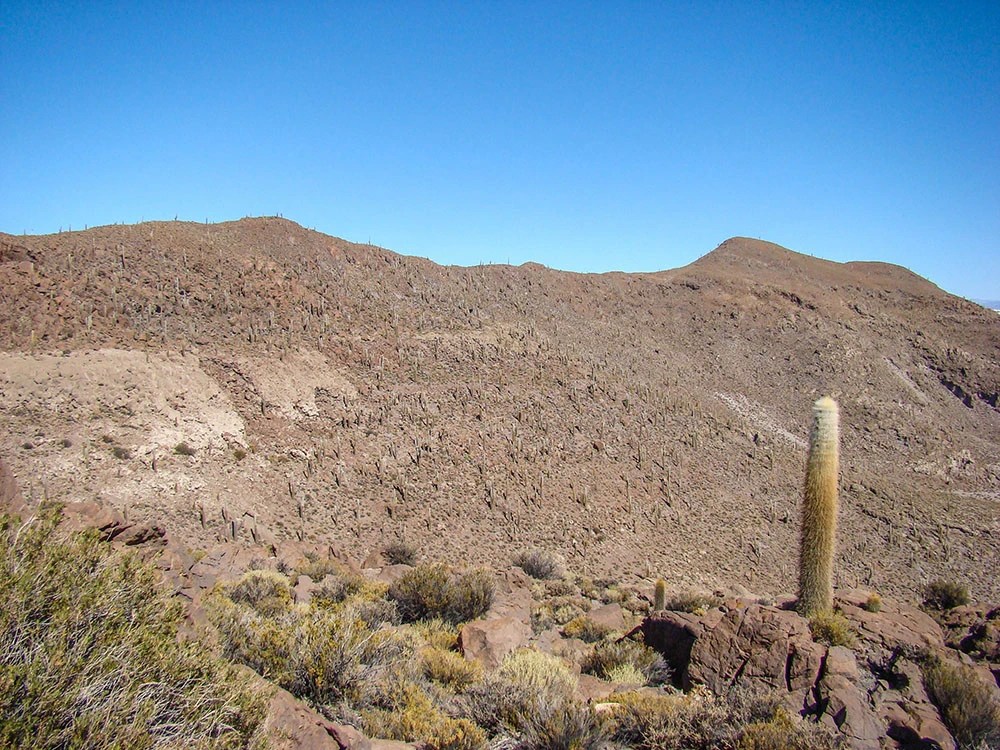
Visit the Palacio de Sal and the Flag Plaza
Details: The Palacio de Sal is the world’s first salt hotel, boasting walls, floors, ceilings, and even furniture made entirely from salt blocks harvested from Salar de Uyuni. It’s an architectural marvel and offers a unique accommodation experience, immersing visitors in the essence of the salt flats, and you can even check out salt sculptures.
Iconic Flag Plaza: Adjacent to the Salt Hotel is a spot where travelers from around the globe have planted their national flags, resulting in a colorful and vibrant display of international unity. It’s a testament to the universal appeal of the Salar de Uyuni and the shared journey of discovery.
Photography: The combination of the stark white salt hotel, the multi-colored flag plaza, and the vast salt flats horizon make for an excellent photography setting, capturing the essence of this unique travel destination.
Watch the Flamingos
Details: The salt flats near Coqueza are renowned for attracting several species of flamingos , including the Andean, James’s, and Chilean flamingos. These elegant birds flock to the region’s shallow waters, which are abundant in the microorganisms they feed on.
Best Viewing Spots: Apart from Coqueza and the Salar, lagoons such as Laguna Colorada and Laguna Hedionda (in the Eduardo Avaroa Reserve) are excellent habitats for these birds. The contrasting colors of these lagoons against the bright plumage of the flamingos make for spectacular photography.
Behavioral Observations: The flamingos’ unique feeding behavior, where they stir up the mud with their feet and filter-feed, can be observed here. Their graceful courtship dances during the mating season are also a highlight.
Tips: If bird-watching is a priority, consider hiring a local guide who knows the best spots and times to view these magnificent creatures. Also, visiting during the migratory season, from November to March, increases the chances of spotting large flocks.
Also read: Our Guide to Observing the Flamingos of Bolivia’s Salt Flats and Lagoons

Night Photography
Details: Salar de Uyuni, being far from major city lights, boasts incredibly clear skies. This, combined with the vast unobstructed horizon of the salt flats and the graphic shapes of the cacti, creates an unparalleled opportunity for astrophotography.
Milky Way Magic: The dense star clouds of the Milky Way, stretching across the sky, provide a stunning subject. With the salt flats beneath, photographers can play with reflections, creating mesmerizing compositions.
Meteor Showers and Celestial Events: Throughout the year, there are numerous meteor showers and other celestial events. Planning a visit around such occurrences can result in once-in-a-lifetime shots.
Tips: For optimal results, use a wide-angle lens with a large aperture (e.g., f/2.8 or wider) and a sturdy tripod. It’s essential to have a camera that performs well in low-light conditions. Shooting in RAW format allows for more flexibility during post-processing. Finally, familiarize yourself with the lunar calendar; a new moon phase ensures the darkest skies.

Wildlife of Salar de Uyuni
The salt flats might initially seem like an inhospitable environment, but a closer look reveals a surprising variety of life adapted to this unique ecosystem.
- James’s Flamingos: One of the rarer species of flamingos, these elegant birds can often be seen in the shallow waters of the Salar, especially during their breeding season.
- Vicuñas: These wild relatives of llamas and alpacas are known for their fine wool. They roam the areas surrounding the salt flats, grazing on the sparse vegetation.
- Andean fox: Also known as the culpeo, this fox can sometimes be spotted around the periphery of the salt flats, especially during the cooler parts of the day.
- Vizcachas: These rabbit-like rodents, belonging to the chinchilla family, are native to the Andes and can be seen around rocky outcrops near the salt flats.
Also read: 12 Incredible Wild Animals in Bolivia

- Giant Cacti: These cacti ( Echinopsis atacamensis subsp. pasacana ), native to Bolivia and Argentina, can grow up to 10-12 m / 32-39 ft tall. They bear rose-white flowers in spring and summer, and the fruits are edible. The pasacana subspecies is distinguished from the Chilean subspecies ( E. atacamensis subsp. atacamensis ) by the fact that is it usually branched. The Chilean subspecies is often unbranched and grows less tall. They are very slow-growing, only 1 cm / 0.4 inch per year on average.
- Quinoa: Not just a trendy health food, quinoa plants grow in the higher altitudes around Salar de Uyuni. The region is known for its many colored varieties of this crop.
- Llareta: These are dense, moss-like plants found in the high-altitude regions of the Andes. They grow extremely slowly and can be several thousands of years old. Their compact shape helps conserve moisture.
Salar de Uyuni Overnight Private Tour: Itinerary Suggestion
Here I will briefly describe what I have done for my own private tour to the Uyuni Salt Flats so you can gain some insight and ideas if you wish to do the same.
Day 1 – Uyuni Salt Flats: Uyuni → Colchani → Incahuasi Island → Fish Island → Coqueza
You will leave from the town of Uyuni and head to the salt flats. You can stop at the same places where tour groups go, but since you have your own driver, you can take the time to see these places more in-depth. For example, in Colchani, I could wander in the area where the locals harvest the salt.

Then, go to the Incahuasi Island. It is the most touristy spot on the Salar, but unmissable. You can follow the tourist trail that ventures inside the cactus forest to get a good idea of what the place looks like and amazing panoramic views of the salt flats;
While I was there, I decided to hike all around the island, it took me an hour. And for the first time, I was all alone in the immensity of the Salar de Uyuni, an amazing feeling! I would definitely recommend anyone to do the same!

After that, you can start going off the beaten track. My driver took me to the Isla del Pescado (the Fish Island), the largest island on the salt flat. This time, there was no hiking trail, no restaurant, and no one. Pure wilderness. I hiked up the island among thorny shrubs and another cactus forest to a high point, from where I could enjoy a fabulous panorama of the Salar and the nearby Tunupa Volcano.
It is at the foot of this volcano, in the village of Coqueza, that I spent the night, in a hotel built with bricks of salt. On the way, we stopped by other smaller “islands”. From Coqueza, a flock of flamingos was nearby as the sun was setting on the salt flats, a beautiful birdwatching and photography moment.

Day 2 – Coqueza & Tunupa Volcano → Crossing the Salar → Uyuni
On the morning of this second day, my driver and I climbed the slopes of the Tunupa Volcano stopping just before its colorful crater. After that, the climb becomes more technical and required gear that we didn’t have. But it doesn’t matter, the goal was to appreciate the sheer size of the Salar de Uyuni, from this high point. I could see all the islands I had visited, including the small Incahuasi Island, far away in the distance.

The way back to Uyuni was pretty cool as well, I asked my driver to stop when we were near the center of the salt flats, to experience its immensity. Your world is just divided into 2 parts. 360 degrees of pure white salt in the bottom half, and pure blue sky in the top half.
My driver left me in Uyuni to continue my journey in Bolivia. After having experienced this, I really wish to go back to Bolivia and do a much longer private tour around the salt flats and the Altiplano. The cost is not the same of course, but the feeling of exclusivity is priceless.

Practical Tips for Travelers
A trip to Salar de Uyuni is a journey like no other. To ensure you make the most of your visit, and to keep inconveniences to a minimum, here are some practical tips:
Altitude Acclimatization : Uyuni is located at an elevation of around 3,650 meters (almost 12,000 feet). Some travelers might experience altitude sickness. I recommend spending a day or two in a city like La Paz or Potosí before heading to the salt flats, to acclimatize. Drinking lots of water, avoiding alcohol, and consuming coca tea can also help alleviate symptoms.
Sun Protection : Given the vast, reflective nature of the salt flats, sun protection is essential. High SPF sunscreen, sunglasses with UV protection, and a wide-brimmed hat are must-haves.
Stay Hydrated : The arid climate can be dehydrating. Always carry a refillable water bottle, and drink frequently.
Footwear : Opt for comfortable, closed shoes. If visiting during the wet season, waterproof boots can be beneficial due to the water on the salt flats.
Cash and Supplies : Uyuni is a small town, and while it has basic amenities, it’s best to withdraw cash in a larger city beforehand. Additionally, stock up on any special supplies or snacks, as variety can be limited.

Where to Stay & Eat
Uyuni offers a range of accommodations, catering to various budgets and preferences.
Salt Hotels : Unique to this region are hotels made entirely of salt blocks. These provide a unique lodging experience, combining rustic charm with modern comforts. Some popular options include Palacio de Sal and Hotel de Sal Luna Salada.
Traditional Accommodations : Apart from salt hotels, there are several other lodgings available, from budget hostels to more upscale options. Hotel Jardines de Uyuni, for instance, offers comfortable rooms and a pleasant garden setting.
Eateries : Uyuni’s culinary scene, while not extensive, offers some delightful spots to savor local and international dishes. Places like Minuteman Revolutionary Pizza serve up hearty meals, perfect after a day of exploring.
For local flavors, the town’s central market is a hub of activity, with vendors serving Bolivian staples like salteñas (savory pastries) and llajwa (a spicy tomato salsa).
Whether you’re dining in a restaurant or enjoying street food, always remember to drink bottled water and ensure that any fruits or vegetables are properly washed or cooked.

Photographic Wonders and Tips
The vast expanse of Salar de Uyuni is a canvas for photographers, offering unparalleled opportunities to capture the beauty of nature and play with perspectives. Here are some phenomena and tips to make the most of your photo sessions:
- Mirror Effect : The wet season transforms the salt flats into the world’s largest mirror. Capture stunning reflections of the sky, especially during sunrise and sunset. A polarizing filter can help manage reflections and enhance colors.
- Perspective Shots : The uniformity of the landscape allows for creative forced perspective photos. Bring props or toys, and experiment with positioning to create fun, illusionary shots.
- Night Photography : With minimal light pollution, the salt flats are an astronomer’s dream. Capture the Milky Way, star trails, or even meteor showers. Use a tripod and a wide-angle lens with a wide aperture for best results.
- Landmarks : While the endless horizon is captivating, don’t miss out on photographing landmarks like the Dakar Rally monument, the Playa Blanca salt hotel, and the flags representing various nations near the entrance of the salt flats.
- Battery Backup : Cold conditions can drain batteries quickly. Bring extra batteries and keep them warm.
- Lens Protection : Salt can be corrosive. Ensure you have lens protection and clean your equipment after the visit.
- Golden Hours : As with most outdoor photography, early mornings and late afternoons offer the best light.

What To Pack For The Uyuni Salt Flats
Packing Checklist for Salar de Uyuni
Preparing for the salt flats requires a mix of essentials to deal with the unique climate and terrain. Here’s a suggested packing list:
- Layered Clothing : Temperatures can vary dramatically. Pack light layers for daytime and warm, insulated clothing for the chilly nights.
- Waterproof Boots : Especially if visiting during the wet season.
- Warm Hat and Gloves : Essential for nighttime and early morning excursions.
- Sunglasses and Sunblock : The reflective nature of the flats intensifies sunlight.
- Reusable Water Bottle : Stay hydrated in the dry climate.
- Camera Gear : Extra batteries, lens protection, tripod for night shots.
- Sleeping Bags: If you don’t trust the hygiene of blankets and sleeping bags provided by travel agencies and hotels, you can bring your own sleeping bag. (But I didn’t and it was fine). Again, make sure it can withstand low temperatures, if you go in June-August.
- Headlamps: It is always useful to have a good headlamp for evening and nighttime
- Snacks : While tours usually include meals, it’s good to have some personal snacks.
- Personal Medications : Including altitude sickness pills if you’re prone to it.
- Cash : Not all places accept credit cards, and ATMs might be scarce.
- Swimwear : Some tours include visits to hot springs.
- Biodegradable Wet Wipes : Useful for quick freshening up.
- Portable Charger : Ensure your devices are always powered up.
Frequently Asked Questions About Salar de Uyuni
Salar de Uyuni spans approximately 10,582 square kilometers (4,086 sq mi), making it the world’s largest salt flat.
No, while Salar de Uyuni is the largest and most famous, Bolivia is home to several other salt flats, including Salar de Coipasa.
During the rainy season, a thin layer of water covers the salt flats. This transforms the vast expanse into a giant mirror, reflecting the sky.
Yes, it is generally safe, but it’s vital to choose a reputable tour operator and be prepared for altitude changes. Always follow guidelines and respect the local environment and culture.
While it’s possible, it’s not recommended unless you’re with a guide or have experience navigating such terrains. The vast, featureless landscape can be disorienting, and vehicles can damage the salt crust.
The crust’s thickness varies, but it averages about 2 meters (6.6 ft) deep.
Yes, there are a few salt hotels made entirely of salt blocks, providing a unique lodging experience.
Apart from tourism, locals harvest salt and extract lithium from the Salar. Bolivia holds a significant portion of the world’s lithium reserves, essential for batteries.
Given the vast temperature variations, layering is key. Bring sun protection for the day and warm clothes for the chilly nights.
Julien is an exploration-minded, curiosity-driven traveler and blogger. On a mission to witness the planet's natural beauty and diversity, he shares his experiences on this website through articles, videos, and photography, including interactive virtual tours.
Fascinated by animals and plants since young, he is also fond of outdoor and so-called extreme sports, often discovered while traveling and practiced back at home where he focuses on improving his knowledge and skills - so he can explore further on the next trip!
More About Me
You May Also Like

Bolivia’s Diverse Climate: From Tropical Rainforests to Icy Altiplano Peaks

27 Things Bolivia Is Known and Famous For

Meet The National Animal of Bolivia, The Llama

Tunari Peak – A Challenging High Altitude Hike, Bolivia

Is Bolivia Safe to Travel? Here’s Everything You Need To Know

The Freezing Night I Was Saved by a Drunk Guy
Leave a comment cancel reply.
Notify me of follow-up comments by email.
Notify me of new posts by email.

How to Visit the Salar de Uyuni Salt Flats in Bolivia
L ong before knowing exactly what it is, pictures of Bolivia's heavenly salt flats suck a gasp right out of anyone. The largest salt flats on earth, the Salar de Uyuni spans over 10.5 kilometres (4,000+miles). In the wet season, a layer of rainwater creates a mirror-like surface as smooth as glass. In the dry season, its geometric salt patterns imprint the earth, seemingly stretching beyond the horizon. Put simply, this place looks like a whole other planet.
Without a doubt, visiting the Salar de Uyuni is truly a once in a lifetime travel experience (or in my case, twice ). In fact, I place Bolivia's salt flats in my top five travel experiences ever – and that's after 5+ years of globetrotting. Having visited the Salar de Uyuni in both the rainy and the dry season, I'm going to tell you exactly how to see this majestic place. Here's how to visit Bolivia's salt flats!
- 1 Salar de Uyuni: The essentials
- 2 Getting There
- 3 Where to Stay
- 4 How to visit the Salar de Uyuni
- 5 The Thrifty Gist
Salar de Uyuni: The essentials
The Salar de Uyuni is located in Bolivia's Altiplano. Despite being remotely located, visiting the salt flats is feasible thanks to the abundance of tours that operate here. Visits can be done as a day trip or a multi-day tour, with lengthier tours venturing further into the remote landscapes up to the Chilean border. You can browse tours along with reviews on GetYourGuide , all of which offer free cancellation.
Know before you go
Like much of Bolivia, the salt flats are highly elevated, positioned at 12,000 feet (3,660 meters) above sea level. Altitude sickness is not uncommon for travellers. Give yourself a few days to acclimatize , stay well hydrated, and follow the locals suggestion and drink coca tea.
While daytime temperatures can be warm and sunny, the nights here are cold, sometimes reaching sub-zero temps. Bring layers and prepare for chilly nights. For daytime, pack sunscreen and sunglasses for the intense brightness of the flats. Be sure to charge up your camera – you'll find yourself constantly wanting to snap pictures of this incredible place.
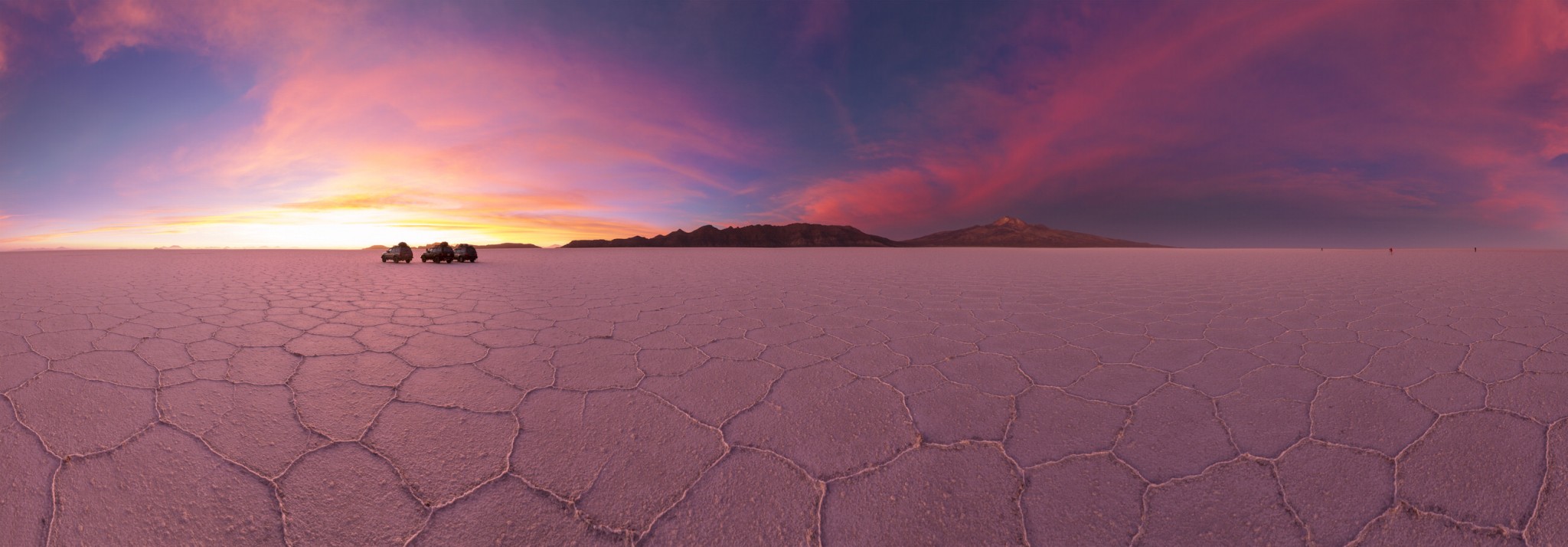
Getting There
Bolivia is a landlocked nation with La Paz being its third largest city. If arriving in Bolivia via another country, you will most likely fly into La Paz first. Uyuni however, is the closest city to the Salar de Uyuni , and is the starting point for most journeys to the salt flats. You can reach Uyuni by plane, train, or bus. You can also begin your salt flats tour directly from La Paz, Tupiza, or Sucre (more on these tour options later).
Bus tickets can be booked online or bought in person in your respective starting city. In general, most major cities in Bolivia offer bus routes to Uyuni, though they are not always direct. You can book online at Tickets Bolivia for some of the most popular routes.
Ticket pricing varies on the distance travelled and bus type/class. Some buses include toilets, heating, snacks, fully-reclining seats (“full cama”), or half-reclining seats (“semi cama”). Buses without toilets do make pitstops. Bus companies have varying reputations, with some notoriously worse than others. It is worth paying for a better bus line that has good reviews from travellers (check TripAdvisor forums and reviews).
How to get to Uyuni from La Paz
From La Paz you can reach Uyuni by flight, train, or bus . The train option involves a bus to Oruro, then a transfer to a train. Information on scheduling and how to obtain tickets is provided below.
If you want to start a tour directly from La Paz to the Uyuni salt flats, you can browse tours with reviews and book online with immediate confirmation on Viator and GetYourGuide . Otherwise, you'll want to take a bus, train or flight to Uyuni first and depart on your tour from there.
Flight scheduling & prices
There are daily local flights from La Paz to Uyuni. I've done both the flight and the bus option from La Paz to reach Uyuni. Flying is more comfortable and quicker, though bussing is cheaper.
Airline Amazonas and Boliviano de Aviacion are the main airlines that fly between La Paz and Uyuni. Airline Amazonas operates flights daily from La Paz to Uyuni departing at 7:15AM (arriving 8:00AM) and 7:30PM (arriving 8:15PM). Prices start around $115+ USD . Boliviano de Aviacion operates flights daily from La Paz to Uyuni departing at 8:05AM (arrive 9:05AM) and 7:10PM (arrive 8:10PM). Prices start around $170+ USD .
Pricing fluctuates greatly by supply and demand. It's generally recommended to book in advance to secure a good price, as this route is fairly limited.
When booking, give yourself wiggle room between your tour start time and your flight . If possible, fly into Uyuni the night before to be safe, or take an early morning flight. Flight delays and cancellations are not uncommon.
To book the cheapest flight price, we recommend selecting “Whole Month” in Skyscanner to visualize the cheapest dates to fly. Be sure to also check our flight hacks here and our guide to South American budget airlines and flight passes .
Bus tickets
To buy a bus ticket, book online or visit the bus station in La Paz on Uruguay Avenue. Both daytime and overnight buses depart from La Paz to Uyuni, which are ~10.5 hours (we did the overnight bus on our first trip). It is a typical South American bus experience in that it's a bit cramped and long, but not unbearable, and eliminates accommodation costs for one night.
Buses operate daily from La Paz to Uyuni, except during holidays or transit strikes (more on that below). Day time trips depart at 8:30AM and arrive in Uyuni at 9:20PM. Overnight buses generally depart around 8 or 9:00PM and arrive in Uyuni between 6-7:30AM the next day. Some routes are direct while others make transfers in Oruro or Potosi. Prices range from $14-$36 USD . All tourists must also pay a terminal tax (30 US cents) inside the bus terminal.
A note on buses: transit strikes and holidays (such as Christmas, Easter, and Carnaval) can result in bus station closures. Plan accordingly and when in doubt, ask hotel staff if there are anticipated strikes or holidays.
How to get to Uyuni from Oruro
Oruro has daily buses and trains to Uyuni, both of which can be booked online . The train is 7 hours long and departs on Sundays and Wednesdays only. Buses depart daily and involve a transfer via La Paz or Potosi.
How to get to Uyuni from Sucre
From Sucre you can take a bus to Uyuni ( $11 USD, 8-9 hours, book online ) and begin your tour in Uyuni. Alternatively, you can book a one day trip to the salt flats , which returns back to Sucre ( $150 USD ).
How to get to Uyuni from Tupiza
If departing your salt flats tour from Tupiza, you can get there from La Paz or other major cities, though not directly. From La Paz, for instance, you must take a bus to Sucre or Oruro first, then bus or train onwards to Tupiza.
Buses from La Paz run daily to Oruro ( $3.65 USD , ~4 hours, book online ) and Sucre ( $26 USD , 12 hours direct, book online ). You must then transfer onwards from either of these cities to Tupiza. Most of these routes run daily. Tours starting in Tupiza can be booked online .
Where to Stay
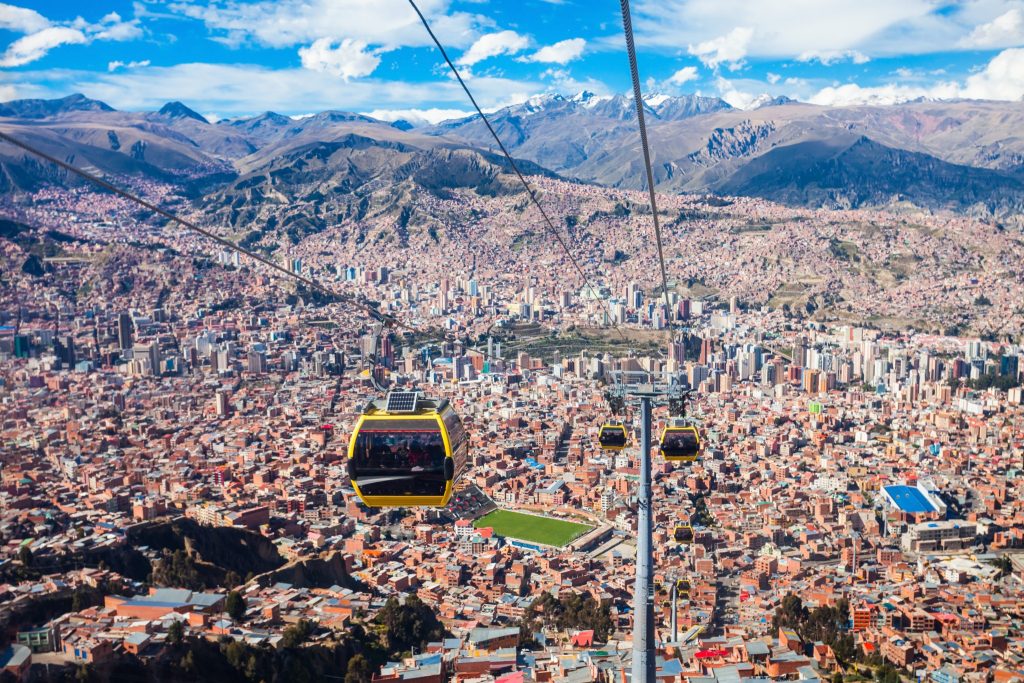
La Paz is a stimulating city that is cradled by snow-capped mountains. It is packed with vibrant markets, colourful colonial buildings, and plenty of activities. A visit here should include the city cable car , the colourful Valle de la Luna , the cholitas wrestling show (bizarre and truly unique!), and the world's most dangerous bike tour if you're feeling daring.
Due to Bolivia being the poorest nation in South America, your dollar will go quite far here. A private hotel room will set you back ~$23+ USD/night , while hostel dorms start at as little as $8+ USD per night . Some neighbourhoods in La Paz are noticeably safer than others. Check hotel reviews for visitor input on a hotel's location and neighbourhood vibes.
Sol Andino Hostal
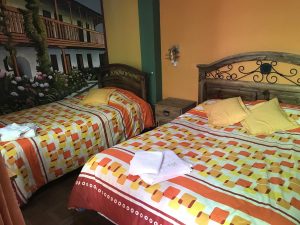
On my last visit to La Paz, I stayed at Sol Andino Hostal in the city. For $41 USD/night, my friend and I had a private room with an ensuite bathroom (you can get cheaper but we chose to treat ourselves to decent digs). Sol Andino is clean, includes a decent breakfast, is centrally located, and has helpful staff. The front desk is open 24-hours, so if you need to leave for an early flight for Uyuni (as we did), this is ideal for getting help ordering a taxi (which should be phoned, not flagged down in the street).
Location : Aroma #6 zona Rosario, Downtown La Paz, 9999 Price : $36+ USD per night ( compare prices across booking sites )
Residencial Latino
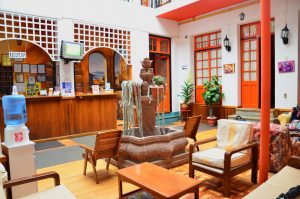
We stayed at the Residencial Latino on our first visit to La Paz. It has a bright courtyard, simple breakfast (included), helpful desk staff, and is also a good location for exploring the city. This is a cheaper downtown option that still has all the basics plus useful desk staff.
Location : Calle Junin n. 857, 9999 La Paz, Bolivia Price : Prices start at $17 USD/night (single room with shared bathroom), up to $58 USD/night for a triple room with an ensuite. ( compare prices across booking sites )
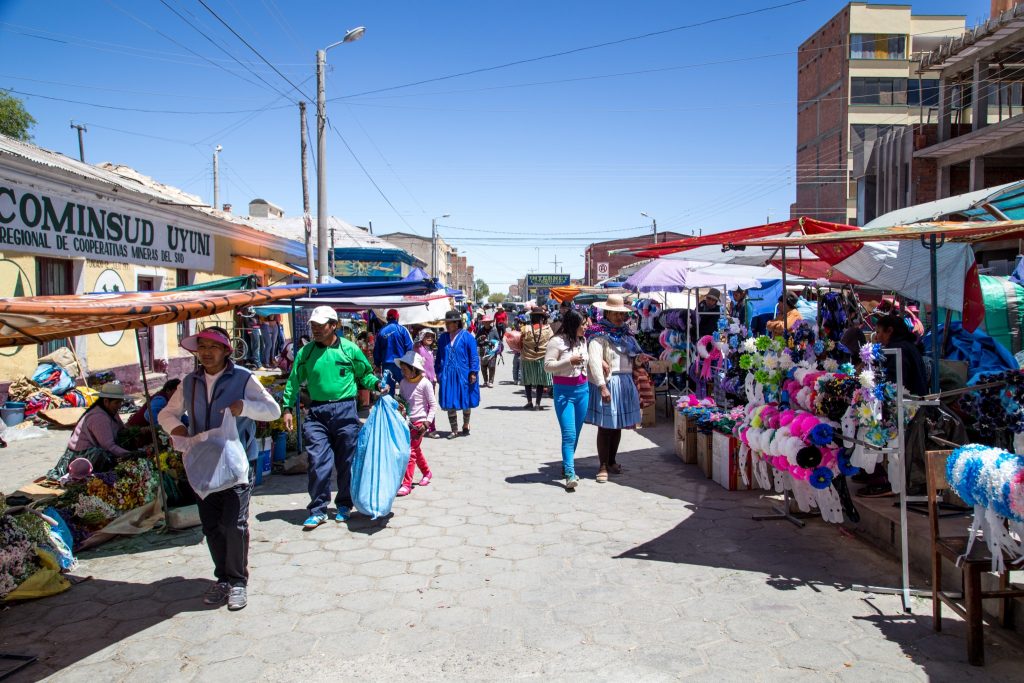
Uyuni is a small city located in the southwest of Bolivia. It's the closest starting point for a trip to the Salar de Uyuni . There are a few attractions including a street market, a small archeologic museum, and the nearby train cemetery. To avoid rushing on arrival, it's not a bad idea to spend a day or two in Uyuni before taking off for your tour if departing from here.
Hostal Castillo de Liliana
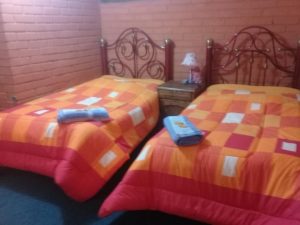
We stayed overnight at the Hostal Castillo de Liliana on our first visit to the salt flats (the second time we booked a flight from La Paz and departed on the same day). This hostel is simple, clean, cheap, and has a hearty breakfast. Uyuni is a small town, so most accommodations are “central”, including Liliana. It is possible to stay in fancier digs, including one of the nearby salt hotels , but for us this was a perfect budget option. If your wallet can't afford the overnight stay at a salt hotel, you can at least have dinner there .
Location : Av Colon entre Bolivar y Avaroa No 148, Uyuni, Bolivia Price : $18+ USD/night for a single room with a private bathroom
Oruro, Sucre, and Tupiza
We haven't personally departed to Uyuni from these cities, so we don't have firsthand recommendations for hotels and hostels here. That said, if you search on HotelsCombined , you will see a huge number of accommodation options across all major booking sites, so you can easily see the best prices and reviews all from one website.
Okay, now that you've got the basics, here's the rest of the steps you need to know on how to plan a trip to Bolivia's Salar de Uyuni!
How to visit the Salar de Uyuni
1. choose the best time to go to the salar de uyuni.
Before booking a tour, you need to decide which time of year you want to visit. What is considered the best time to visit the Salar de Uyuni really depends on what you want to see , as each season offers different visuals. One thing's for certain – the scenery here is breathtaking all year round .
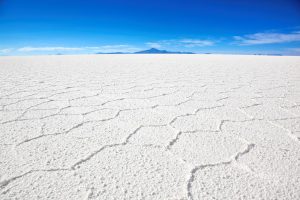
Dry Season (May to October)
- Salt flats have dry, geometric shapes spanning for miles
- Shorter but sunnier days and generally better road conditions
- Access to Cactus Island (Isla Incahuasi) or Fish Island (Isla del Pescado) is possible. These are two small, hilly islands with tall cacti and rock formations
- Daytime temperatures range from 15 to 27°C (60 – 80ºF)
- Colder nights expected, especially in June and July with temps as low as 0° to – 15° C (32° – 5° F)
- Generally less humid and more pleasant temps in the lowlands
- In August and September, farmers burn-off to clear overgrown forests which can produce a thick smoke in the area
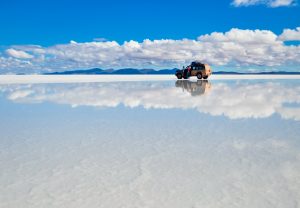

Rainy Season (November to March)
- A few centimetres to several inches of rain creates an incredibly perfect mirror-like surface stretching into the horizon
- Daytime temps range from 15 to 27°C (60 – 80ºF), with cooler temps at night. The east is warm and humid, the west is dryer, and the south is milder
- Access to Cactus Island ( Isla Incahuasi) and Fish Island (Isla del Pescado) is not possible due to water levels
- Days are cloudier and roads are muddier
- Countryside is greener and full of native plants and flowers
- Certain times of the rainy season generally get less tourists
2. Pick a tour duration
Salt flats tours are run as a one day or multi-day visits. Single day trips typically visit the salt flats, salt hotel, and train cemetery. Multi-day tours include this, plus travel further through Bolivia's landscapes, including highlights like Laguna Colorada and the Salvador Dali Desert.
Multi-day tours are highly recommended, as the landscapes and wildlife in this region are outstanding . Desert dunes, apple-red and neon turquoise lakes, wild flamingoes, volcanoes, hot springs, and adorable llamas are just some of what's to be seen. In my opinion, if you're already in this corner of the world, you'd be remiss not to see more of Bolivia's astounding scenery.
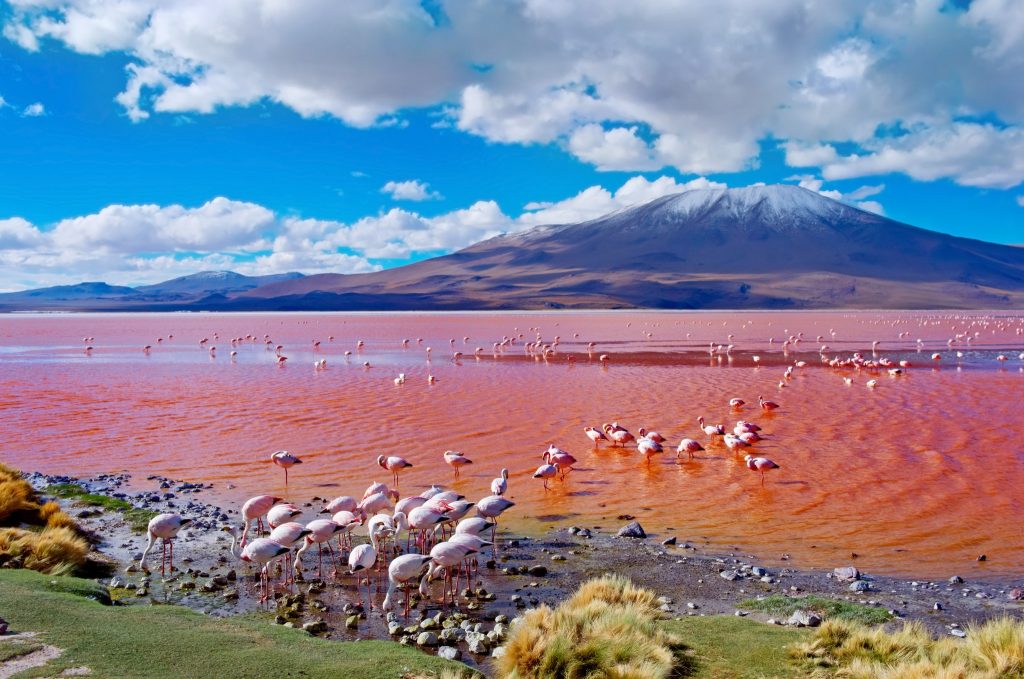
Both day and multi-day tours to the salt flats are round-trip from their departure point. However, most of the multi-day tours that end near the Chilean border allow passengers to connect onwards to San Pedro de Atacama, Chile by bus. I've done this on both my visits, and it's a great way to reduce transport costs between countries (plus Atacama is definitely worth visiting). If you wish to transfer onwards to Chile, be sure to arrange this with the tour company beforehand.
3. Choose a tour departure point & budget
Most tours operate directly out of Uyuni , though tours can be arranged from La Paz , Sucre , and Tupiza . Uyuni is the cheapest departure point for visiting the salt flats, with day tours being the least expensive option.
Tour prices vary based on tour group size, duration, company reputation, vehicle quality, and accommodation standards. While larger tour groups are cheaper, one disadvantage is that you must always wait for all of your group's vehicles. This can cause significant delays if a car in your group breaks down. Accommodation also greatly affects tour cost, with pricing varying based on whether you choose basic (dormitory style hostels), mid-range (heated private room hotels), or high-end digs (such as the salt hotels).
Tours from Uyuni
Uyuni has the most variety of tours, including one day, three day, and four day trips. Day tours are abundant, including sunrise tours with breakfast, stargazing tours (highly recommended in the wet season as the star reflect on the ground water), sunset tours with wine, bike tours, and more. Day tours start from $75 USD, multi-day tours start from $149 USD.
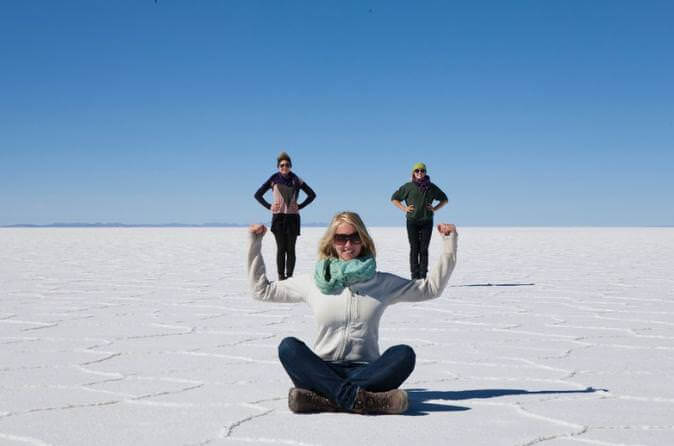
Uyuni Salt Flats Full Day Tour ($109 USD)
This tour is operated by Red Planet Expeditions. We used this company for our tour and highly recommend them!
The main difference between these 3-day tours is the accommodation. The first 2 tours are in basic hostels with dormitory style sleeping, while the last tour gives you private rooms in heated hotels.
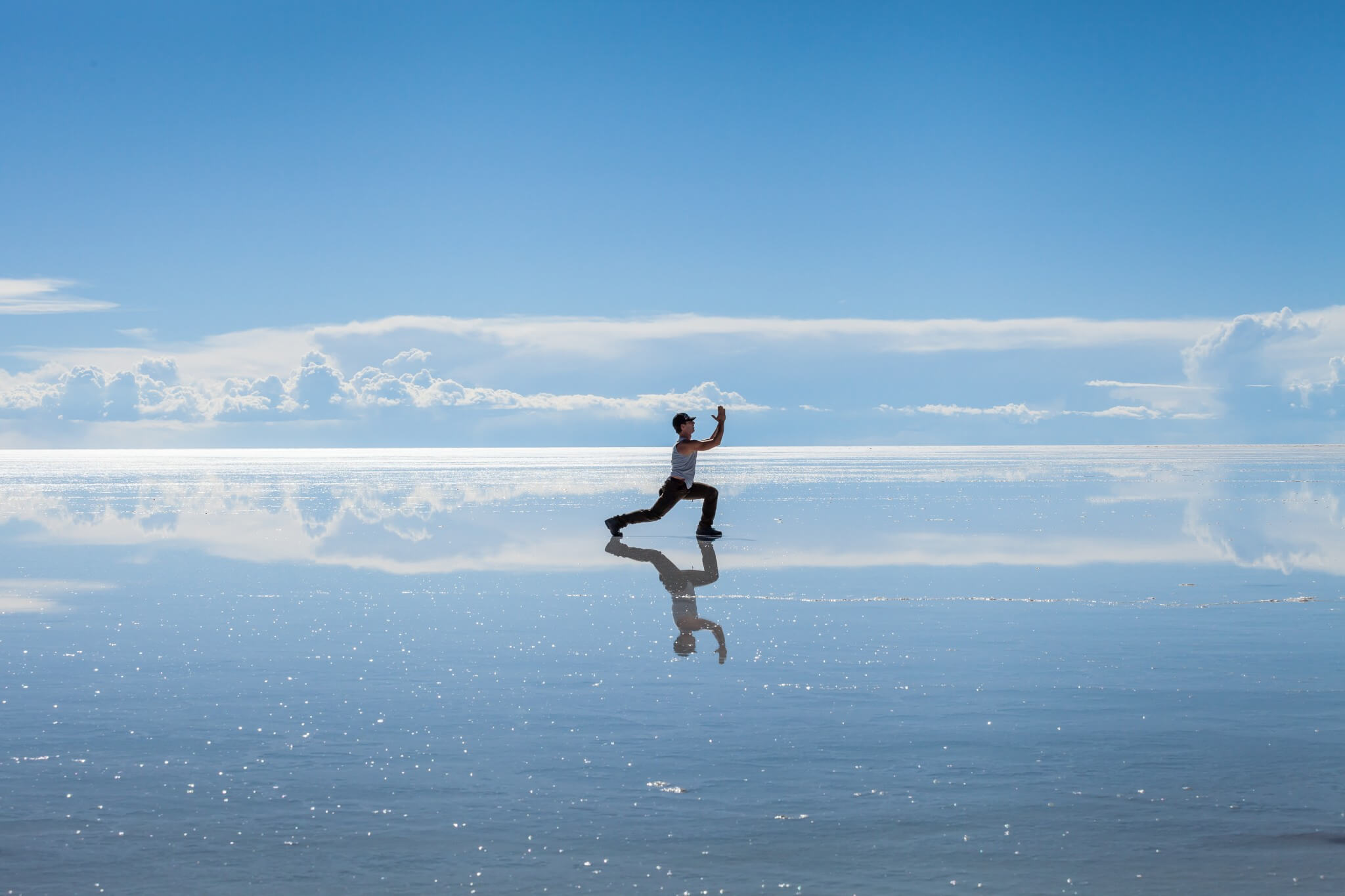
3-Day Salar de Uyuni ($149 USD)
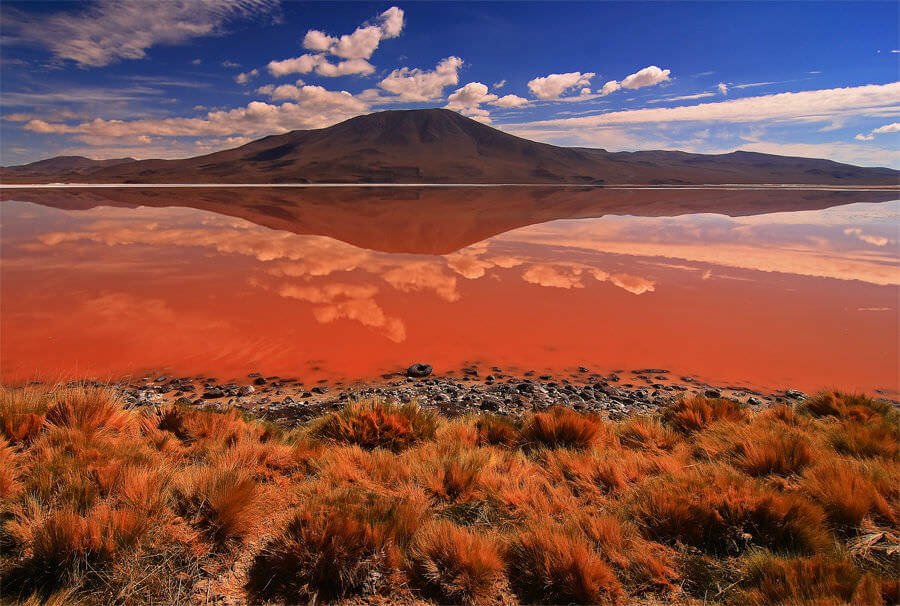
3-Day Salt Flats and Colored Lagoons Tour from Uyuni ($270 USD)
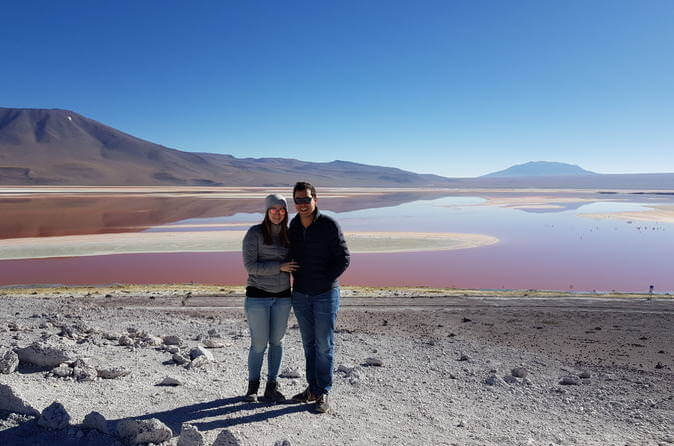
3-Day Salar de Uyuni and Laguna de Colores from Uyuni ($999 USD)
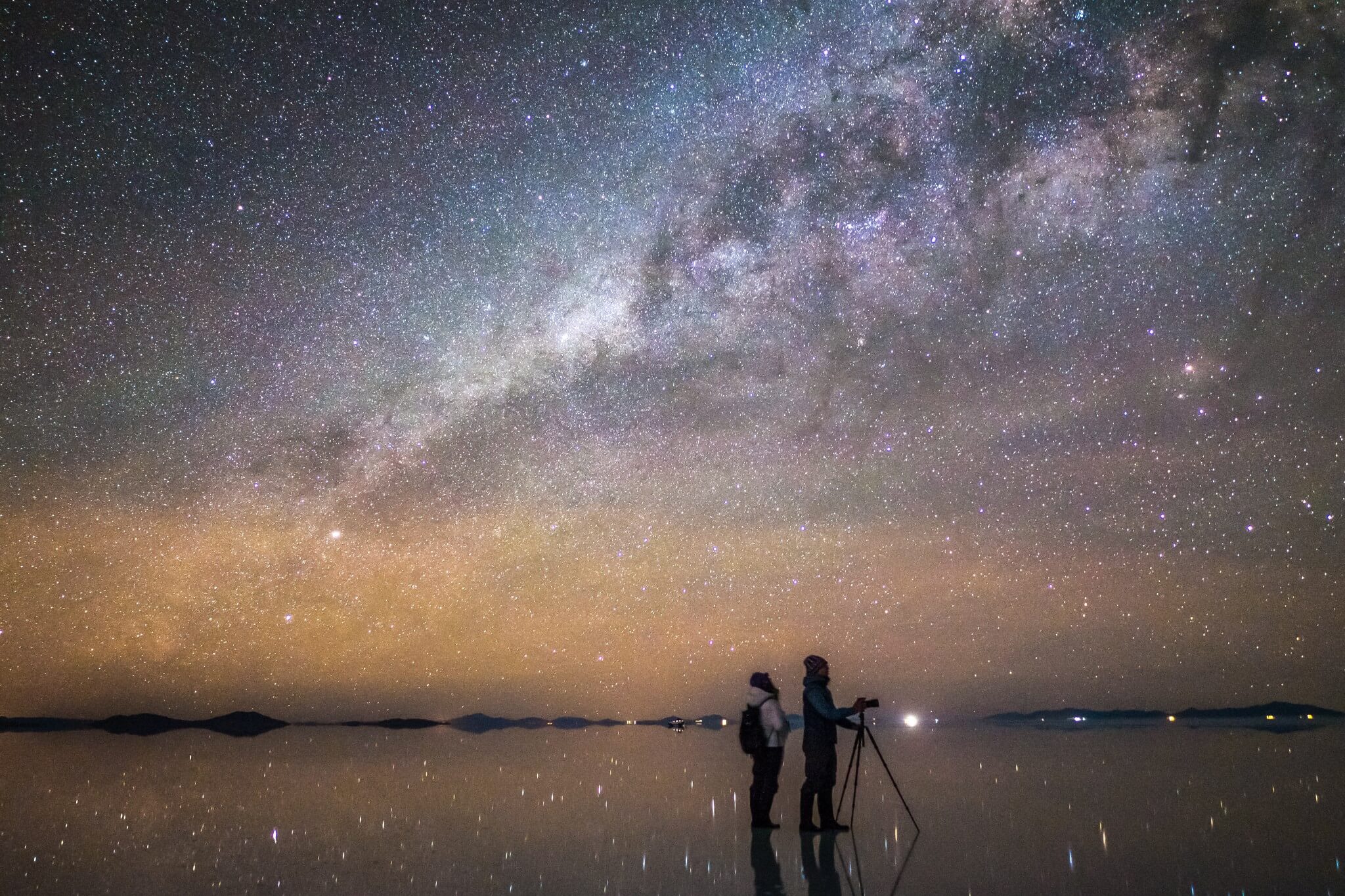
Tours from La Paz
Day tours can be done from La Paz with flights or buses included (starting at $200 USD). Two day tours with flights start at $. Both of these options are quite packed and pricey. Tours from La Paz tend to include a visit to the salt flats, salt hotel, and train cemetery.
One Day (Bus or Flight)
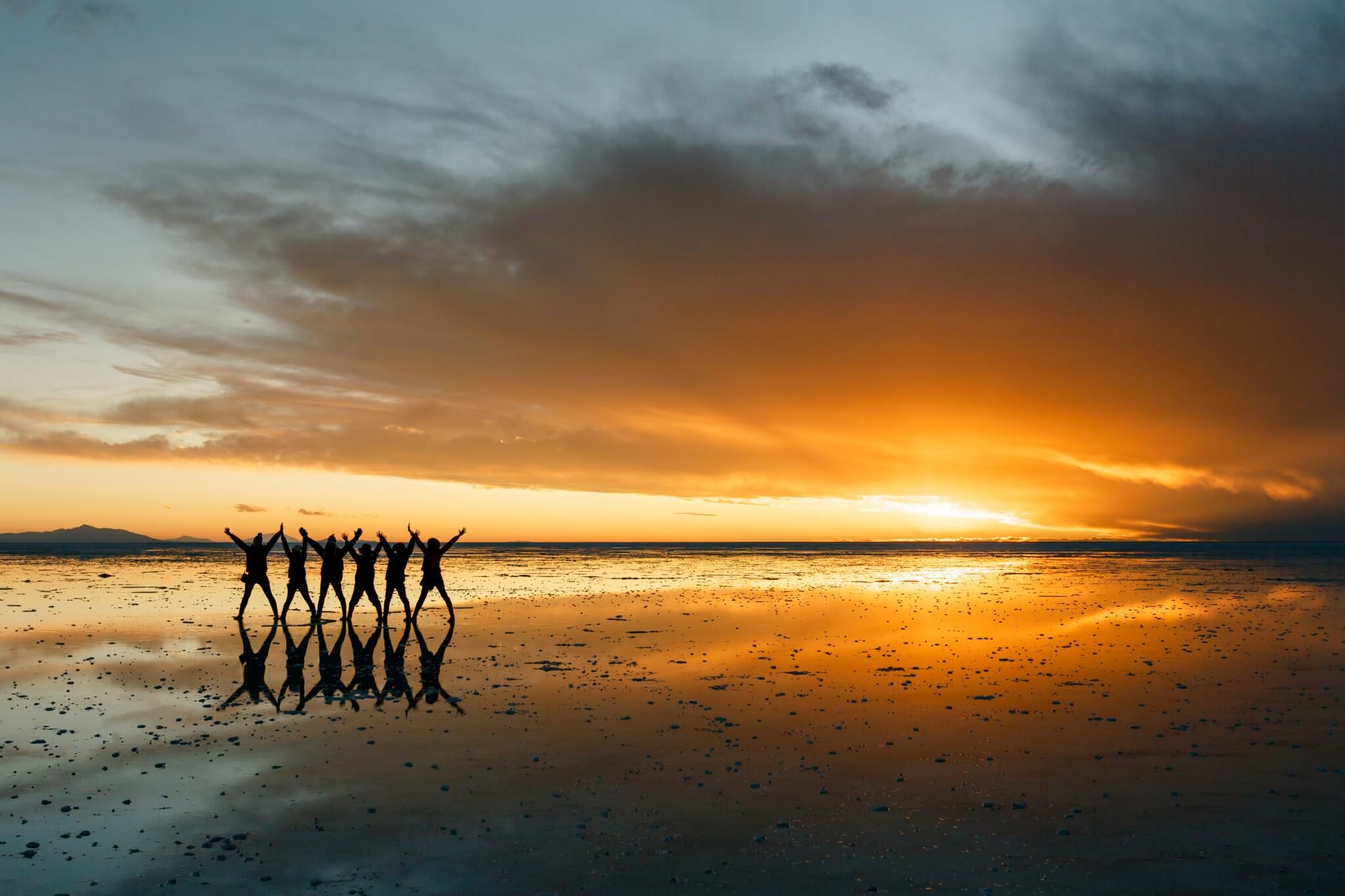
- Visit to Uyuni Salt Flats from La Paz Bolivia by Bus ($200 USD)
- Private Day Trip from La Paz to Uyuni Salt Flats ($699 USD)
- Uyuni Salt Flats Luxury Tour from La Paz ($799 USD)
- Uyuni Salt Flats Day Trip by Air from La Paz ($891 USD)
Two Day (Flight)
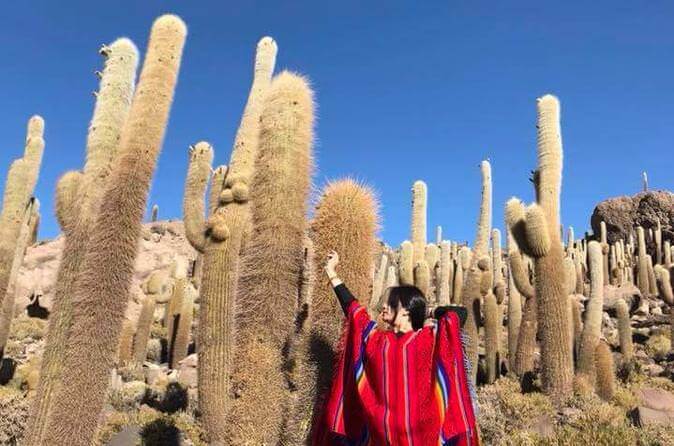
2-Day Uyuni Salt Flat with Overnight in Hotel VIP Including Flight from La Paz ($890 USD)
Three day (flight).
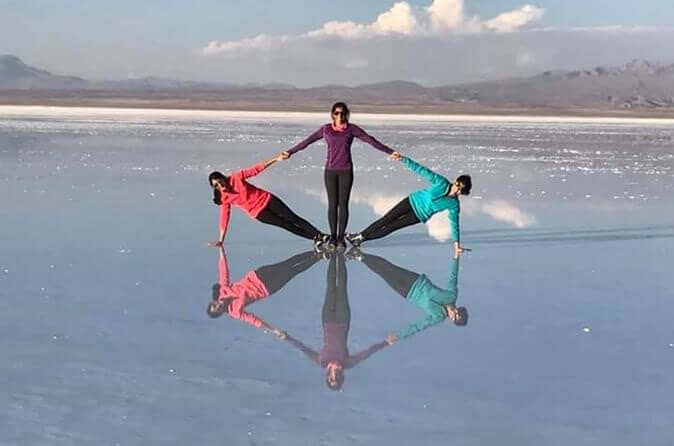
Luxury Uyuni Salt Flats 3D 2N Tour From La Paz by Flight ($1200 USD)
Four day (bus): la paz > uyuni > atacama.
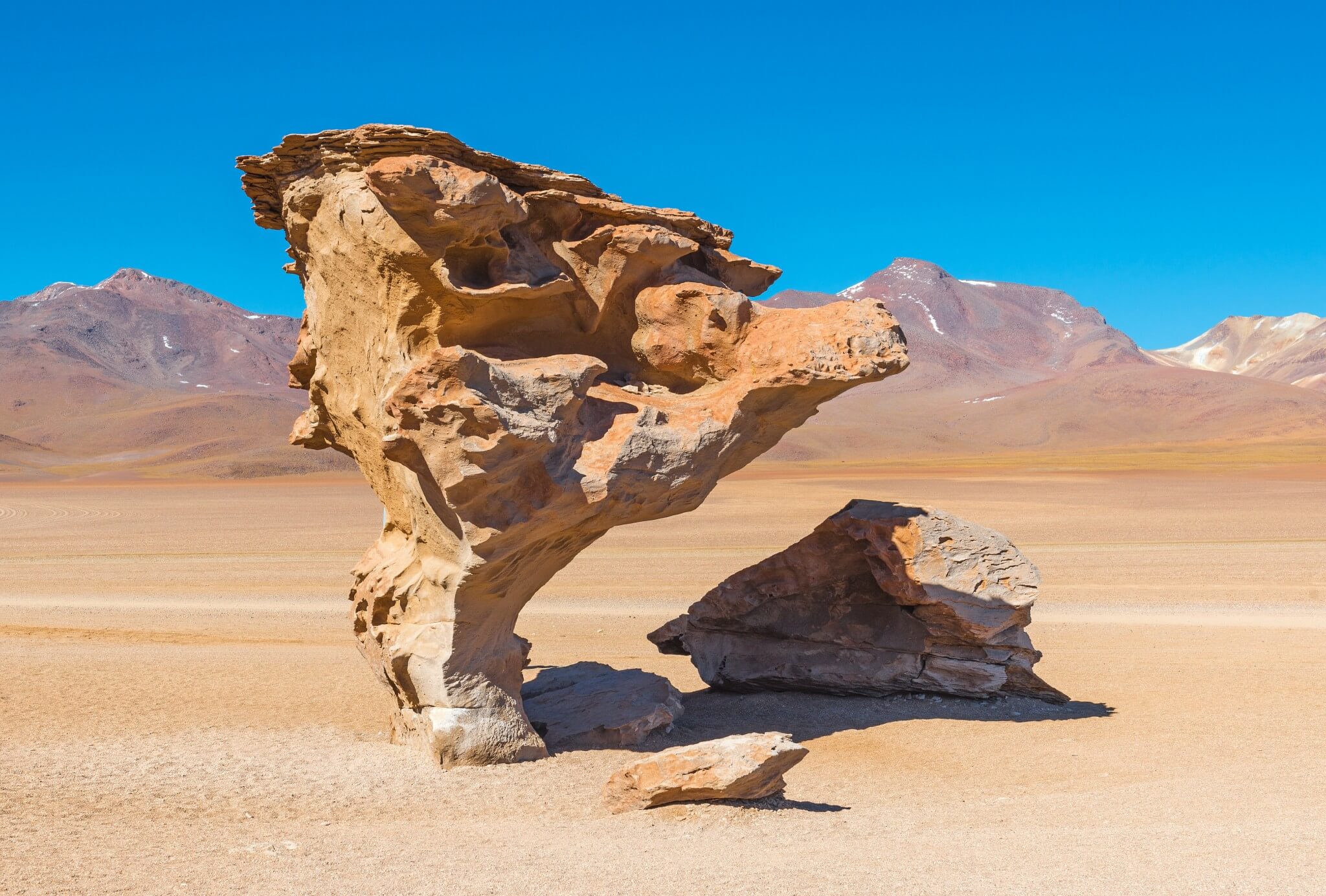
4 Day Uyuni Salt Flats from La Paz to Atacama in Chile ($438 USD)
If travelling through South America, this is a great way to get a tour, accommodation, and transportation all in one package. The Atacama Desert in Chile is well worth a visit, and is a good departure point for heading further south in Chile towards Santiago.
Five Day (Bus)
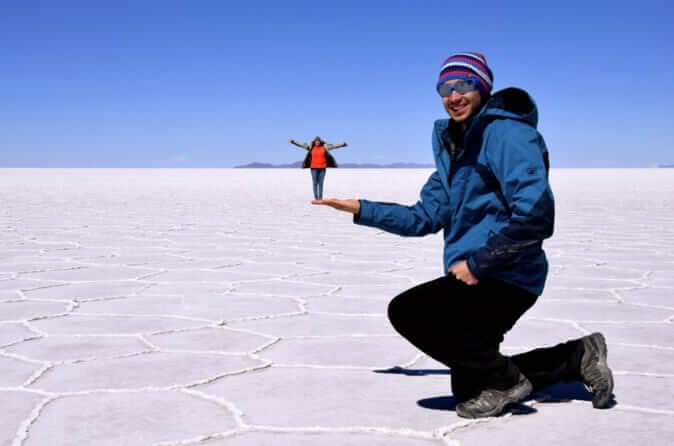
5 Day Uyuni Salt Flats and Desert Adventure from La Paz ($497 USD)
Tours from sucre.
A less common approach is to visit the salt flats from Sucre as a round-trip. Disclaimer: this is a packed trip. It involves an overnight bus from Sucre to Uyuni and visit the salt flats, salt hotel, and train cemetery the following day. At the end of the day tour you then take another overnight bus returning back to Sucre the next morning.
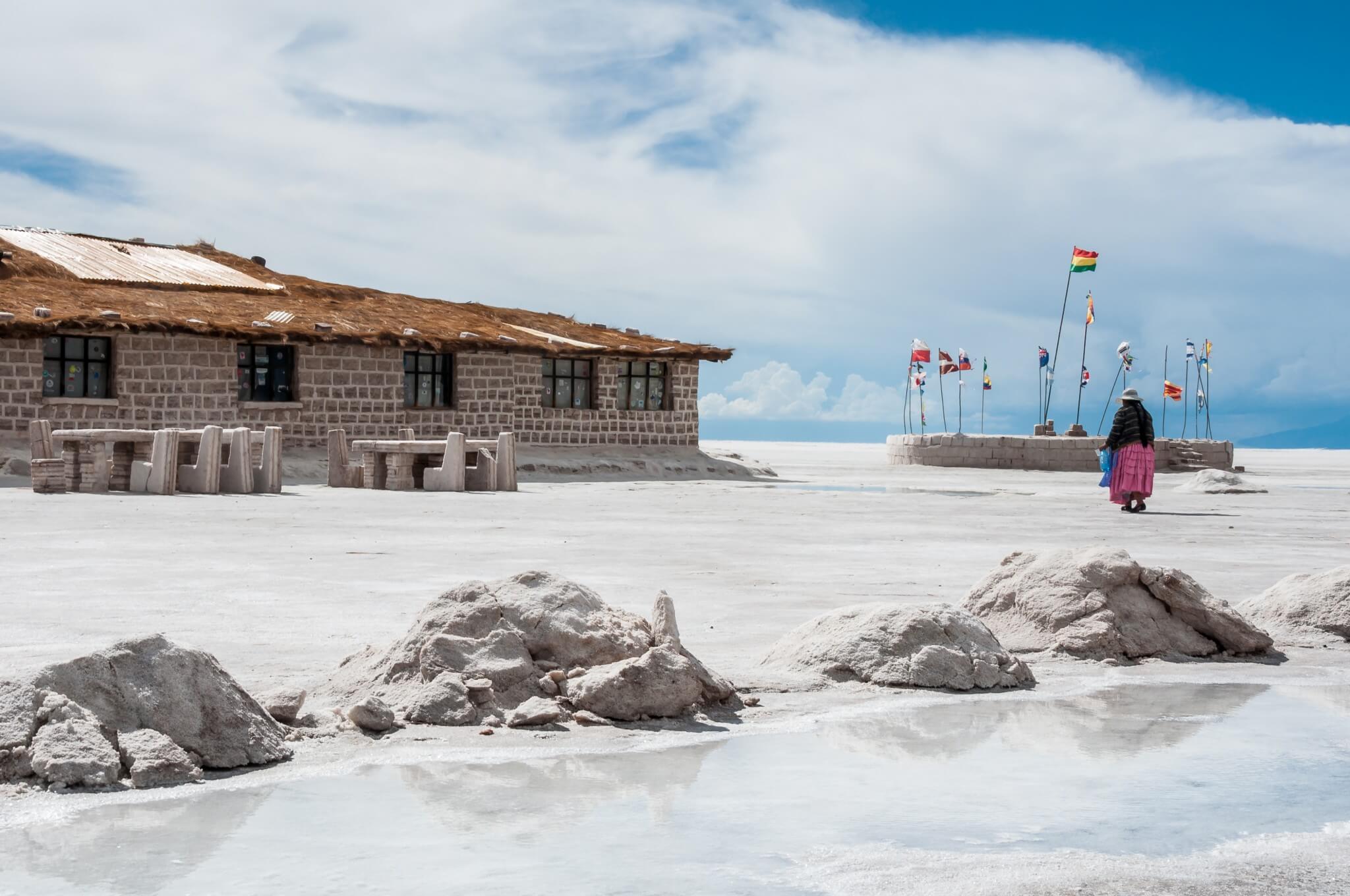
Visit to Uyuni Salt Flats from Sucre by Bus ($150 USD)
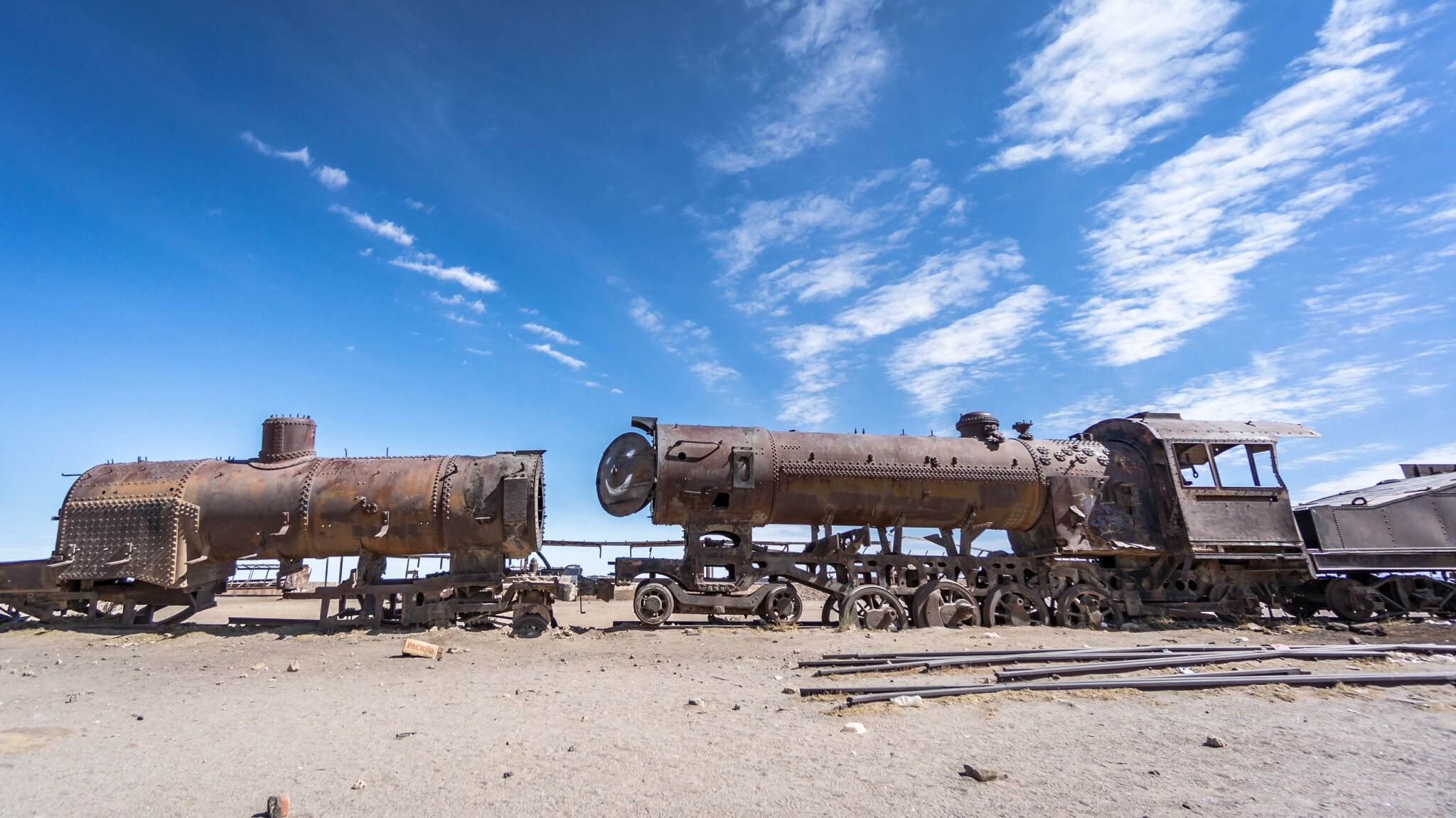
Full-Day Tour from Sucre to Potosi and Uyuni ($227 USD)
Tours from tupiza.
Visiting the Salar de Uyuni on a tour from Tupiza is the most off-the-beaten track approach. Far less tourists pass through Tupiza, and the actual tour route is different since it starts from the south. There are four-day tours here that pass through the typical highlights of the multi-day tours from Uyuni, only in the reverse order.
3. Choose a reputable tour company
Not all tour companies here are created equal. Some run substandard trips, with poor accommodation and vehicles that are prone to breakdowns. It's wise to book with companies that have recent positive traveller reviews. If booking with Viator or GetYourGuide , there are reviews of each tour available. Otherwise, TripAdvisor is a great hub for this, as are its discussion forums.
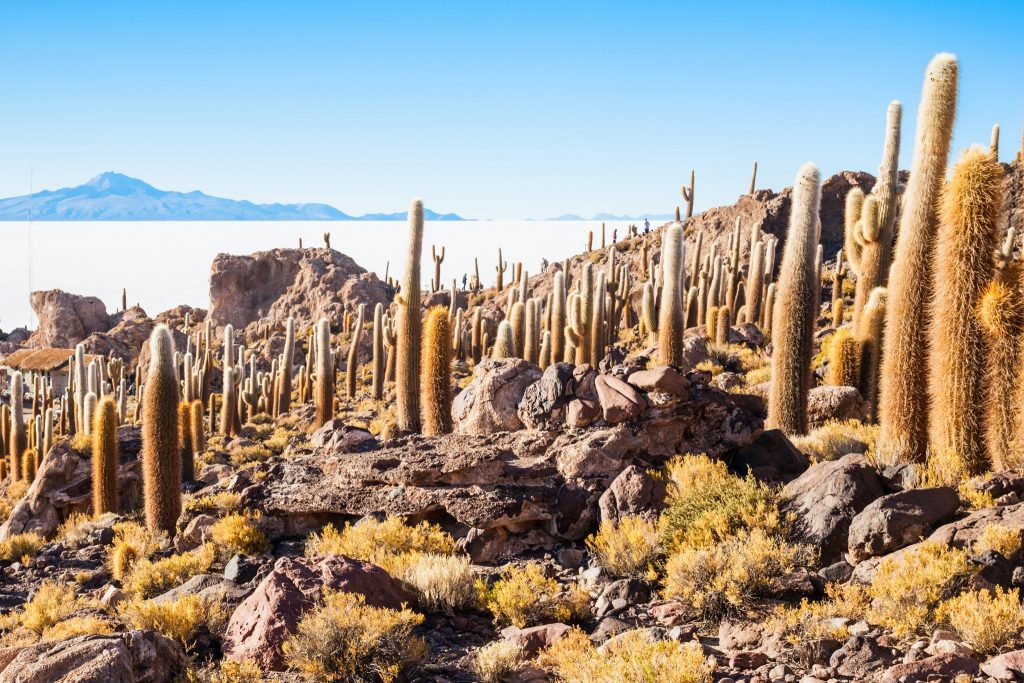
Isla del Pescado (Fish Island)
4. Know what's included in your tour
Day tours generally visit the same sites – the salt flats, salt hotel, and the train cemetery. That being said, there are variations, so be sure to understand what's included. This cannot be stressed enough for multi-day tours, where accommodation, food standards, and tour highlights vary hugely from one package to the next. Traveller reviews (e.g. TripAdvisor ) are good for this, plus clarifying with the company itself.
An important note on language – some tours provide Spanish speaking guides only . Verify whether you will be provided with an English-speaking guide, and whether it's one guide per group or per vehicle (and if this matters to you). Personally, I've been on tours with one main guide and two vehicles. The guide took turns riding in our vehicles and I didn't mind.
Food & drink
Check beforehand which meals are included in your trip. Alcohol and snacks are typically not included in tours, so be sure to pack some as you'll generally be unable to buy these along the way. If you have dietary restrictions or allergies, sort this before your tour.
Accommodation
Know what to expect for your accommodation by asking in advance. Cheaper tours typically provide more basic accommodation. If you want more luxurious digs, such a staying in the salt hotels (pictured below), this will cost more. Ask before booking.
Tour highlights
Each tour covers different scenic highlights, though many are generally included in every trip. For instance, most multi-day tours include a visit to Cactus Island in dry season, as well as Laguna Colorada, Tunupa Volcano, Laguna Verde, and the Colchini salt processing mine. If there are specific highlights you want to see, such as the Coquesa mummy caves, check whether that's covered in your package before reserving.

5. Book your tour
Tours can be booked online or in person in your respective departure city. While it can be cheaper to book in person, if there's a particular company and dates you're after, it's safer to book ahead to avoid disappointment. The more reputable companies book out in high season.
6. Pack appropriately
There are a few must-pack items for any visit to the Salar de Uyuni. Generally, tour companies will tell you what to bring, but we've included packing lists for the respective tour types below.
You may wish to research photo ideas beforehand, and decide on any props you may wish to bring. The ever-stretching flats provide creative opportunities for photos, and it's not a bad idea to do some Googling for inspiration.
- Layers of clothing
- Any props you may wish to use for photos
Multi-Day trip
- Everything needed for day trip plus …..
- LOTS more layers for nighttime (e.g. light gloves, leg warmers, warm hat, scarf)
- Alcohol if you wish to drink (you will not be able to buy on the way)
- Snacks (limited to no opportunities to buy along the way)
- Bathing suit & towel (likely visit to hot springs)
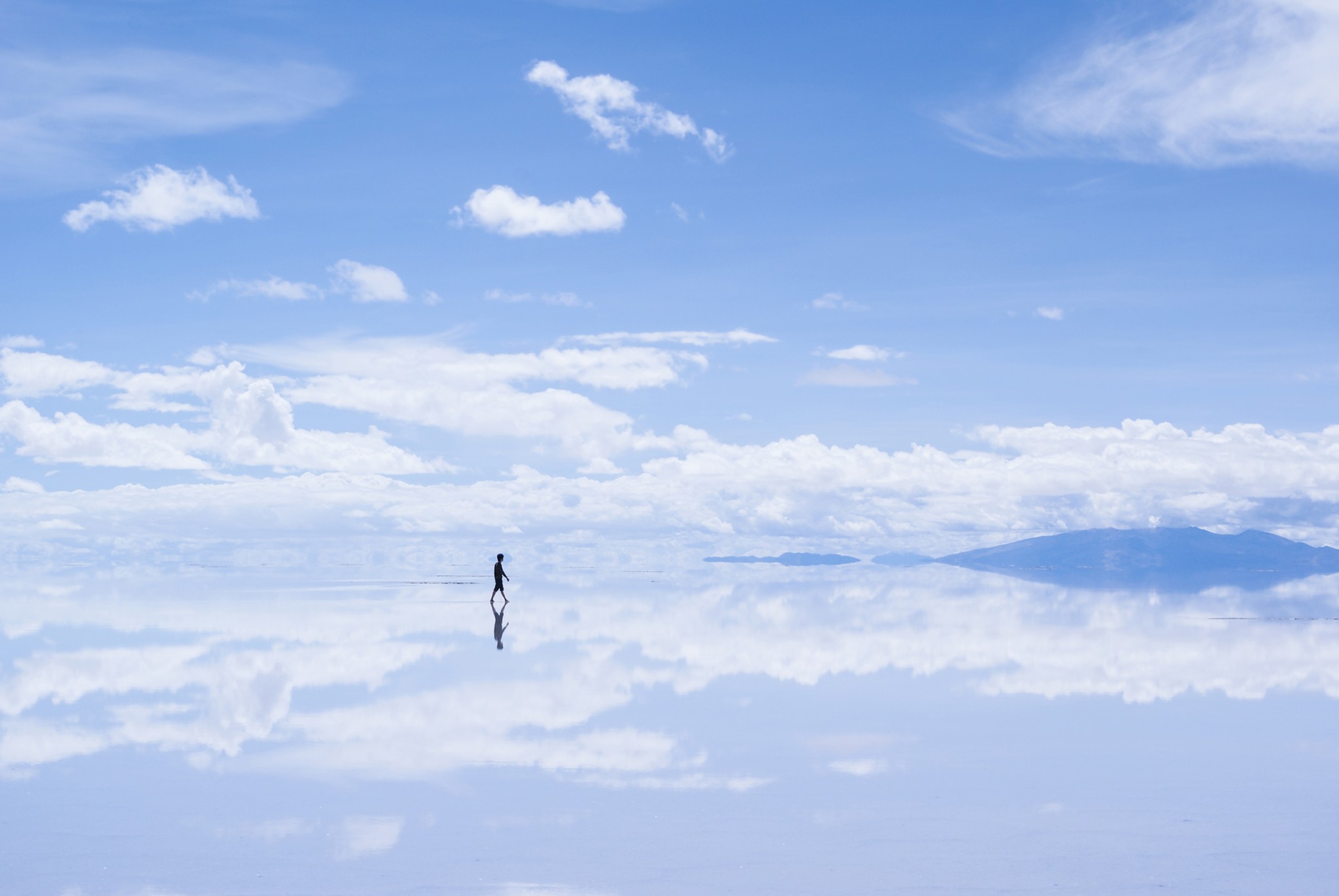
It's hard, if not impossible , to be disappointed by a trip to the Salar de Uyuni. Its otherworldly landscapes, altiplano wildlife, and remoteness are unique and astounding. If your bucket list has room for updating, I'd strongly recommend adding the salt flats!
The Thrifty Gist
- The Salar de Uyuni can be visited as one day or multi-day trip from Uyuni, La Paz, Tupiza, or Sucre
- Day tours are cheapest, but only include a visit to the salt flats themselves and not the rest of Bolivia's remote landscapes
- Most multi-day tours allow passengers to be dropped off at the Chilean border, saving transport costs and allowing travellers to continue onto the Atacama Desert
- Review what is included in your tour package, including meals, accommodation type, group size, and tour highlights to avoid disappointment3
The Bolivian salt flats are the largest in the world and are also one of South America’s main tourist attractions. This huge terrain of salt that shimmers in the light covers a span of 10,582 kilometres of the Altiplano which can be seen from as far away as space! Strata of salt are compressed and sandwiched between deposits of sedimentary rock that reach as far a 10cm deep in certain parts of the flat. There is approximately 10 billion tons of salt in the flat. While the salt is what attracts tourists from all around the world, the real value of the land lies beneath. Approximately 70% of the world’s supply of lithium can be found beneath the flats. This thin metal is used to power a wide range of technology. An entire industry has been devoted to the extraction of the metal.
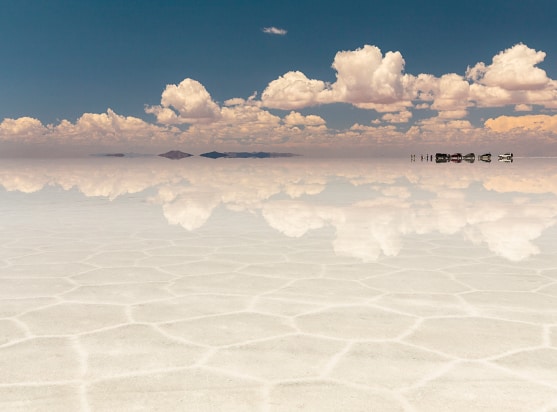
The Worlds Largest Salt Flat

Worlds Largest Mirror
On a calm day, a thin film of water that sits atop of the salt flat transforms it into ‘The World’s Largest Mirror’ which reflects the sky. This stunning reflection is most often found from December to April (the rainy season). It is often said that when this natural wonder occurs that it is extremely difficult to distinguish the exact point where the sky and land meet.
Apart from the islands ‘Isla Incahuasi’ and ‘Isla del Pescado’, which are filled with different types of cacti, the landscape is completely flat. Both the flat landscape and the mirror effect lend themselves to the creation of crazy perspective photos. With the incredible mirror effect and perspective photos alongside the natural beauty of the landscape, it is no wonder that this is the paradise of many photographers from around the world.
Surrounding Landscape
A combination of many awe-inspiring sites are on show throughout the duration of the bolivian salt flats tours, making them some of the most memorable experiences that a traveler has while in South America. This part of the world is littered with many attractions that draw people from all corners of the world. These include: bubbling geysers, incredible rock formations, colorful lakes and villages where the production of quinoa is the main trade. Although hundreds of thousands of visitors come to see the flats each year, this land still remains one of the most untouched natural landscapes in the world.
Best time to visit
No matter what time of year that you visit, the Bolivian Salt Flats are sure to offer an unforgettable experience. Depending on what season it is, the landscape of the Salt Flats can vary hugely. Therefore, the best time to go depends ultimately on what type of experience you wish to have. Lots of people want to come to the salt flats in order to observe the mirror effect in person. If this is what you would like to see, then the best time to go (highest chances of the mirror effect taking place) is between March and April. Unfortunately, the Flats often flood during rainy season. This means that areas that experience particularly bad flooding e.g. Isla Incahuasi, become inaccessible. The time that offers the best climate and most access to the whole area of the Salt Flats is between July and October.
Approximately 40,000 years ago the vast landscape of the salt flats was covered by Lake Minchin. As a result of a severe lack of draining outlets in the area, water from the surrounding mountains gathered here. This giant lake then went on to to form Paleo Lake Tauca and a number of other smaller prehistoric lakes. Between the change of climate from wet to dry and the rise in temperature, the water slowly began to evaporate. Eventually, the water evaporated and high levels of salinity resulted in a thick salt crust forming. Water beneath the salt flat is still evaporating today, leading to increased levels of salt on the surface. Rain water is evaporated ten times more quickly than it is precipitated, which means that the Bolivian Salt Flats are a never ending source of salt.
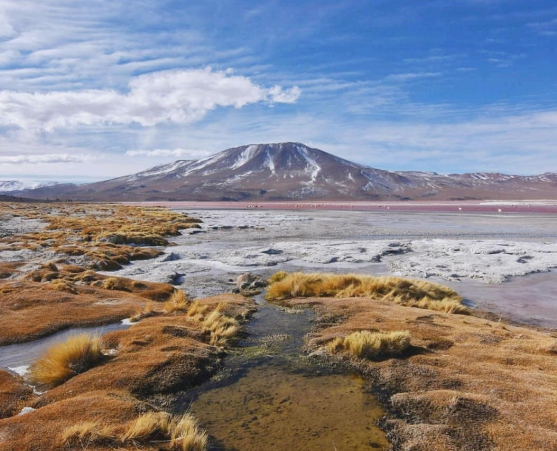
The Formation of the Bolivian Salt Flats
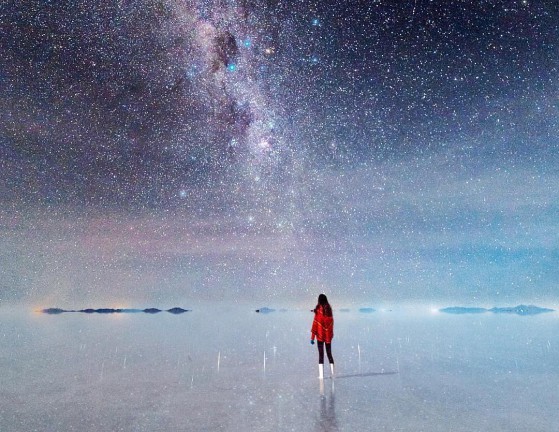
Legends of the Salar
As explained above, there is a scientific explanation for the stunning landscape of the Bolivian Salt Flats. However, if you ask the campesinos (Spanish for ‘peasant farmers’) who live on the shores of the lake, they will have an entirely different take on how the salt flats formation came about. According to these locals, thousands of years ago, the mountains that surround the salt flats were giant people. The legend states that the mountain goddess, Yana Pollera (closest peak to the salt flat) had relations with both Thunupa and Q’osqo. When the goddess became pregnant the two male giants battled for days to determine who the father was. As she feared for its safety, Pollera sent her child far away. As soon as she let the child out of her sight, she was worried that it would not be able to survive alone. In an attempt to help her child, she flooded the entire plain between the two mountains so that the child could be fed. The flood of milk eventually dried up and turned to salt, giving birth to the spectacular Bolivian Salt Flats.
Experiencing the Bolivian Salt Flats
The most scenic method of exploring the Flats is by taking a tour in a 4×4 for either three or four days. The options for the 4×4 tours is a one day, three day or four day tour depending on where you would like to start the tour and for how long you would like the tour to last. If you opt for any tour that is over one day, it is advised that you bring warm clothes and a warm sleeping bag to see you through the night stay in basic accommodation. While the days are full of sunshine and warmth, the nights are incredibly cold with temperatures often dropping well below freezing, sometimes as low as -15 C.
Due to the extremely harsh environment, conditions are not ideal for vehicles to travel on, therefore there are sometimes unavoidable issues with the vehicles used. The drivers have encountered most of these issues before and are extremely well-educated on the workings of the vehicles, so if an issue does arise, there’s no need to worry as the guide will be fully capadle of resolving it. As there are many tours being operated throughout the Flats, there are always other cars around to offer help, so on the off-chance that you are stuck, just sit back and enjoy the scenery of this extraordinary scenery.
Where Are the Salt Flats
Salar de Uyuni is located in the Daniel Campos Province in Potosí in southwest Bolivia. This spectacular landscape lies at an elevation of 3,656 metres above sea level, near the crest of the Andes. This means that altitude sickness can play a decisive factor in whether you enjoy your time here or not. In order to avoid this, it is advisable to spend a couple of days gradually adapting at heights of around 1000m and 2000m. Local advice to relieve the symptoms of altitude is to chew on coca leaves.
Despite being in quite an isolated location it can be easily accessed. The most common ways to get to Salar de Uyuni are via La Paz in Bolivia or San Pedro de Atacama in Chile. However, it can also be accessed via other parts of Bolivia and Chile as well as Peru and Argentina. For more information on how to get to Salar de Uyuni click here.

The top facts of salar de uyuni
Discover how to get there
Everything to see and do
The top recommended
2018 guide the ultimate photos
Essential packing list
SUBSCRIBE TO OUR NEWSLETTER
Sign up to get the latest news and information about Salar de Uyuni.

A tour through the Bolivian Salt Flats – One of the most beautiful places on this planet
The Bolivia Salt Flats or Salar de Uyuni is one of the most incredible places I have ever visited in my life. Spending three days in the middle of nowhere, surrounded by this world’s stunning nature, made my travel soul super full. Like most people, I started my Bolivian Salt Flats tour from Uyuni. Bolivia is known for being a little rougher to travel through compared to its neighbors like Peru or Argentina. The tourist industry is still developing there therefore knowing what to expect will make your travels a ton easier.
Although I read a ton of guides before my trip, there are a couple of things that I wish I took more seriously or have known before my journey into the Southern part of this incredible country.
Throughout my guide, I will share everything you need to know to plan your trip to the Bolivia salt flats. I will also share a general route that you are likely to take. If you don’t want spoilers for your trip stops, I suggest you only read the first part of the article. Note that if you take the 3-day tour (which I insist that you do), the name Salt Flats Tour is a huge understatement of what you will see. Yes, you will visit the salt flats but you will see SO MUCH MORE on days 2 and 3 that your brain won’t be able to comprehend the beauty that’s there.
This is your one-stop for everything you need to know about taking a Bolivia salt flat tour from Uyuni.
Let’s get to the logistics of the Bolivian Salt Flats tour
As stated above, there are a lot of logistics involved in taking this tour. For most long-term backpackers, a Salar de Uyuni tour is a must-do in South America, and trust me, although the nomad lifestyle tends to lean toward spontaneity, some of these people are more prepared than you think. If your Bolivia itinerary is only a couple of weeks, planning this part of the trip should be a priority for you. When I visited, my income wasn’t the greatest, so I focused on budget first. Overall I spent very little money and got a fantastic experience, but in hindsight, I would do a couple of things differently and splurge on certain things.
Uyuni was a part of my 2 week Bolivia itinerary and this is the route I took for your reference:
- Flew into La Paz to take a bus into Copacabana (base for Lake Titicaca) and stayed there a night to acclimate.
- Then took a boat to Isla del Sol on Lake Titicaca with an overnight stay.
- Returned to Copacabana to take a bus back to La Paz for 4 days.
- The next stop was this Salar de Uyuni tour.
- After the tour, I took an overnight bus to Sucre and stayed there for 4 days.
- My last stop was Santa Cruz to which I took a flight from Sucre. I stayed there for another 3 days.
Quick Salar de Uyuni facts
Salar de Uyuni is a huge salt flat that a really long time ago used to be a lake. After the water evaporated, it left behind this amazing formation that is 100 times bigger than the Bonneville Salt Flats in the US. It is certainly a highlight of a trip to Bolivia and should not be skipped.
Don’t let the flatness fool you. The Bolivia Salt flats are located in the altiplano at an altitude of 3,656 meters ( 11,995 ft ) so unless you’re acclimated from La Paz or any other high city, I would not take this trip before spending a few days getting used to the air. A three-day tour can take you up even higher, all the way to 4,500 meters (15,000 ft) . Altitude sickness is a real and serious thing and if you’d like to know what the experience is like and how you can prevent it, I recommend reading my Cusco post . If you have no other choice, back some altitude sickness pills like acetazolamide.
There is a wet season lasting between-ish December and April and that’s the best time to see water on the flats known as the largest mirror in the world. During the rainy season, you will likely not be able to visit the cactus island. The dry season lasting from late April to November will likely guarantee better weather but limited water reflections. If you have a good driver, he will find you a good reflection even during a dry season. I visited in June and got to see some water but certainly not as vast as you seen in some photos.
Salar de Uyuni at night is an incredible place in this world to see stars due to the fact that there are no surrounding lights to block the view. Although on most tours you will be able to see the night sky, there are separate tours that do a night photography session too.
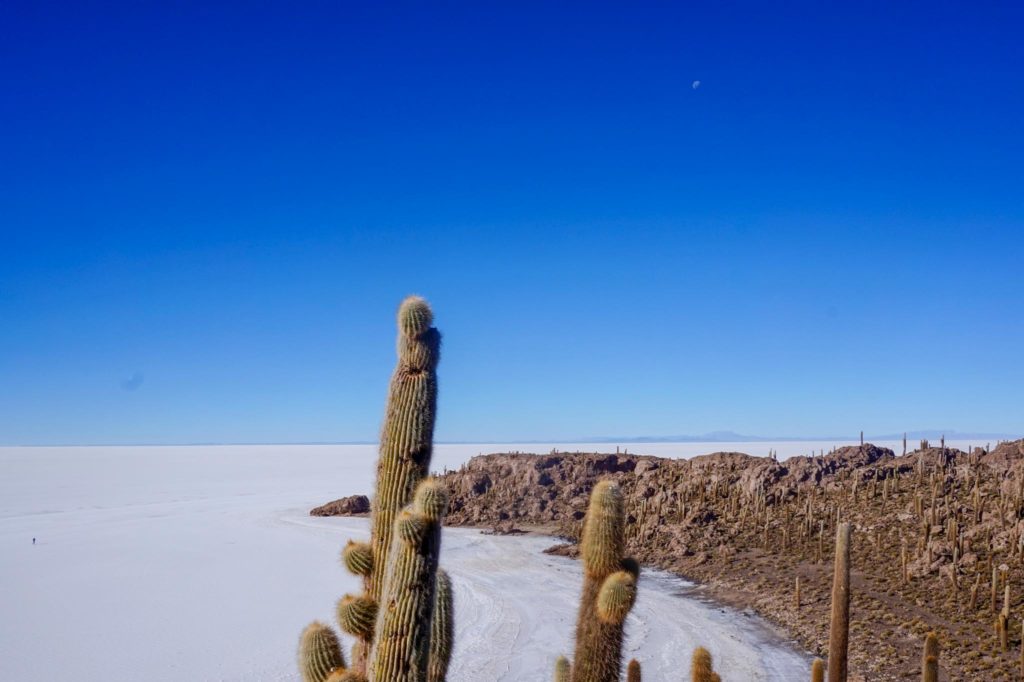
Best time to visit Bolivia Salt Flats
While you can certainly visit the Salt Flats multiple times per year, let me break down what each season will look like. If you visit during the wet season (December to February), you will be able to see the mirror effect of the place with the water. Visiting from March to May will give you the dry as well as the wet views along with fewer crowds. Remember that the seasons in Bolivia are opposite of the northern hemisphere so visiting between June to August, which is the winter months, will be the driest but also the coldest. You will see stars and endless white desert views. September to November will be similar to the previous season but you can expect more rain.
So, what is the best time to visit the Bolivia Salt Flats? Well, it depends on what perspective of the Salar you’re looking for. I personally visited in June and loved that time.
Why do I need a Bolivian Salt Flats tour?
How to get to the Bolivia Salt Flats? Well, you need a tour. If you really really wanted to, you technically can venture out into the Bolivia Salt Flats on your own, in a 4×4 jeep. However, with the logistical nightmares, no signal/wifi, remote hostels, no official roads or routes, and fairly affordable tour prices, I would not even want to attempt it. God forbid something happens to your car, you’re now in the middle of nowhere and no one to call. And cars in Bolivia are not as reliable as what you might be used to.
The arranged tours have 1 or 3-day day options. I strongly advise you against the 1-day tour because it won’t cover the second part of the trip which includes even more beautiful landscapes than the flats. From what I know, 2-day tours are not available due to the logistics of transport but correct me if I am wrong. Starting the tour from Uyuni, you’ll follow a general route with similar times and stops with other companies. Trust me when I tell you that majority of the tours are identical. On the first day, you’ll see the Salt Flats along with a couple of other stops and on days 2 and 3, you will see SO much more of the Bolivian landscape.
Don’t expect cell service or wi-fi, you MIGHT catch some at the overnight stay or one stop along the road. The night accommodations will not be the best and it will get cold at night. Oh, and a shower on the second day is not likely.
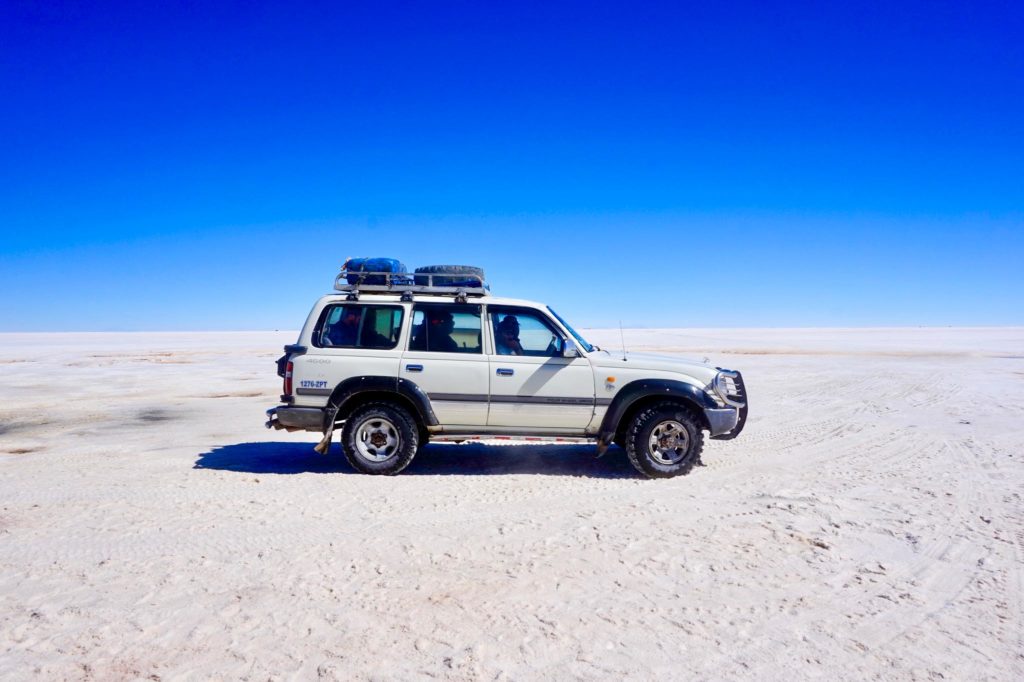
Where to start the Bolivian Salt Flats tour from?
Do not complicate your life and just start the tour from the spot you’re closest to. Again, Bolivia is not necessarily transport-friendly so take the path of least resistance 🙂 I initially planned to leave from Tupiza but when I was in La Paz and realized how long it would take to get me there, I followed the crowds through Uyuni. You have three options that the majority of the tour operators start from. I’ll start from the least popular:
San Pedro de Atacama
If you’re arriving from Chile, this is your way into Bolivia. Tour groups have this route figured out, you can start there, end there, or even take a round trip. Depends on your planned route and budget. You will see the places in reverse, starting at the southern end of Bolivia near Laguna Colorada, making your way up to Uyuni. Make sure to know your immigration requirements and obtain the correct entry/exit passport stamps to avoid any future hiccups.
This is a 4-day tour as you’re farther away from the actual “starting” point. These tours tend to be a little more pricey because of the extra day as well as fewer tour operator options in town. This is a popular option for Argentine travelers as Tupiza is closest to that border.
As this is the most popular option, the pros of this are that 1) you can arrange your tour in La Paz or even the day off in the town of Uyuni, 2) you can bargain as the tour operators are competing for customers, 3) the transfers after to Sucre or even Chile are common so they can be easily arranged. The cons however are that you will follow the most generic route with groups of people doing the same exact thing. Let me tell you this though, even with the most “touristy” option for this tour, you won’t be disappointed.
It will take about 9 hours on an overnight bus to get to the town of Uyuni from La Paz on a “lie-flat” bus for anywhere between $15-25 (which is actually expensive for Bolivia) . If 9 hours on the bus doesn’t sound like something you’d enjoy, there is a 1-hour flight between the two cities but prices can be as pricey as $100 which is almost as much as the whole 3-day tour. If you’d like even more options, here is a super informative post about the transport between the two cities. After the tour, you can return to La Paz or continue your journey to another Bolivian city like Sucre or even San Pedro de Atacama in Chile.
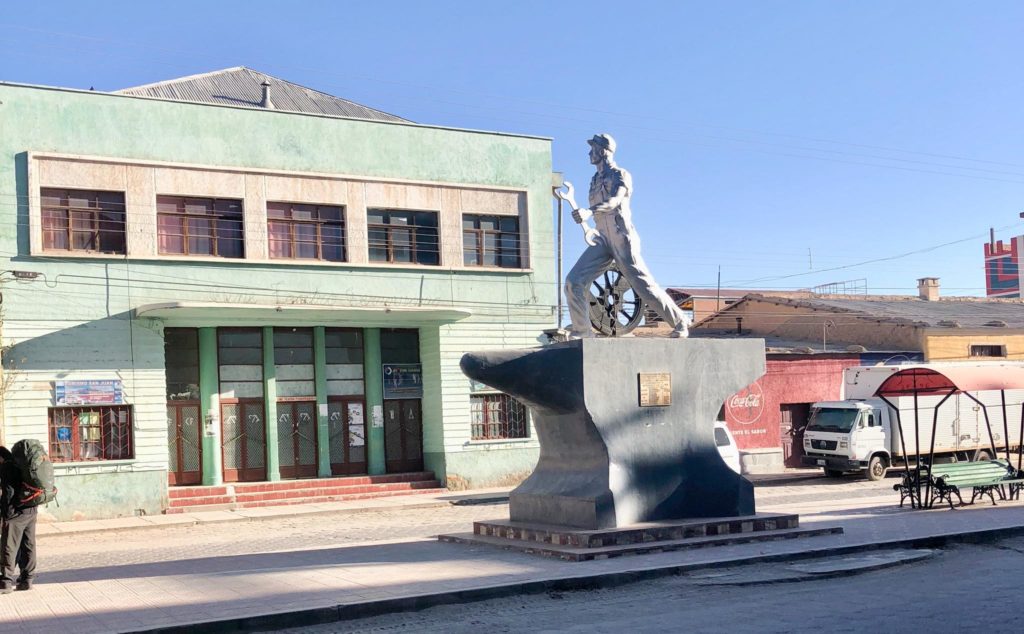
Packing List for the Bolivian Salt Flats tour
On the majority of the tours, your luggage will live on the roof. It will be unloaded for the overnight stops so you will be able to access your things at night. However, grab a smaller backpack with things you might want during the car ride. As far as clothes, you will need warm things. The days will be mild in temperature but the night will be cold.
Absolute must-pack items: comfy shoes, trekking clothes, warm socks, warms things to sleep in, light jacket, bathing suit, for the hot springs, flip flops, towel, water, snacks, sunscreen, wet wipes, toilet paper, a camera, extra batteries in case you don’t have electricity, and most importantly sunglasses. You can hurt your eyes if you don’t wear them as the reflection is absolutely brutal. Food will be provided by your tour. Since the nights will get super cold, you should ask whether there is an option for renting a sleeping bag.
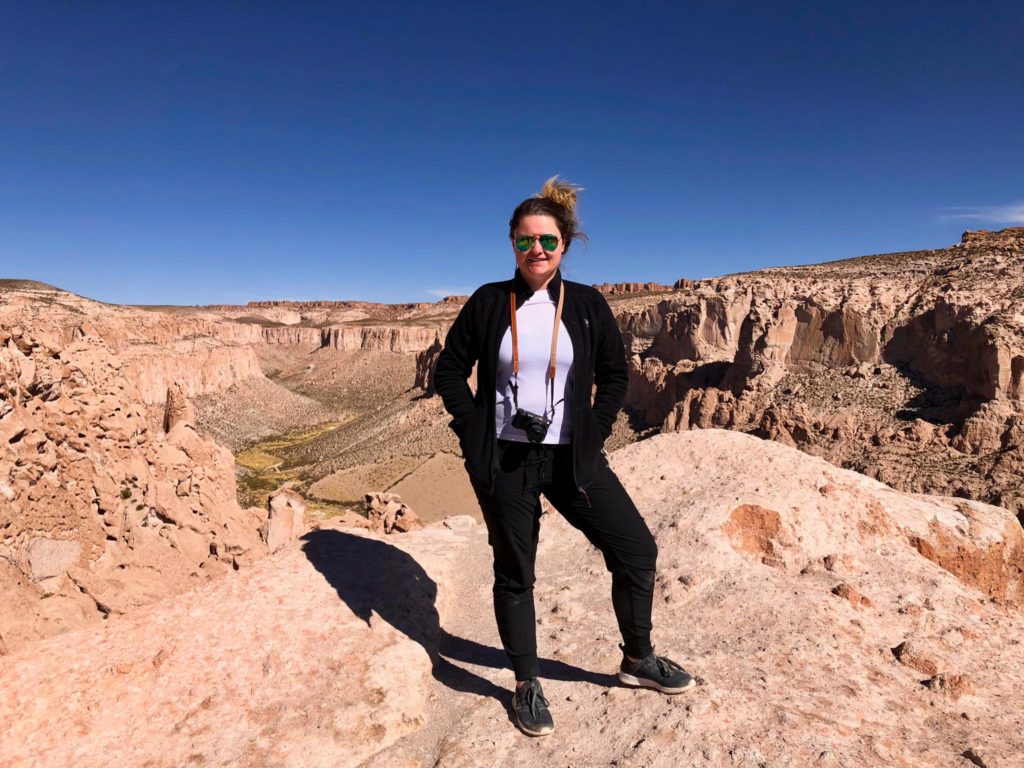
How do I find a good Uyuni tour provider?
Repeat after me : all tours take (almost) the same route. If anyone tells you otherwise, they’re lying. For an average base price is $120 (+/- $20) you’ll get the following: a Spanish speaking driver that will be your tour guide/cook, a car up to 6 people, basic accommodations in a private room on day 1 and a shared shitty and cold hostel in the middle of nowhere on day 2. What will drive the price higher (near the $200 range) is an English-speaking driver, fewer people on your tour, better accommodations, and further transfers after the trip.
There are many known tours in town like Red Planet, Quecha, Andes or luxury tours like Ruta Verde but I can’t speak for them since I didn’t take them. You can prebook a tour online but it will cost you a little more than in person. Instead, if you have some extra time in La Paz, go to different offices and negotiate on the price. If you want, you can even book a tour the morning off when you arrive in Uyuni.
My personal experience
I arranged my tour pretty last minute in La Paz based on a hostel recommendation. My tour ended up putting me with a 1-day group for the first part of the day and then transferring to a 3-day group that was coming from Tupiza at the end of the first day. My second driver spoke no English and with my basic Spanish I ended up as the group translator for the entire trip. You don’t really need the guide to speak English as the majority of the trip is looking at landscapes. My first driver didn’t care too much but the second one was phenomenal. Even though we were on the same route as everyone, he made sure to take us to places either before or after the crowds so we always had the spots to ourselves.
Don’t forget: Always tip your drivers (assuming the correct service was provided). Whatever you negotiate with the company has nothing to do with the person who will drive you around and your tip goes directly to his pocket. If you had an amazing experience, at the end of the day an extra couple of dollars that you’ll spend on beers anyway will be more useful for the driver and their family.
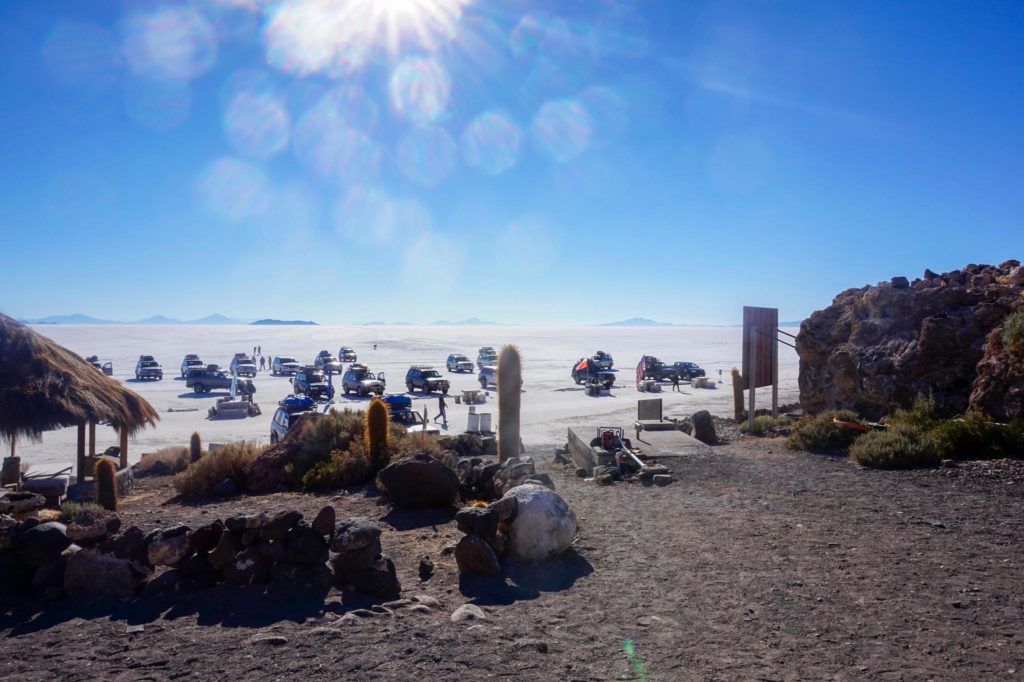
How to continue your travels after the tour?
If your start your tour in Uyuni, you’ll also end your tour there too, unless you request a transfer to Chile. From there, you can return to La Paz or continue your journey to Potosi or Sucre. All those transfers can be arranged through your tour company or you can just buy a bus ticket at the bus stations. My personal journey continued to Sucre on an overnight bus. Buses leaving from Uyuni “station” are a bit of a hectic mess. The buses leave between 9-10 pm and arrive in Sucre around 5-6 am. They go through Potosi, cost you around $10, and are not very comfy. Often though, this will be the option that makes the most sense after the tour.
I traveled with Trans 6 de Octubre , and I’d be lying if I said the journey was easy. The driver locked the bathroom door and the “lie-flat” seats slightly reclined back. I’ve never been happier than the moment we stopped in the dark, in the middle of nowhere for a pee break. Yes, I peed on a side of a dirt road with 10 other Bolivian ladies within 10 feet of me. Let me just tell you, now I know why their skirts are so wide 🙂
The second annoying thing is that if that’s your only option, you’ll be arriving in Sucre at 5 am. It is not ideal either unless you pay for an extra night at your accommodation and have a bed waiting for you. I wanted to save money and not pay for the extra night and let me tell you what a mistake that was. I tried to take a nap on the hostel couch and since my bed wasn’t ready until 2 pm, I struggled really hard to do anything. If I just booked it, I would’ve slept till 2 and still had the day to myself.
Miscellaneous things worth knowing before embarking on a Bolivia Salt Flats tour
- Extra fees to expect: The entrance fee to the National Park is not included in your tour is roughly $22 USD. There is also another smaller fee (~$4 USD) for the fish island and this is something you’ll definitely want to do. Don’t forget your tip money for your driver as well.
- Make sure to have some sort of camera with extra juice available. You may or may not get a chance to change things. My driver let us use his car outlet but don’t expect that from everyone.
- The food will be cooked by your driver or provided at the overnight stays. It is delicious and you will love it. However, there will be no snacks or anything to munch on in between.
- You will be spending a ton of time in the car with your tour group. Even if you have a pain-in-the-ass tourist in yours (like my group did), just accept it because it’s not worth ruining your experience. Establish a rotating system for the front seat and be respectful. People in these groups tend to be from different countries and have different customs. Understand that.
- Unless you’re paying $700 for a personal provider and staying in upscale accommodations, this will be a rough and tiring experience. That should not stop you from taking a tour. Simply knowing that at the end of the day this is a driving tour through one of the poorest countries in South America should give you some perspective.
Ok, that was all the logistics that you need to know about taking the Bolivian salt flats tour. The next part of my guide will focus on the stops you’ll make along the route. If you’re undecided about taking the tour, I hope the next part convinces you that this is simply a must-do in your life. However, if you’ve already decided and don’t want that part spoiled for you, don’t scroll down. You’ve been warned.
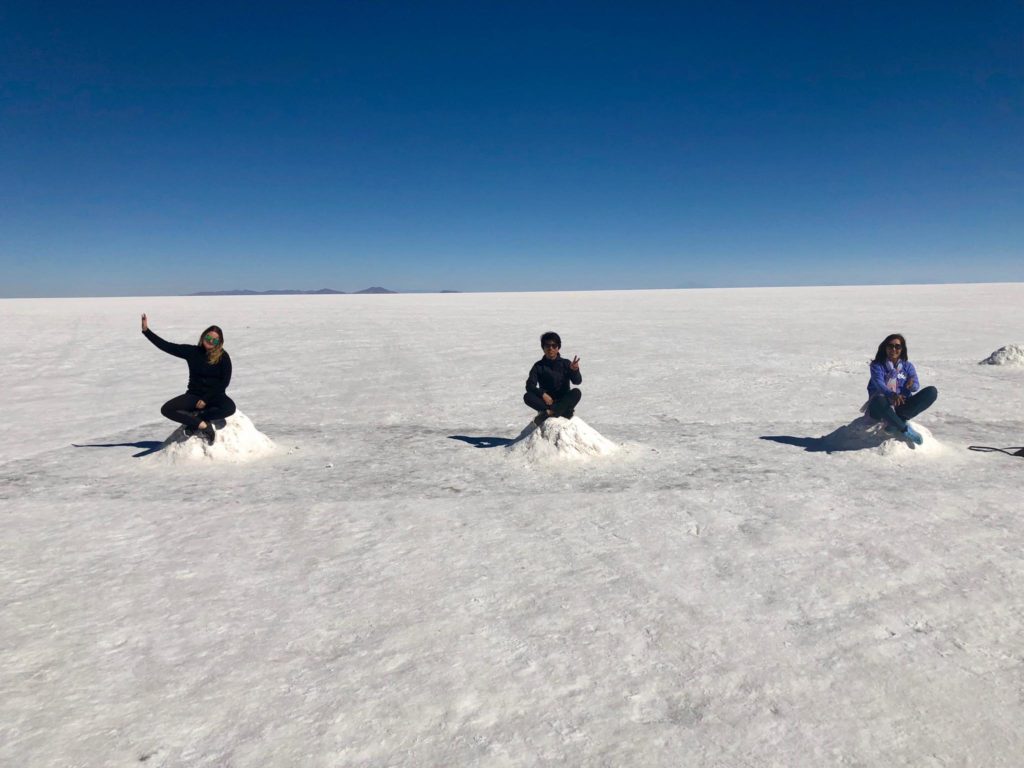
Bolivian Salt Flats Tour
The itinerary below follows the route that most tour guides in Uyuni follow. There might be minor variations in the order of the stops as the route depends on the driver’s preferences. You might make a couple of bonus stops depending on the driver but don’t expect it. If you start in Chile, you’ll do this backward, if you start in Tupiza, your first day will include stops between Tupiza and Uyuni and then you will follow the route below.
Tours leaving from Uyuni start around 10 am allowing people to arrive in town. Buses start arriving around 6 or 7 am and flights from La Paz land around 8 am. Those who want to negotiate on the spot can spend an extra day in town but honestly, there is nothing to do there aside from touristy restaurants. It is totally possible to arrive in Uyuni at 7 am, find a tour, and leave at 10 am.
Train Cemetery
Your first stop is the train cemetery or Cemeterio de Trenes, a creepy and random place. The old rusty European trains located in the middle of a Bolivian dessert with backdrops of mountains make this a rather apocalyptic site. Here is a quick backstory on them if you’re interested. When on tour, you’ll notice that all the jeeps will stop here and let you explore the grounds for about 30 or so minutes. It’s a cool place to take pictures and climb the old train. Since this is one of the first stops, be careful to not fall off or twist your ankle or your entire Salar trip will end before it even starts 🙂 I was lucky because my driver took us there twice, at the end of the last day he wanted us to experience this place without any crowds.
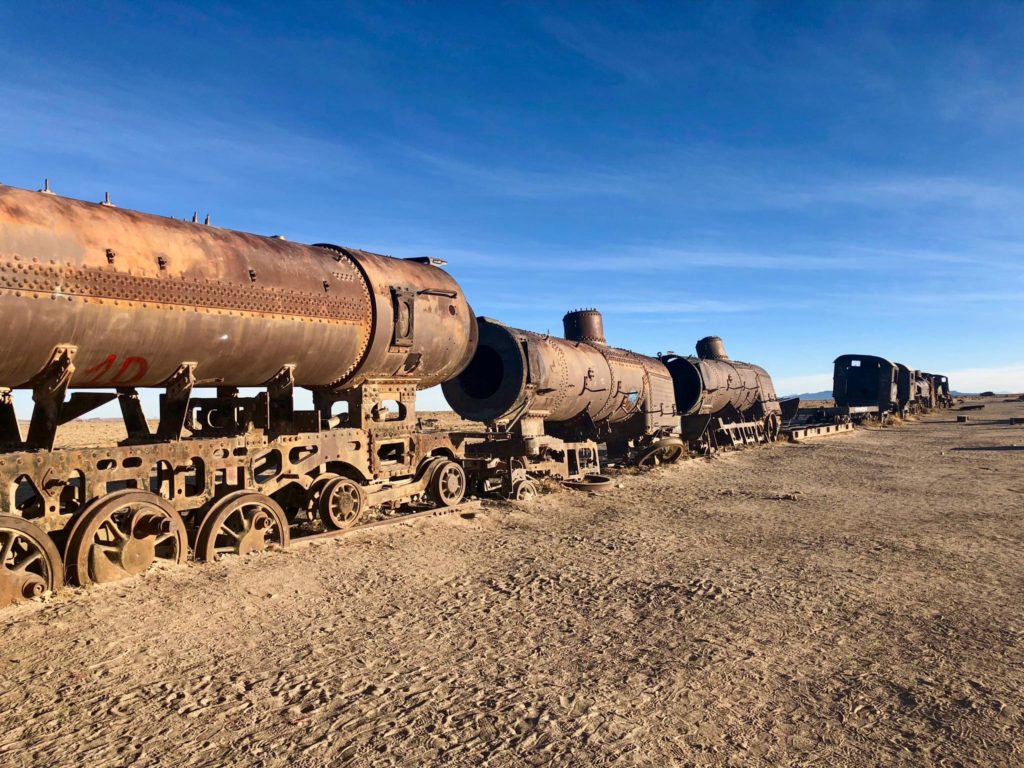
A small little salt processing village, Colchani is your entrance point to the Salar. Most companies make their stop here before taking you into the Bolivia Salt Flats. It’s basically a local bazaar where you’re encouraged to either buy things you forgot to pack or silly souvenirs from your trip. People who take a one-day tour like this place because they can do their shopping. For someone going on a 3-day trip, this might not be the perfect time to buy useless things.
As I previously mentioned, I had two drivers and the first one wasn’t the greatest. He ended up leaving us there for an extended period of time to the point where my group had to call the Uyuni office to get him back. With that experience, always remember to note the phone number to the office and always take a picture of the car and license plate before you start the tour.
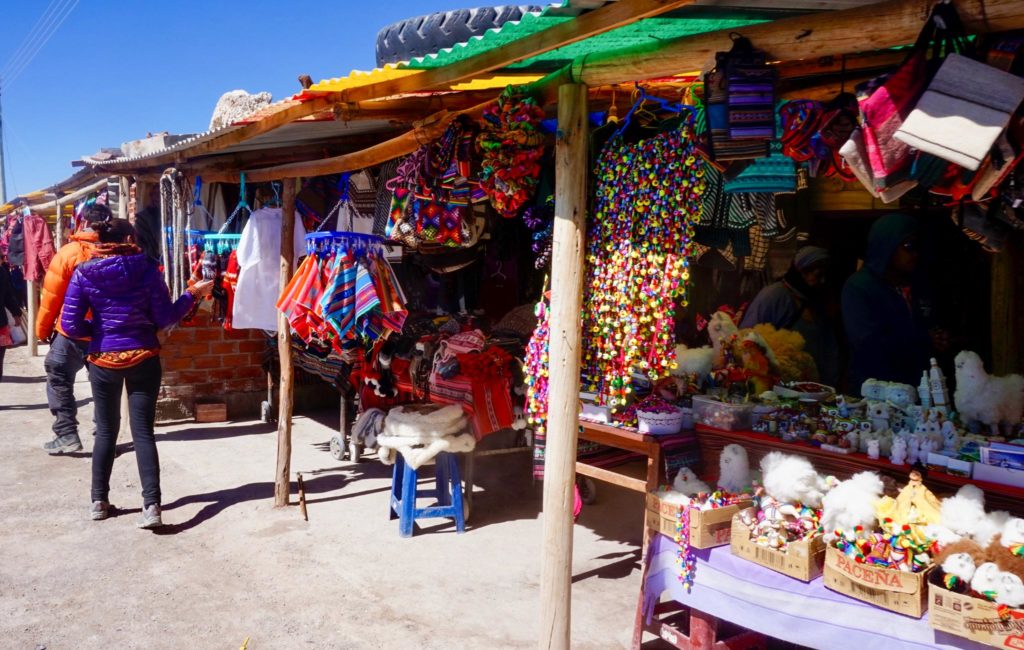
This is your resting place and lunch spot. Again, most tours stop here collectively and everyone eats together in a salt dome. Food is pretty good and you get some bonding times with the other travelers too. Afterward, you can check out the hotel too if that’s something that interests you. I don’t think you can stay there anymore but there are a couple of salt hotels in the area.
The coolest part about this stop is the flags outside. It’s nice for people from all over the world to walk around and look for their country flags in the middle of the Bolivian desert. Something as small as that brings a sense of unity and is just simply cute.
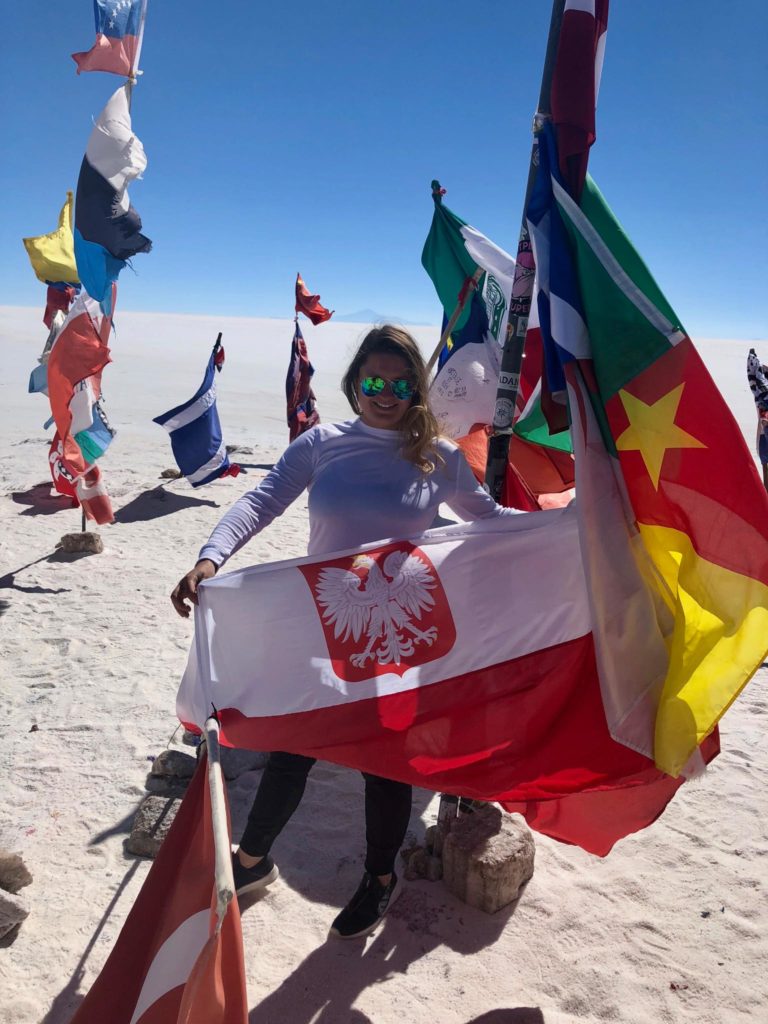
Uyuni Salt Flats
It’s no surprise that this stop is the centerpiece of this entire tour. There is nothing more breathtaking on this trip than seeing the Bolivia Salt Flats for the first time. The endless salt tiles take a second to process. The contrast between the baby blue sky and bright white salt is honestly mindblowing. I took a minute to just silently walk around to absorb it all.
A good tour driver will find a remote spot where you will be able to take photos without any people in the background. Most do but don’t be afraid to speak out if you have 5 jeeps surrounding you. This is the part where everyone takes silly pictures and just runs around the salt flats. It’s fun and if you have a good group, you’ll also coordinate some cool shots.
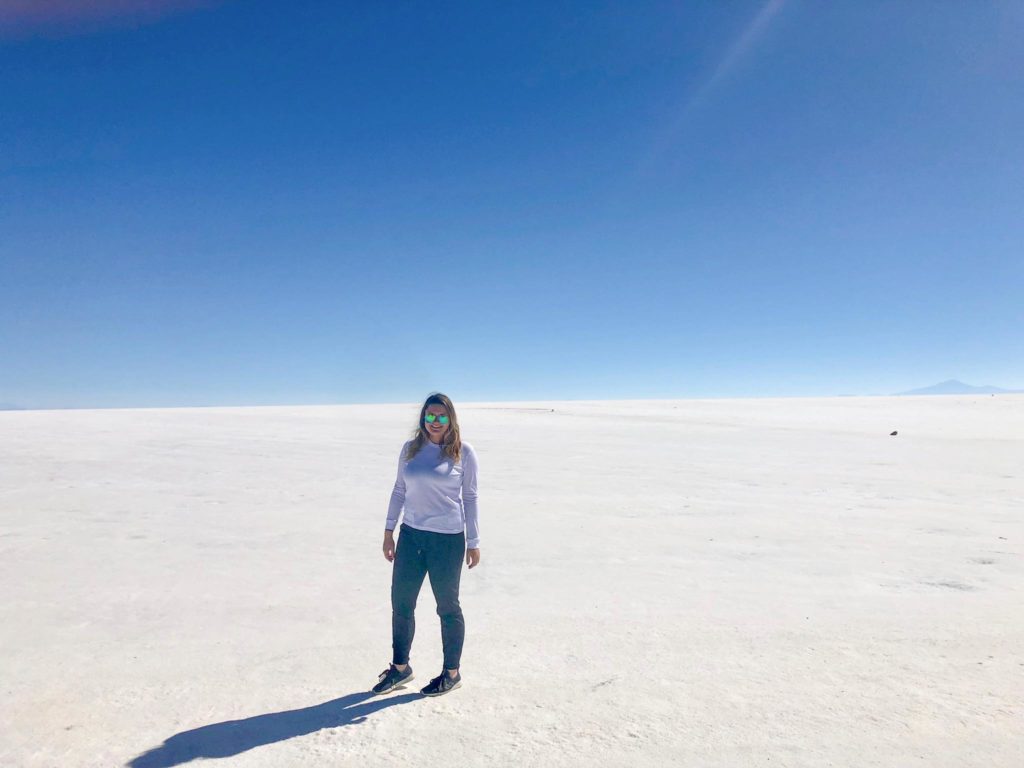
Isla del Pescado or Isla Incahuasi
This place is just trippy. Imagine an empty land of salt. You’re driving and see something in the distance that looks like a fish from far away. Then you pull up to discover a small hill filled with cacti. How random! That’s Isla del Pescado and you will be amazed at the views you can catch from there. Entry is not included in your tour but for around $5 you should certainly not skip this stop. I don’t remember exactly but the amount of time you get there is sufficient to comfortably explore it. There are snacks and water on this stop too.
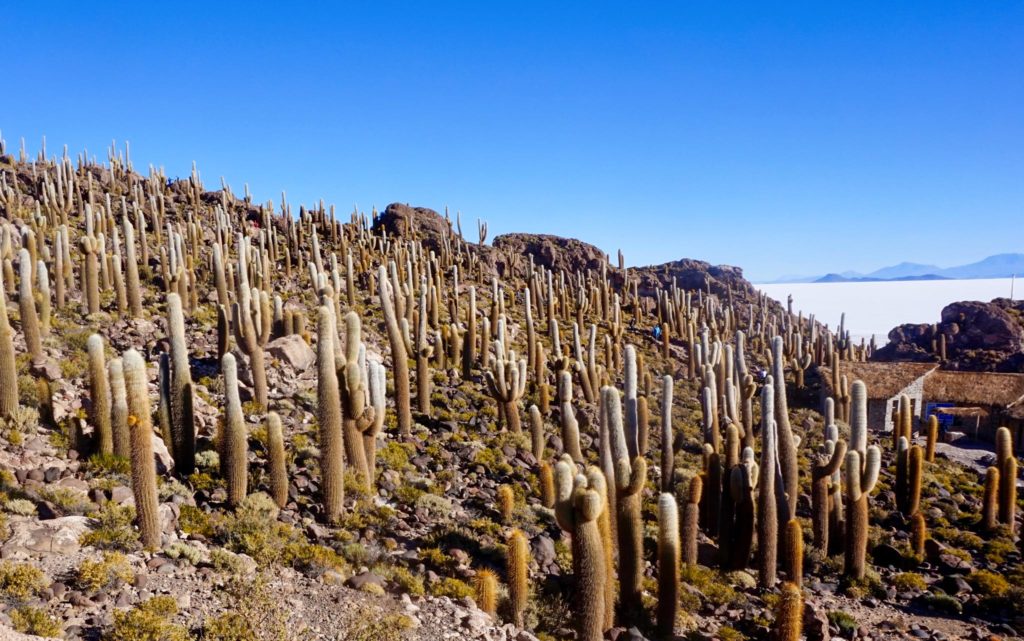
Salar sunset and drive to accommodation
If you took a one-day tour, this is where it would end. But trust me this is the last thing you want to do as days 2 and 3 offer a ton more attractions. After Isla del Pescado, our driver took us to a place to see some water on the salt flats since we were traveling during the dry season. We then drove to the first accommodation which was quite pleasant. We had dinner and drinks with our fellow travelers, bonded, and went outside to watch the stars.
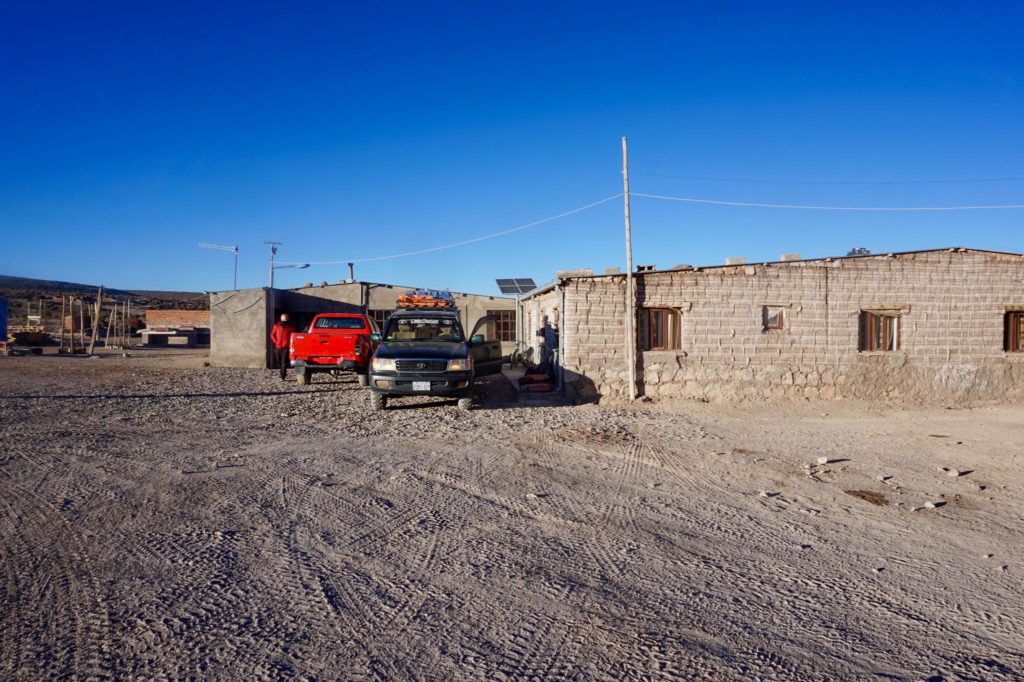
After breakfast, you will start your drive into the southern part of the country with the Chilean border right on your side. Some notable stops here will include Gruta de las Galaxias and the sister salt flat called Salar de Chiguana . The next chunk is a lot of driving but you enjoy the distant Volcan Ollague and many other natural spots along the way.
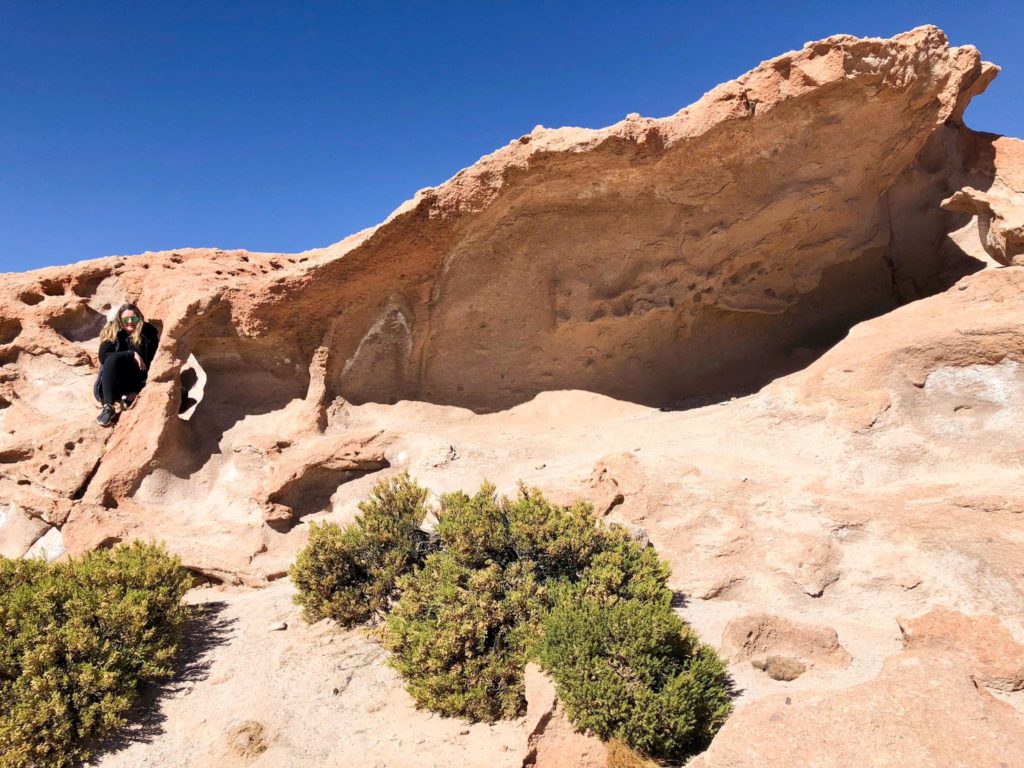
Then you will stop at the salt lakes which honestly is one of the most beautiful things I have ever seen. They include Cañapa Lake , Laguna Hedionda , Laguna Hond and Laguna Ramaditas . Lunch will be outside, cooked by your driver with the lake and mountains in the background. This is honestly one of the best lunch spots I have ever eaten in. On this part of the journey, you’ll see those pink flamingos everyone also talks about too.
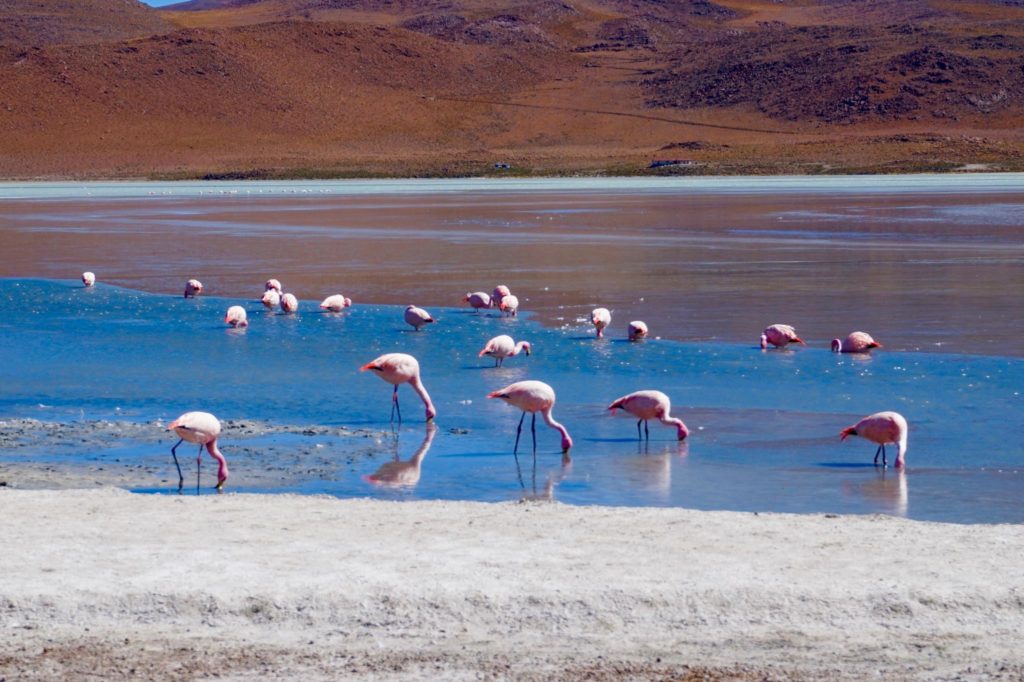
The night will be spent in one of the most remote places on this trip. It will be in the middle of nowhere, there will be no shower, it will be freezing inside the room and you will also share it with 6 other people. Did I sell you on this yet? Well, it’s like a fraternity initiation part of the trip. Everyone experiences the same thing, you get to talk about this part for the rest of your life, and don’t worry, your driver will wake you before sunrise to continue the journey 🙂
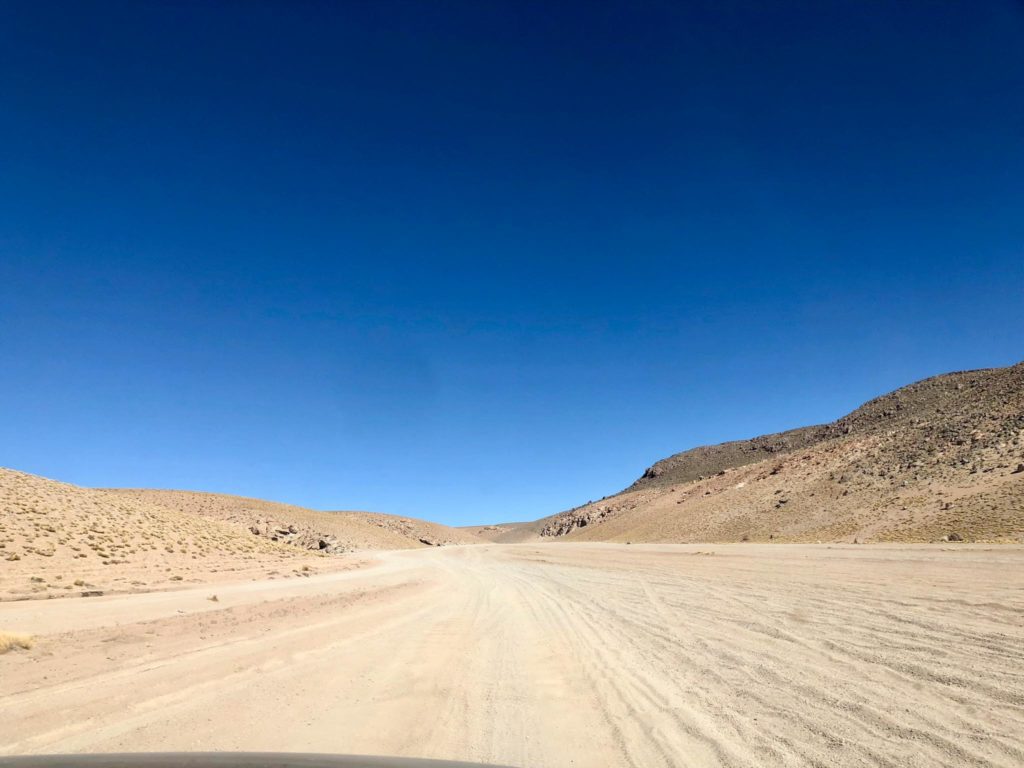
Our amazing driver really wanted us to see the Sol de Manana geyser at sunrise which meant waking up super early. I don’t think that’s the traditional route as not a single soul was in sight for this. It was incredible and I am forever grateful that he made our experience a little different than the planned path. The next stop included the Dali Desert, which I was super excited to see since Dali is one of my favorite artists. We then proceeded to explore Laguna Colorada , Laguna Verde & Laguna Blanca . Our last stop of the morning, again, against the current of tourists was the Termas de Polques or the hot springs. We had the whole place to ourselves which was amazing!!
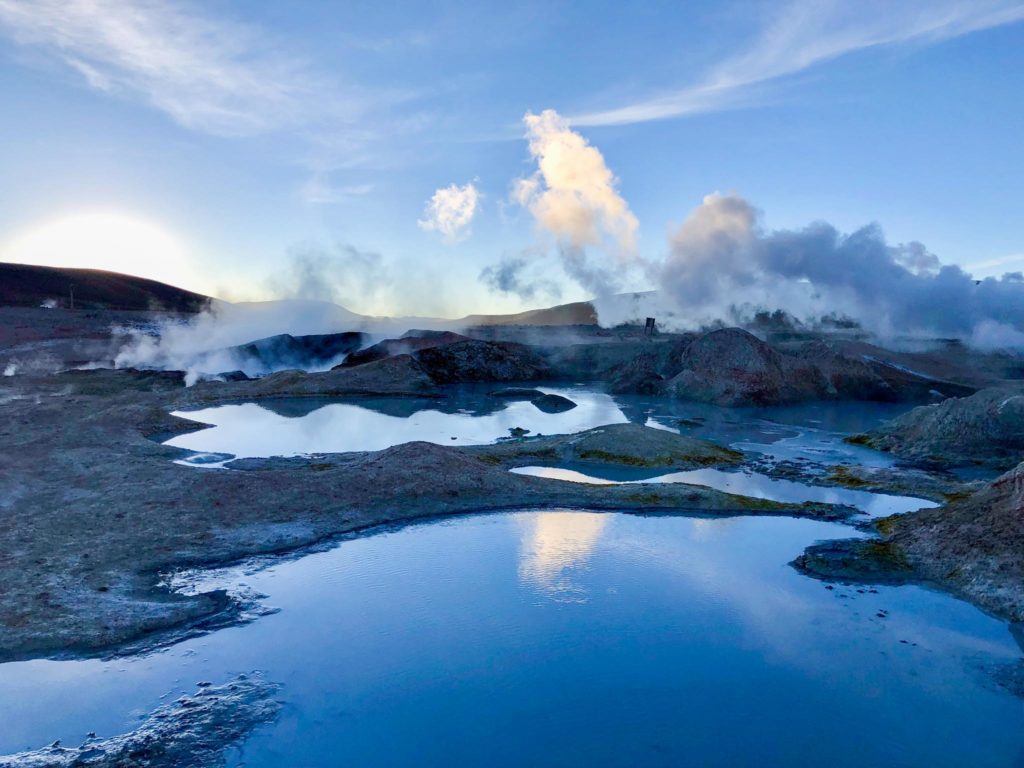
As our trip was coming to an end, we ate lunch in a little village. All I remember is there is a ton of alpacas/llamas in the most beautiful valley ever. Walking around was just amazing. At this point, I was so blown away by all the landscapes seen during the trip that seeing a colorful field with cute alpacas seem normal. Continuing the journey or driver made one last stop at a canyon along the route home.
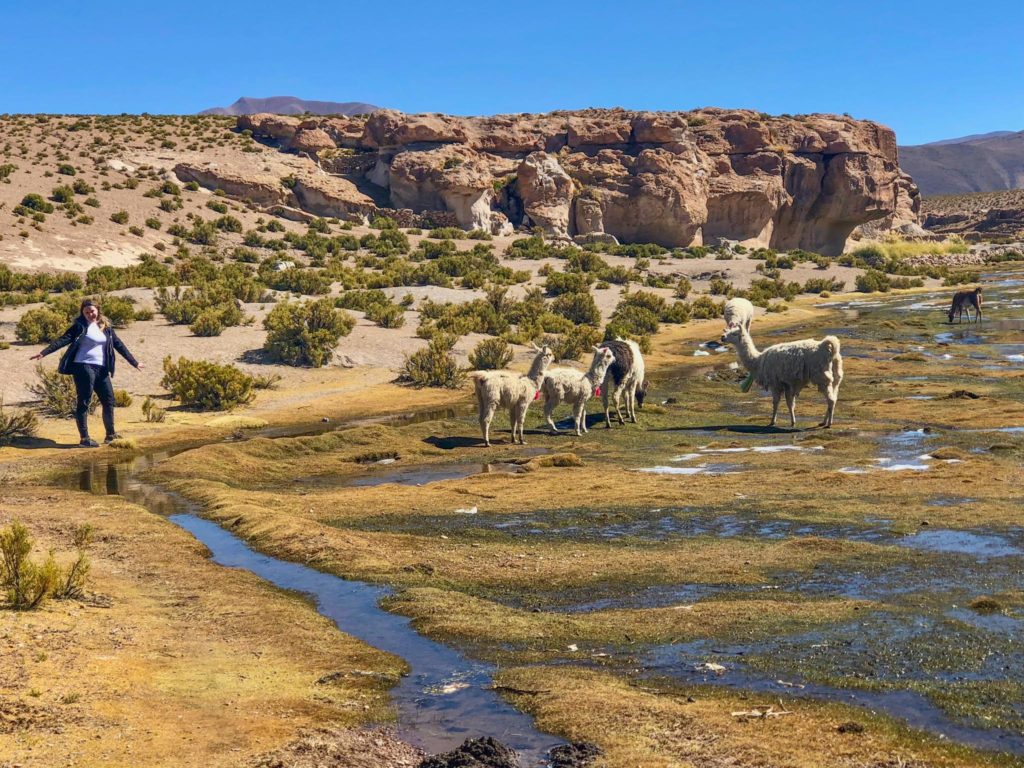
For the last part of the trip, we just drove back to Uyuni. I was exhausted at this point but still tried to take in the last glimpses of the Bolivian landscapes. After returning to Uyuni, we all parted with warm hugs and happy memories of this journey. We returned around 5 or 6 pm, headed to the bus station to get bus tickets to Sucre, and had some standard gringo meal in town. What I didn’t know is how awful and exhausting the bus ride would be ahead. This is something I talk about at the beginning of the post and I hope when you travel you know what to expect.
Final Thoughts
Our amazing driver Johnny made us feel like family for 3 days and went above and beyond to give us a little extra outside the typical itinerary. I was extremely lucky because my vetting of these tour companies was not the greatest. When he dropped us off in Uyuni, I was sad to have ended the journey but I knew that one more day on the road would have made this experience less magical. The trip is certainly not for the picky traveler. The combination of high altitudes, lack of basics, dust, extreme sun, and little sleep make this a pretty rough experience. However, I wouldn’t trade it for anything and do it again in a heartbeat. The Bolivian Salt Flats tour is truly one of the most perfect things you can do on this planet.
Find FREE downloadable Bolivia itineraries and guides
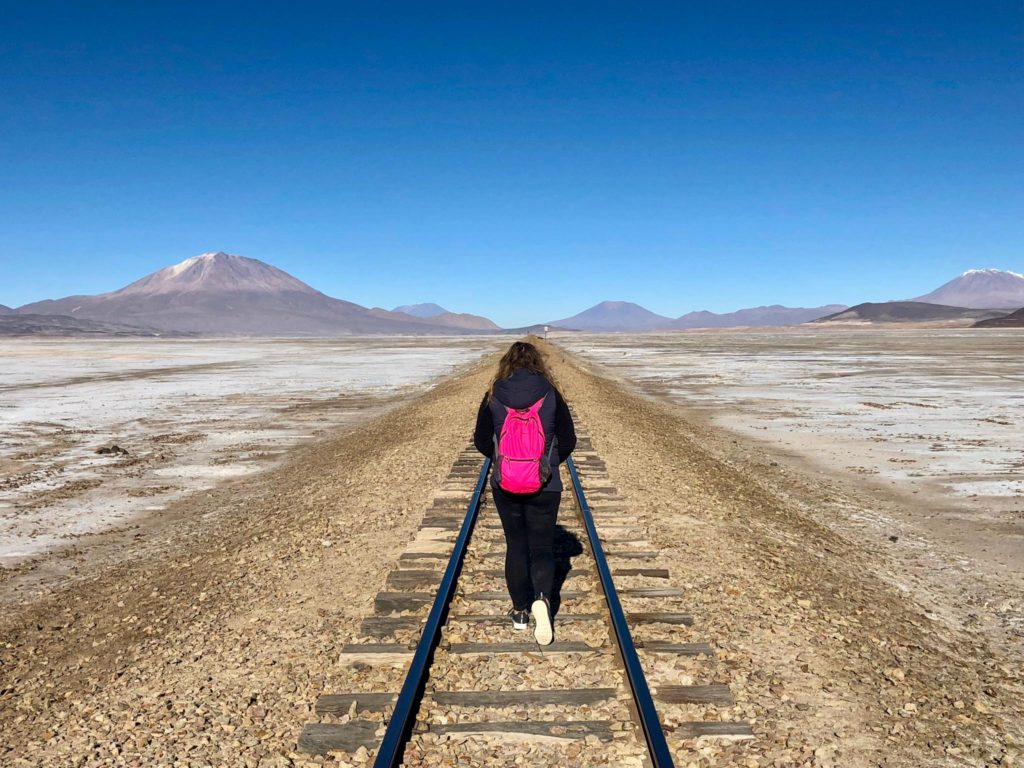
More Bolivia Itineraries
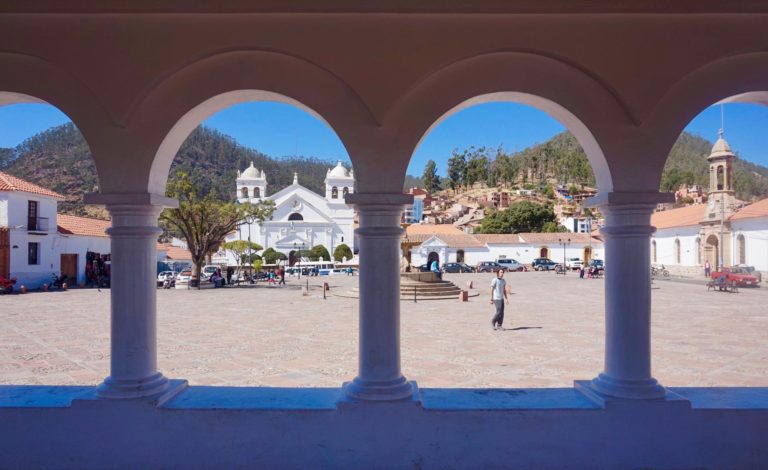
Things To Do In Sucre Bolivia & An Awesome Downloadable Itinerary
It’s truly a rare event to meet a traveler that has disliked Sucre. On my three-week Bolivia trip, one of the most unexpected surprises was visiting Sucre. I instantly fell in love with the atmosphere of the city and deeply regretted not staying longer. Sucre is the capital of Bolivia although you will often hear…
Continue Reading Things To Do In Sucre Bolivia & An Awesome Downloadable Itinerary
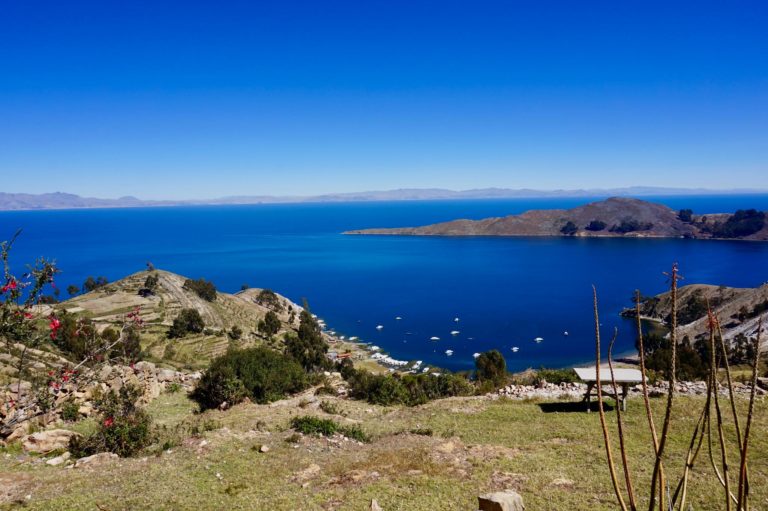
Copacabana: Your Base To See Lake Titicaca & Isla del Sol in Bolivia
While visiting Bolivia, most first-time travelers primarily focus on seeing cities like La Paz or Uyuni. However, if you’re near La Paz and have an extra 2 days, I strongly suggest making your way over to these incredible locations of Lake Titicaca on the Bolivian side. Isla del Sol is a stunning island on the…
Continue Reading Copacabana: Your Base To See Lake Titicaca & Isla del Sol in Bolivia
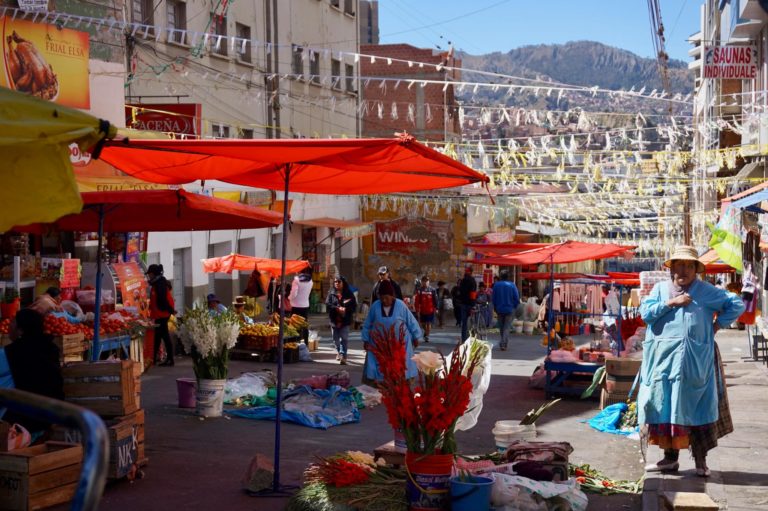
La Paz Itinerary: The Highest City In The World
La Paz intimidated me at first due to its not-so-hot reputation. I didn’t know what to expect, whether I’d feel safe and how the altitude would affect me after what I experienced in Peru. Having found many warnings for this destination, my nerves were pretty heightened for this trip despite being a not-so-nervous traveler, to…
Continue Reading La Paz Itinerary: The Highest City In The World
Kasia is a travel blogger that loves to share her detailed itineraries and travel tips with her community. She's traveled to numerous countries and makes it a priority to explore her home state of New Jersey while still being passionate about her 9-5 career.
Similar Posts
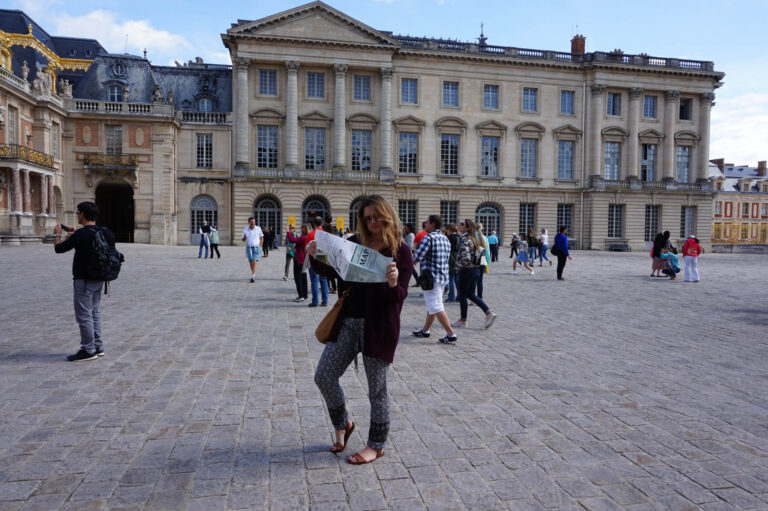
10 Steps For How To Plan The Most Epic Trip!
It’s not a secret that travel is back. After two years of restrictions, quarantines, and uncertainty, people are desperate…
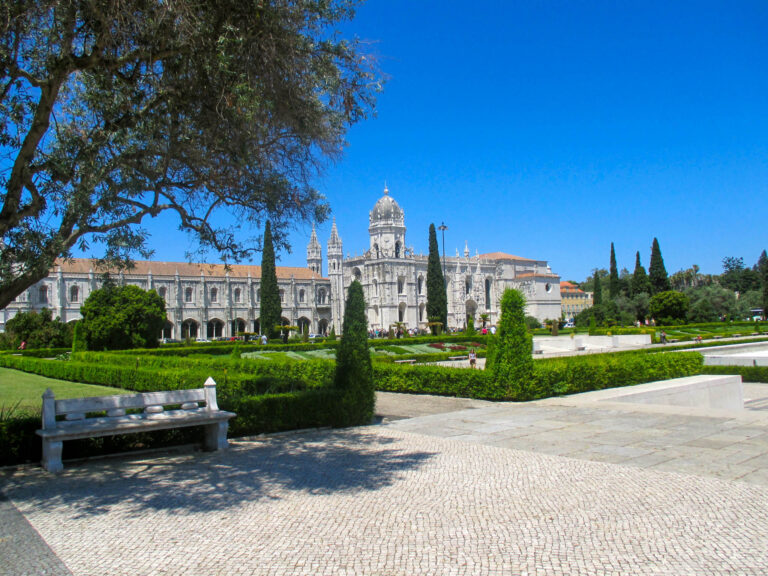
3 Day Lisbon Itinerary: A Perfect Introduction to the City
Back in 2012 when I first visited Lisbon, this city was somewhat of a hidden gem. It was filled…
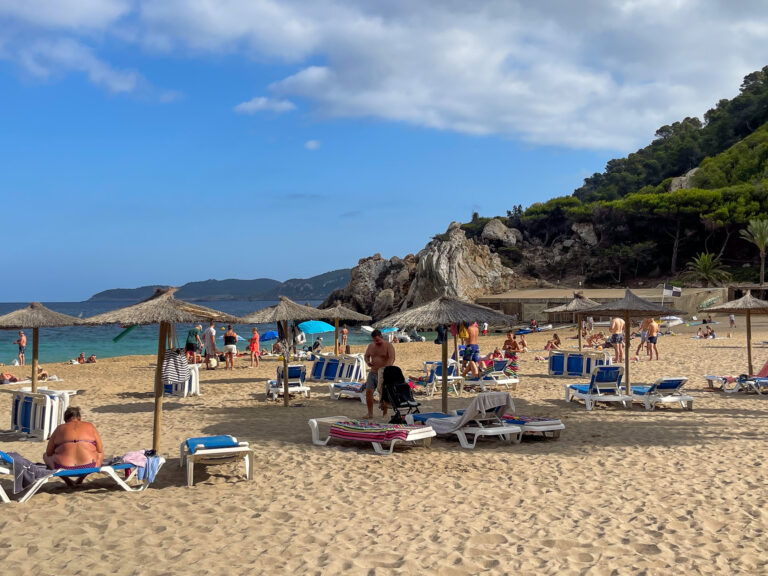
An Exciting 4-Day Ibiza Itinerary Without (Too Much) Partying
Ibiza has been on my radar my entire travel life. When I was younger I always imagined partying at…

First Timers Guide to Tomorrowland – The Best Festival in the World
I vividly remember the first time I saw a Tomorrowland after-movie. That day, I knew that one day I…
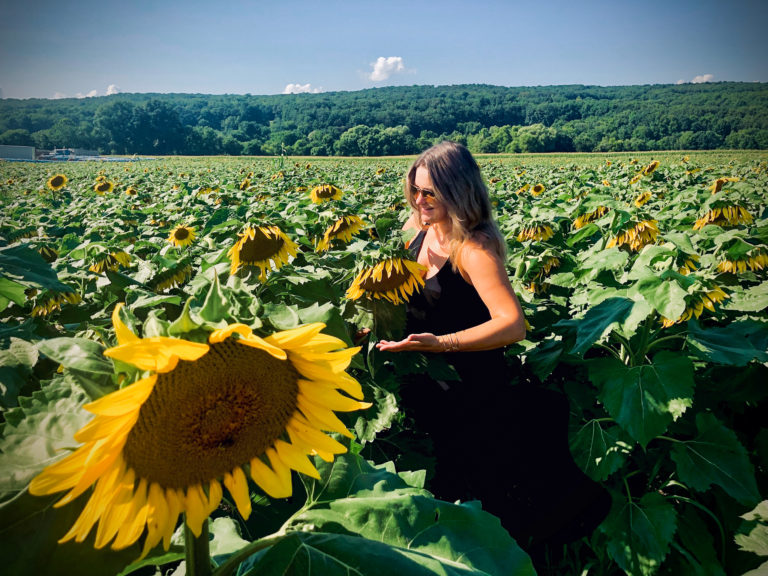
Actually cool ideas for a PERFECT New Jersey summer (2023)
There are a ton of activities and places and I’m about to give you some awesome picks to check…
Awesome Things To Do In New Brunswick, NJ
When I first came to Rutgers, never did I imagine I would spend 10 years living in the New…
Leave a Reply Cancel reply
Your email address will not be published. Required fields are marked *
Best Time to Visit the Uyuni Salt Flats
2020 updated information to help you choose the best time to visit the Uyuni Salt Flats
Exploring the Uyuni salt flats
The Uyuni salt flats in Bolivia are the biggest salt flats in the world and one of the main attractions in South America. You can get there by taking a tour from La Paz or San Pedro de Atacama if you are in Chile. You can do one day tours to even spend the night in this unique place. Exploring the largest salt flat in the world gives you the chance to see wildlife, get relaxed in hot springs, amazing views, and get fun taking pictures .
If you are planning to visit the Uyuni Salt Flats, you can do it almost at any time of the year , but of course, depending on the time you arrive there, the conditions can change. You can go many times and always it’s going to be different.
The winds liberated by the Salt flats can be pretty intense almost the whole year, reaching a speed of even 90 Km per hour with northeast direction. These winds are constantly shaping the big white sea of salt, so that’s the reason why a second visit to this amazing place, might be quite different from the first.
Visiting the Salt flats during the rainy season
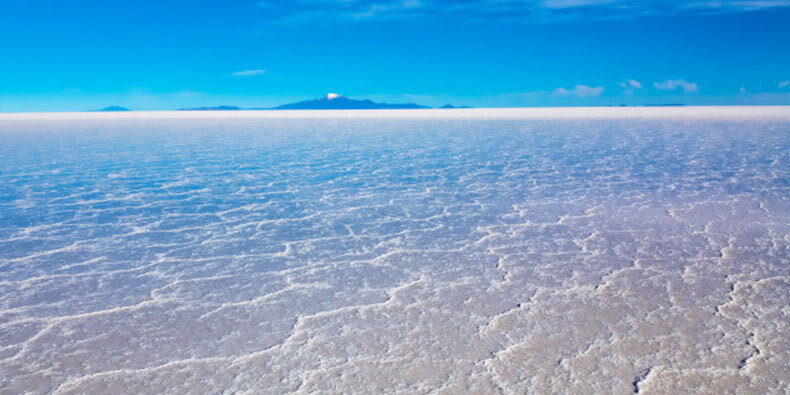
The big sea of salt has its days to be a paradise or a badland, the rainy season goes from December to March , and with this wet weather you should keep in mind that it’s going to be hot , so the temperatures will be between 13 to 20-celsius degrees.
Visiting the Salt flats during the dry season
The dry season starts around May and ends on the first days of December . Even though this season it’s dry, it gets much colder so the temperatures can go down to -10 Celsius degrees during the night.
The Uyuni Salt Flats are constantly changing
In Uyuni, the salt flats have their water saturated by lithium, magnesium, salt, and other chemical compositions. During the dry season, the strong sun hits the salt flats and evaporates its water, creating small fractures on the ground with geometric shapes that spread on this huge white sea.
The incredible mirror effect from December to February
During the months from December to February , the rainy season allows the water to flow and clean the massive white sea of the Uyuni salt flats, so when the sun comes out and the rain stops, the result it’s just amazing. The mirror effect created by just a few inches of water, will surround you and give you an “Up and down” view. So this time of the year it’s a perfect opportunity if you are seeking to get nice pictures with this unique effect.
The lonely season from March to May
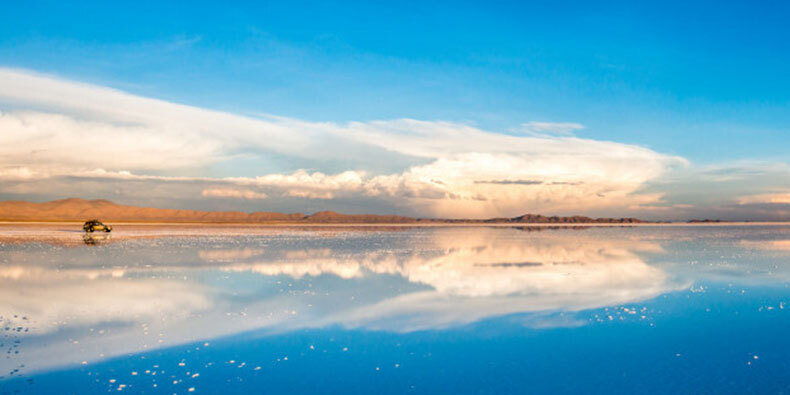
If you want to avoid crowds of tourists and be just by yourself, or only with your group. This might be the best time for you to visit the Uyuni salt flats. You will have more freedom to explore the area, and during this cold season, the sky gets clear and unbelievably more bright to provide a panoramic view of the salt flats.
Just in case, keep in mind that during this season, strong rains can limit access to the salt flats, that’s also the reason why it’s less crowded, but some days depending on the weather conditions, you can be lucky and be able to get in.
The immensity of the white sea of salt from June to August
During this time of the year, the Uyuni salt flats reach its greatest optic illusion effect. It gets completely white, so it’s like walking on a huge sea that got dry.
At this time of the year, the weather can get extremely cold at night reaching freezing temperatures below zero Celsius degrees. So remember to bring enough warm clothes and a sleeping bag if you are spending the night on the salt flats.
Feel the warm exploring under the sun from September to November
For those who don’t like the cold weather, this is one of the best times to visit the Uyuni salt flats. The sun, during these months, keeps the salt flats with warm weather . Reaching the white salt sea before sunset , during this time of the year would be a breathtaking experience for you, a unique spectacle for your eyes full of colors combined with the white of the salt flats.
Choose the best time for you to visit the Uyuni salt flats
Now that you know the differences between each time of the year , you can choose the best time that suits you to explore this amazing place in South America . Being one of the best attractions in Bolivia , you can plan your trip with enough time to make sure you get the best of your experience .
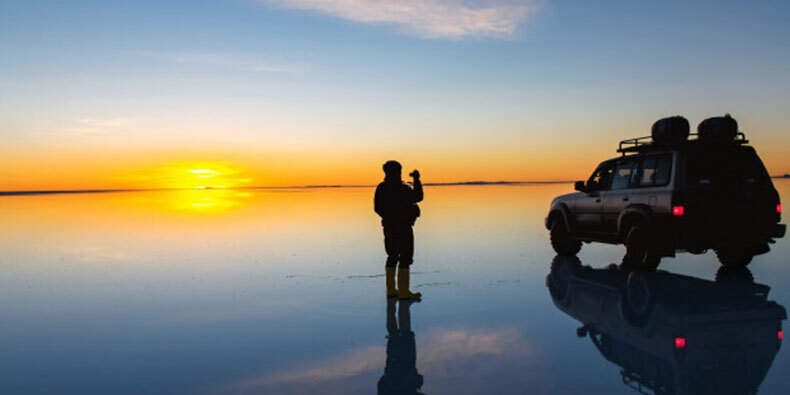
Visit the largest salt mine
in the world in 2021
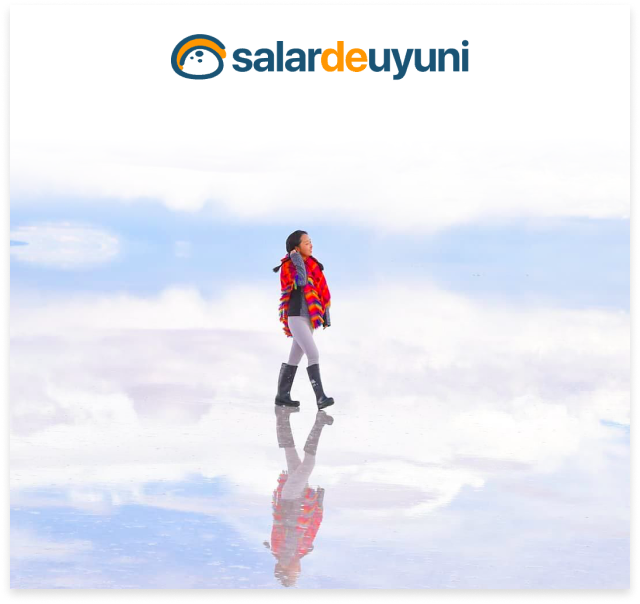

When’s The Best Time to Visit The Bolivia Salt Flats?
The Salar de Uyuni is a natural wonder that should be at the top of your bucket list. But it can be hard to know when the best time to visit the Bolivia salt flats is. Read this handy guide to help you plan your trip.
Why Should I Visit the Salar de Uyuni at all?
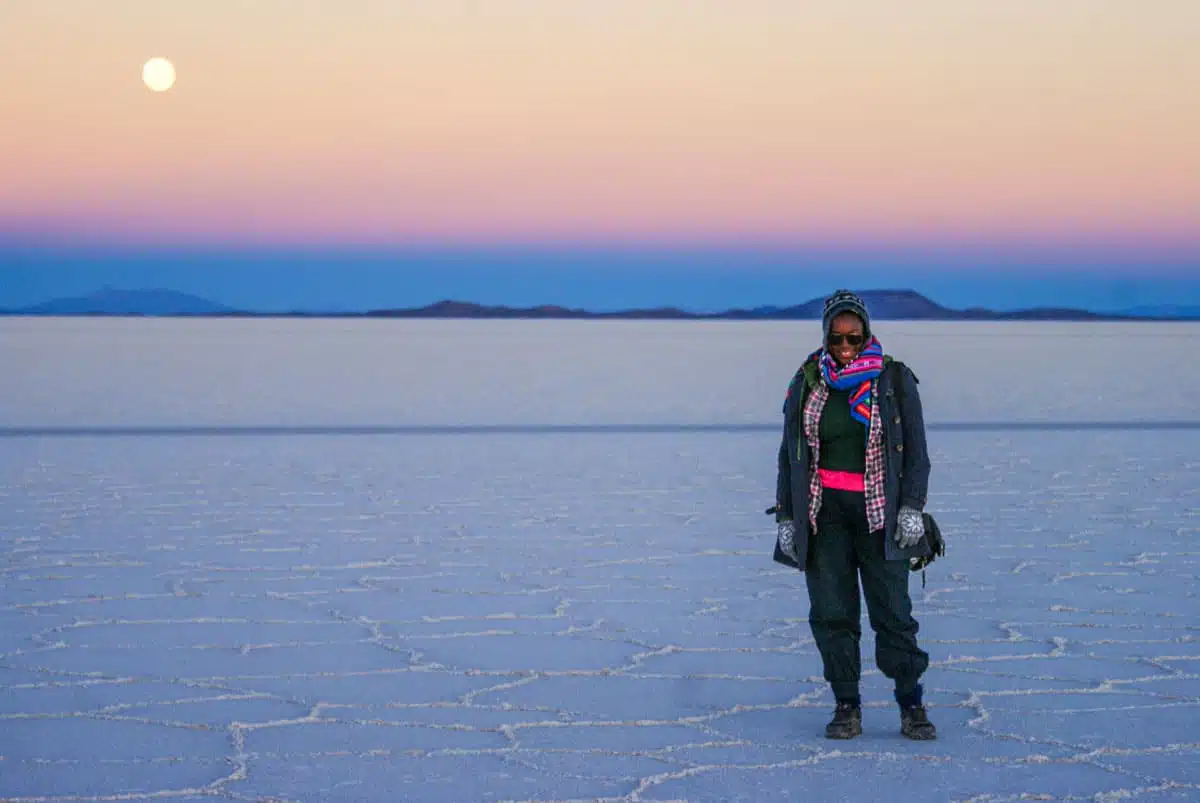
Well, if the photos alone aren’t enough to get you reaching for your passport, listen to this. At 4,086 square miles, Salar de Uyuni is the largest salt flat on the planet and as you can see, it’s fairly spectacular.
Situated in southwestern Bolivia not far from the crest of the Andes, the mountains that surround the salt flat provide truly staggering beauty.
You needn’t worry about sweltering in the South American sun either, as Salar de Uyuni is actually over 3,600 metres above sea level, meaning the air temperature peaks at around 21°C between November and January and doesn’t often get any lower than 13°C in June.
Plus, there are a whole range of natural treats to be discovered such as towering volcanoes, lakes, scalding geysers, relaxing hot-springs, giant cacti.
Although the salt flat may not be teeming with animals there is some unique wildlife to be found including the Andean fox and around 80 different species of bird.
Always be aware that altitude sickness at this height can be an issue, so you’d be wise to spend a few days acclimatising in the surrounding area beforehand.
So When is the Best Time to Visit the Bolivia Salt Flats?
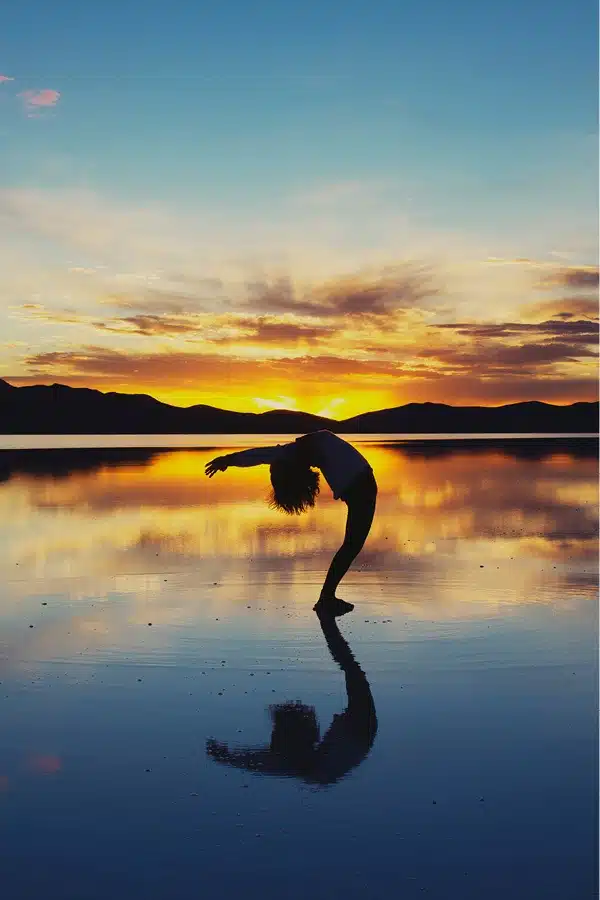
That’s a very good question, and the answer depends entirely on what kind of trip you’re looking for.
The rainy season falls between January and April and the salt flat floods during this period. However, with the water comes beauty. The kind of beauty that makes you wonder if what you’re looking at is even real. The flooding produces a natural phenomena – the largest mirror on earth and your chances of seeing it increase drastically if you go at this time of year.
Many people would say that this is the best time to visit the Bolivia salt flats because the mirror effect is so striking.
A possible downside of visiting in the wet season is that the conditions may mean it’s impossible to visit Isla Incahuasi or Fish Island as it has become known to some.
Don’t be fooled, there aren’t any fish. Its name comes from its fish-like shape and it isn’t actually even an island. It’s the top of the remains of an ancient volcano which was submerged by a huge prehistoric lake some 40,000 years ago.
The 61 acres of rocky outcrop is home to giant cacti and a tourist centre, and Rhea, an Ostrich-like bird that roams the island.
Not a fan of the wet? Then head to the Salar de Uyuni between July and October when you’ll experience wall to wall sunshine.
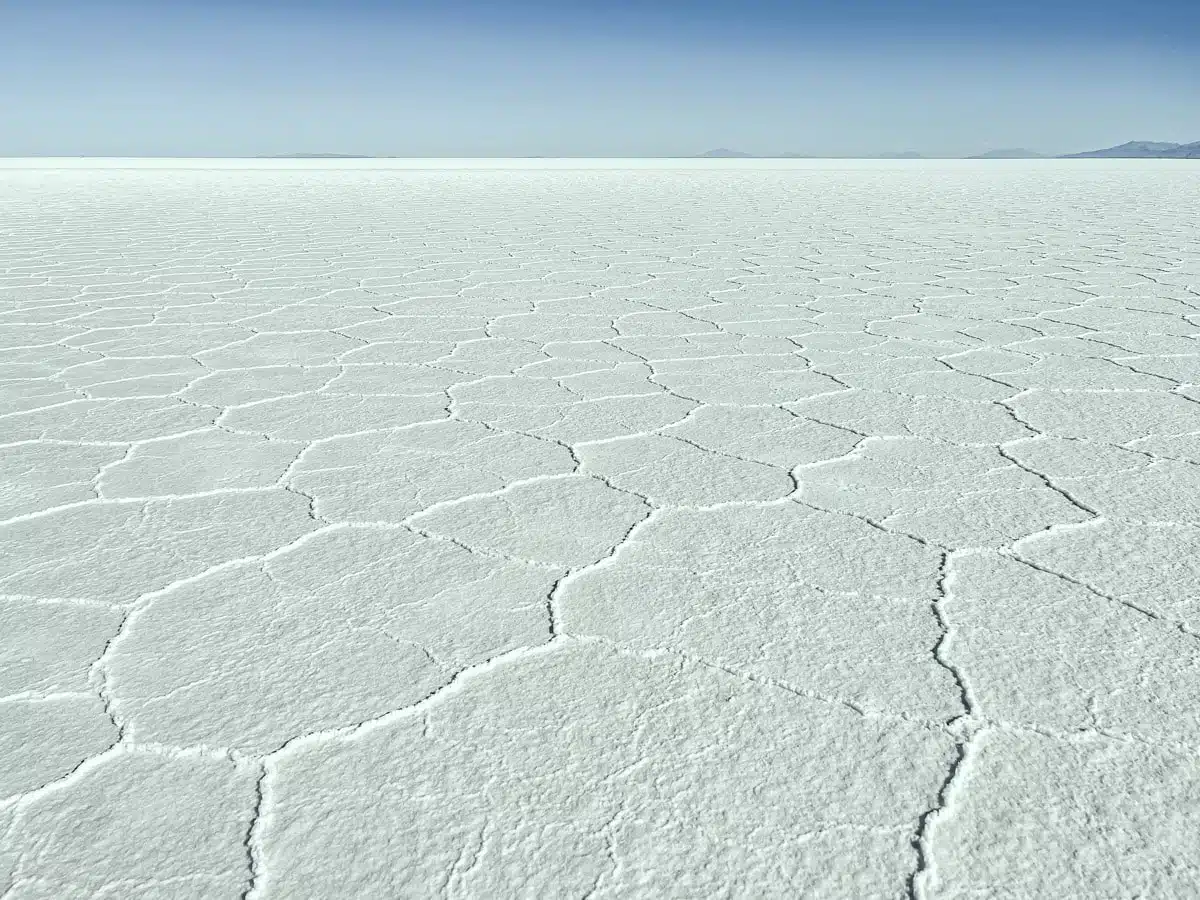
With rainfall averaging just 1mm per month in this period, you’d have to be mightily unlucky to experience any pesky showers. Be prepared to wrap up at night though, as temperatures can plunge to a bone-chilling -9°C. Brrrr!
So really the best time to visit the Bolivia salt flats will depend on whether you want to see the flats during the rainy season or in their uncovered state during the dry season.
How to Visit the Salar de Uyuni like a Pro
Without the Mirror Effect, is the Salar de Uyuni Still Worth the Trip?
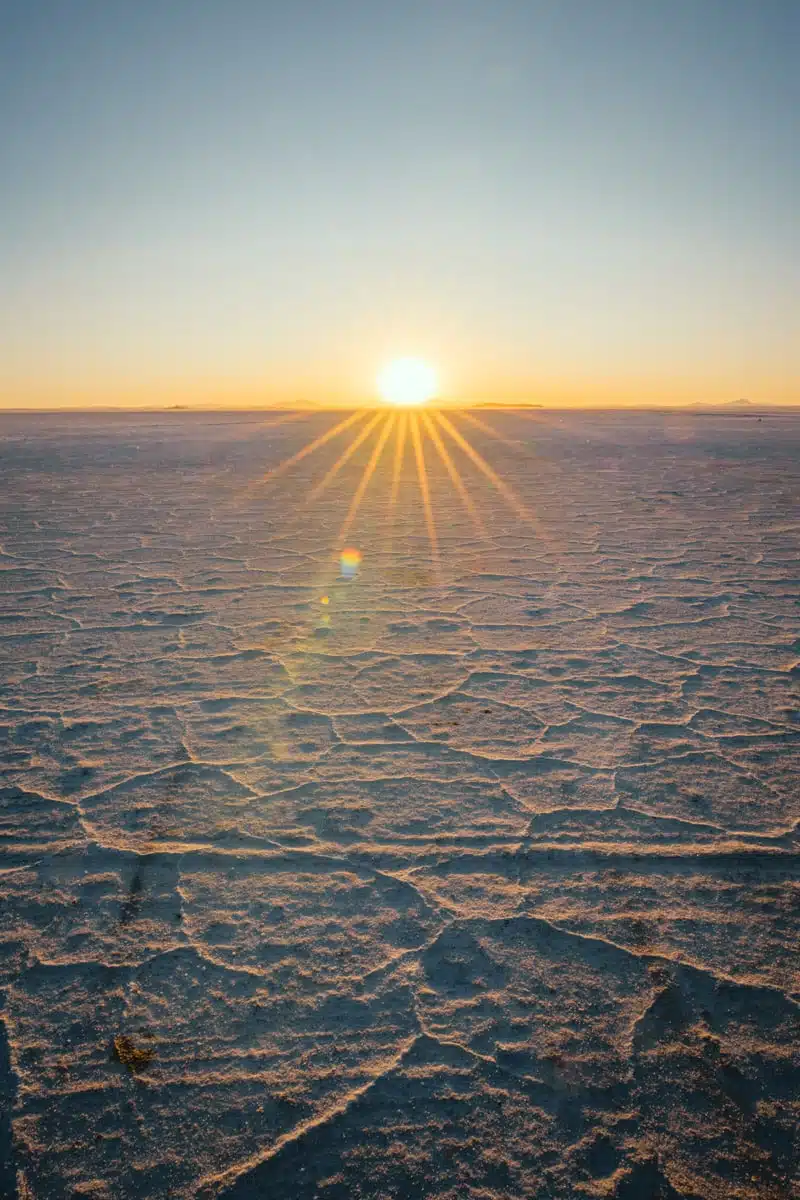
Ultimately, with or without the famed mirror effect, there are very few places on earth like it. An enormous white mass of salt as far as the eye can see really is something to behold.
A big part of its beauty is simply the vast emptiness of it, so it is still definitely worth a visit even in the dry season.
PS: Travelling in South America? Check out my other South America travel guides.
- South America travel routes
- Unmissable places to see in Bolivia
- The South American Travel Bucket List
- The Best Tours on the Bolivia Salt Flats
- How to Visit the Bolivia Salt Flats
Love This? Save and Share on Pinterest
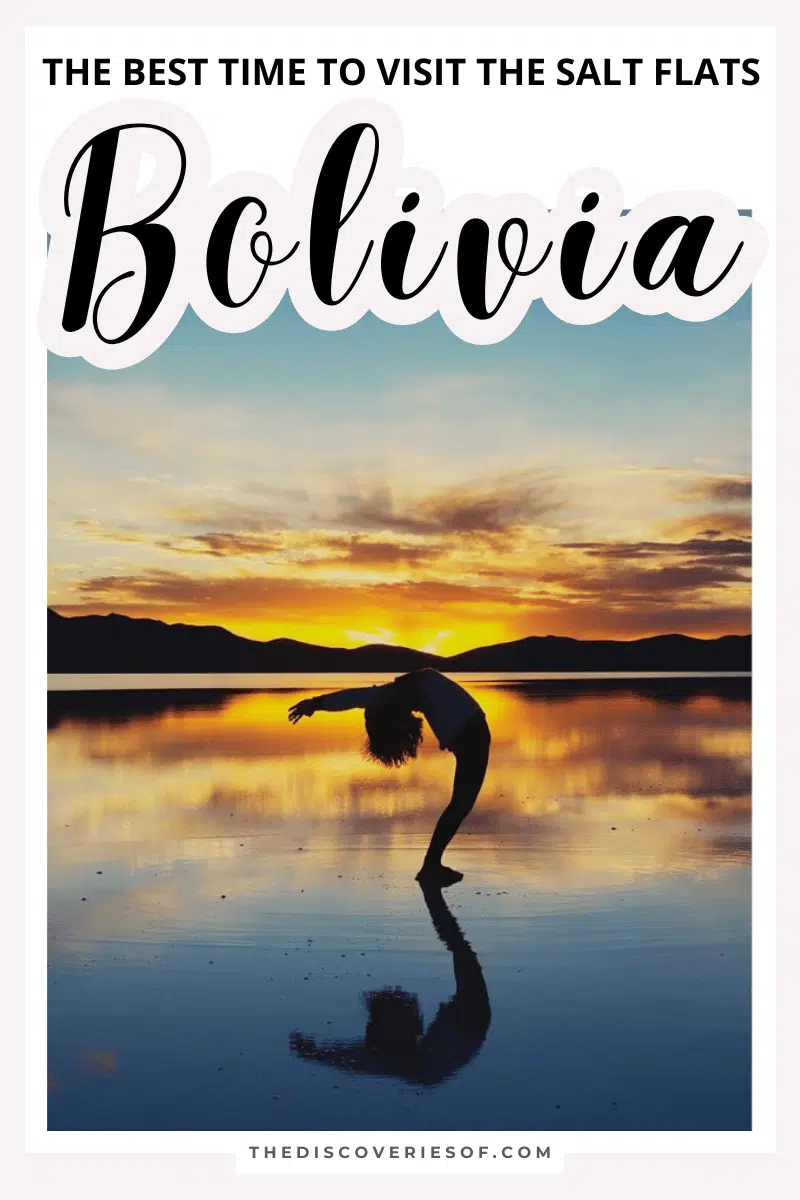
I’m Julianna Barnaby - a professional travel writer and geek extraordinaire. I started The Discoveries Of to help you to discover the best of new destinations from around the world.
Discovering new places is a thrill - whether it’s close to home, a new country or continent, I write to help you explore more and explore differently.
Related Posts
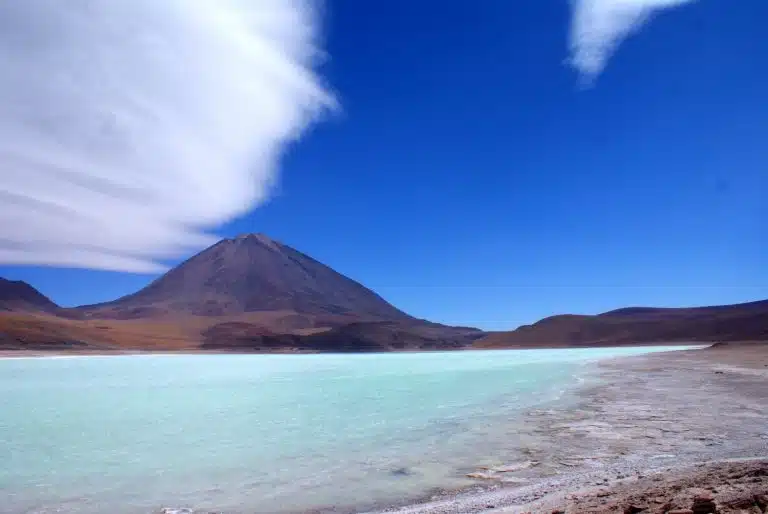
Bolivia’s Landscapes: Surreal Spots You Need to Visit
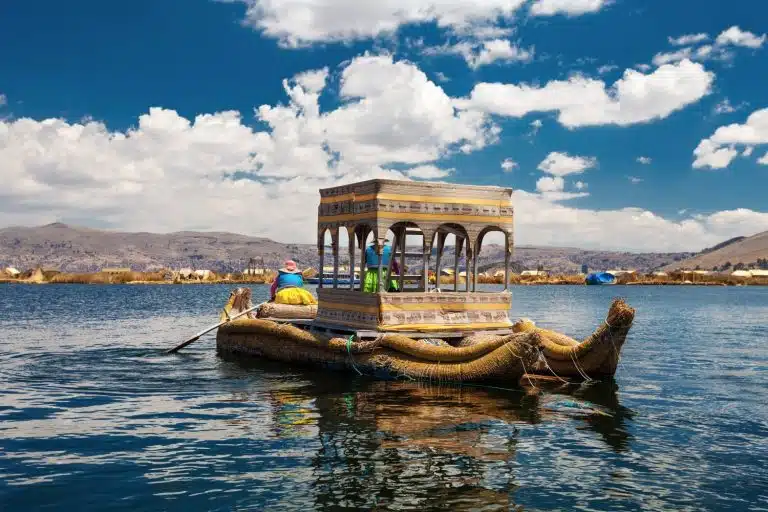
18 Amazing Places to Visit in Bolivia
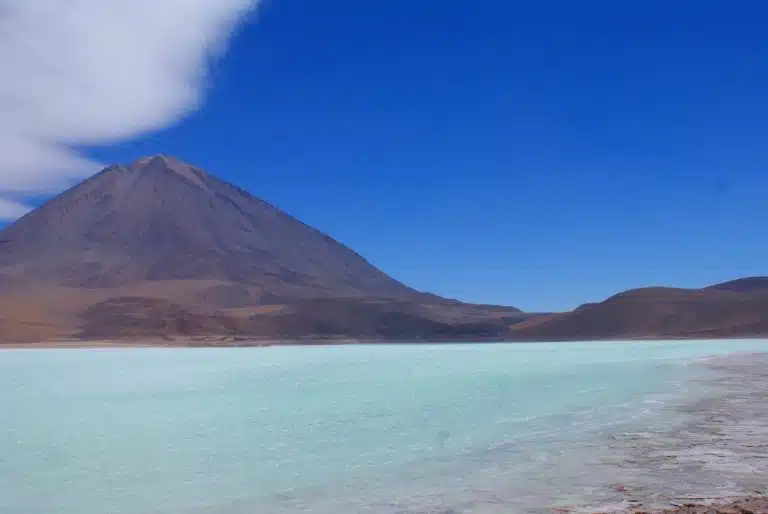
Laguna Verde Bolivia: A Practical Guide To Visiting Bolivia’s Green Lake
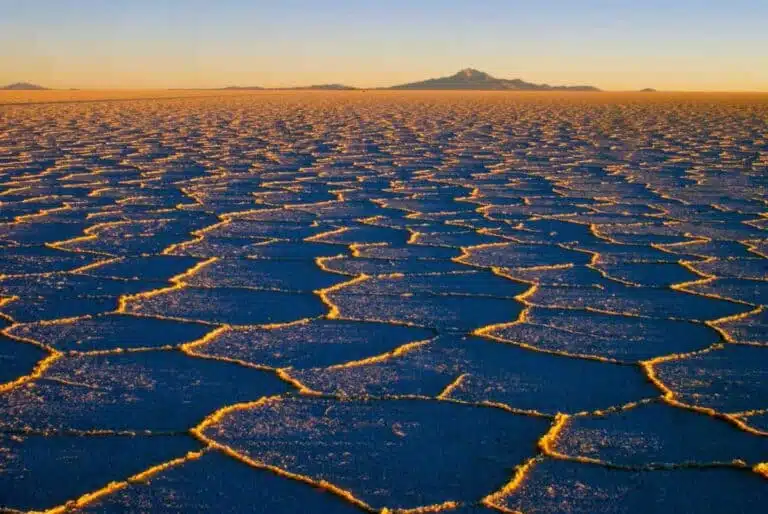
The Best Bolivia Salt Flats Tours: 15 Adventures in Uyuni & Altiplano
So many great tips in your article. Thank you for pulling it altogether. There are many options which you have given. I will bookmark this article for when we plan our travels to Bolivia. After reading this I am so excited to be able to plan a journey here.
Thanks Jane – seeing the sun rise over the salt flats is one of the most memorable experiences from years stuffed with various trips. What a place!
Leave a Reply Cancel reply
Your email address will not be published. Required fields are marked *

Follow me on Instagram for travel inspiration, tips, and guides.
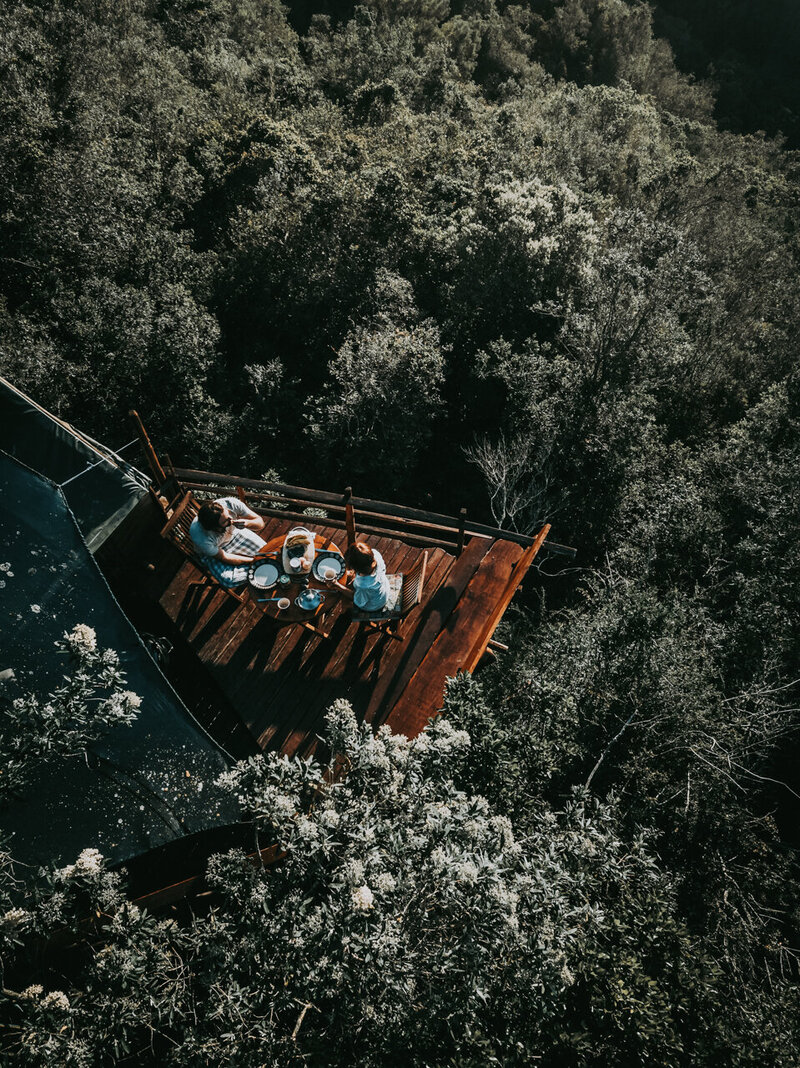
We're the sisters who founded Across South America 15 years ago... and we're here to help you fall in love with South America just like we are!
If you are a passionate traveler and you are interested in visiting South America , you must definitely add the fascinating Uyuni Salt Flats on your bucket list. Known as “the place where Heaven meets Earth”, this is the world’s largest salt flat and a natural wonder nobody who has the chance to see it should miss. Since the weather can influence your traveling experience, and it is difficult to decide when is the best time to visit Uyuni Salt Flats in Bolivia , we’ve put together a guide to help you plan your vacation.

Bolivia’s Uyuni Salt Flats at night by @ceska_v_chile
Best time to visit the Uyuni Salt Flats in Bolivia: See the amazing mirror effect: December – January – February
The biggest salt flat in the world was created thanks to a huge Bolivia salt lake that dried up, leaving us with the largest reflecting surface, which can be seen during the rainy season. So, if this is your main purpose, consider planning your trip between January and April, when, thanks to the rain, you will be able to admire the overwhelming beauty of the mirror effect.

The largest salt flats on earth, the Salar de Uyuni spans over 10.5 kilometres (4,000+miles). The Salar con be visited in both the rainy and the dry season. During the Rainy season (November to March) a layer of rainwater creates a mirror-like surface as smooth as glass. Like in the photo. 📸 @thegipsyjourney
In case you are hunting for the most amazing natural mirror in the world, this is the best time to visit Uyuni Salt Flats in Bolivia . As you can imagine, this is also the time when the majority of tourists come to this area. So, expect it to be crowded.
Keep in mind that, though it is said February is the rainiest month, weather is unpredictable. This also means that if there is too much rain, parts of the salt flat become inaccessible. For instance, for safety reasons, Incahuasi and Fish islands can become restricted areas.
Best time to visit the Uyuni Salt Flats in Bolivia: Stay away from the crowds: March – April – May

If you plan to admire the beauty of this mesmerizing area but stay away from the crowds, the best time to visit Uyuni Salt Flats in Bolivia is during March, April and May . In addition to more solitude, this period also gives you better deals, as well as mild weather.
Also, in late April expect to see the dry salt desert, as well as the amazing mirror effect, depending on precipitation . You might be lucky enough to have a memorable experience and see the best in the area while enjoying a couple of warm days.
Read More: 10 Best Things to Do in Uyuni Salt Flats, Bolivia
Best time to visit the Uyuni Salt Flats in Bolivia: Contemplate the white beach-like desert: June – July – August
Blindingly white expanse desert Thanks @yessitraveling for sharing this picture of your trip with us!
The winter months might not be considered the best time to visit Bolivia’s Uyuni Salt Flats, but many people truly enjoy this area even if the weather is not too friendly. Expect to be welcomed by a white beach-like desert because this is what the salt flat becomes during winter when there is almost no rain.
This is actually the best time for romantics who want to experience stargazing together with their loved ones. The sky is crystal clear, and it offers a spectacular night show. Just remember to dress warm and take a few extra blankets!
Best time to visit the Uyuni Salt Flats in Bolivia: Explore under the sun: September – October – November
If you are looking forward to sunny, warm days but you are not afraid of freezing, windy nights, you will love the Uyuni Salt Flats during September, October and November . Keep in mind that these months are dry, but there might be occasional rains, as well.
As you can see, though the best time to visit Uyuni Salt Flats in Bolivia for the amazing mirror effect is during the rainy season, and for stargazing is during winter, the truth is that there is always a good time to see this natural wonder. Each season offers visitors a different perspective, and your choice depends on what you are looking for, your budget, and the moment you can take a few days off work. Whatever you choose, this Bolivian piece of heaven promises to amaze your eyes and fill your soul with its imperishable beauty.
Read More: Argentine, Chilean, and Bolivian Salt Flats and Lakes: 12 Days Suggested Itinerary
Maria Barciela ❣️ Founding Partner & Director Across South America
PS. If you have any questions regarding your trip to South America, our services, or how we work. Contact us here , we would love to know about your South America trip plans.
PS.S. Read Here about our traveler’s testimonials and learn more about how we work 😉
Share this:
Best time to visit uyuni salt flats in bolivia.
May 8, 2024
Rio de Janeiro Brazil: The Best Time to Travel!
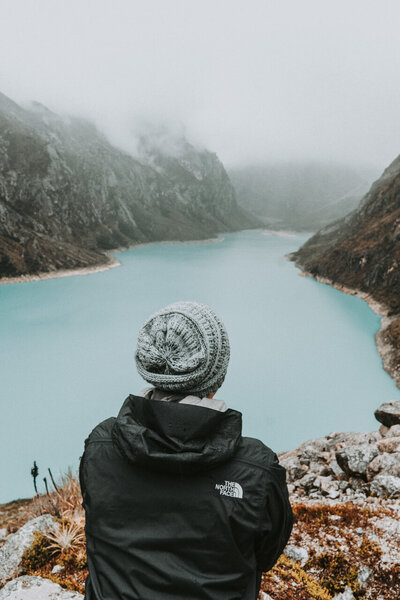
Clara Barciela
May 2, 2024
5 Best Travel Tips for Exploring Buenos Aires
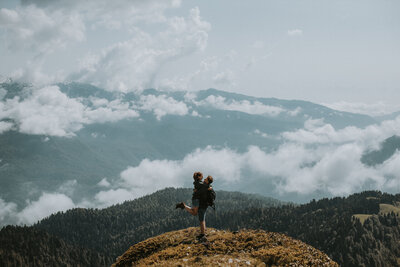
April 18, 2024
5 Top Luxury Patagonia Hotels in a One-of-a-Kind Location
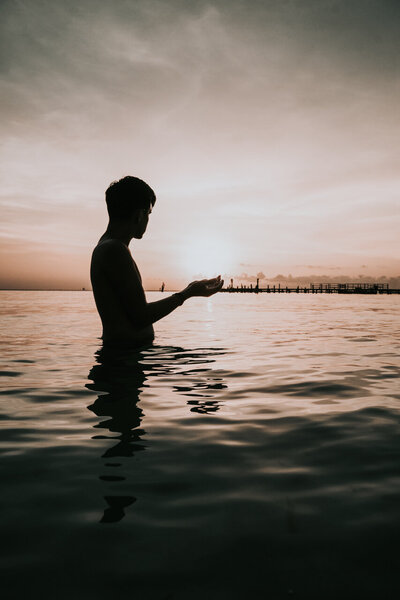
March 14, 2024
Best Mendoza Luxury Hotels to Stay in 2024
Maria Barciela
March 7, 2024
Mendoza Wineries – Our Ultimate 2024 Luxury Travel Guide
January 31, 2024
Best Things to Do in Rio de Janeiro, Brazil: Go Off the Beaten Path
Clara & Maria Barciela
We want you to truly experience the place we call home... and love it as much as we do. We're sharing six of our favourite South American destinations with you so you can start envisioning the experience of your dreams.
EXCLUSIVE DESTINATIONS IN SOUTH AMERICA
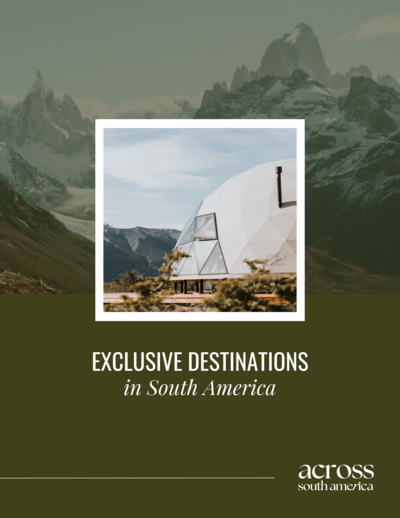
Luxury Travel Planning Guide
GET THE GUIDE →
Elevate your travel experience — download the ultimate luxury guide for an incredible journey!
Diverge from the typical tourist destinations in favor of unique luxury experiences curated by South American locals. We create trips that are custom tailored to your needs & dreams!
© 2024, Across South America. Privacy. Terms and conditions. Site crafted with love by Knap Creative .

Best Time to Visit Bolivia Salt Flats 2023-2024
Travel author
I have a passion for the English countryside and especially anywhere in Yorkshire. I drink far too much Yorkshire tea on my travels and even take it with me when abroad. My passion is to share travel experiences with my readers which may help them plan their holidays and save money.
As an Amazon Associate, I earn from qualifying purchases
It’s an expensive trip getting to Bolivia so you need to find out what is the Best Time to Visit the Bolivia Salt Flats.
In short, by far the best time to visit the Salt Flats is in April when the weather is mild, yet there is still surface water and you can still see the infamous mirror effect.
Table of Contents
What to Expect from Trip to Bolivia?
Traveling to Bolivia is one of the best experiences which one can enjoy.
Despite being a relatively small country, there are many breathtaking attractions to see in Bolivia, including some of the most spectacular natural wonders such as Salar de Uyuni.
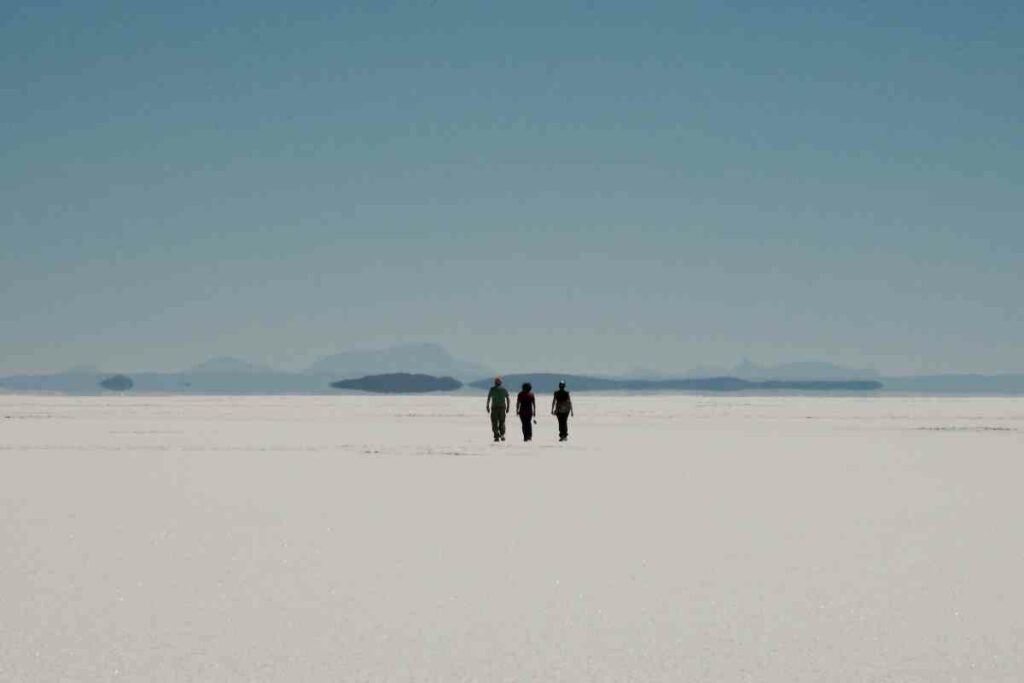
Also known as “Salt Flats”, Salar de Uyuni is located about 3,600 meters above sea level.
This is by far one of the most visited and beautiful attractions of the country.
Every Year – The Bolivia Salt Flats welcomes thousands of visitors from across the world. The Salt Flats are best known for the magical mirror effect that you might have seen on the internet many times.
But, you cannot really view this effect all year round due to the changing climate.
The weather of Bolivia varies from region to region.
In one city, you may experience warm weather while in the highlands, you may be crunching around in the snow.
Weather in Bolivia’s Salar de Uyuni or, Salt Flats, can be divided into two seasons; dry season and rainy season.
What is the Best Time to Go to the Bolivia Salt Flats?
The perfect time to visit the Bolivia Salt Flats is undoubtedly at the end of April when you can see both the dry salt desert and the famous mirror effect.
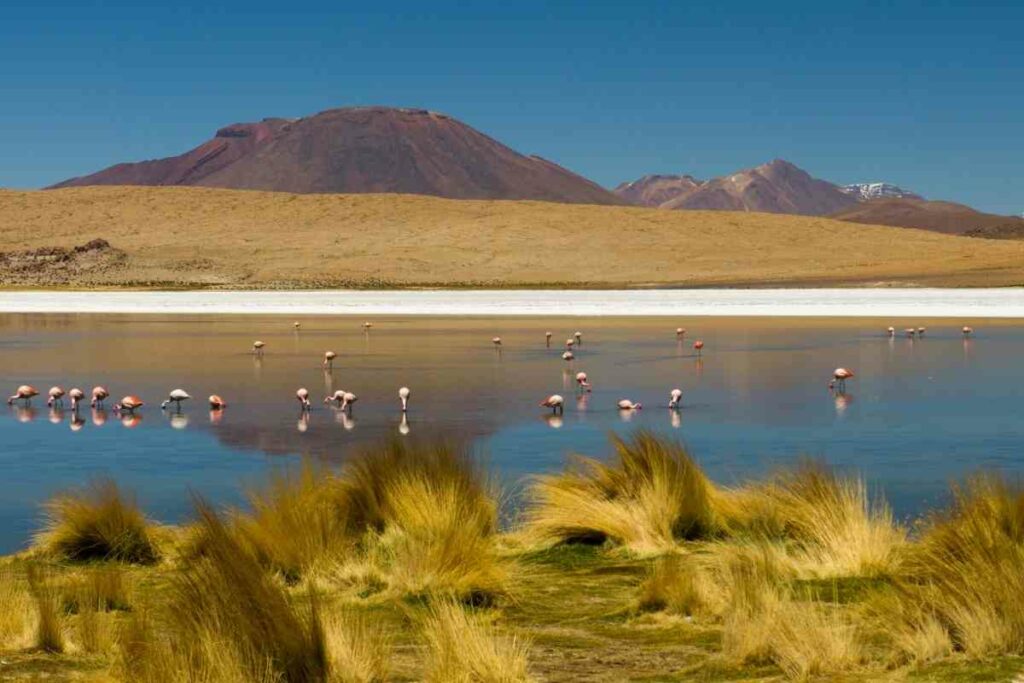
The weather is not too cold like in winter season neither is it rainy.
April sees low number of tourists which gives you a great opportunity to enjoy the Salt Flats and take amazing photography there.
If April is not a suitable month for you to visit the Salt Flats, here are some of the tips to help you decide on other best times to visit the region:
- If you are after the best weather, visit between September and November.
- If you want to see the misty salt flats, you should visit between December and April.
Apart from that, any time is good to visit Salar de Uyuni. Each season offers a unique experience that you should not miss.
December – January – February: The Mirror Effect
At the beginning of each year, Salar de Uyuni in Bolivia becomes the largest natural mirror in the world.
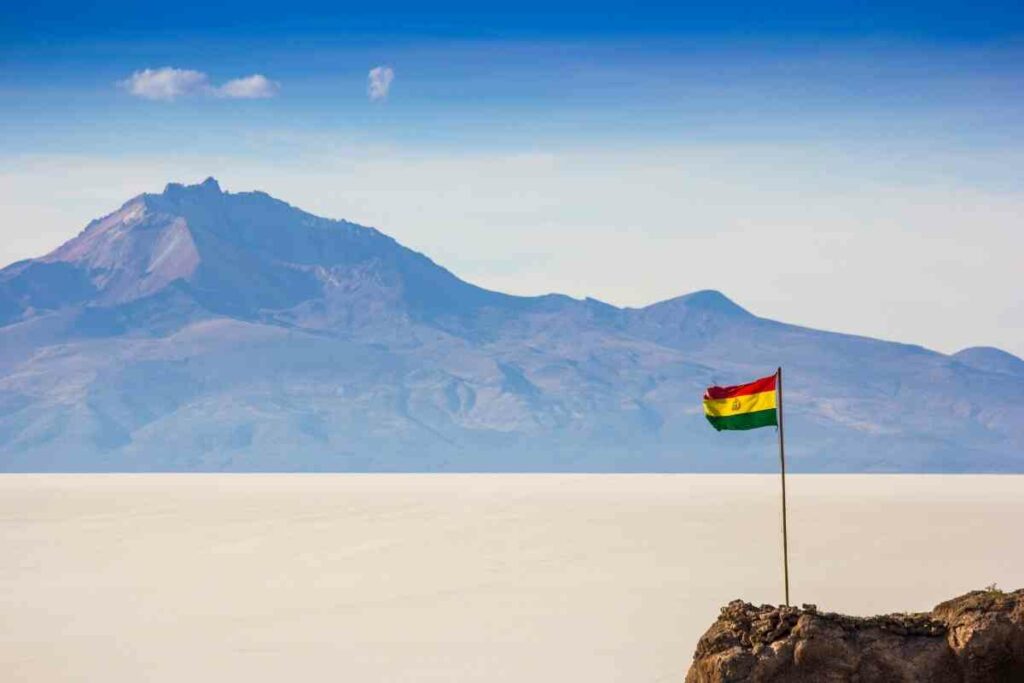
Since this giant salt desert is covered in water during the rainy season, it reflects light creating magical optical illusions.
This time of the year is very busy with tourists, therefore, you can expect an increase in tour prices and accommodation.
In February – The Salt Flats receive plenty of rainfall. Therefore, you should be aware that too much rain will melt the salt and make large parts of the salt flat inaccessible for visitors.
During and after New Year’s Eve, some excursions cannot be maximized due to excessive rainfall.
Be sure to check in advance if you plan to travel during February.
March – April – May: Warmer Months
There are far fewer tourists during these months, so you can get better deals from tour operators to visit the Salt Flats.
The weather is even warmer and if you are accompanied by a tour guide, there is a high chance of witnessing the mirror effect at some location throughout the salt flats.
Make sure to ask your tour company before booking your trip.
June – July – August: Cold and Dry
These months are colder in Uyuni, Bolivia.
If you are planning to visit during these months, you must dress up in warm clothing. Bring extra blankets if you wish to stay overnight.
The Salt Flats are almost like a white sand beach during these months but the weather can be so cold at this time of the year especially after sunset.
September – October – November: Sunny Days and Freezing Nights
These months are not too cold with rainfall on some days.
However, it can drop well below freezing at night.
Visit the Salt Flats during these months if seeing the mirror effect is not on your bucket list but, really, to go at this time of year would like going to The Louvre and not seeing the Mona Lisa!
How to get to the Bolivia Salt Flats?
From la paz.
Night buses from La Paz usually take around 8 hours and arrive in Uyuni early in the morning.
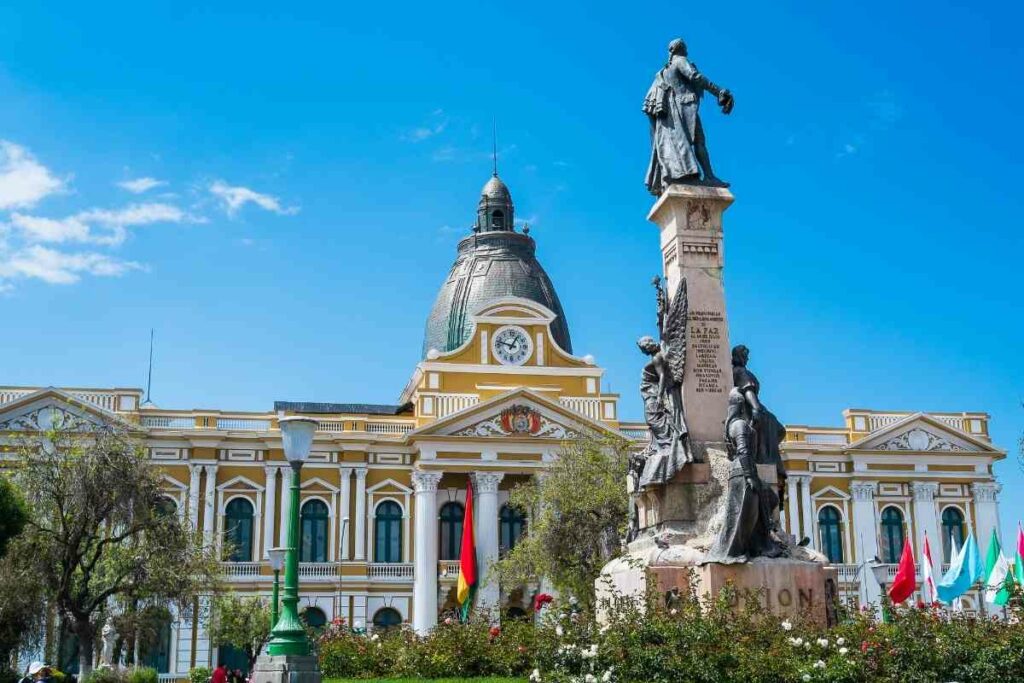
As a result, it allows bus riders to make the trip to the salt flat the same day and come back.
You can book a bus tour with Todo Turismo which may cost you a little more than usual but the buses are comfortable and allow visitors to travel long hours comfortably.
Another way to get to the Salt Flats is from Peru via Peru Hop bus.
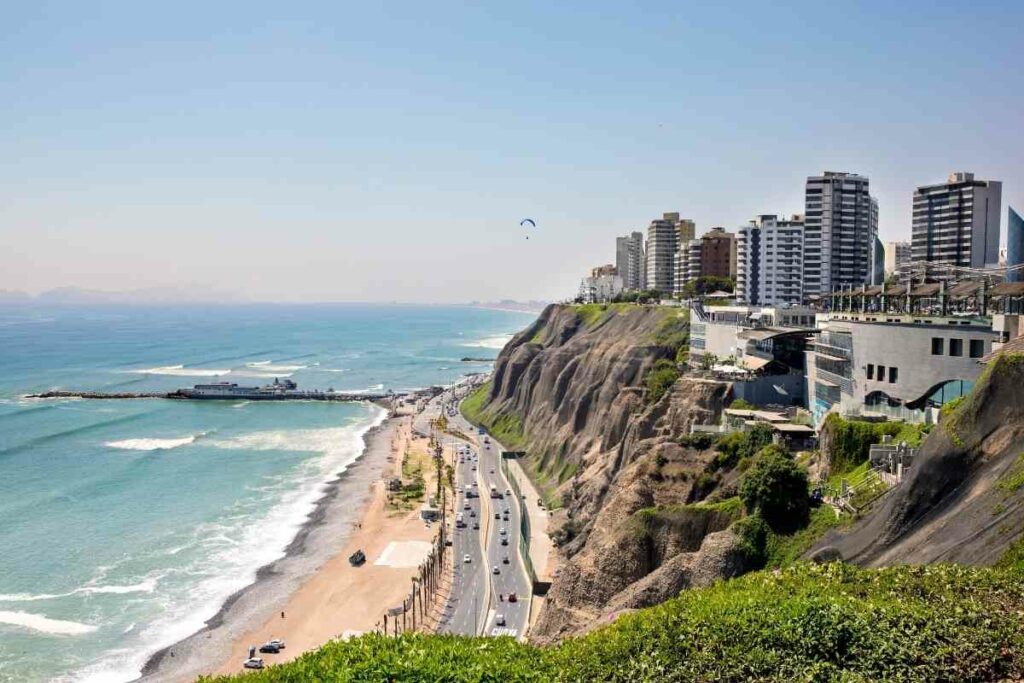
The bus tour is available from 7 locations across the country to La Paz.
Once you arrive in La Paz, you’ll have to take another bus to reach the Salt Flats.
There are many other options to travel from Peru but the route services are not too reliable and, unfortunately, have a long history of leaving passengers stranded in unknown locations.
You may also like 📖
- Peru vs. Ecuador Travel Guide
From San Pedro De Atacama
This route us not usually recommended especially for those who are not fond of crossing borders and changing buses.
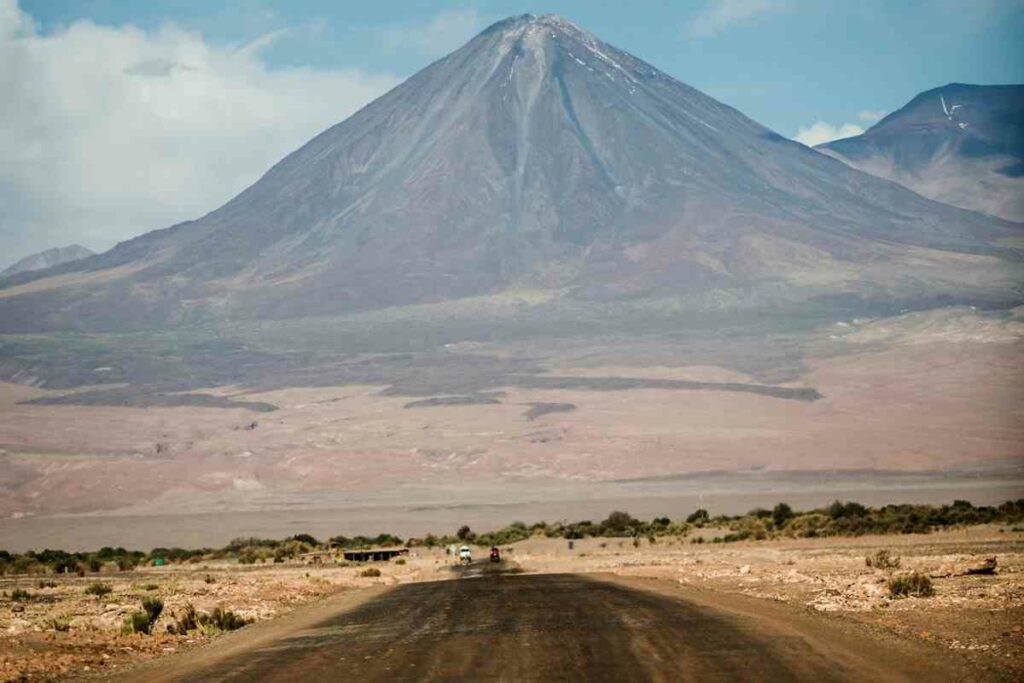
If you are coming to the Bolivia Salt Flats from San Pedro de Atacama, it is suggested to book a 3 to 4 day tour that starts from San Pedro and ends up in Uyuni.
Alternatively, you can start and finish your tour in San Pedro De Atacama.
The shortest way to reach Uyuni from La Paz is by plane.
The flight takes around one hour and costs about $130 for a return ticket.
What to Bring?
Salar de Uyuni or Bolivia Salt Flats are located in a remote location, which means you have to be well-prepared before your visit.
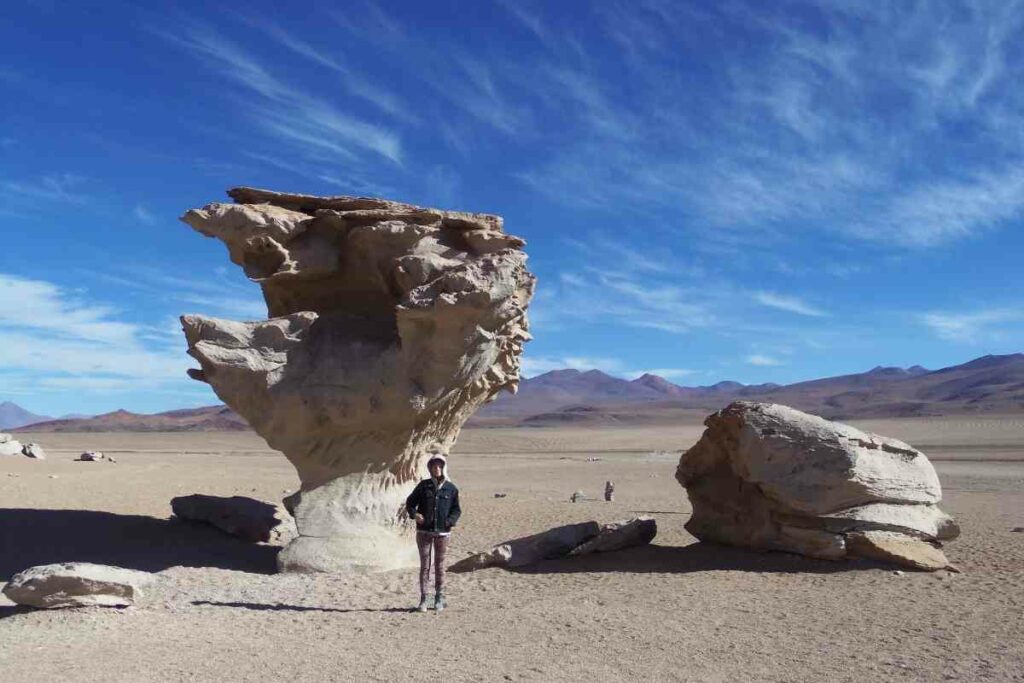
Knowing what to pack for your trip, no matter how long or short is a must.
Below are few of the things that you should bring with you when you visit Salar de Uyuni.
A Good Camera
Bring your best photography equipment because if you don’t do so, you are going to regret it.
The surreal views of the Bolivia Salt Flats are going to leave you awe-struck and make you capture every view with your camera.
Make sure to bring extra batteries and a spare memory card in case if you run out of any of these.
There aren’t many ATMs (and the ones you find may not have cash), so bring some Bolivian currency to pay for local food, drinks, tips or payment for drivers.
Water and Snacks
Avoid spending too much for bottles of water in the Uyuni Salt Flats.
Instead, bring your own water bottles. You’ll also need some snacks to eat in between.
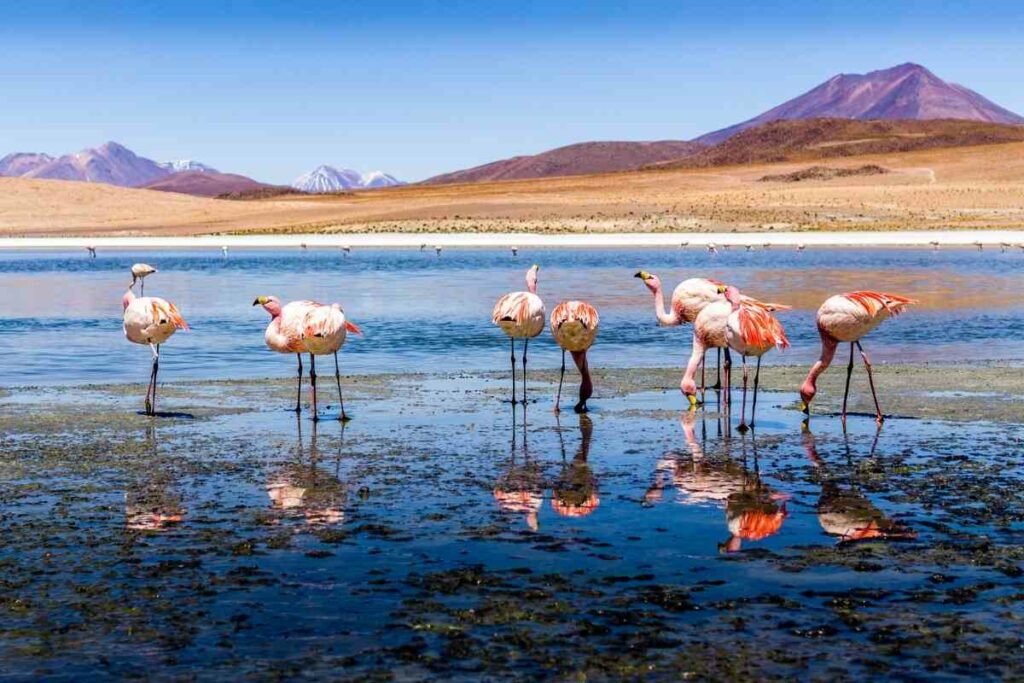
Comfortable Sandals
Many of the ground surfaces in Uyuni are neither clean nor comfortable to walk on barefoot.
Keep a soft and comfortable pair of sandals to wear around the city and at the Salt Flats.
Keep an extra pair just in case of an emergency.
You’ll witness the wildlife in their natural habitat in Uyuni, such as flamingos, llamas, and vicuñas.
Having binoculars will allow you to see them from a distance.
Even if you don’t have binoculars, a camera macro lens will let you view them from up-close.
You can now buy a lens for your smart phone too.
This is an item that is often overlooked by the visitors but believe us, it is essential to keep a towel when you are visiting in warmer months and sweat a lot.
Sunscreen and Sunglasses
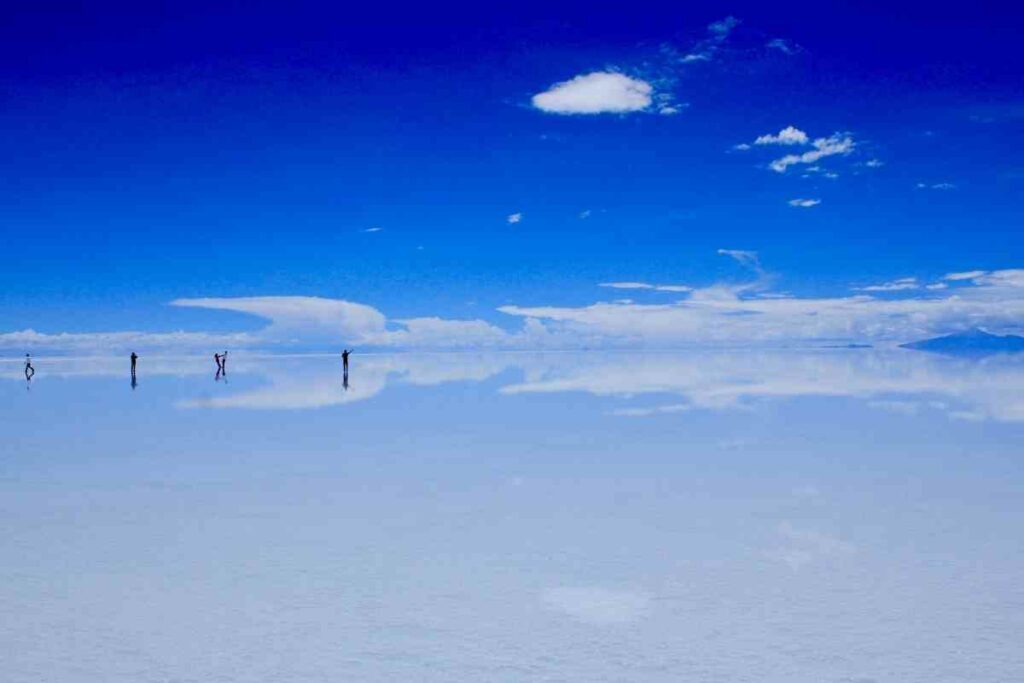
Don’t even think of leaving any of this behind.
The sun here can be really bright and cause extreme sunburn. Visitors are advised to wear sunscreen and sunglasses during the day.
A Flashlight
There is no electricity in many places in the Uyuni Salt Flats, so a flashlight can be very useful. Going to the bathroom at night without light is not a pleasant thing that you’d want to experience.
Further Reading – Read more about The Annual Bali Spirit Festival
Where to Stay in Uyuni?
The city of Uyuni is very small, with not many accommodation options to choose from in reality.
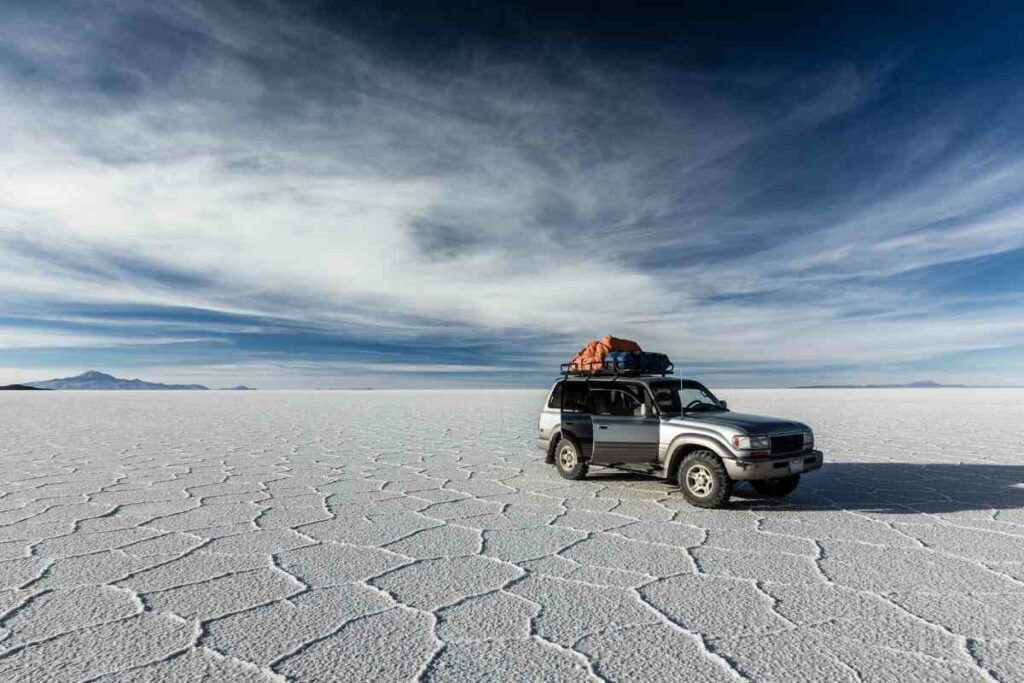
There is not much to do here besides a tour to the flats.
We recommend you plan your journey in such a way that you visit the salt flats in one day, so you don’t have to stay here overnight.
If you are expecting more than a day tour, below are some of the best hotels you can book.
Casa de Sal – Salt Hotel
It is one of the best hotels to stay in Uyuni.
If you are coming here for two days, it’s our recommendation to stay here on your overnighter.
Located in the city center, the hotel is made of salt blocks, and each room features a private bathroom, a dining table, a seating area, and other amenities.
Price per night at this hotel starts from $57.
Hotel Sal Andina
This hotel is best for solo travelers.

Hotel Sal Andina is located 1.7 km from the airport. All the rooms here feature all your necessary amenities.
Price for one room per night starts from $57 here. Rates can go higher in the peak tourist season.
Nativa Hotel
This hotel is pretty good as compared to others.
Nativa hotel offers many facilities to its guests, such as private bathrooms, desk, flat-screen TV, and more.
You can enjoy a buffet or continental breakfast at this hotel.
Bike hire is also offered at the hotel. Price for staying here for one night is around $70.
So when is the best time to visit the Bolivia Salt Flats ?
There are many factors that come into play, but generally speaking April and December-February are considered prime months for a trip. What’s your favorite season?
The Bolivia Salt Flats are a truly unique and special place that should be visited by as many people as possible.
It is important to plan ahead before you visit, because the seasonality of this destination means that it is best enjoyed at certain times of year.
Have fun on your adventure around one of Earth’s most incredible places!
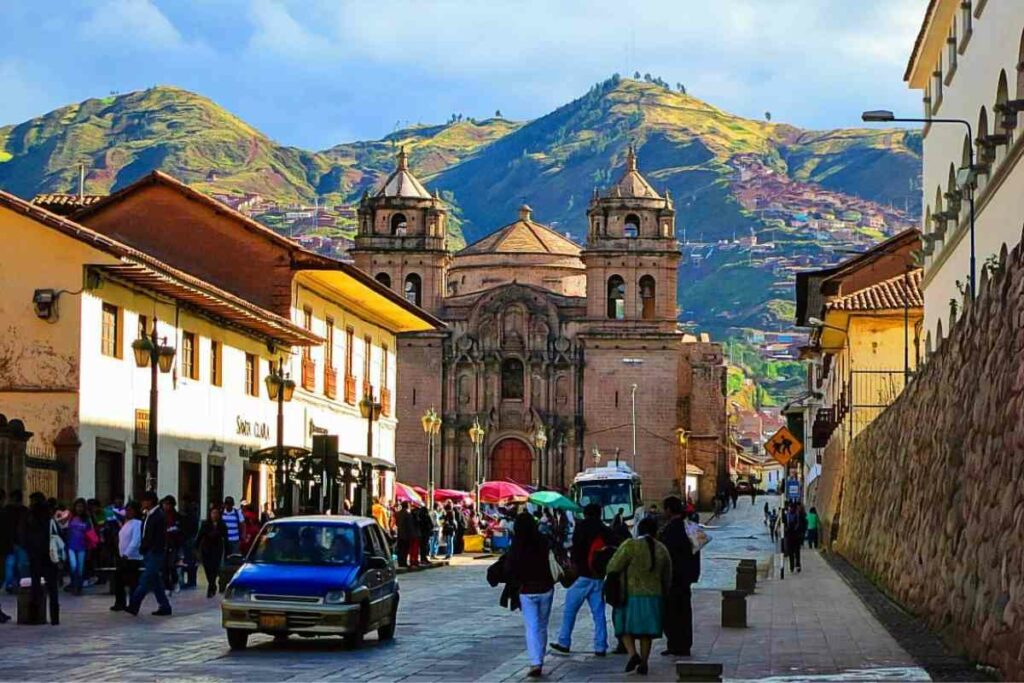
Affiliate Disclaimer
As an affiliate, we may earn a commission from qualifying purchases. We get commissions for purchases made through links on this website from Amazon and other third parties.
Latest posts
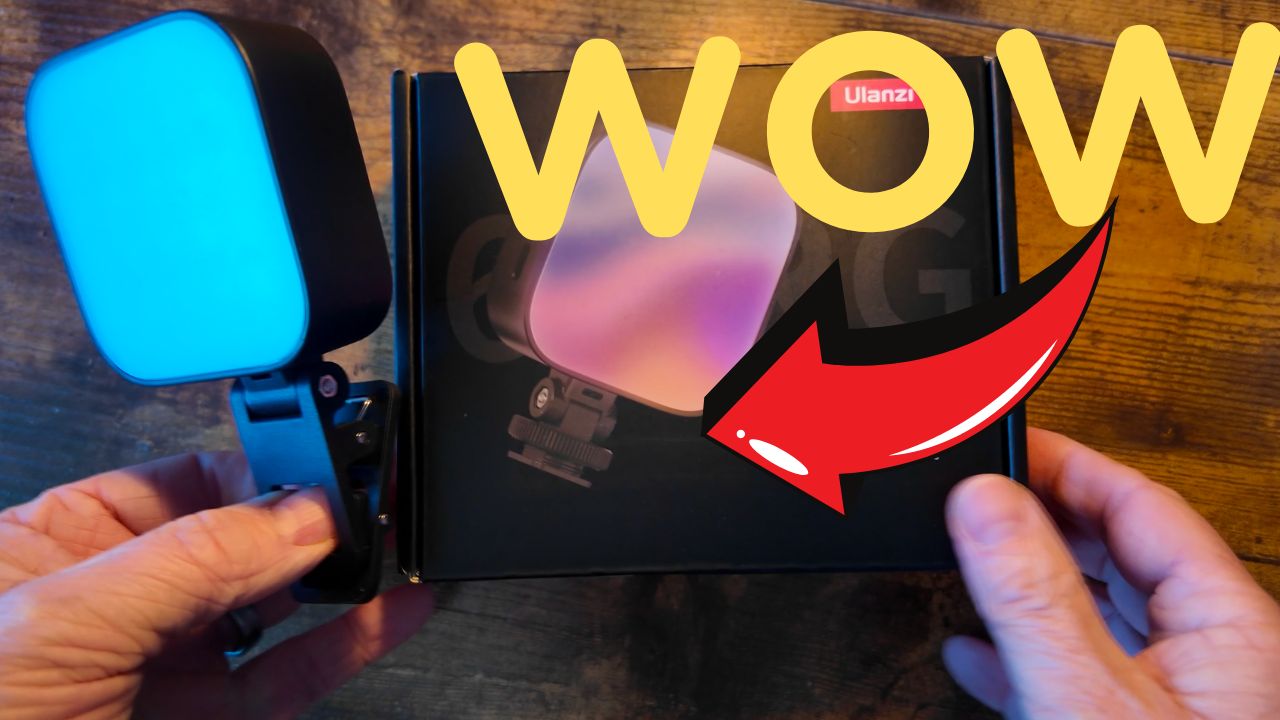
Ulanzi U60 RGB Video Light Review: Top Vloggers’ Choice?
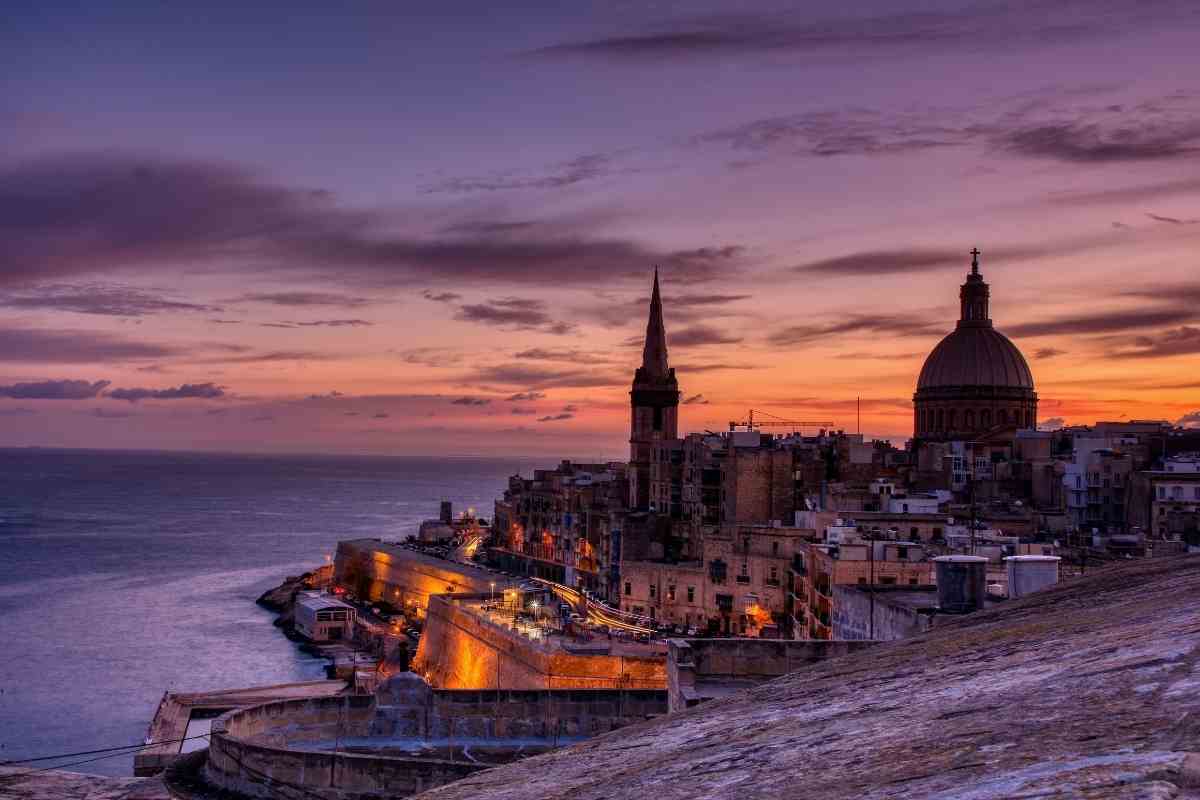
What Is Malta Famous For? Malta Local History and Past Events
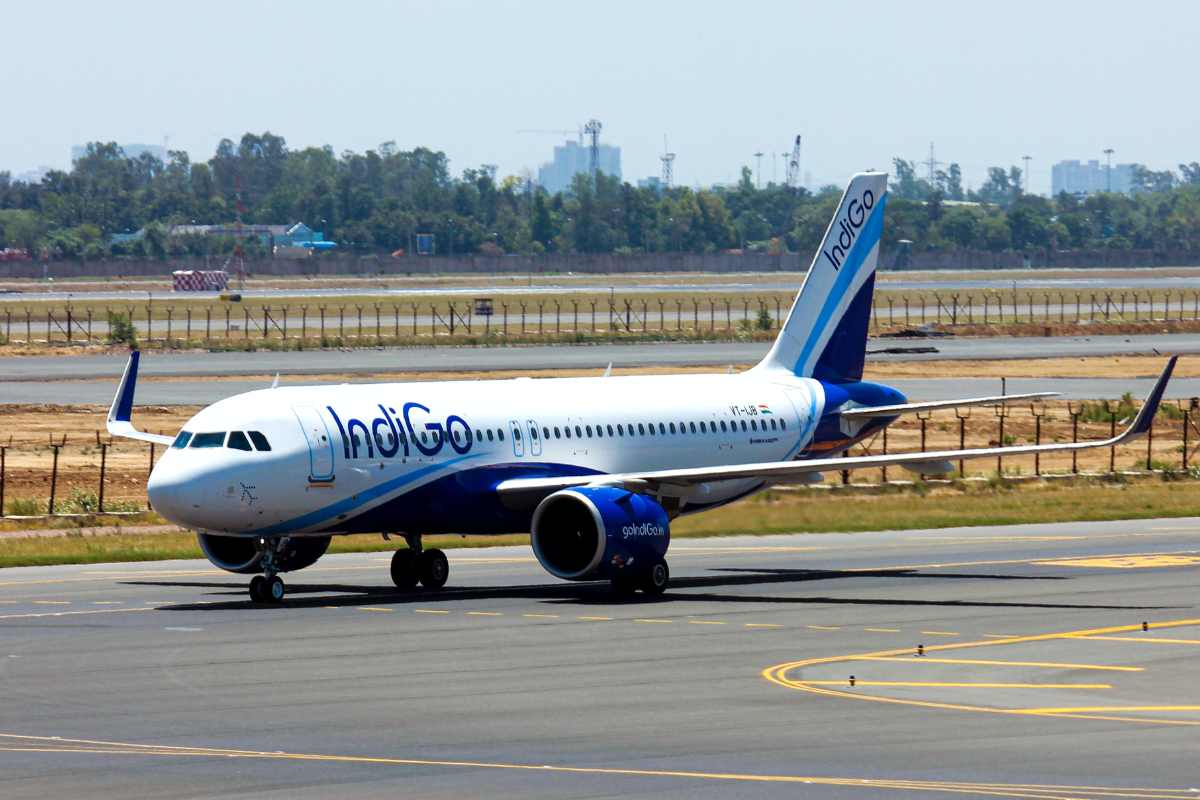
Do IndiGo Airlines Provide Headphones? In-Flight Entertainment Explained
Best time to visit Bolivia?
Bolivia is also known as ‘the Tibet of South America’ and that is for a reason. The temperatures are much lower than you might think. In the lowlands of Santa Cruz, the weather conditions are different than in the Altiplano, the high plains with heights, between 3000 m and 4000 m above sea level. Since most sights are located on the high plains, it is best to focus on this region. In this article I’m telling you more about the best time to visit Bolivia and the best time to visit and go Bolivia salt flats.
What is the best time to visit Bolivia?
The best time to visit Bolivia is between May and October. In the winter months (May-August), it is almost always sunny in the highlands, with a clear blue sky, during the day. This is the best time of the year to take pictures and the weather conditions are pleasant for hiking. The temperatures are between 15 and 18 ° C, during the day. But as soon as the sun is gone, it cools down and temperatures even drop below freezing at night. It can be extremely cold, especially on the salt flats of Uyuni , Lake Titicaca and Potosí . Museums, hotels and restaurants are not always warm either. It is important to bring enough warm clothes. I also recommend to put on layers of clothing, so that you can always put on and take off your clothes, depending on the time of day.
The summer and rainy season, run from December to March. Temperatures are higher, but it will be cloudy, foggy and rainy more often.
Bolivia salt flats best time to go | Salar de Uyuni
What is the best time to visit Bolivia salt flats? The Bolivia salt flats can be accessed between April and October. In the rainy season, between December and March, it is not possible to access the Salar and visit famous rock formation, such as Incahuasi and Pescado . The Salar then turns into a lake, where you can enjoy surreal and almost psychedelic views. In April, it is still possible that you will sink a bit through the salt in some places, because the water has not dried completely. Nothing to worry about, but make sure you put on solid shoes. Read everything you want to know about El Salar de Uyuni in the next article.
Essentials items to pack for a trip to Bolivia
- Sunglasses and suncream. The light is bright, because of the altitude.
- Sufficient warm clothing, preferably in layers, so that you can put things on and off during the day
- Mosquito repellent, if you plan to visit the jungle and lowlands
- Hat, scarf and gloves. You can also buy these items in Bolivia and take them as a souvenir back home.
- Hiking shoes + hiking poles (if you plan to go for some serious hiking)
- A waterbag for cold hotel beds, especially if you are planning to stay in simple/budget accommodations
- Hand sanetizer
- Sufficient antidiarrheal medicines + paracetamol
- The right power plug and socket
More about Bolivia
Do you want to read more about Bolivia? In this article you’ll find an overview with what to do in Bolivia, including the most beautiful destinations. Also, have a look in the Bolivia library with many articles about this beautiful country. Such as the best things to do in Sucre , a city guide for Copacabana , a tour on the Bolivian salt flats, the Bolivian Inca trail , a visit to the Potosí mines , a tour to the Tiwanaku ruins , shopping in La Paz , how to use the cable car in La Paz but also information about safety .
This article may contain affiliate links. If you purchase something using one of our links, we may receive a commission at no extra cost to you, which helps us keep this blog alive. Thank you for your support! Please see our disclosures for more information.
You may also like
The lodge at jaguar reef – boutique hotel..., the rainforest lodge at sleeping giant – boutique..., galapagos islands ecuador – everything you want to..., best boutique hotels and lodges in ecuador –..., mashpi lodge ecuador – everything you want to..., things to do in quito ecuador | the..., things to do in otavalo ecuador – a..., things to do in riobamba ecuador – a..., sacha lodge ecuador – everything you want to..., hacienda piman – discover this unique boutique hotel....
Bolivia’s 7 best road trips

Dec 7, 2023 • 6 min read
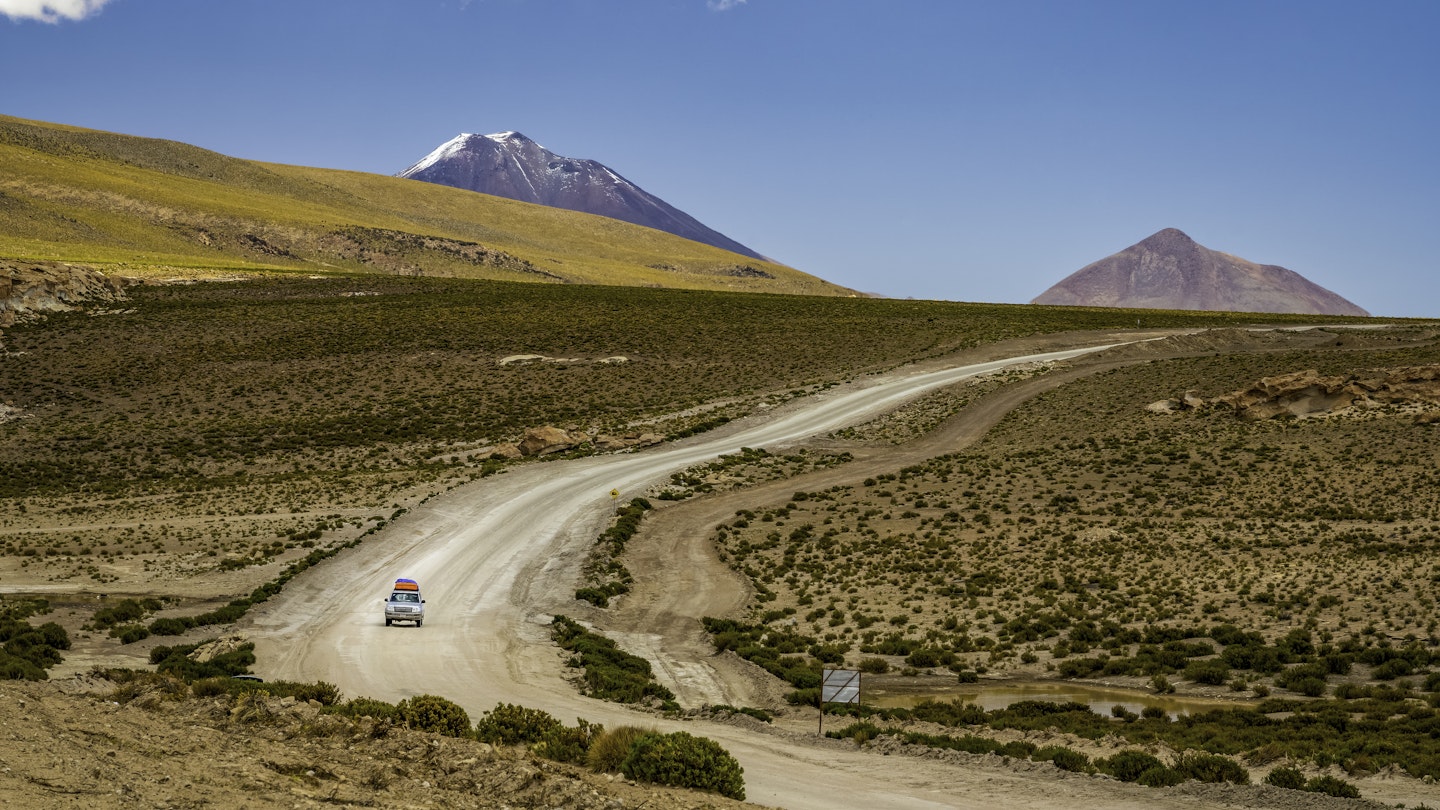
Road conditions in Bolivia can vary widely and driving can be challenging, even for the most experienced drivers © Sasipa Muennuch / Getty Images
Though the highways are mostly well-maintained, driving in Bolivia can be stressful due to unpredictable drivers, landslides depending on the season and last-minute roadblocks that derail your schedule. But the stunning landscapes – including Lake Titicaca, the world-famous Uyuni Salt Flats and Tarija wine country – make any road trip worth it.
These eight itineraries range from the most famous attractions in Bolivia to emerging traveler destinations, from the soaring Andes to the relaxed vibes of eastern villages.
1. The road to Sorata
Best road trip for stunning scenery La Paz–Sorata; 142km (88 miles); allow two days
Driving in La Paz can be stressful due to its ups and downs and messy traffic disruptions, but it's worth it for everything you’ll see later.
Along the road to Sorata, through National Route 2 and Road 16, there are impressive views of the Cordillera Real mountains and Lake Titicaca , one of the top destinations in Bolivia. Plus, whenever it's clear you'll see the towering, snowcapped peaks of Ancohuma and Illampu.
Sorata is a town with a laid-back atmosphere that lies in a valley beneath majestic mountains and canyons – a great spot for hikers.
Detour: Thirty minutes away from Sorata on a dusty road, there’s a navigable lagoon inside a cave , which is the town's main attraction. You can see it walking on a three-hour easy hike.
2. The Andes to the Amazon rainforest
Best road trip for nature lovers La Paz–Coroico; 108km (67 miles); allow two days
This route has an outstanding diversity of landscapes, departing from the bustling city of La Paz and finishing up in the warm and friendly village of Coroico through Road 3. In two hours, you’ll descend from the summit and snowy peaks of the Andes into the Amazon rainforest – a drop in altitude of 3,600m (11,482ft) with many scenic spots to take photos along the way.
The most famous way to get to Coroico is by bicycle on what's known as “Death Road,” though that can be challenging for some people. Road-tripping on a different route offers a less risky alternative – and equally wonderful views.
Planning tip: You may experience fog and rain in the descent, so it’s better not to travel to Coroico at night.

3. La Chiquitania
Best road trip for architectural heritage Santa Cruz–Santa Cruz; 934km (580 miles); allow five to six days
Discover several centuries-old Jesuit Mission towns among epic landscapes and natural attractions in eastern Bolivia's La Chiquitania . In this multi-day itinerary, you’ll get the chance to visit at least four small towns and explore their ancient baroque architecture.
Between Santa Cruz and San Jose, you should make three must-see stops in San Javier, Concepción and San Ignacio. Visit the churches and museums for a complete experience.
Detour: If you’re not in a rush to get back to Santa Cruz, you can pivot 150km (93 miles) to the east and visit Aguas Calientes for a short break in relaxing thermal baths.

4. Ancient cities and historic attractions
Best road trip for historical immersion Sucre–Potosí; 155km (96.3 miles); allow three days
Sucre is one of the best-preserved ancient cities in South America, where colonial and republican buildings emerge from the white-painted downtown. From there, hit Road 5 to Potosí to explore what once was the world’s biggest and most important city, thanks to silver production in colonial times. Both cities have several historical attractions that make them well worth a visit.
The road also has interesting spots. Just a few minutes after departing, you’ll find El Castillo de la Glorieta, an eclectic castle built during the late-19th century for Francisco and Clotilde Argandoña, who received an honorary title declaring them prince and princess, becoming the only royalty in Bolivia’s history.
You'll also pass several small agricultural towns that may not be a great attraction for tourists, but do have wonderful artisan markets to visit.
Planning tip: Potosí is the highest city in the world, at an altitude of 4,067m (13,343ft). Drink coca tea and plenty of water during the trip to avoid sickness.

5. Uyuni Salt Flats
Best road trip for a once-in-a-lifetime experience Potosí–Uyuni; 205km (127 miles); allow five days
There are many ways to reach Bolivia's most famous attraction : the otherworldly Uyuni Salt Flats . The easiest is a three-hour drive on Road 5 from Potosí to Uyuni, a well-maintained route with impressive views of the Andean wildlife and scenery.
Although Uyuni is an underfunded town with few amenities, it’s the main entrance to the salt flats and its surroundings. Reserve at least four days for a complete tour that includes the volcanos, geysers and bizarre colorful lagoons inside Eduardo Avaroa Andean Fauna National Reserve .
Planning tip: This is a harsh environment for vehicles, and breakdowns may happen. You might want to hire a local guide and car to get into the flats. There are several tour operators in Uyuni, but it's better to book in advance.

6. Tarija wine country
Great road trip for getting off the beaten path Potosí–Tarija; 348km (216 miles); allow three days
It’s not a secret anymore that Bolivia produces good quality wines. On this route, which winds from Potosí to Tarija through Road 1, you'll pass through Camargo and Villa Abecia, two small towns dedicated to the artisanal production of wine and singani, a beverage distilled from white grapes that's only made in these valleys.
If you go in summer, it’s a perfect time to enjoy the area's natural attractions, including river bathing and easy hiking trails.
The trip ends in the charming city of Tarija , where the wine industry is one of the main economic activities. There you'll find plenty of wineries in epic scenery, surrounded by hills and vineyards reminiscent of Tuscany.
Local tip: The best time to visit these valleys is by mid-March, when the Grape Harvest Festival takes place.

7. Samaipata and the valleys of Santa Cruz
Best road trip for camping and waterfalls Santa Cruz–Samaipata; 121km (75 miles); allow two days
Samaipata and the route to the valleys of Santa Cruz have plenty of natural attractions all the way through Road 7. On an undulating road bordering rivers and climbing hills, you will pass by Las Cuevas , a perfect stop to camp safely and enjoy the waterfalls.
The small town of Samaipata is quiet and peaceful, but with a broad range of accommodations and food amenities, it’s becoming the region’s favorite tourist destination and one of the main entrances to Amboró National Park.
You can discover nearby attractions at your own pace, hiking into the famous fern forest or visiting the pre-Columbian archaeological ruins of El Fuerte , a huge, sculpted rock listed as a Unesco World Heritage site.
Planning tip: Weekends and holidays are particularly crowded and bustling in Samaipata. If you are looking for a quiet experience, choose to go on weekdays.
Tips for driving in Bolivia
Driving in Bolivia can become quite challenging, even for the most experienced drivers. Road conditions vary widely, but the main routes listed here are normally well-maintained.
However, roadblocks are not uncommon; ask locals for advice, and remember to check the Bolivian Roads Administration website for updates.
On the road, there are several checkpoints where you just pay the toll, but in some cases you’ll need to walk to a nearby police station to show your driver's license.
In the cities, traffic can be heavy, drivers are often unpredictable and there’s a lack of proper traffic signals, which could cause more than a headache behind the wheel. Watch out for unexpected potholes and speed bumps that might not always be visible.
Explore related stories
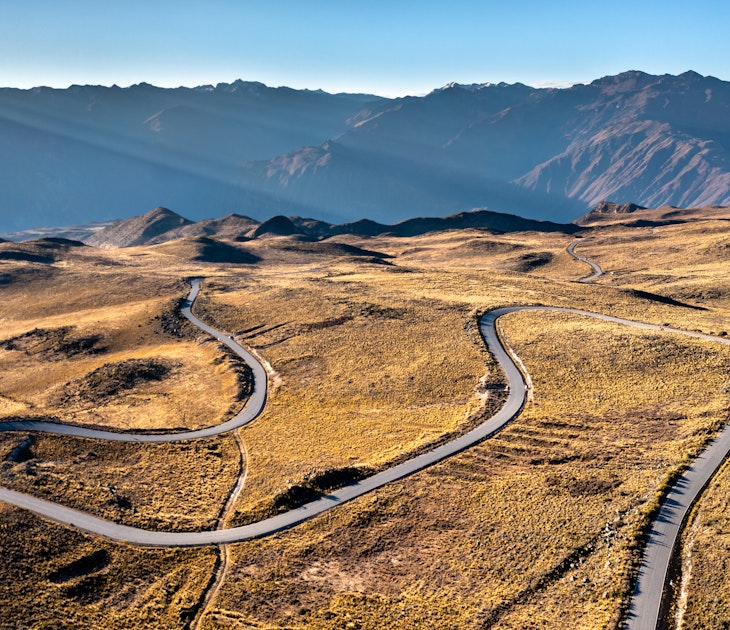
Nov 16, 2023 • 6 min read
From lesser-known pre-Incan archaeological sites to lush jungles and tranquil beaches, these are the best road trips in Peru.
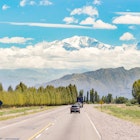
Dec 4, 2022 • 7 min read
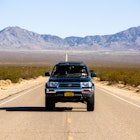
Jul 22, 2020 • 5 min read

Jul 15, 2019 • 5 min read
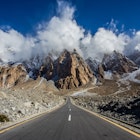
Jul 11, 2018 • 7 min read
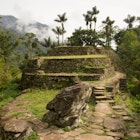
May 10, 2017 • 6 min read
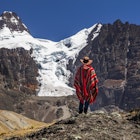
Dec 20, 2023 • 4 min read

Dec 15, 2023 • 7 min read

Dec 8, 2023 • 6 min read

Nov 18, 2023 • 7 min read

South American Bucket List: 10 Things To Do Once In Your Lifetime
- Trek to Machu Picchu in Peru for an unforgettable bucket list experience. Choose the Inca Trail for a popular route or the less crowded Salkantay Trek.
- Experience the incredible biodiversity of the Amazon Rainforest in Iquitos, Peru. Stay at an eco-lodge and go fishing for piranhas.
- Marvel at the cascading waterfalls of Iguazu Falls, located on the border between Argentina and Brazil. Visit during the best time of year for optimal views: March to May or August to October.
South America is a vast continent full of epic landscapes, world-renowned landmarks, delicious cuisines, and beautiful cultural traditions. To visit South America is to fall in love with it. From the Andean Mountains to the wilds of Patagonia, there is so much to see and do that it’s impossible to check all of it off in one trip.
But every traveler has a bucket list, and the ultimate South American bucket list should consist of some of these incredible experiences that can only be had in various countries across Latin America.
Related: What To Know Of Lake Titicaca: The Largest Lake In South America (& A Sacred Inca Site)
Trek To Machu Picchu In Peru
Machu Picchu is one of the New Seven Wonders of the Modern World and is located near Cusco, Peru.
The most popular route to trek to Machu Picchu takes 3–5 days and is called the Inca Trail. Hiking the Inca Trail to Machu Picchu is indeed a bucket list item, which can translate to crowds. A great alternative that is more affordable and less crowded is the Salkantay Trek.
- Where: Cusco, Peru
- Best Time Of Year To Go: March to May or September to December
Related: 10 Reasons To Add Paraguay To Your South American Bucket List
Go Fishing For Piranhas In The Amazon
Travelers heading to South America will want to experience life in the Amazon Rainforest. Staying at an eco-lodge is a unique opportunity to immerse oneself in the incredible biodiversity of this region.
Most of the best Amazon rainforest tours are anywhere from 2–5 nights of accommodation and include meals and activities like fishing for piranhas.
- Where: Iquitos, Peru
- Best Time Of Year To Go: July to December
Marvel At Iguazu Falls
Iguazu Falls are a collection of cascading waterfalls on the Iguazu River on the border between the Argentine province of Misiones and the Brazilian state called Paraná. Travelers can visit Iguazu Falls from both Argentina and Brazil .
- Where: Puerto Iguazu, Argentina/Brazil
- Best Time Of Year To Go: March to May or August to October
Related: From São Paulo To Iguazu: 10 Best Places To Visit In Brazil
Drink Coffee In Colombia
Colombia is a South American country that is well known for its coffee farms and production. Colombia is the 3rd largest exporter of coffee in the world, so it’s a bucket list experience to try the coffee at the source. Head to a Colombian coffee farm in Salento, Colombia, for this authentic experience.
- Where: Salento, Colombia
- Best Time Of Year To Go: December to February
See Christ The Redeemer Statue In Brazil
Christ The Redeemer is a statue in Rio de Janeiro, Brazil, that is also one of the New Seven Wonders of the Modern World. It’s the tallest art deco statue in the world, standing at 30 meters tall.
The statue of Jesus Christ stands atop Corcovado Mountain with its arms spread wide.
- Where: Rio de Janeiro
- Best Time Of Year To Go: April to June or September to November
Learn To Tango In Argentina
The Argentine Tango is a famous dance that originated in this Latin American nation. Visiting Buenos Aires, Argentina, is the perfect opportunity to check learning the tango off the travel bucket list.
Take a class at La Viruta Tango and be dancing by the end of the hour!
- Where: Buenos Aires
- Best Time Of Year To Go: April to June or September to December
Witness The Salt Flats In Bolivia
Travelers should add visiting the salt flats in Bolivia to their South American bucket list. This is one of the biggest attractions in Bolivia and is possible to visit from Uyuni and La Paz.
Called Salar de Uyuni, the salt pan is situated in Southwest Bolivia in the Andes. It’s the largest salt flat in the world and is a unique place to take photos and drive through. If travelers are fortunate, they might get to see some flamingos here!
- Where: Uyuni, Bolivia
- Best Time Of Year To Go: December to April
Hike The W Circuit In Chilean Patagonia
Patagonia is a wild region in Southern Argentina and Chile. In Chilean Patagonia, travelers can embark on a bucket list hike called the W Circuit (or the O Circuit, which is longer) in Torres del Paine National Park.
Hiking the W Circuit is among the best things to do in South America and typically takes 5 days to complete and offers stunning viewpoints, challenging uphill treks, and cozy camping experiences each night.
Travelers can fly into El Calafate (Argentina) or Puerto Natales (Chile) and then take a bus to the park to begin the trek.
- Where: Torres del Paine National Park, Chile
- Best Time Of Year To Go: September to November or March to May
Budget for the W Trek and bring cash when hiking in Torres del Paine National Park. Credit cards may work, but cash is more reliable.
Photograph Wildlife In The Galápagos
Wildlife photographers will fall in love with the Galápagos Islands off the coast of Ecuador. The main islands to visit are Isabela Island, Santa Cruz Island, and San Cristobal Island.
There are unique species to see here, including the Blue Footed Booby, Darwin’s Finches, and the Galápagos penguin. Fly into Guayaquil, the gateway to the Galápagos.
- Where: Galápagos Islands , Ecuador
- Best Time Of Year To Go: December to May
See Penguins At The End Of The World
Ushuaia, Argentina, is known as the city at the End of the World . It’s as far south as one can travel in Argentina and is the departure point for many cruises to Antarctica. But it’s not necessary to go all the way to the seventh continent to see wild penguins.
From November to February, travelers can book day tours from Ushuaia to Martillo Island to see wild Magellanic and Gentoo penguins.
- Where: Ushuaia, Argentina
- Best Time Of Year To Go: November to February

share this!
May 10, 2024
This article has been reviewed according to Science X's editorial process and policies . Editors have highlighted the following attributes while ensuring the content's credibility:
fact-checked
trusted source
Image: Bolivian salt lakes from orbit
by European Space Agency
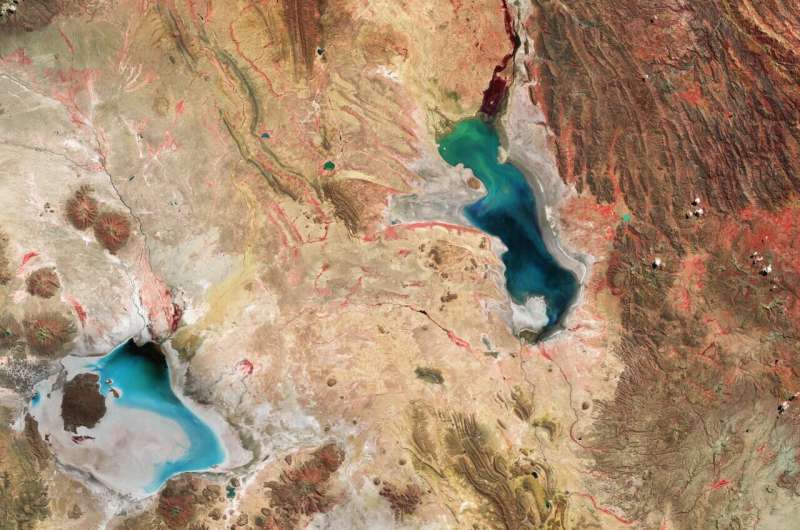
This Copernicus Sentinel-2 image features salt flats and lakes in southwest Bolivia, near the crest of the Andes Mountains.
Acquired in April 2024, this false-color image shows part of the Oruro Department towards the southern end of the Altiplano, a high plain that stretches almost 1,000 km from Peru to Bolivia.
The image was processed using the near-infrared channel which highlights vegetation in red. As seen in the image, this part of the Altiplano is mostly arid with saline soils.
Some 40,000 years ago, this area was part of a giant lake that dried up, leaving behind two salt flats : Uyuni (not pictured) and Coipasa, visible in gray and light blue in the bottom-left corner. It also left behind two lakes: Poopó, the larger water body near the center of the image, and Uru Uru, just above Poopó.
Lake Poopó is a saline lake and covers approximately 1,000 sq km. It is an endorheic basin, which means water is lost through evaporation.
However, the lake's shallow nature, with an average depth of just 3 m, has made its water level very sensitive to fluctuations. This is clear to see in the image, as part of the lakebed surrounding the water appears gray and dry. In the last decades, the lake has fully evaporated on some occasions, with catastrophic consequences for the region's flora and fauna and for the economy.
The lake's main tributary, the Desaguadero River, is visible north of the lake, dyeing its blue waters in different hues of green.
North of Poopó, the Uru Uru Lake's mostly red surface indicates the presence of vegetation populating its shallow waters .
With its frequent revisits over the same area and high-resolution cameras working in 13 spectral bands, Copernicus Sentinel-2 can be used to monitor pollution in lakes, measure changes in their water levels and detect differences in sparsely vegetated areas, as well as the mineral composition of soil.
Provided by European Space Agency
Explore further
Feedback to editors

Island birds more adaptable than previously thought
11 minutes ago

Scientists discover 'weird' statistics of electrons ejected by intense quantum light
17 minutes ago

New gel breaks down alcohol in the body
30 minutes ago

Discovery of biomarkers in space—conditions on Saturn's moon Enceladus simulated in the laboratory
49 minutes ago

Researchers uncover mechanism for short-distance vesicle movements

Two-year study shows some varieties of annual flowers have a place in pollinator-friendly gardens

The secret to mimicking natural faults? Plexiglass and Teflon

Indian Ocean sea-surface temperatures found to be accurate predictor of dengue outbreaks

Long-term study finds organic farming leads to adaptations in the genetic material in plants

Tracing the origins of organic matter in Martian sediments
Relevant physicsforums posts, solar activity and space weather update thread.
3 hours ago
Strange cosmic particles in my detector
9 hours ago
U.S. Solar Eclipses - Oct. 14, 2023 (Annular) & Apr. 08, 2024 (Total)
20 hours ago
Exploring the Sun: Amateur Solar Imaging Techniques
May 12, 2024
Dark matter and its effect on the orbit of stars
Our beautiful universe - photos and videos.
May 11, 2024
More from Astronomy and Astrophysics
Related Stories

Why Bolivia's second largest lake disappeared – and how to bring it back
Jan 12, 2021

Image: Copernicus Sentinel-2 captures eutrophic Lake Tai, China
Nov 15, 2019

Image: Lake-effect snowfall in the Great Lakes and New York
Mar 5, 2020

Image: Lake Balaton in western Hungary from orbit
Jul 26, 2019

Earth from space: Namibian landforms
May 3, 2024

SWOT satellite helps gauge the depth of Death Valley's temporary lake
Apr 16, 2024
Recommended for you

Student's comparative analysis of primitive asteroids provides context for further research, future NASA missions

Solar storm puts on brilliant light show across the globe, but no serious problems reported

Study reveals mechanisms of hydrodynamic escape in low-mass exoplanets

TESS discovers a rocky planet that glows with molten lava as it's squeezed by its neighbors
May 9, 2024
Let us know if there is a problem with our content
Use this form if you have come across a typo, inaccuracy or would like to send an edit request for the content on this page. For general inquiries, please use our contact form . For general feedback, use the public comments section below (please adhere to guidelines ).
Please select the most appropriate category to facilitate processing of your request
Thank you for taking time to provide your feedback to the editors.
Your feedback is important to us. However, we do not guarantee individual replies due to the high volume of messages.
E-mail the story
Your email address is used only to let the recipient know who sent the email. Neither your address nor the recipient's address will be used for any other purpose. The information you enter will appear in your e-mail message and is not retained by Phys.org in any form.
Newsletter sign up
Get weekly and/or daily updates delivered to your inbox. You can unsubscribe at any time and we'll never share your details to third parties.
More information Privacy policy
Donate and enjoy an ad-free experience
We keep our content available to everyone. Consider supporting Science X's mission by getting a premium account.
E-mail newsletter

IMAGES
VIDEO
COMMENTS
Learn why April and May are the best months to explore the Salt Flats in Bolivia, and what to expect from a multi-day tour. Find out how to take stunning photos, avoid cold weather, and stay safe on this amazing adventure.
Best Time Overall. The Uyuni Salt Flats offer distinct experiences depending on the season. Dry Season (Late April to October): The vast expanse of the salt flats becomes a surreal, cracked landscape, allowing travelers to see its vastness unobstructed. For those looking to capture the iconic hexagonal patterns in the salt crust, this is the best time.
Learn when to visit the Uyuni Salt Flats depending on your preferences and goals. Find out the advantages and disadvantages of the dry and wet seasons, how many days to spend, and what to do in this incredible region.
Since Uyuni is so close to the salt flats, tourists can easily book day trips. Flights from La Paz to Uyuni can be booked through Amaszonas and BoA (one hour, about $130 round-trip). Overnight ...
Learn when to visit the Uyuni Salt Flats in Bolivia based on your preferences for climate, mirror effect, water, and wildlife. Find out the pros and cons of each season, the weather and stargazing conditions, and the best deals for hotels and tours.
From towering mountains and semi-arid forests to serene salt flats, from the jungles of the Amazon to some of the highest cities in the world, Bolivia has a lot to offer - and the weather patterns to match. The climate here changes according to the region and the time of year, and there is a wet season and dry season to consider before booking any tickets.
Bolivia's Uyuni salt flats are one of the most photogenic places in the world. With over 10,582 square kilometres (4,086 square miles) of snowy white hexagonal patterns and clear blue skies, it doesn't get much more gorgeous than this. The first time I visited the salt flats in 2009, I had no idea of what to expect.
Learn the pros and cons of visiting the Salar de Uyuni salt flats in the dry or wet seasons, and how to plan your trip based on weather, photography, and wildlife. Find out the best time to see the stunning mirror effects of water on the salt surface, the flamingo spotting, and the wildlife.
There is no bad time to visit the Bolivia Salt Flats. It really depends on the experience you are looking for. Rainy season: If you want to see reflections of the salt lake, the rainy season is a good time to visit. The salt flats flood and transform into a massive mirror that reflects the sky and creates an other-worldly experience.
The Bolivia Salt Flats are probably best known for their incredible reflective properties during the wet season. ... While a visit to the Salar de Uyuni is incredible at any time of the visit, visiting during the rainy season and seeing the Salar de Uyuni reflection, called the World's Largest Mirror, is truly unforgettable. ...
David Corvacho Puente. The best time to visit the Uyuni Salt Flats in Bolivia is between December and April when the wet season creates a vast mirror effect. The dry season, between May and November, is best for seeing the stunning crystallised salt patterns. Arguably Bolivia's most breath-taking experience, the over 10,000 square kilometres ...
The Bolivia Salt Flats, also known as Salar de Uyuni, is the world's largest salt flat and one of the most popular tourist attractions in Bolivia. Located in the southwest of the country, the flats cover an area of over 4,000 square miles, making it larger than some countries.
At Salt Flats Bolivia, the ideal time to visit depends on various factors, including weather conditions and crowd levels. But generally, the best months to visit are from May to November, during the dry season. During this period, the weather is dry, sunny, and mild, making it perfect for exploring the salt flats and capturing stunning photos.
Home Travel Americas South America Bolivia Salar de Uyuni: The Ultimate Guide to Bolivia's Majestic Salt Flats. Nestled high in the Bolivian Andes, Salar de Uyuni stands as a testament to nature's awe-inspiring wonders. Spanning over 10,000 square kilometers, it's the world's largest salt flat, appearing as a vast white expanse that stretches to the horizon and merges with the sky.
The largest salt flats on earth, the Salar de Uyuni spans over 10.5 kilometres (4,000+miles). In the wet season, a layer of rainwater creates a mirror-like surface as smooth as glass. In the dry season, its geometric salt patterns imprint the earth, seemingly stretching beyond the horizon. Put simply, this place looks like a whole other planet.
Best Time to Visit the Salt Flats Bolivia. The Salar de Uyuni has two seasons: rainy season and dry season. Each offers a unique experience. Rainy Season (December to April) During the rainy season a thin layer of water covers the salt flats and transforms them into a magnificent reflection of the sky. Be careful in December and January, as too ...
Bolivia Salt Flats Info: A complete guide to Salar de Uyuni including the best time to visit, the legends associated with the area and much more! Info Things to Do Tours How to Get There What to Pack Photography. Uyuni Info. The Bolivian salt flats are the largest in the world and are also one of South America's main tourist attractions. This ...
Best time to visit Bolivia Salt Flats. While you can certainly visit the Salt Flats multiple times per year, let me break down what each season will look like. If you visit during the wet season (December to February), you will be able to see the mirror effect of the place with the water. Visiting from March to May will give you the dry as well ...
2020 updated information to help you choose the best time to visit the Uyuni Salt Flats. Exploring the Uyuni salt flats. The Uyuni salt flats in Bolivia are the biggest salt flats in the world and one of the main attractions in South America. You can get there by taking a tour from La Paz or San Pedro de Atacama if you are in Chile. You can do one day tours to even spend the night in this ...
Hanging out at the Salt Flats. Well, if the photos alone aren't enough to get you reaching for your passport, listen to this. At 4,086 square miles, Salar de Uyuni is the largest salt flat on the planet and as you can see, it's fairly spectacular. Situated in southwestern Bolivia not far from the crest of the Andes, the mountains that surround the salt flat provide truly staggering beauty.
If you plan to admire the beauty of this mesmerizing area but stay away from the crowds, the best time to visit Uyuni Salt Flats in Bolivia is during March, April and May. In addition to more solitude, this period also gives you better deals, as well as mild weather. Also, in late April expect to see the dry salt desert, as well as the amazing ...
Weather in Bolivia's Salar de Uyuni or, Salt Flats, can be divided into two seasons; dry season and rainy season. What is the Best Time to Go to the Bolivia Salt Flats? The perfect time to visit the Bolivia Salt Flats is undoubtedly at the end of April when you can see both the dry salt desert and the famous mirror effect.
The best time to visit Bolivia is between May and October. In the winter months (May-August), it is almost always sunny in the highlands, with a clear blue sky, during the day. This is the best time of the year to take pictures and the weather conditions are pleasant for hiking. The temperatures are between 15 and 18 ° C, during the day.
Though the highways are mostly well-maintained, driving in Bolivia can be stressful due to unpredictable drivers, landslides depending on the season and last-minute roadblocks that derail your schedule. But the stunning landscapes - including Lake Titicaca, the world-famous Uyuni Salt Flats and Tarija wine country - make any road trip worth it.
Visit during the best time of year for optimal views: March to May or August to October. ... Travelers should add visiting the salt flats in Bolivia to their South American bucket list. This is ...
This Copernicus Sentinel-2 image features salt flats and lakes in southwest Bolivia, near the crest of the Andes Mountains. Acquired in April 2024, this false-color image shows part of the Oruro ...
What's The Best Way To See The Northern Lights? NOAA says optimal viewing time for the aurora is generally within an hour or two of midnight—so between 10 p.m. and 2 a.m. local time. The ...